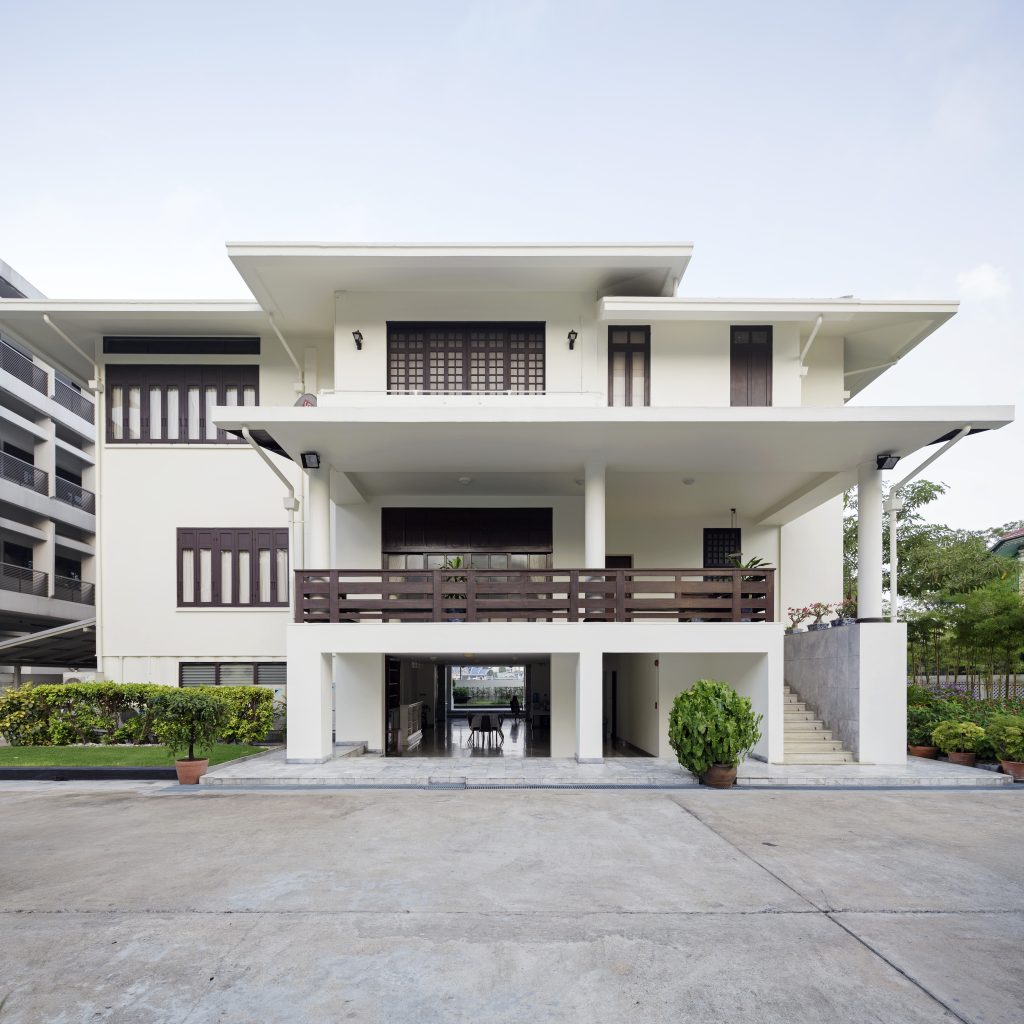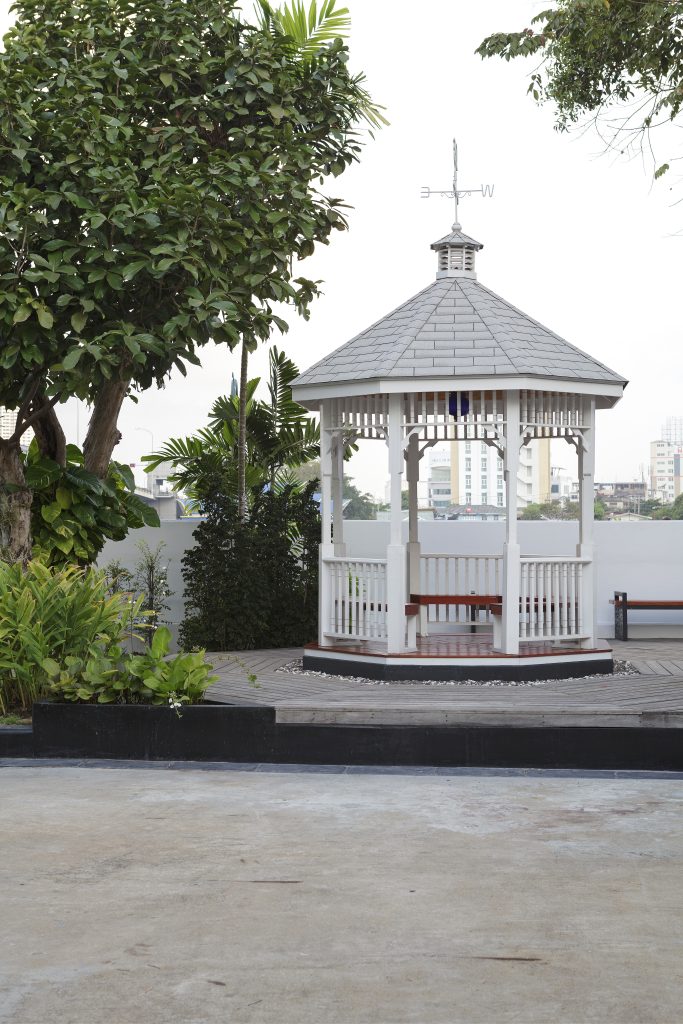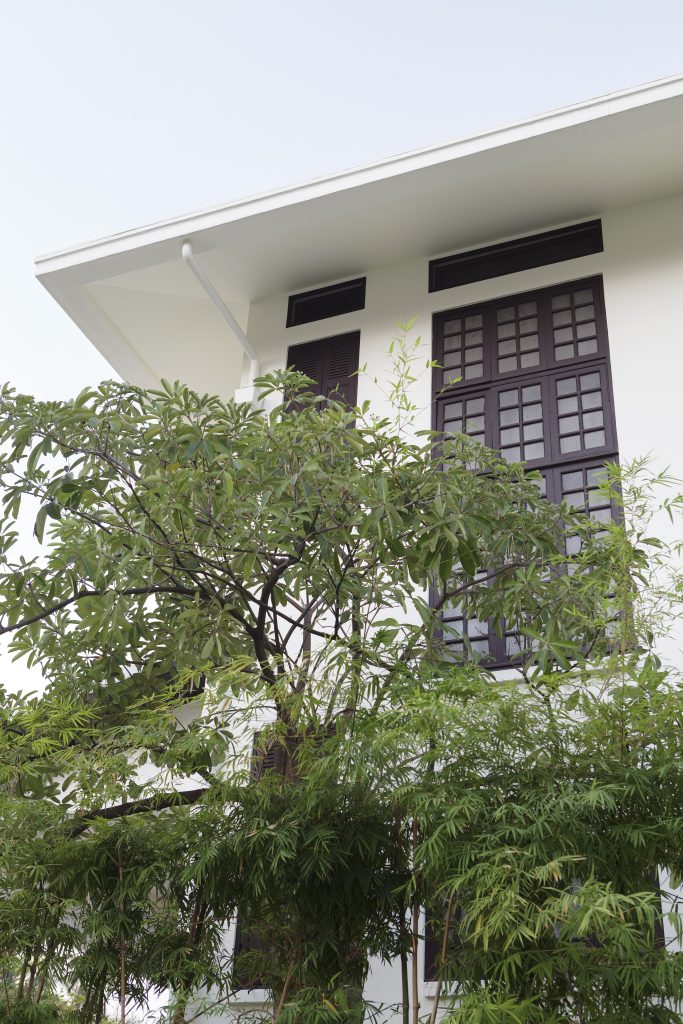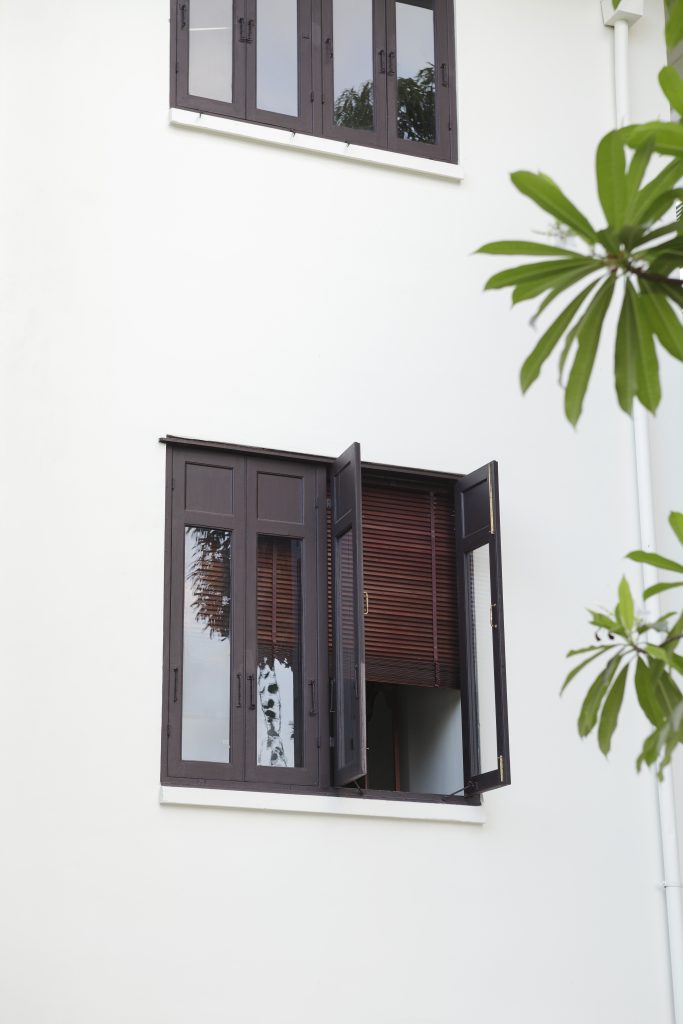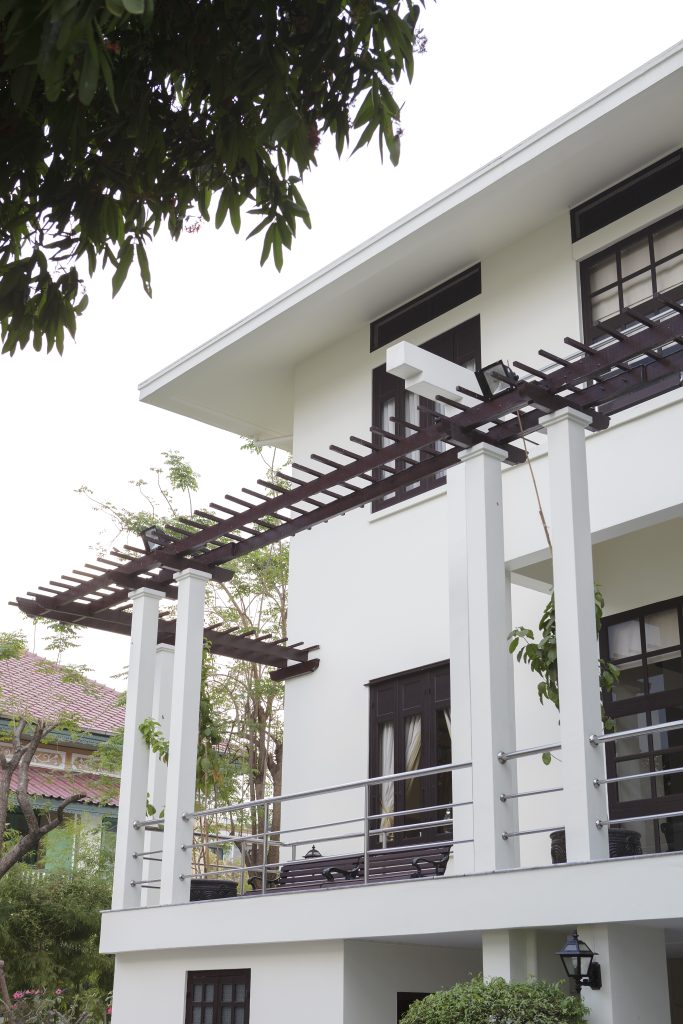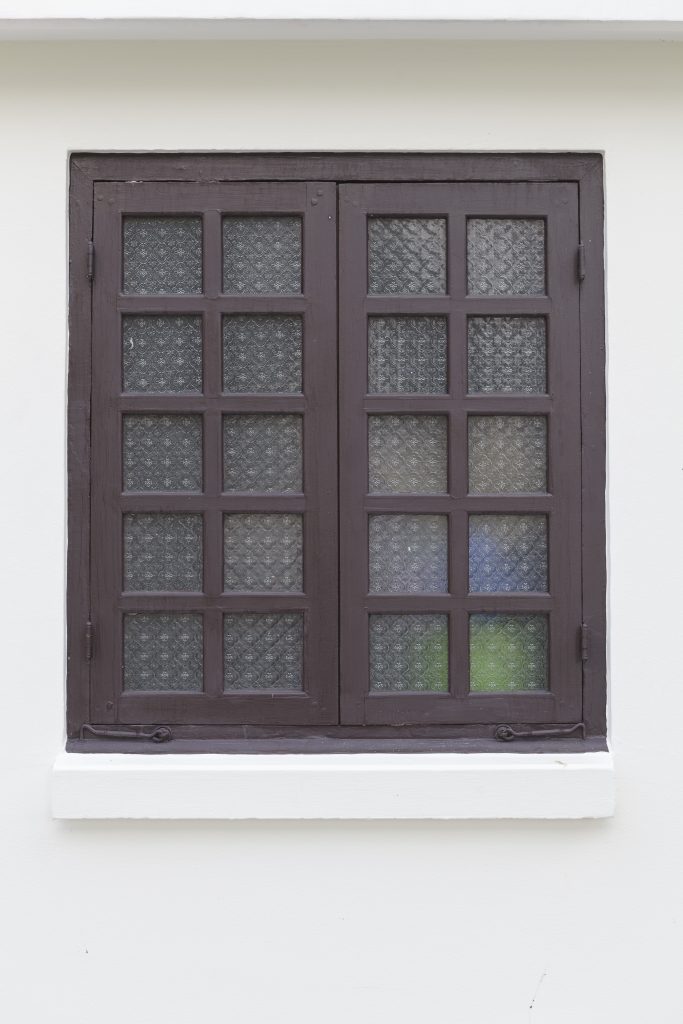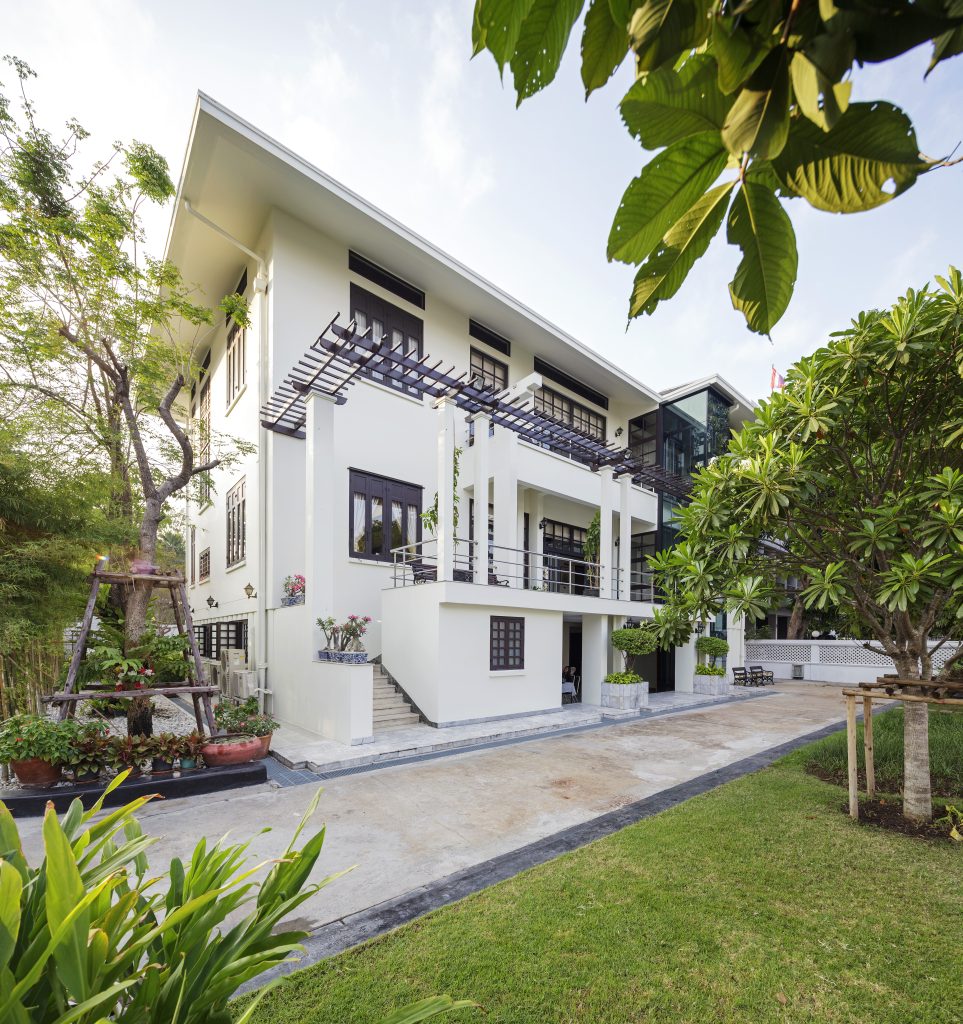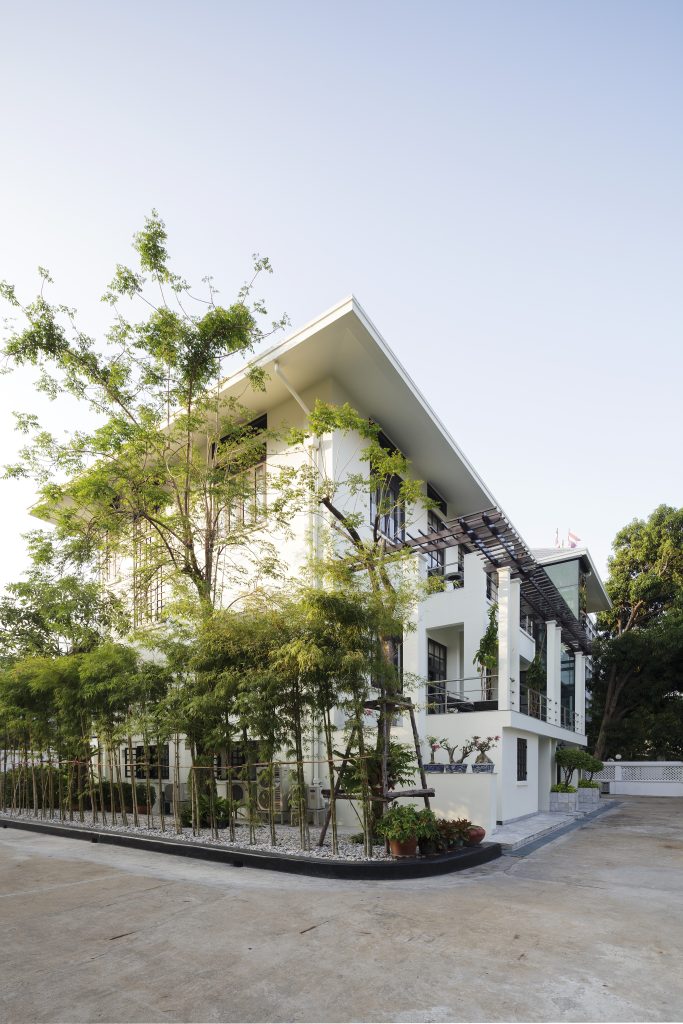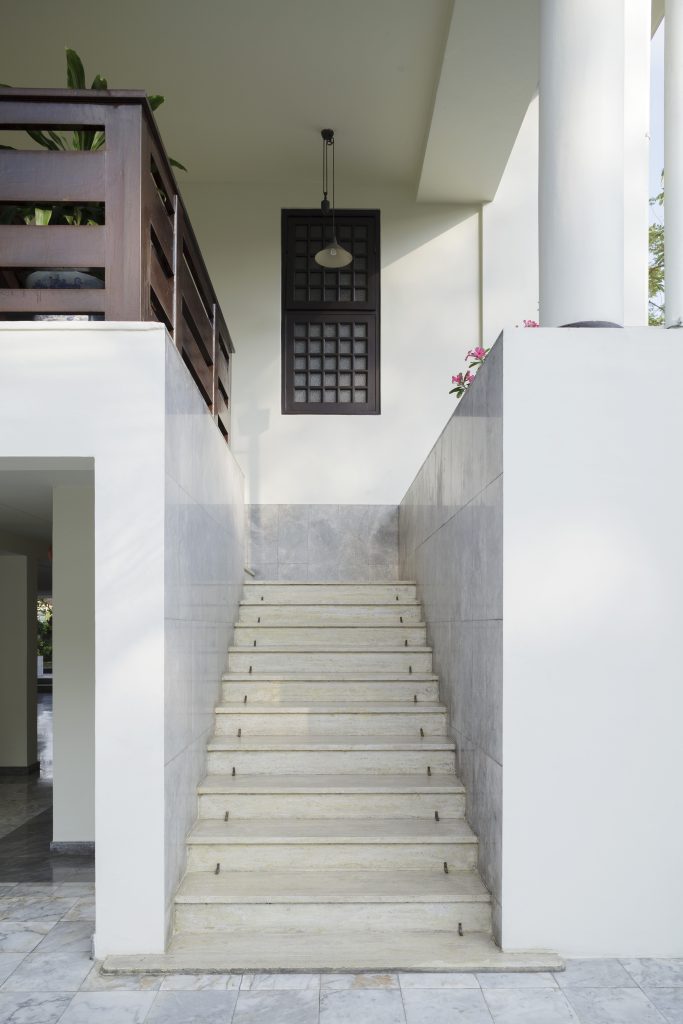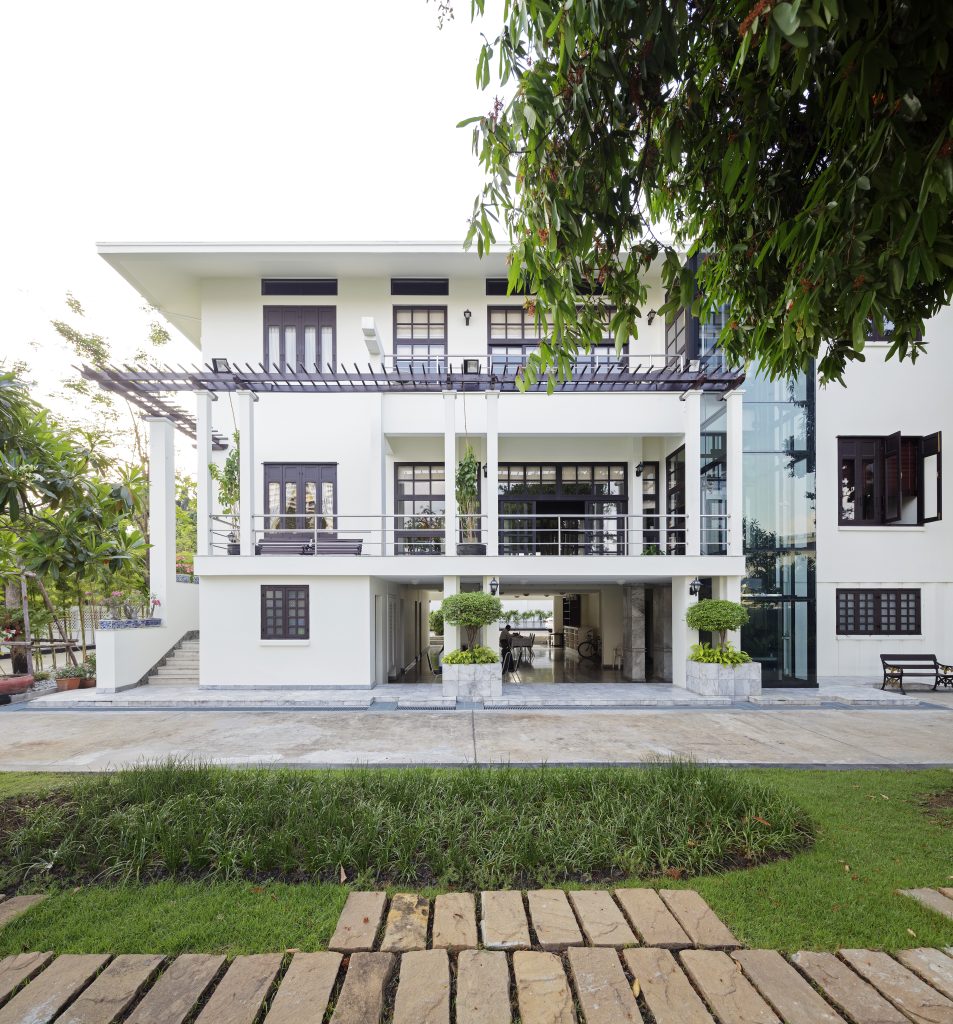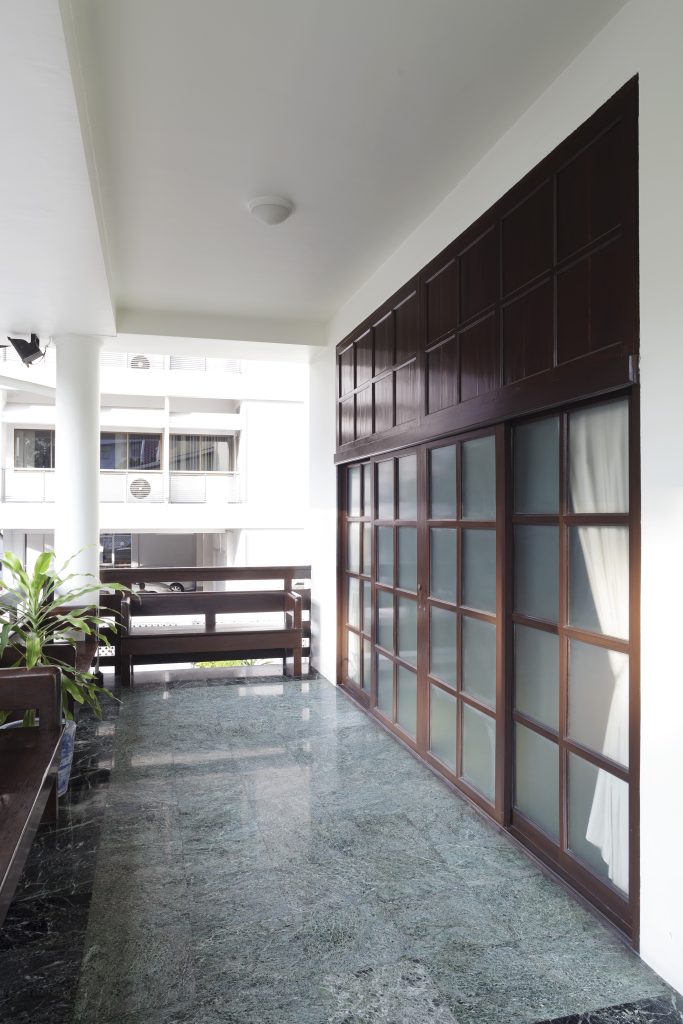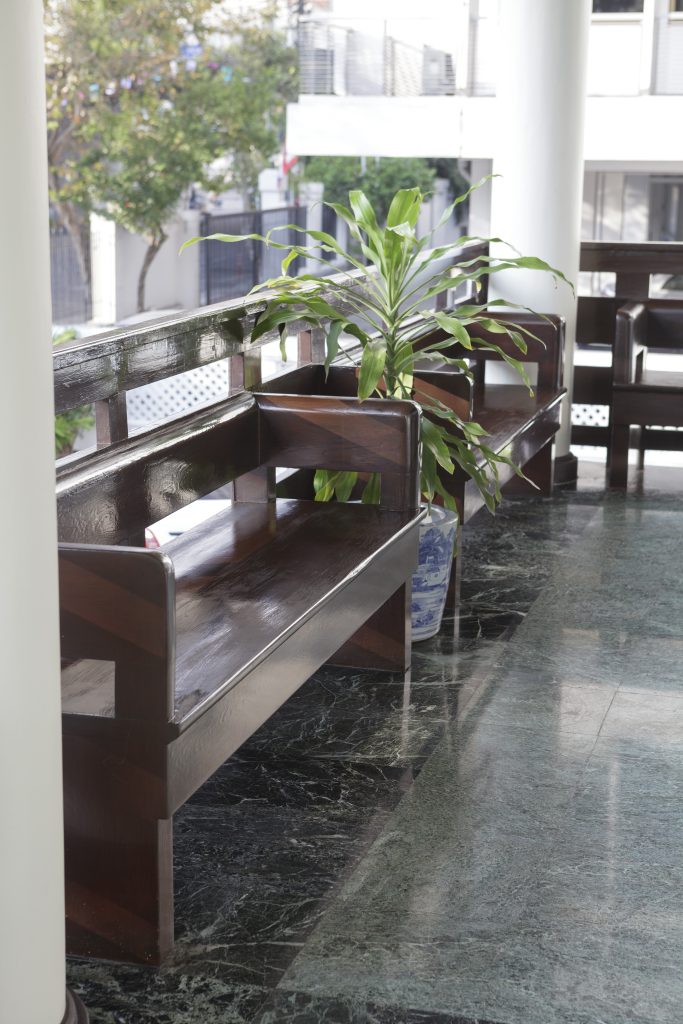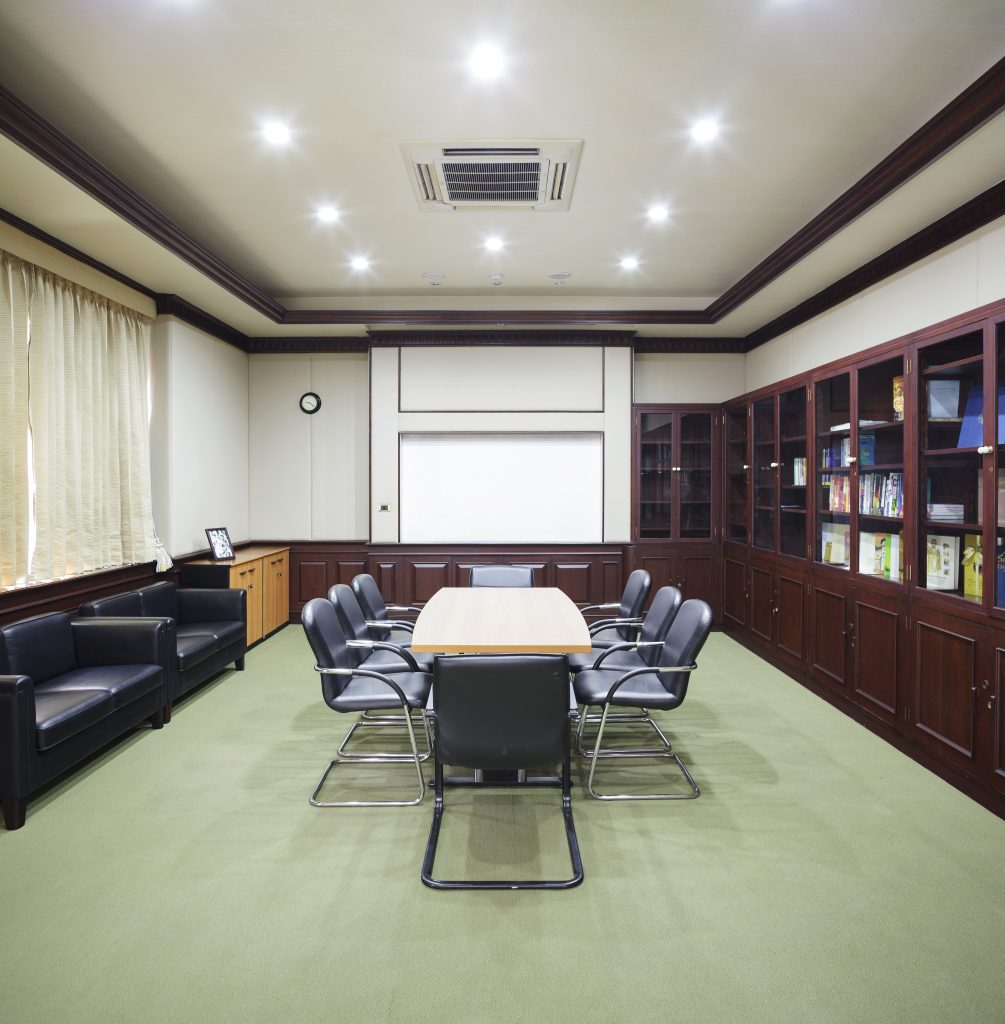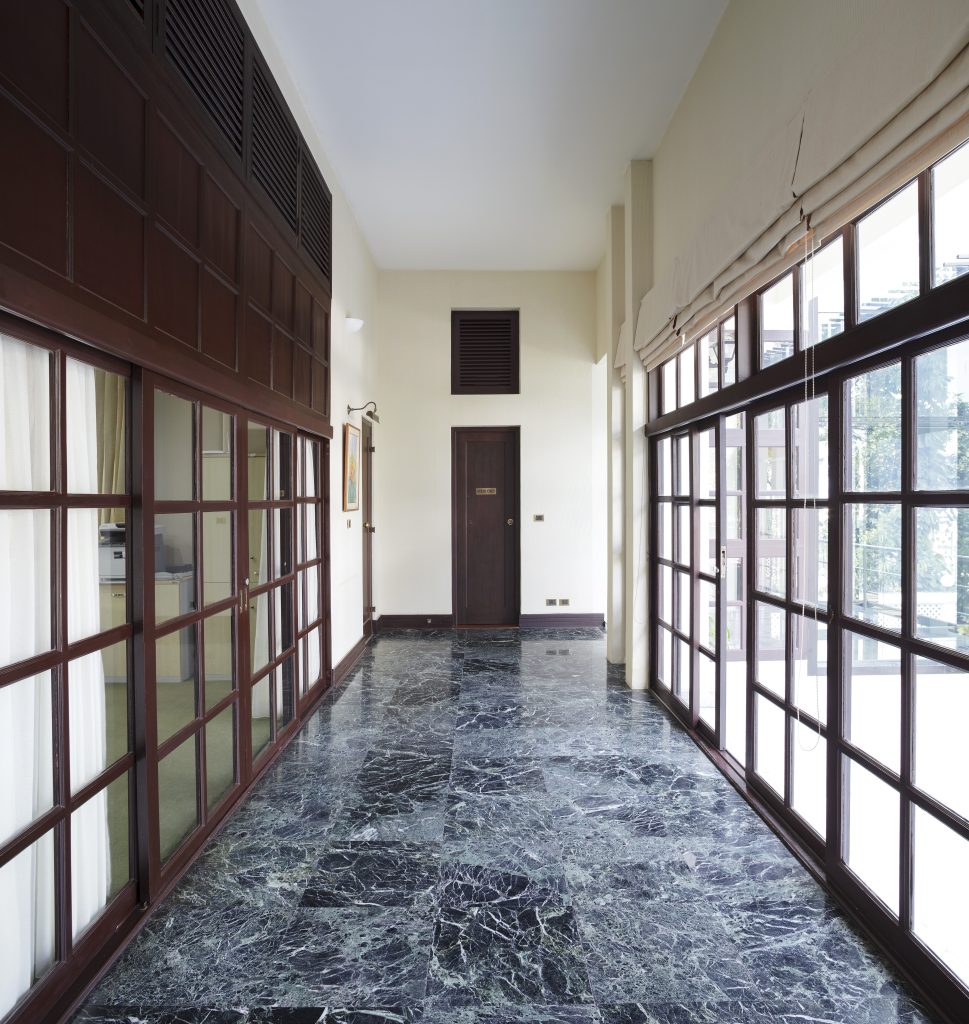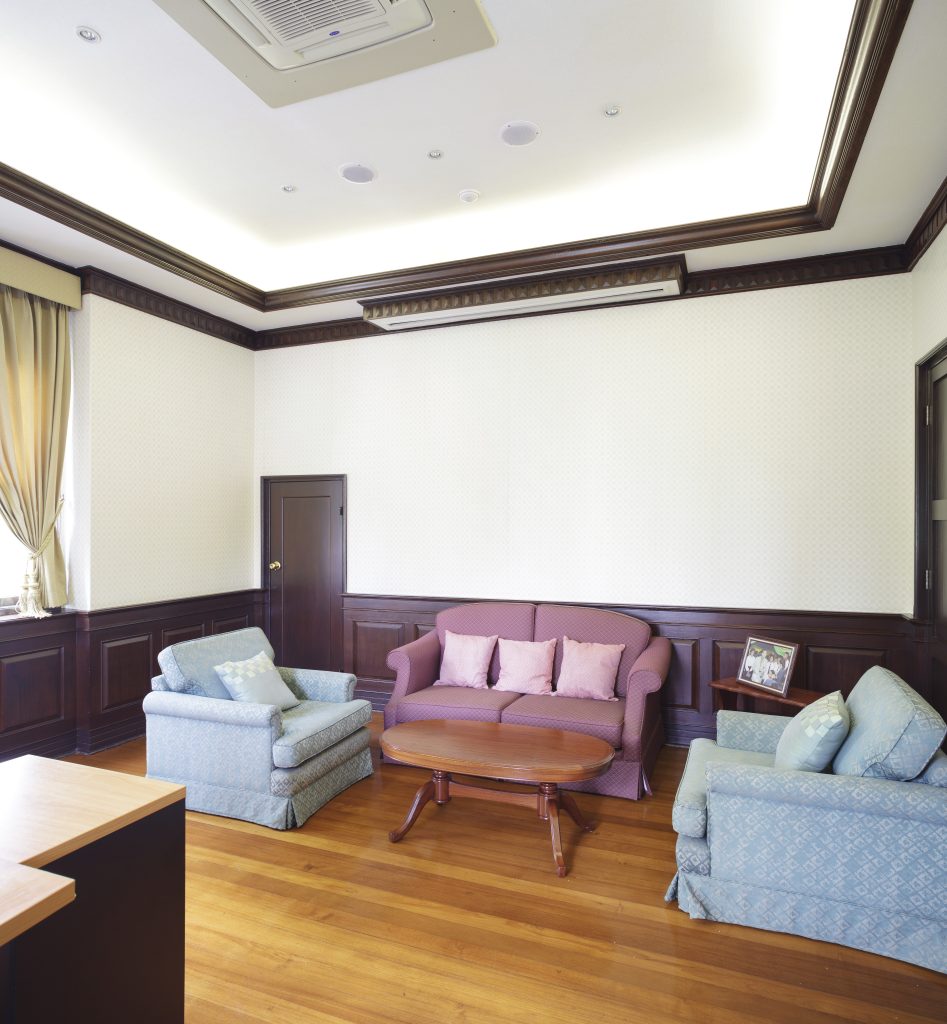อาคารพิพิธภัณฑ์พื้นถิ่นล้านนา
อ่านเพิ่มเติม
อาคารพิพิธภัณฑ์พื้นถิ่นล้านนา
- ที่ตั้ง ถนนพระปกเกล้า ตำบลศรีภูมิ อำเภอเมือง จังหวัดเชียงใหม่
- สถาปนิก/ผู้ออกแบบ พระสาโรชรัตนนิมมานก์
- ผู้ครอบครอง กรมธนารักษ์ บริหารจัดการอาคารพิพิธภัณฑ์พื้นถิ่นล้านนาโดย กลุ่มงานส่งเสริมการพัฒนาเมือง กองวิชาการและแผนงาน เทศบาลนครเชียงใหม่
- ปีที่สร้าง พ.ศ. 2478
ประวัติ
อาคารพิพิธภัณฑ์พื้นถิ่นล้านนาถูกสร้างขึ้นเพื่อเป็นที่ทำการของศาลจังหวัดเชียงใหม่ ต่อมารัฐบาลสยามมีนโยบายให้การพิจารณาคดีเล็กๆ เสร็จสิ้นไปด้วยความรวดเร็วและยุติธรรม จึงได้จัดตั้งศาลแขวงขึ้นในทุกจังหวัด สำหรับศาลแขวงเชียงใหม่เริ่มเปิดทำการตั้งแต่วันที่ 1 มิถุนายน พ.ศ. 2500 มีเขตอำนาจครอบคลุมท้องที่อำเภอเมืองเชียงใหม่ และใช้อาคารหลังนี้ร่วมกับศาลจังหวัดเชียงใหม่ ต่อมาศาลจังหวัดเชียงใหม่ได้ย้ายที่ทำการเมื่อวันที่ 30 มกราคม พ.ศ. 2527 จึงเหลือแต่ศาลแขวงเชียงใหม่ที่ยังคงใช้อาคารอยู่ จนเมื่อวันที่ 24 กันยายน พ.ศ. 2547 ศาลแขวงเชียงใหม่ได้ย้ายไปตั้งอยู่ ณ สถานที่ใหม่ ประกอบกับเทศบาลนครเชียงใหม่มีนโยบายพัฒนาพื้นที่กลางเมืองเก่าเชียงใหม่ในปี พ.ศ. 2548 จึงได้ขอใช้ประโยชน์อาคารศาลแขวงเดิมจากสำนักงานศาลยุติธรรมและกรมธนารักษ์เพื่อปรับปรุงเป็นพิพิธภัณฑ์พื้นถิ่นล้านนาจนสามารถเปิดดำเนินการได้ตั้งแต่วันที่ 18 ธันวาคม พ.ศ. 2555 เป็นต้นมา หลังจากนั้น เทศบาลนครเชียงใหม่ได้กราบบังคมทูลเชิญสมเด็จพระเทพรัตนราชสุดาสยามบรมราชกุมารีเสด็จพระราชดำเนินทรงเปิดพิพิธภัณฑ์พื้นถิ่นล้านนาอย่างเป็นทางการ เมื่อวันที่ 13 สิงหาคม พ.ศ. 2556
อาคารพิพิธภัณฑ์พื้นถิ่นล้านนาเป็นอาคารสูงสองชั้น โครงสร้างคอนกรีตเสริมเหล็กผนังก่ออิฐถือปูน ลักษณะผังอาคารเป็นรูปสี่เหลี่ยมผืนผ้าแบบสมมาตร กว้าง 19 เมตร ยาว 31 เมตร มีมุขหน้ายื่นกว้าง 5 เมตร ยาว 23 เมตร มุขหน้าเป็นโถงทางเข้ามีบันไดขนาบ 2 ข้าง กลางอาคารเป็นห้องนิทรรศการใหญ่แบ่งเป็น 2 ห้อง ขนาด 7×11 เมตร ล้อมรอบด้วยทางเดินและห้องต่างๆ ผังชั้นบนมีลักษณะเช่นเดียวกับชั้นล่าง ลักษณะทางสถาปัตยกรรมของอาคารได้รับอิทธิพลของนีโอคลาสสิก (Neoclassic) จุดเด่นของอาคาร คือ มุขด้านหน้ามีการใช้ไวยากรณ์แบบประตูชัยของโรมันอย่างชัดเจน กล่าวคือ อยู่ในโครงรูปสี่เหลี่ยม แบ่งเป็น 3 ส่วน ส่วนกลางกว้างเป็น 4 ส่วนของริม 2 ข้าง ออกแบบเน้นเป็นประตูกลางโครงสร้างคานโค้งใหญ่ประดับเสาอิง 2 ข้าง ข้างละ 2 ต้น ส่วนริมเป็นผนังค่อนข้างทึบคล้ายหอคอย ส่วนบนอาคารเป็นพนักขอบหลังคาแบบผนังทึบยาวตลอดแนวปิดหลังคาทรงปั้นหยาที่อยู่ด้านหลัง ทำให้ดูเหมือนอาคารแบบหลังคาตัด ภายในอาคารตกแต่งกรุผนังสวยงามด้วยไม้สักทอง พื้นชั้นบนปูด้วยไม้สักทอง
อาคารพิพิธภัณฑ์พื้นถิ่นล้านนาได้รับการปรับปรุงฟื้นฟูด้วยความพิถีพิถัน เนื่องจากโครงสร้างเดิมมีข้อจำกัดในแง่ของการใช้พื้นที่ใช้สอยสำหรับส่วนจัดแสดงพิพิธภัณฑ์ ทำให้ต้องมีการปรับปรุงแบบสถาปัตยกรรมภายในเพื่อให้เกิดประโยชน์ใช้สอยโดยปรับเปลี่ยนโครงสร้างเดิมให้น้อยที่สุด ซึ่งก่อนหน้านี้ เทศบาลนครเชียงใหม่ได้มีความพยายามดำเนินการปรับปรุงซ่อมแซมในส่วนต่างๆ ทั้งภายในและภายนอกอาคาร อาทิ การปรับเปลี่ยนใช้กระเบื้องว่าวแทนการใช้กระเบื้องหลังคาเดิมเพื่อให้เกิดความสวยงามยิ่งขึ้น ปรับปรุงภายในอาคารโดยพยายามใช้โครงสร้างเดิมทั้งหมดแทนการรื้อถอนของเดิม รวมถึงการก่อสร้างตัวอาคารประกอบ เช่น อาคารห้องอาหาร โกดังเก็บของที่มีความกลมกลืนกับอาคารหลักโดยได้รับคำแนะนำและข้อคิดเห็นจากนักวิชาการและผู้เชี่ยวชาญต่อมาอาคารพิพิธภัณฑ์พื้นถิ่นล้านนาได้รับการปรับเปลี่ยนตามแนวความคิดที่ต้องการพัฒนาให้พื้นที่กลางเวียงเชียงใหม่ กลายเป็นแหล่งท่องเที่ยวเพื่อการเรียนรู้โดยการรวบรวมเรื่องราวและเนื้อหาความเป็นอัตลักษณ์ของชาวล้านนาในแขนงต่างๆ ที่เป็นประวัติศาสตร์ศิลป์และภูมิปัญญางานศิลป์มาไว้ที่อาคารหลังนี้ เพื่อให้กลายเป็นสถานที่ท่องเที่ยวและส่งเสริมความรู้ เชิดชูคุณค่าทางศิลปวัฒนธรรมประเพณีและวิถีชีวิตของชาวล้านนาให้เป็นที่รู้จักของผู้คน ช่วยกระตุ้นให้คนในท้องถิ่นมีความภาคภูมิใจในบ้านเกิดเมืองนอน เกิดจิตสำนึกในการดูแลรักษาบ้านเมืองในระยะยาว โดยมีความเชื่อมโยงผสมผสานเข้ากับหอศิลปวัฒนธรรมเมืองเชียงใหม่และหอประวัติศาสตร์เมืองเชียงใหม่
Lanna Folklife Museum Building
- Location Pra Phrokklao Road, Tambon Sripoom, Chiang Mai
- Architect/ Designer Phra Saroj Rattana Nimmarn
- Owner Department of Treasury Lanna Folklife Museum building is managed by the City Development and Promotion Group, Division of Technical Services and Planning, Chiang Mai Municipality
- Year Built 1935
History
Lanna Folklife Museum building was originally built to serve as Chiangmai Provincial Courthouse until the government issued a policy to have all small claim trials finish quickly and fairly and therefore established District Courts in every single province. Chiangmai District Courthouse opened on June 1, 1957 with the jurisdiction throughout the province of Chiangmai. The courthouse at the time was being shared with Chiangmai Provincial Court until it was relocated on January 30, 1984. Chiangmai District Court occupied the building until September 24, 2004; Chiangmai District Court was also moved to a new location. Chiangmai Municipalty imposed a policy to develop the old central area of Chiangmai in 2005 and proposed to the Court of Justice and the Department of Treasury the plan to restore the building into Lanna Folklife Museum. The permission was granted and the museum opened on December 18, 2012. Chiangmai Municipality invited Her Royal Highness Princess Sirindhorn Deparatanasuda to attend the official opening ceremony of Lanna Folklife Museum on August 13, 2013.
The building of Lanna Folklife Museum has two storeys with concrete reinforced brick masonry structure. The rectangular shaped building is 19 meters wide and 31 meters long with projecting entrance portico of 5 meter wide and 23 meter long and staircases on both sides. The center part of the building is divided into two exhibition 7 x 11 meter rooms surrounded by walkways and rooms. The upstairs floor plan is similar to the downstairs. The building style of architecture was of Neo-Classic influence. The distinctive feature of the building is the use of the Roman Triumphal arches that is rectangular shape structure is divided into 3 parts; the center part is four times wider than the two sides, the center entrance feature a large arch with two supporting columns on each side and tower-like solid wall structure on each end. The top of the building is a row of opaque wall stretching across the top rim covering the hip roof on the back giving the building a cut roof style. The interior walls are beautifully decorated with teak wood panels as well as teak wood flooring on the second floor.
Lanna Folklife Museum building was meticulously restored as the usable area of the old structure was too limited to house the museum exhibits resulting in a slight modification of the building’s interior architecture to enhance space functionality. Previously, Chiangmai Municipality has been trying to repair parts of the building both inside and out such as the replacing of the old roofing with kite shaped tile for a beautiful finish, restoring of the interior space without removing the existing structure as well as the construction of adjacent buildings such as a cafeteria, a storage building that was built in harmony with the main building with guidance and feedback from scholars and experts. Lanna Folklife Museum building was later modified according to the central Chiangmai development project and was turned into an educational tourist spot that houses collections of Lanna folk life stories and information on each branches of Lanna’s identity including their history of arts and their artistic wisdom. The Museum was to become one of the major tourist attractions that promote academic learning and honor Lanna’s cultural value and lifestyle to encourage local prides and long-term sense of protection of their community. The museum also connects to Chiangmai City Arts and Cultural Center and Chiangmai History Archive.
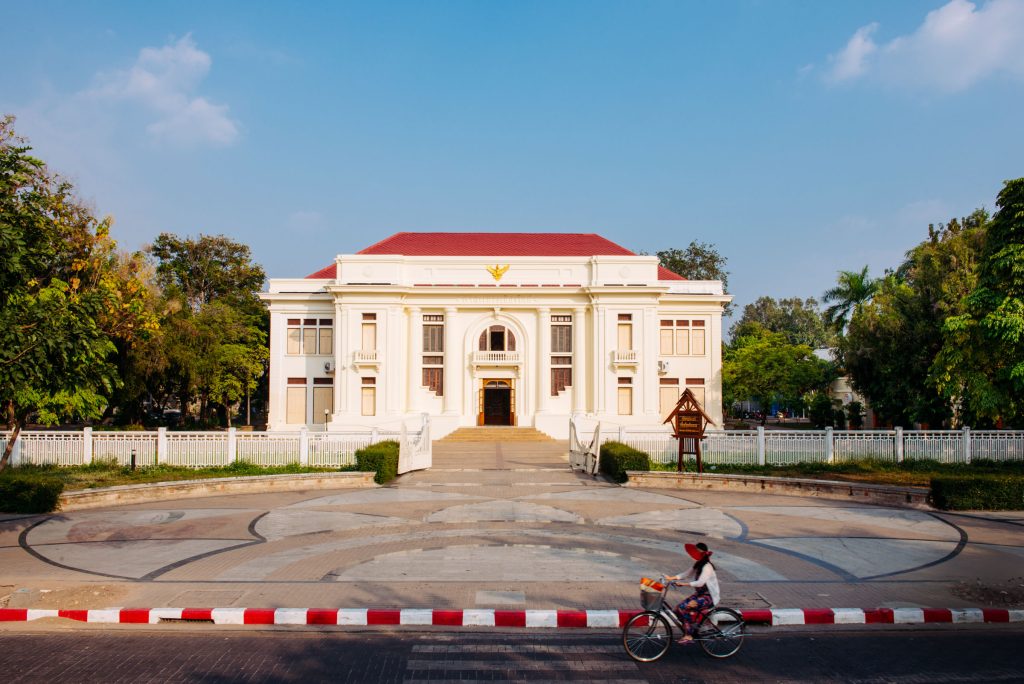
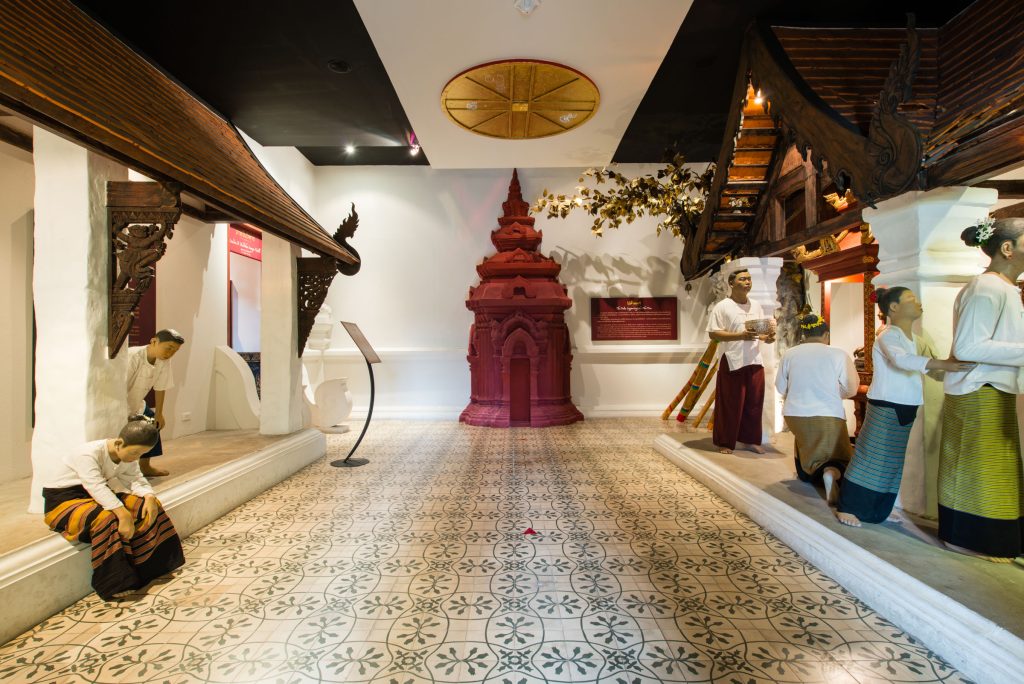
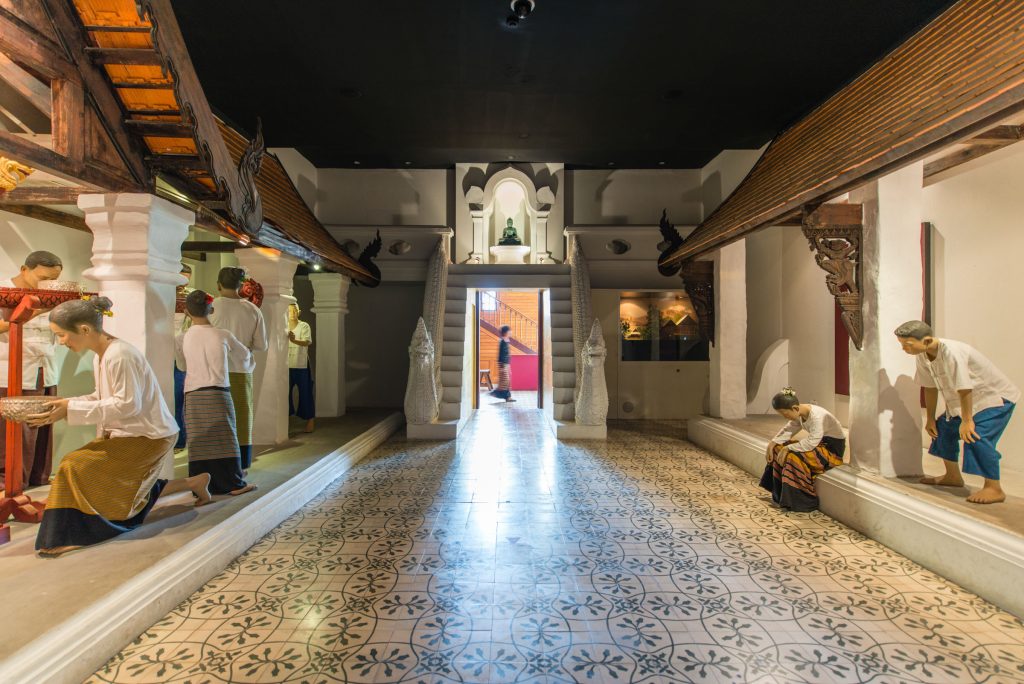
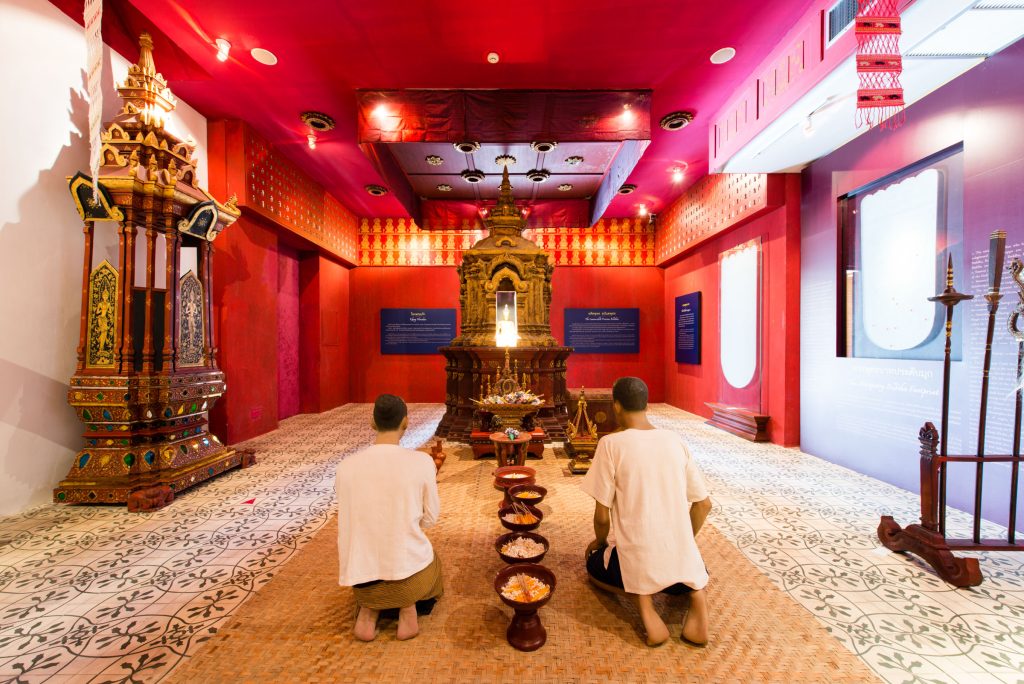
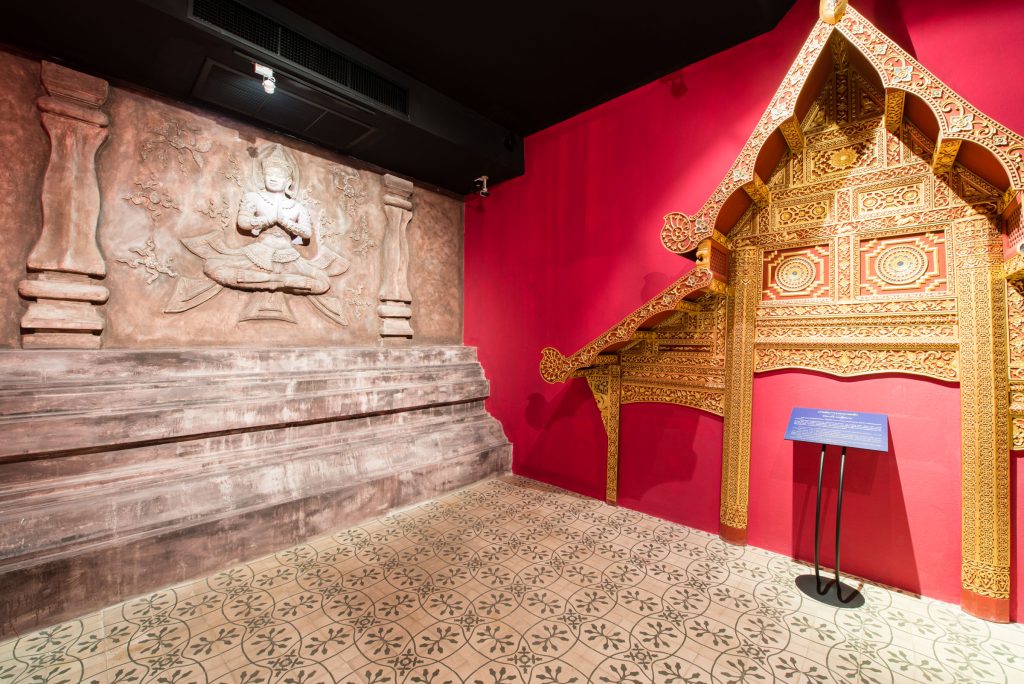
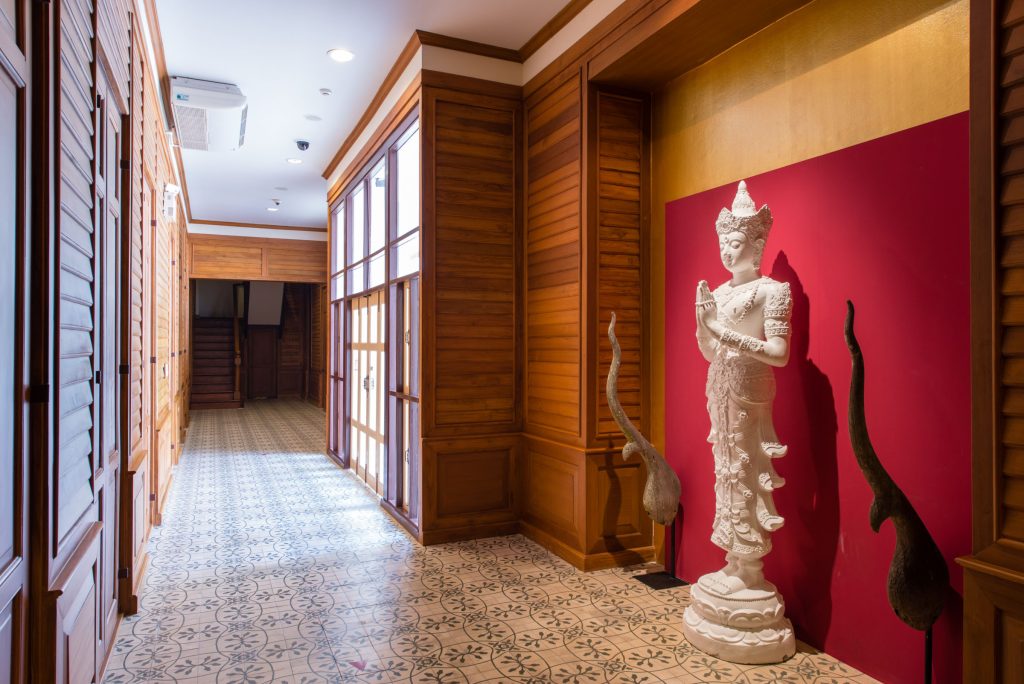
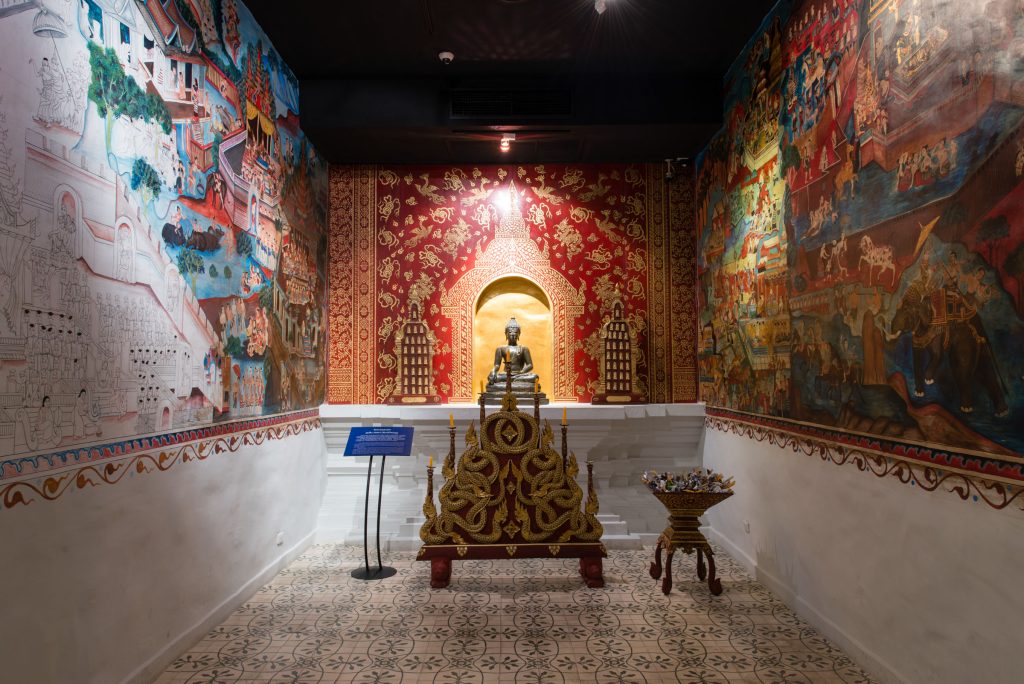
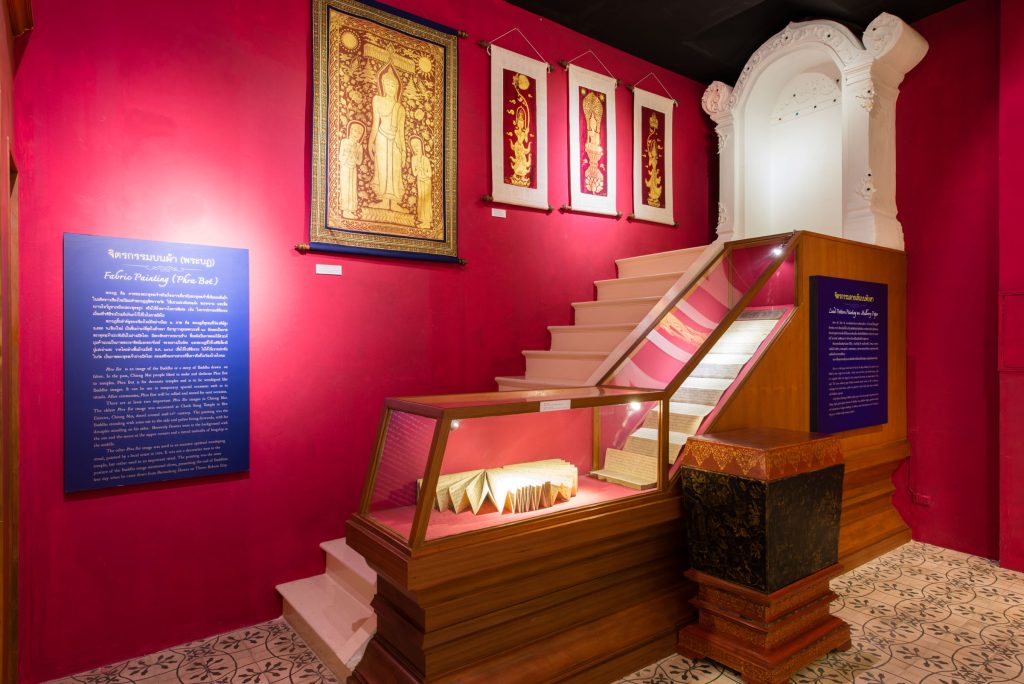
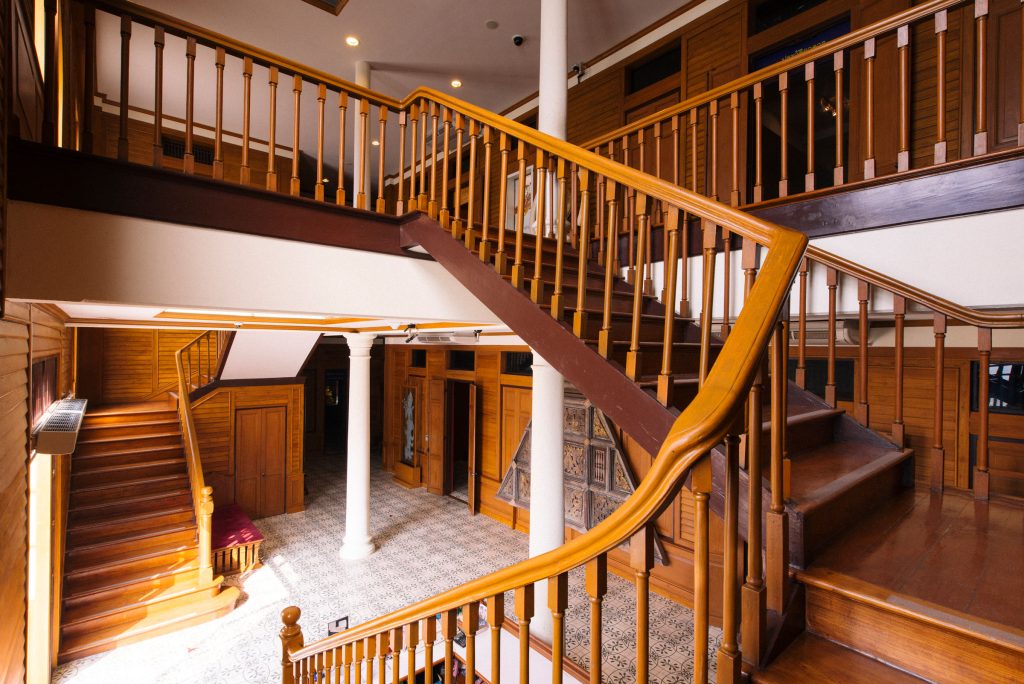
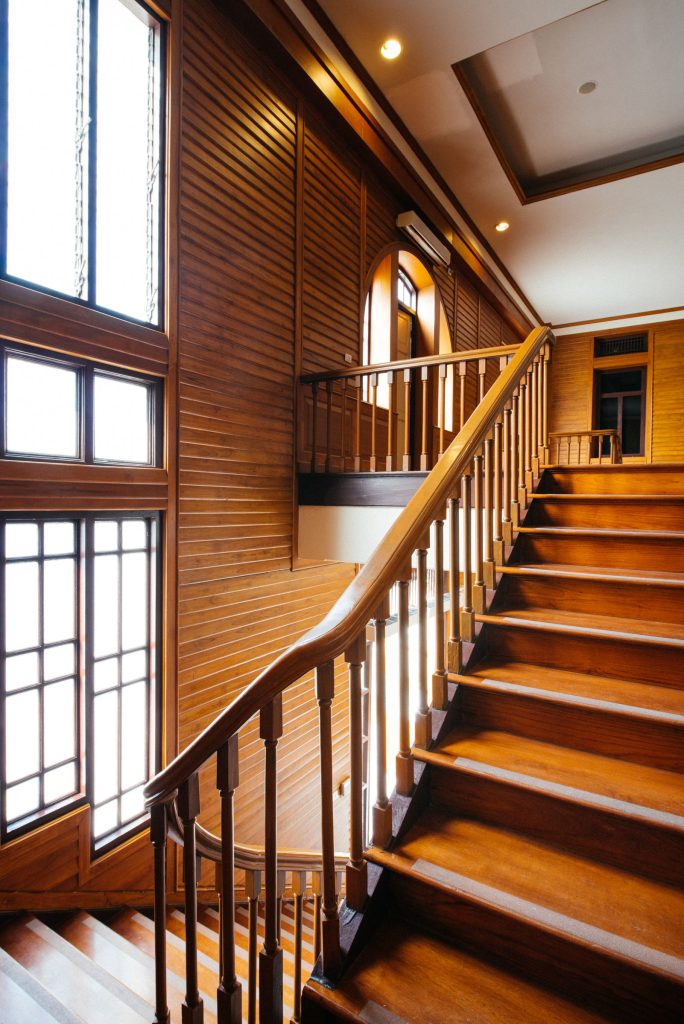
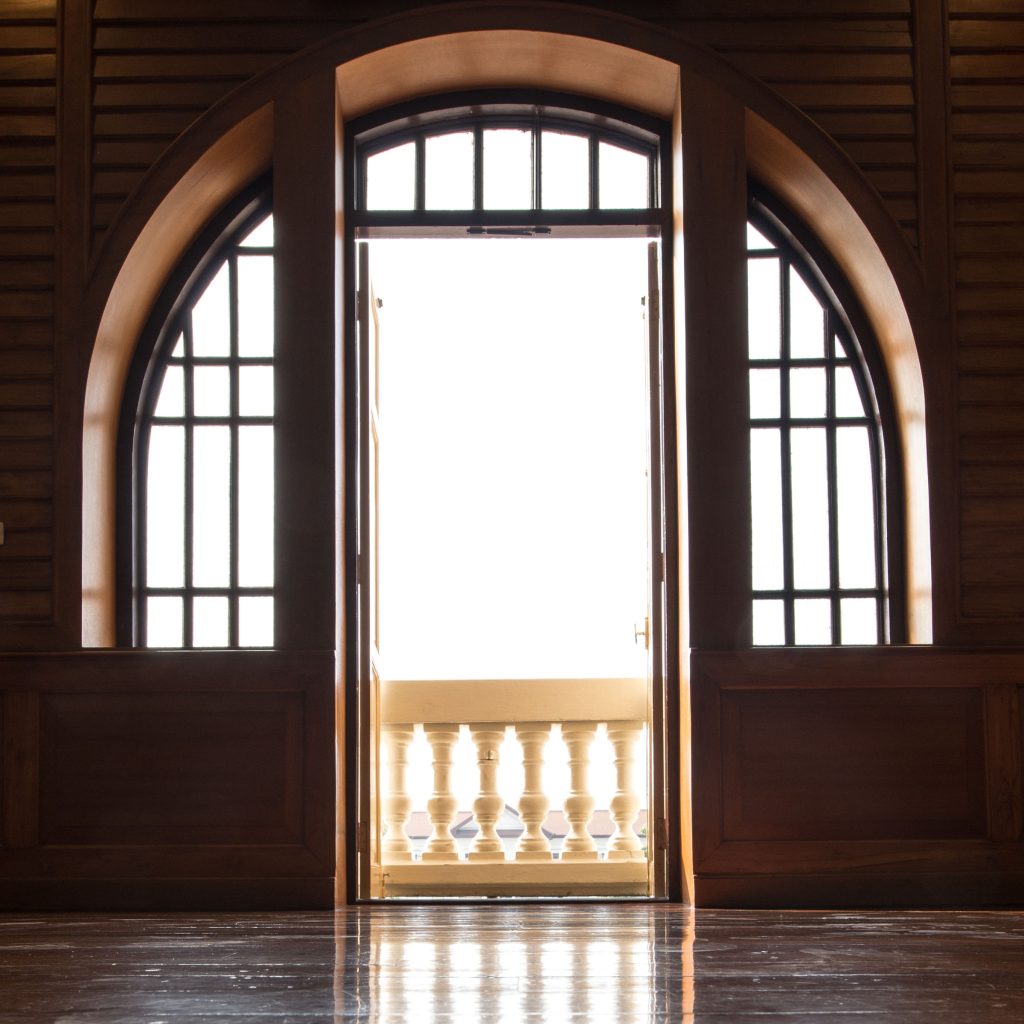
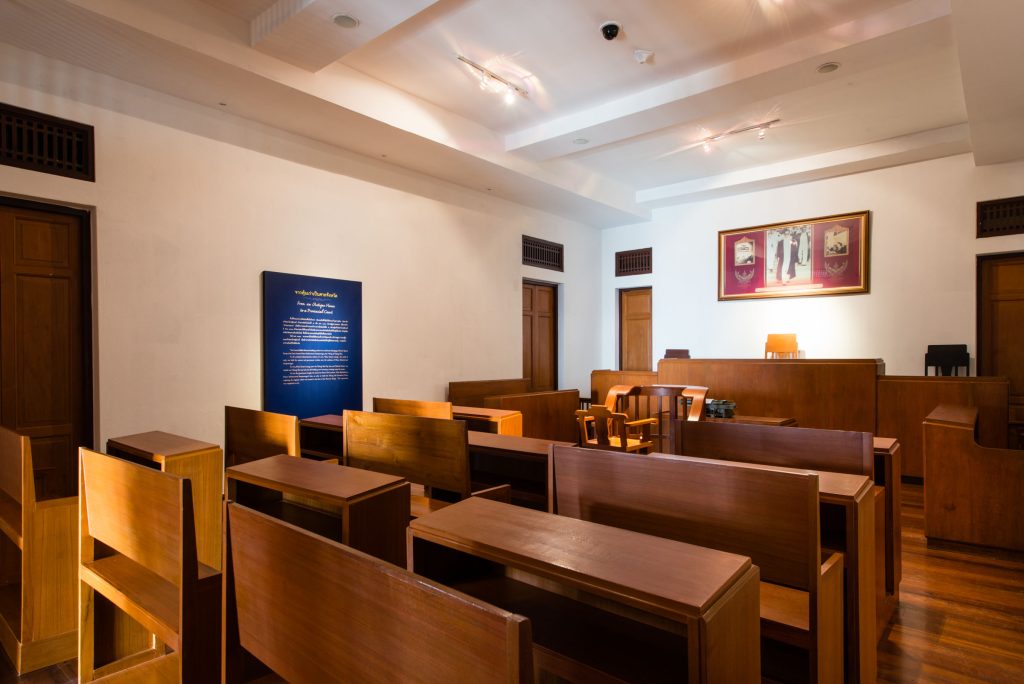
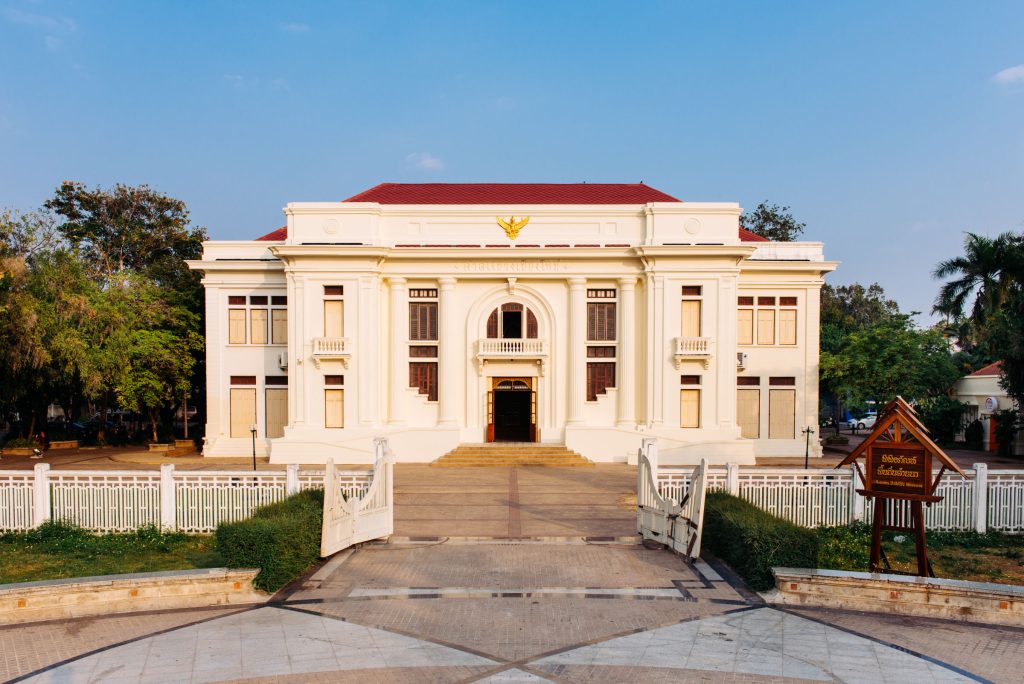
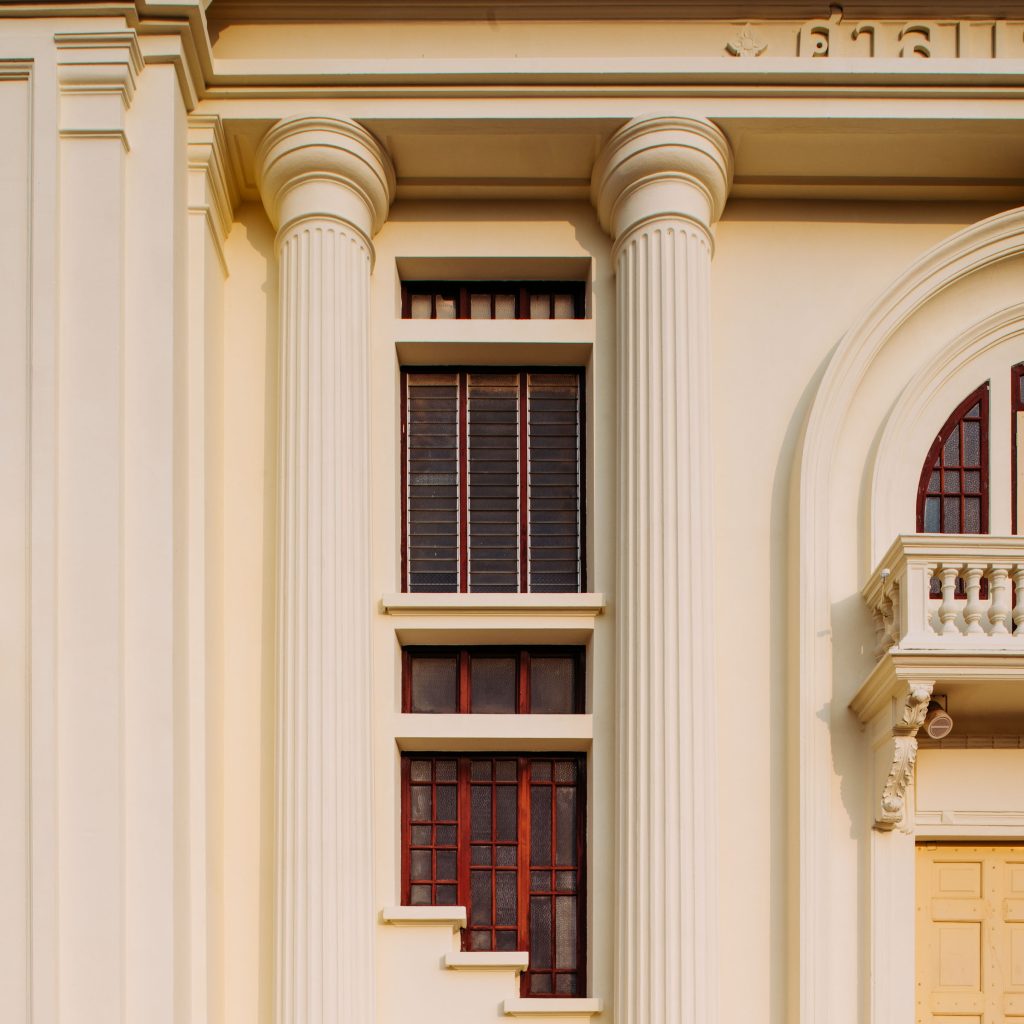
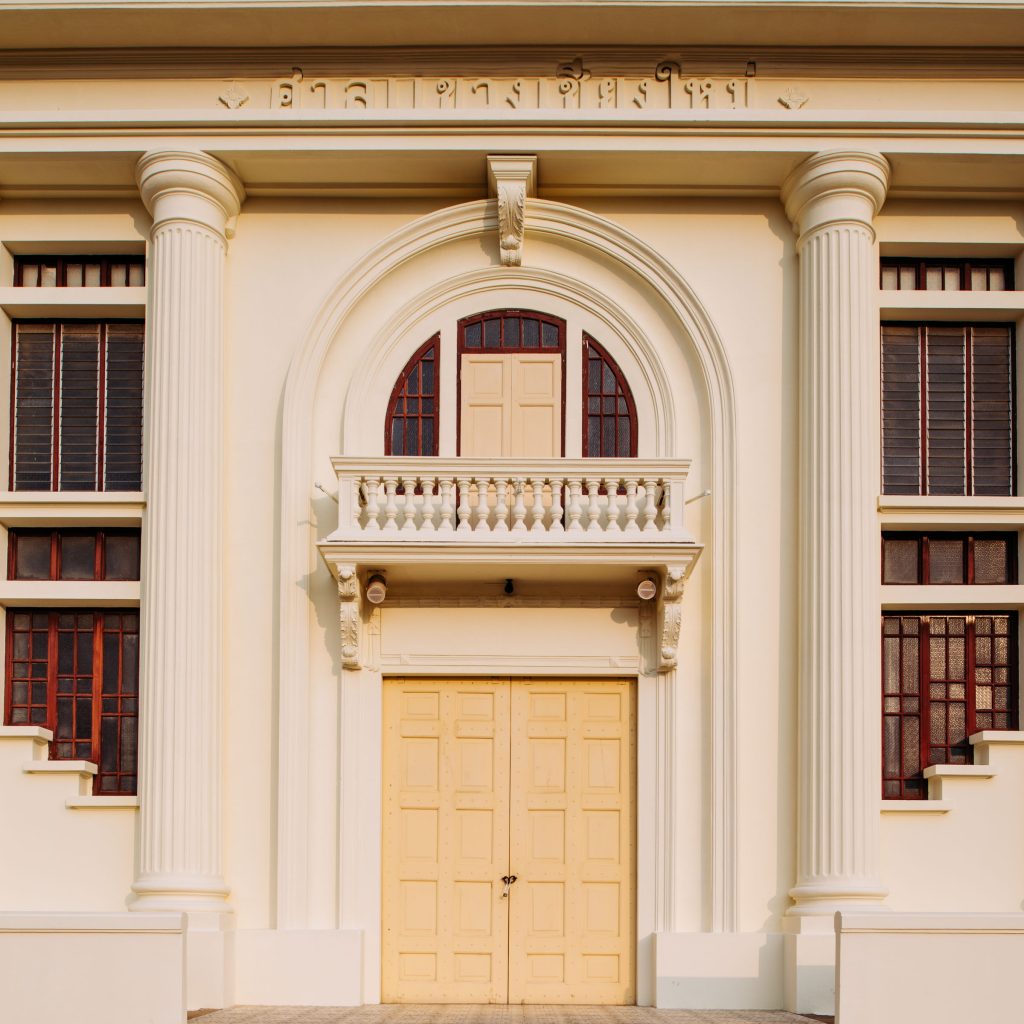
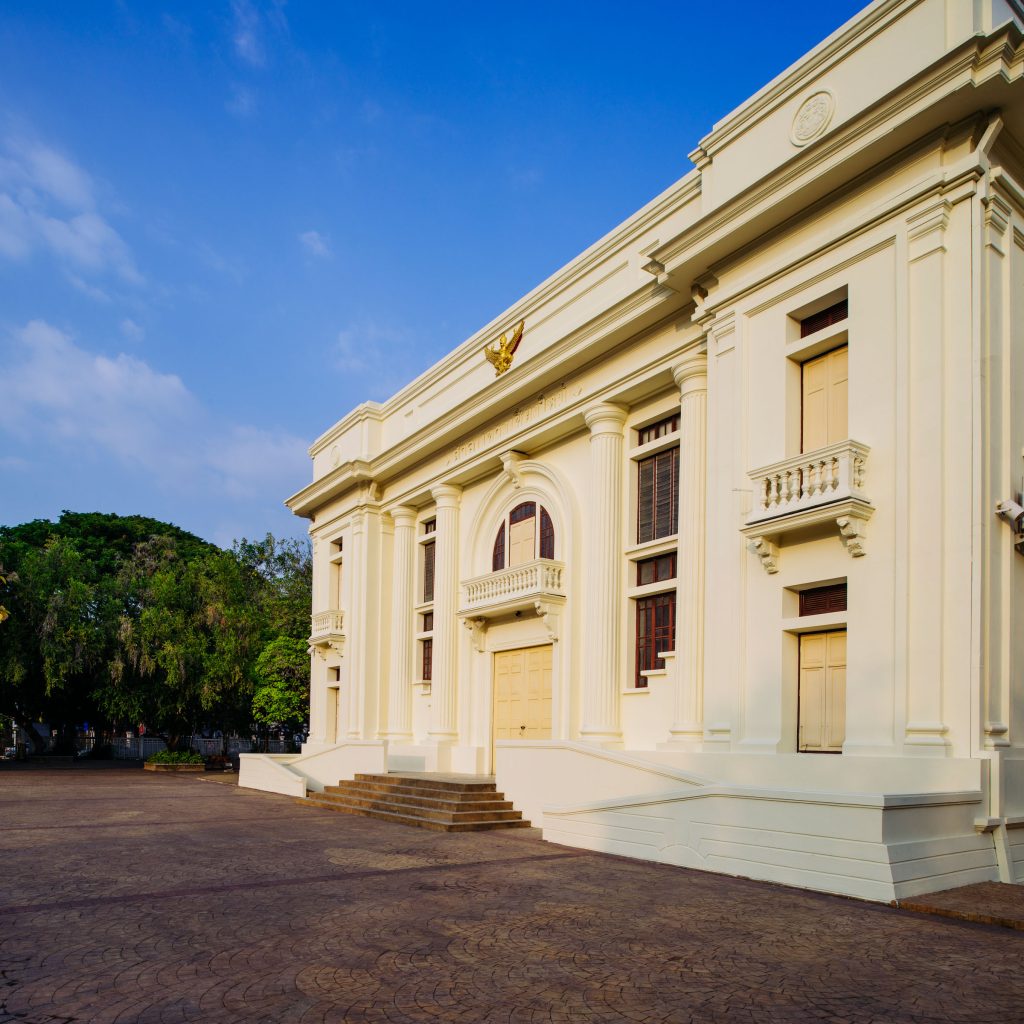
อาคารเรียน 1 โรงเรียนวัดพระบรมธาตุไชยา
อ่านเพิ่มเติม
อาคารเรียน 1 โรงเรียนวัดพระบรมธาตุไชยา
- ที่ตั้ง หมู่ที่ 3 บ้านโพธิ์ ตำบลเวียง อำเภอไชยา จังหวัดสุราษฎร์ธานี
- สถาปนิก/ผู้ออกแบบ ไม่ปรากฏชื่อผู้ออกแบบ
- ผู้ครอบครอง โรงเรียนวัดพระบรมธาตุไชยา
- ปีที่สร้าง พ.ศ. 2474
ประวัติ
โรงเรียนวัดพระบรมธาตุไชยาเดิมชื่อ “โรงเรียนประชาบาลตำบลเวียง” เปิดทำการสอนครั้งแรกเมื่อวันที่ 1 กันยายน พ.ศ. 2466 ตรงกับวันเสาร์ แรม 6 ค่ำ เดือน 9 จุลศักราช 1285 ปีกุน โดยนายทับ สุวรรณ์ ศึกษาธิการอำเภอไชยาในขณะนั้นเป็นผู้ริเริ่ม และมีท่านเจ้าอาวาสวัดพระธาตุเป็นผู้อุปการะสถานที่เล่าเรียนให้ใช้ศาลาการเปรียญของวัดพระธาตุไปก่อน หลังจากนั้นในปี พ.ศ. 2469 ได้มีการรื้อศาลาการเปรียญของวัดลง โรงเรียนจึงได้ย้ายไปทำการเรียนการสอน ณ ที่ทำเนียบ ซึ่งได้ปลูกไว้เพื่อเป็นที่ประทับของพระบาทสมเด็จพระมงกุฎเกล้าเจ้าอยู่หัว รัชกาลที่ 6 ครั้งเมื่อได้เสด็จมานมัสการพระมหาธาตุไชยาจึงได้สร้างทำเนียบไว้เมื่อปี พ.ศ. 2457 ต่อมาเมื่อมีนักเรียนเพิ่มขึ้นสถานที่เรียนไม่เพียงพอแก่นักเรียนที่มีจำนวนเพิ่มขึ้นทุกปี จึงได้มีการสร้างอาคารเรียนหลังใหม่ขึ้นจากเงินสมทบทุนของคนในชุมชน และช่วยกันก่อสร้างจนแล้วเสร็จและเปิดใช้อาคารเมื่อปี พ.ศ. 2474 ในงานพิธีเปิดอาคารเรียนโรงเรียนประชาบาลตำบลเวียง โดยมีมหาอำมาตย์ตรีพระยาศรีธรรมราชชาติเดโชชัยมหัยสุริยาธิบดีพิริยะพาหะ (ทองคำ กาญจณโชติ) สมุเทศาภิบาลมณฑลนครศรีธรรมราชเป็นประธาน พร้อมด้วยอำมาตย์โทพระยาสุราษฎร์ธานีเกษตรนิคม (เต่า สตะกรูมะ) ข้าหลวงประจำจังหวัดสุราษฎร์ธานี อำมาตย์พระสรรพกิจจำนง (มณเฑียร ยุวดีระติ) นายอำเภอไชยา และราชบุรุษขุนมณีวัติ ศึกษาธิการจังหวัด มาร่วมพิธีเปิดอาคารเรียน ต่อมาในปี พ.ศ. 2500 กระทรวงวัฒนธรรมได้ยกฐานะวัดพระธาตุเป็นพระอารามหลวงชั้นเอกชนิดราชวรวิหารให้ชื่อว่า“วัดพระบรมธาตุไชยาราชวรวิหาร” และโรงเรียนได้เปลี่ยนชื่อเป็น “โรงเรียนวัดพระบรมธาตุไชยา” ตั้งแต่นั้นเป็นต้นมา
อาคารเรียน 1 โรงเรียนวัดพระบรมธาตุไชยาเป็นอาคารไม้ชั้นเดียวยกใต้ถุนสูง เสาอาคารด้านล่างเป็นเสาคอนกรีตเสริมเหล็กรองรับตัวอาคารไม้ ลักษณะผังอาคารเป็นสี่เหลี่ยมผืนผ้ามีมุขยื่นอยู่กึ่งกลางตัวอาคาร 1 มุข ปีกด้านซ้ายและด้านขวาของมุขยื่นเป็นห้องเรียนต่างๆ เรียงไปตามแนวยาว ระหว่างมุขยื่นตรงกลางและห้องเรียนริมสุดของปีกทั้งสองข้างเป็นระเบียงไม้ ตรงกลางของระเบียงไม้ทั้งสองมีบันไดปูนสำหรับขึ้นลงอาคาร ฝาผนังอาคารเป็นฝาไม้กระดานแบบซ้อนเกล็ดแนวนอน ประตูและหน้าต่างเป็นบานไม้ลูกฟักไม้พร้อมเกล็ดไม้ระบายอากาศเหนือประตูหน้าต่าง ส่วนเสาระเบียงหน้าห้องเรียนเป็นเสาไม้ประดับด้วยหูช้างรับเกล็ดไม้ระบายอากาศวางที่อยู่เหนือเสาระเบียง ราวกันตกลูกกรงไม้กลึงลายยาวตลอดช่วงระเบียง พื้นอาคารเรียนเป็นพื้นไม้กระดานปูชิดทั้งอาคาร ฝ้าเพดานทั้งภายในและภายนอกอาคารเป็นฝ้าเพดานไม้ตีชิดและมีไม้ซ้อนอีกชั้นหนึ่งทับระหว่างรอยต่อชนของไม้ หลังคาเป็นหลังคาทรงปั้นหยาตลอดความยาวของอาคาร ส่วนมุขยื่นตรงกลางเป็นหลังคาปั้นหยาจั่วตัด หลังคามุงด้วยกระเบื้องว่าว ในส่วนของหลังคาที่ลดระดับลงมาอยู่เหนือช่องหน้าต่างจะมีเท้าแขนไม้รับตลอดช่วงความยาวหลังคา หน้าจั่วของมุขยื่นตกแต่งด้วยเกล็ดไม้ระบายอากาศรูปสี่เหลี่ยมผืนผ้าปาดโค้งด้านบนอยู่สองข้างซ้ายขวาของหน้าจั่ว ด้านบนยอดหลังคามีเสาไม้ฉลุลายประดับยอดจั่ว
อาคารเรียน 1 โรงเรียนวัดพระบรมธาตุไชยาได้รับการปรับปรุงซ่อมแซมให้อยู่ในสภาพดีอย่างสม่ำเสมอ มีการเปลี่ยนโครงสร้างด้านล่างใต้ถุนอาคารจากโครงสร้างไม้เป็นโครงสร้างคอนกรีตเสริมเหล็กพร้อมทั้งยกอาคารขึ้นให้สูงกว่าระดับเดิมอีกเล็กน้อย ต่อมาได้มีการเปลี่ยนกระเบื้องมุงหลังคาจากกระเบื้องซีเมนต์รูปว่าวเป็นกระเบื้องลอน หลังจากนั้น มีการซ่อมแซมเปลี่ยนกลับมาเป็นกระเบื้องซีเมนต์รูปว่าวดังเดิม สำหรับการปรับปรุงครั้งล่าสุดนั้นเกิดขึ้นเมื่อปี พ.ศ. 2553 – 2554 โดยการทาสีอาคารและซ่อมแซมส่วนต่างๆ ให้ยังคงสภาพดี ทำให้อาคารเรียนหลังแรกของโรงเรียนวัดพระบรมธาตุไชยาหลังนี้ยังคงสามารถรักษาคุณค่าทางประวัติศาสตร์และสถาปัตยกรรม รวมทั้งเป็นศูนย์กลางด้านการศึกษาของคนในชุมชน
Building 1 Wat Phra Boromathat Chaiya School
- Location Moo 3, Ban Pho, Tambon Wiang, Amphoe Chaiya, Surat Thani
- Architect/ Designer Unknown
- Owner Wat Phra Boromathat Chaiya School
- Year built 1931
History
Wat Phra Boromathat Chaiya school, formerly known as “Tambon Wieng Local School,” was opened on September 1, 1923 which fell on a Saturday, the 6th day of the waning moon of the ninth month, Thai minor era 1285, the year of the pig, by Thab Suwan, Chaiya District education office at the time. The abbot of Wat Phrathat also offered the temple’s sermon hall for use as a temporary schoolhouse. In 1923, the sermon hall was pulled down; the school was then moved to a mansion built for King Vajiravudh, or Rama VI, in 1914 for his visit to Phrathat Chaiya. As the number of students increased every year, the mansion became too small; a new school building was built with money donated by the people in the community. With help from the local people, the construction was finally completed and the building opened in 1931. At the opening ceremony of Tambom Wieng Local School’s building, Mahaammattri Phraya Srithammarat Chatdechochai Mahaisuriyathibodi Piriyapaha (Tongkham Kanjanachot), Intendant of Nakorn Srithammarat Precint was invited as the guest of honor together with Ammattho Phraya Suratthani Kasetnikhom (Tao Satakruma), Suratthani Governor, Ammat Phra Sappakijchamnong (Monthien Yuvadirati), Chaiya Chief District Officer and Khun Maneewat, the King’s Man, Provincial Education Officer attended the ceremony. In 1957, the Ministry of Culture elevated Wat Phrathat’s to the status of first class royal monastery, Worawihara type, and was renamed “Wat Phra Borommathat Chaiya” since.
School Building 1 of Wat Borommathat Chaiya School is a single storey elevated wooden structure. Steel reinforced concrete columns supporting the foundation of the building. Rectangular floor plan with a porch sticking out in the center. The classrooms are lined up down the left and right wings of the building. Between the center balcony and the far end of each wings were wooden balconies with concrete stairs on each sides. Horizontal overlapping wood sidings. Mullion doors and windows with wooden vent above. Wood pillars on balcony in front of classrooms are decorated with right-angled piece of wood that support the vent above. Wood protective barriers along the balcony. Wood flooring throughout the building. Interior and exterior ceilings are coherent structure wood panels with extra layer of panels covering the seams. Hip roof along the length of the building with intersecting gable on the center porch. Kite shaped tile roofing with supporting wood modillion along the lower edge of the roof above the window. The two wood vents on the center porch gable are of rectangular shape with curve top. Carved wood pole on the rooftop.
School Building 1 of Wat Phra Borommathat Chaiya School has been receiving constant repairs. The wood structure of the space underneath the building was replaced with steel reinforced concrete and the building was raised a little higher. The kite shaped roofing tiles were replaced with carved tiles but was later switched back to kite shaped tiles. The most recent restoration took place in 2010 – 2011 to repair paints and structures of the building. The first building of Wat Phra Borommathat Chaiya School remains in good condition today and is able to preserve its history and architectural value. It is now the center of community education.
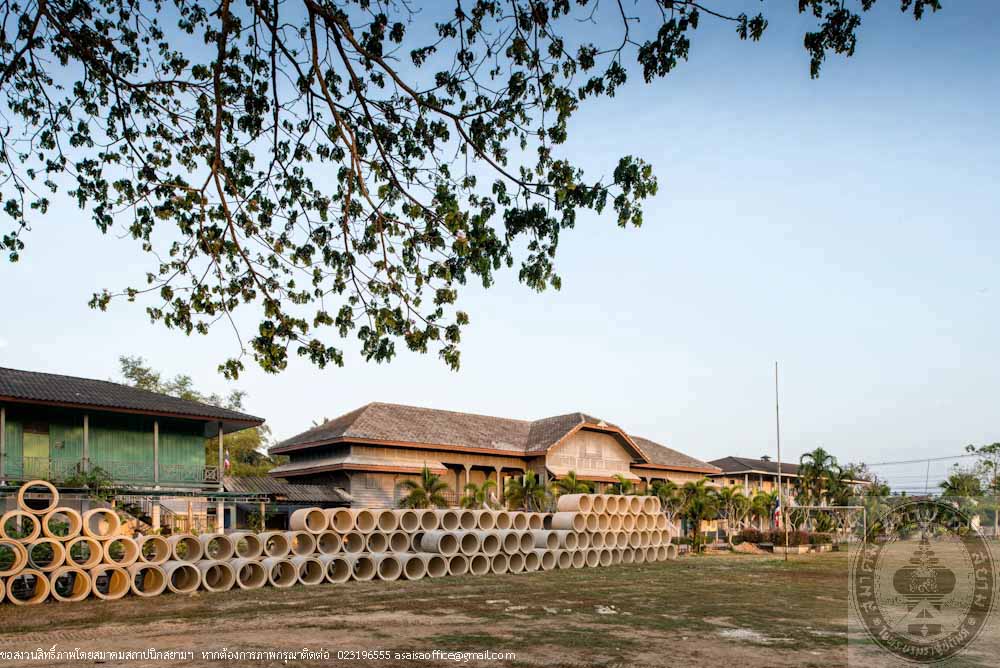
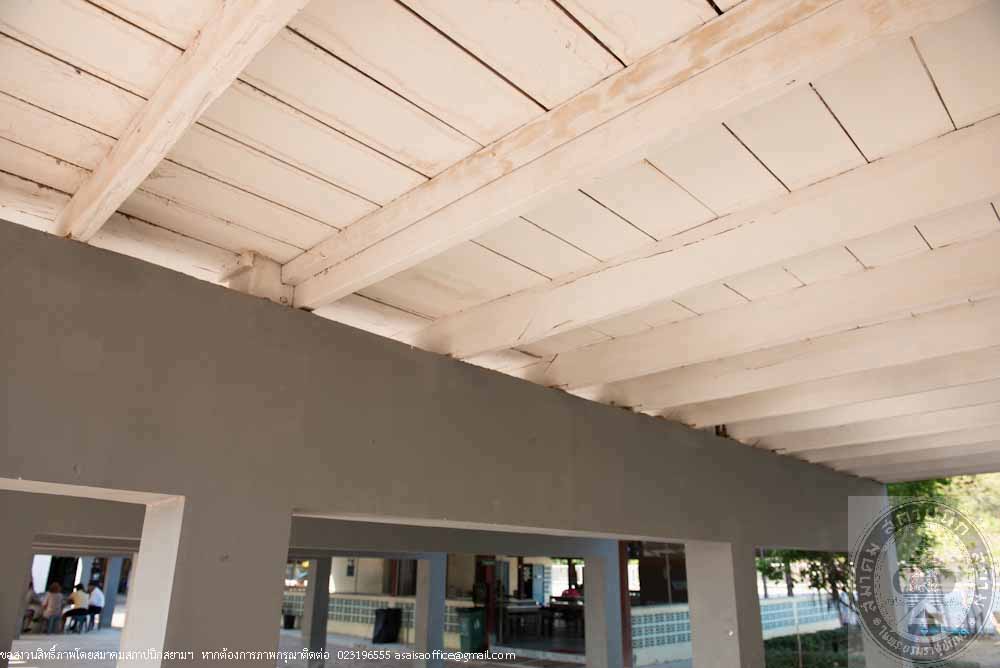
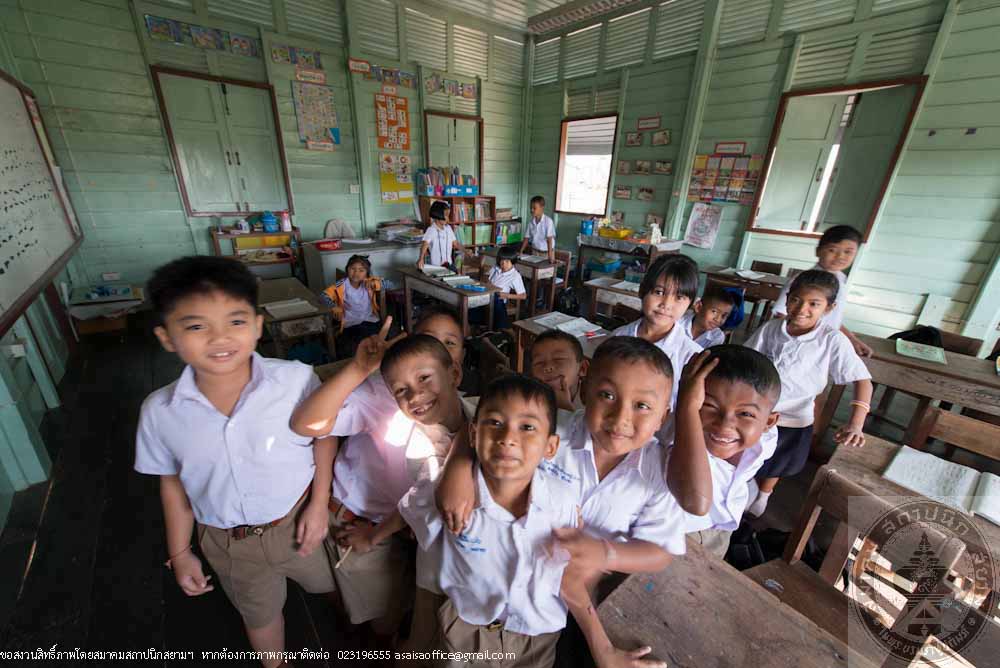
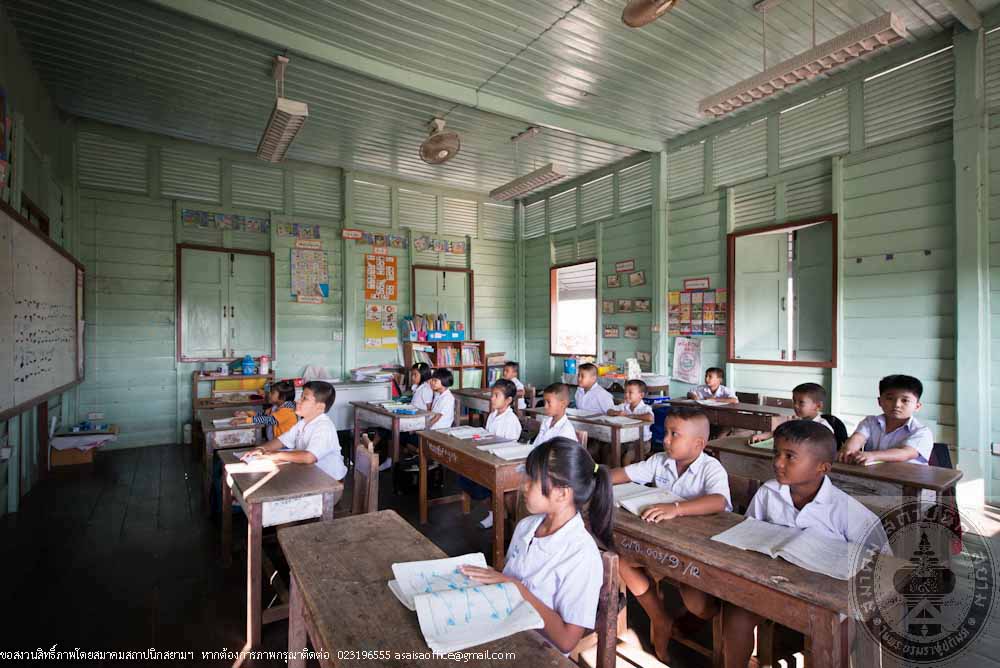
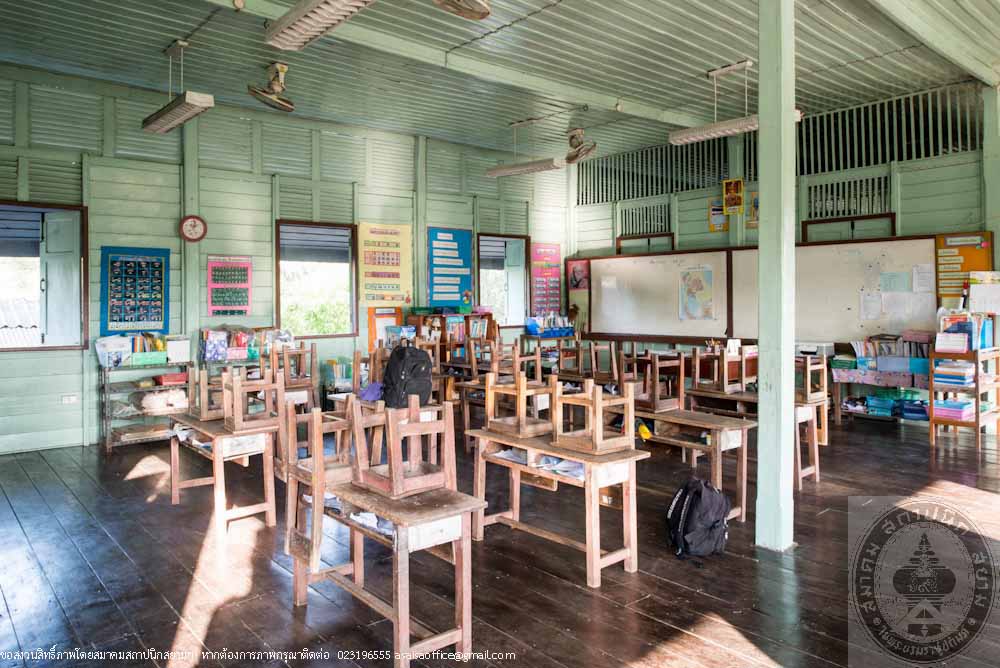
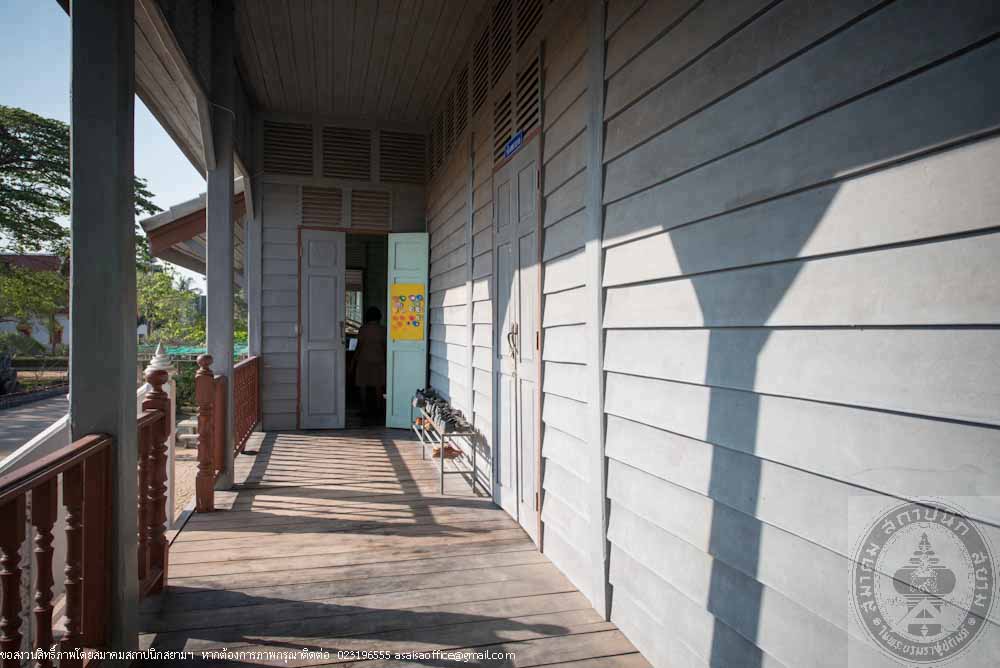
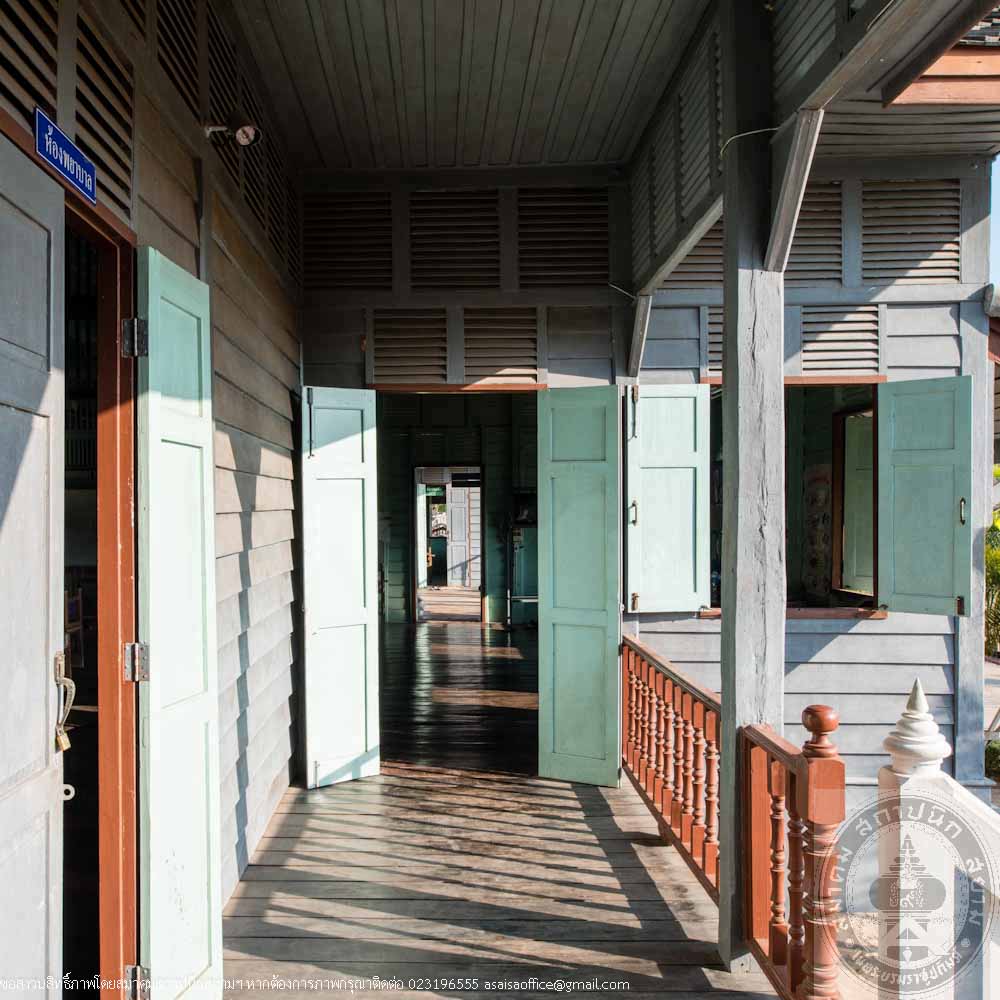
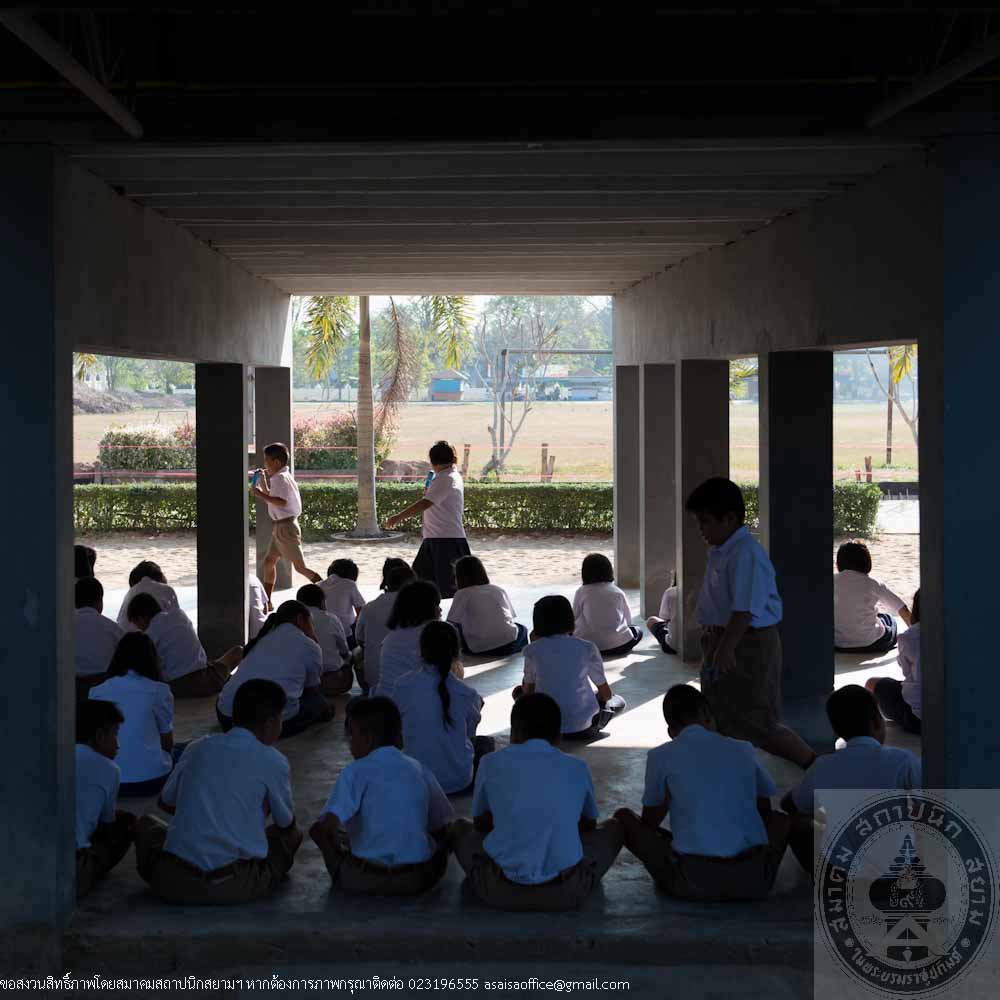
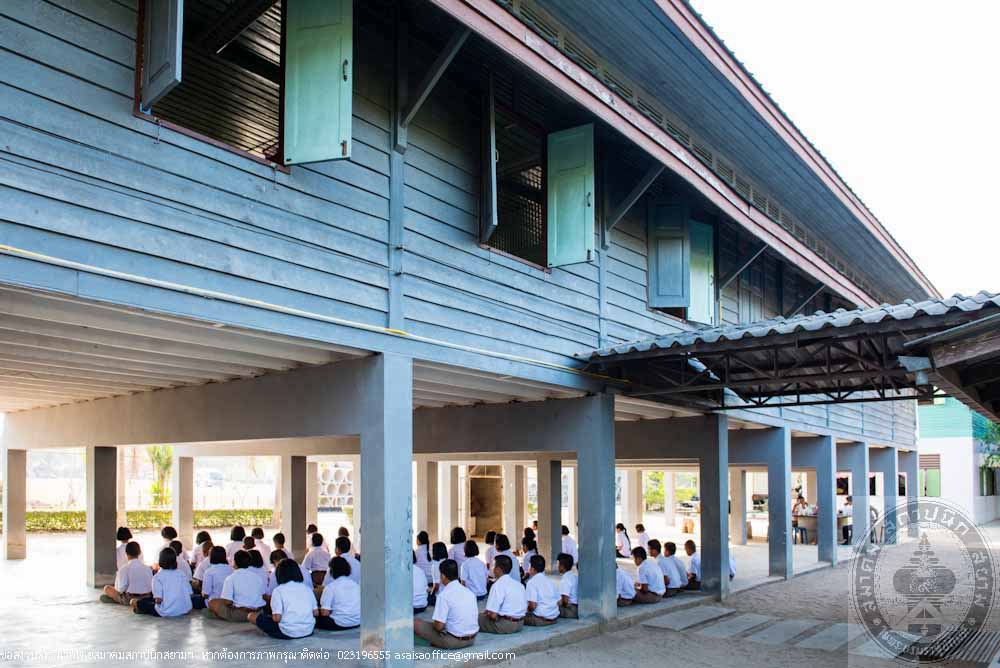
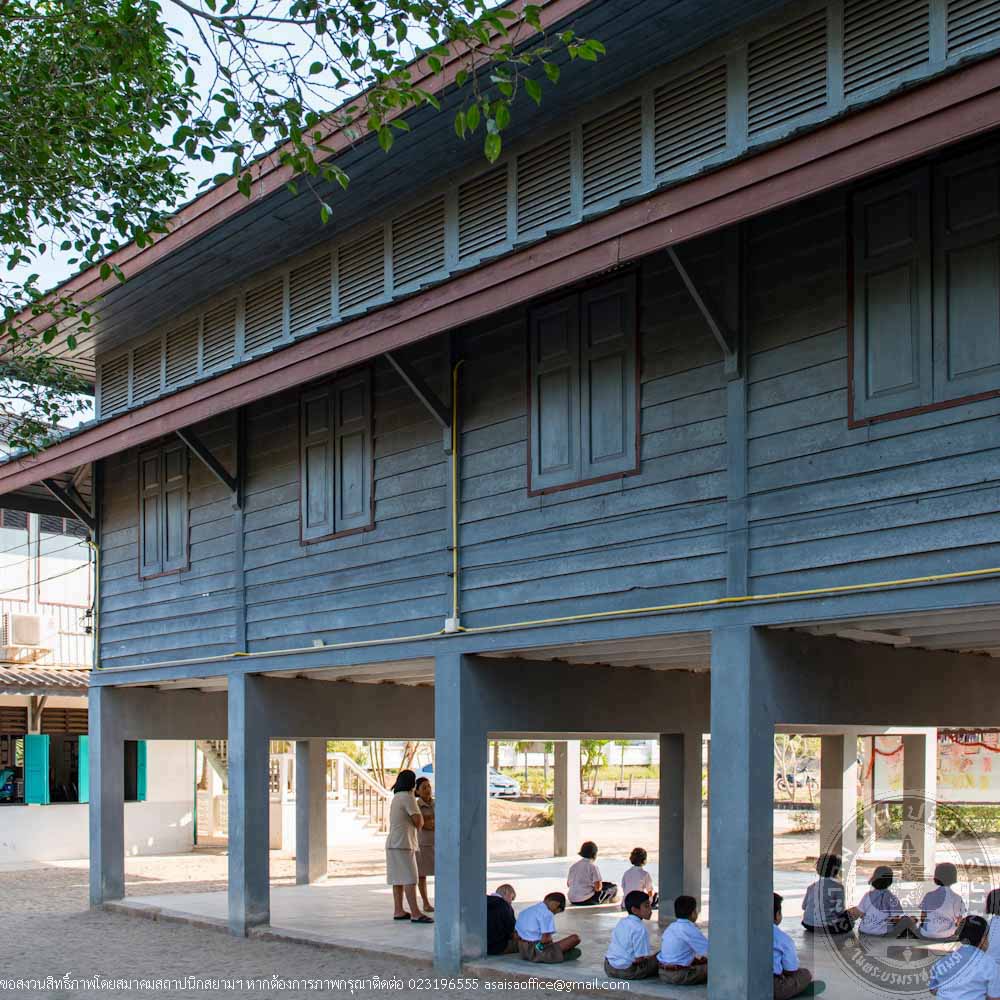
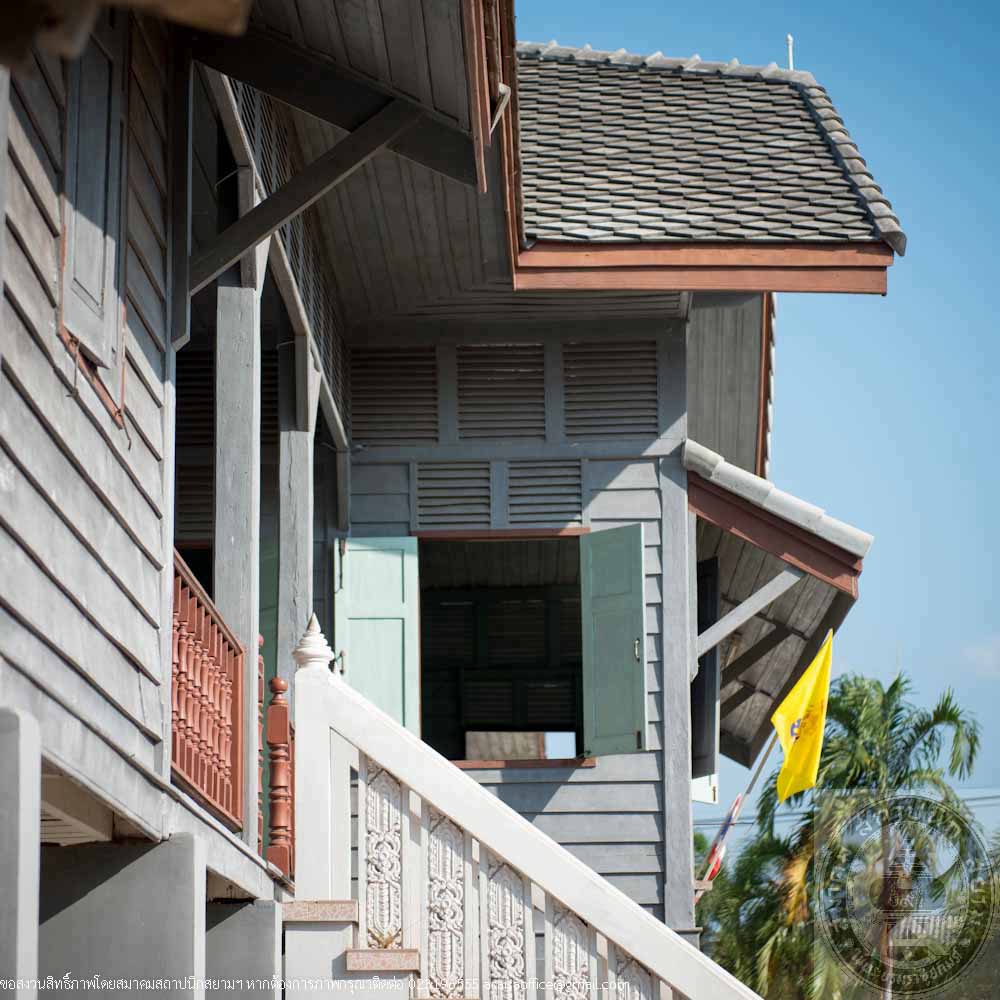
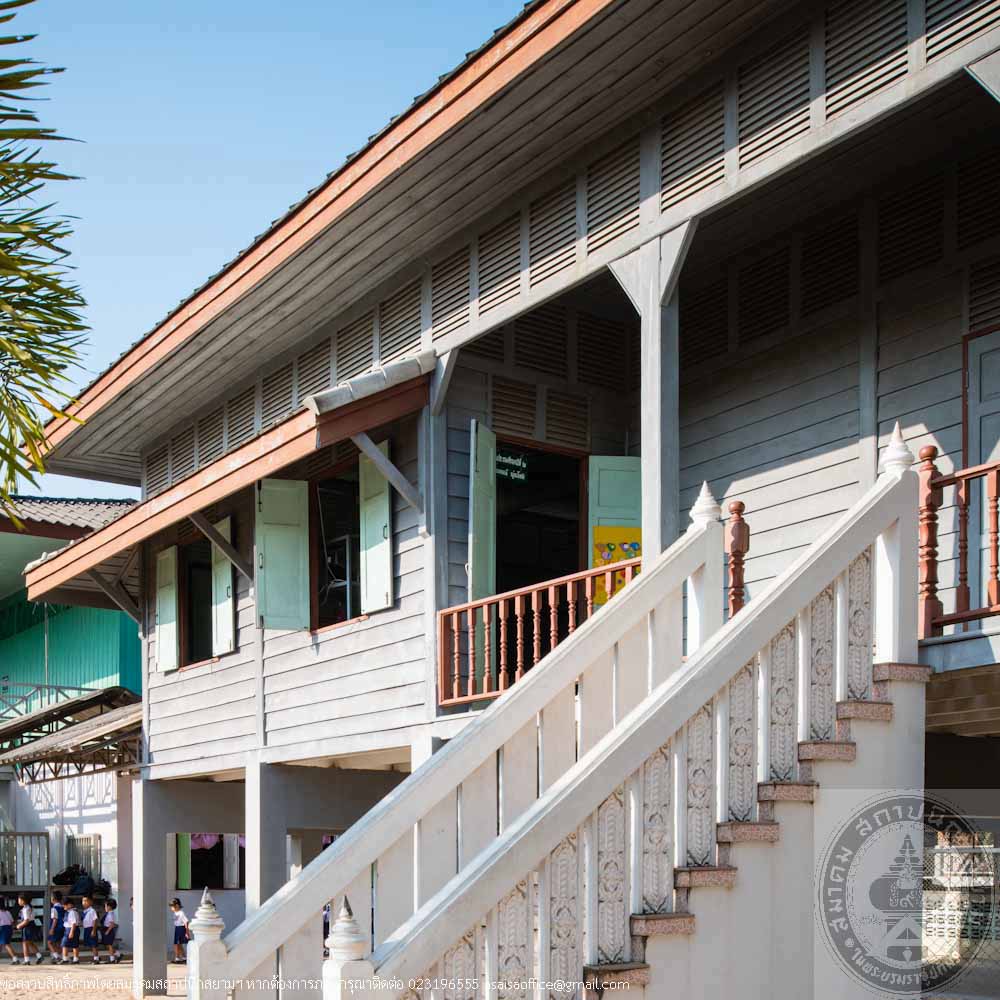
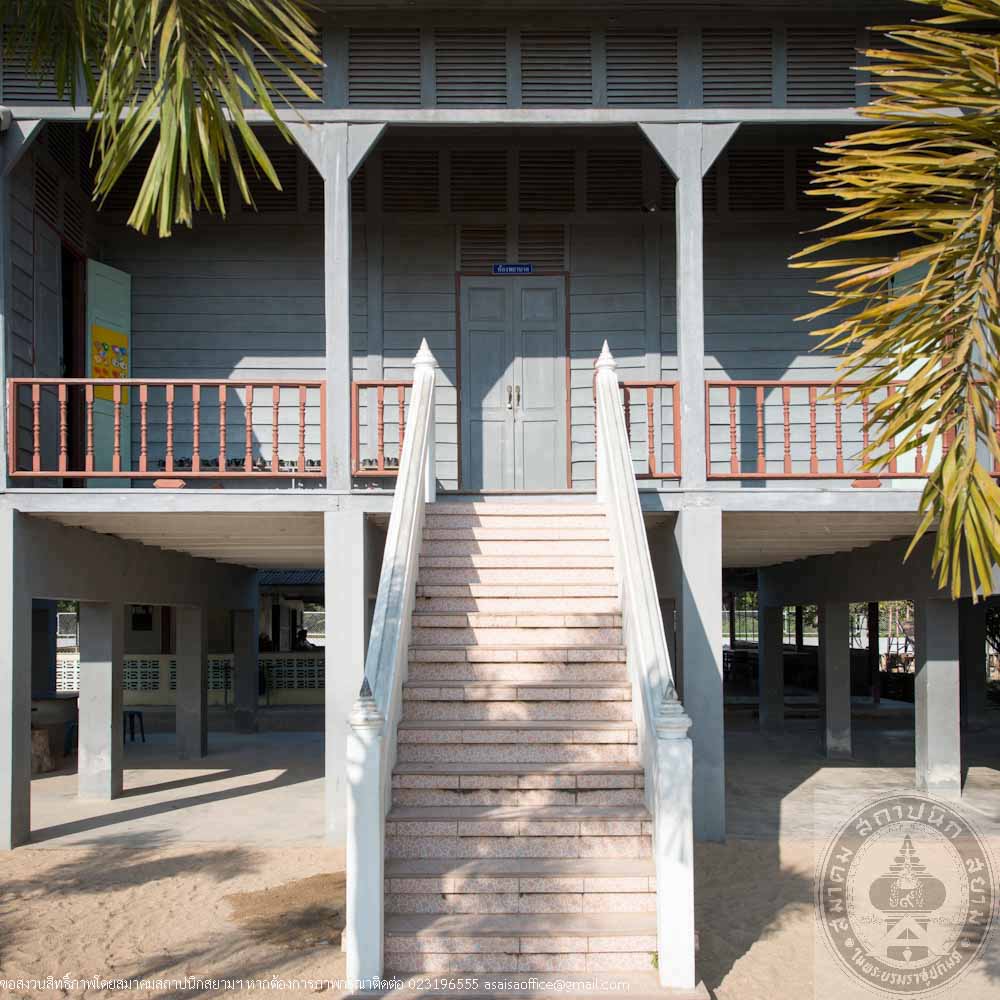
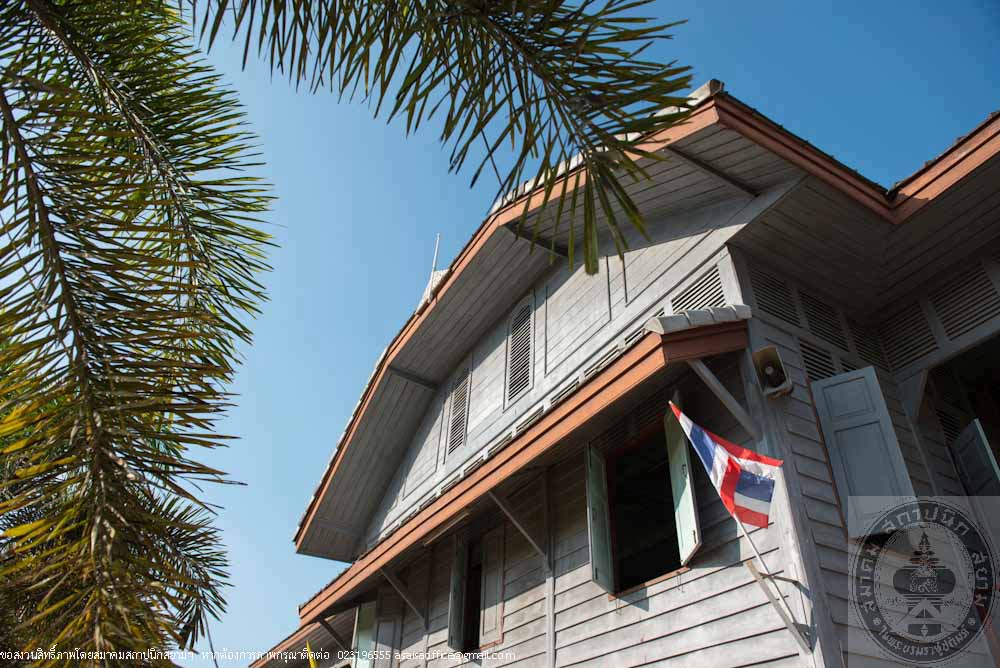
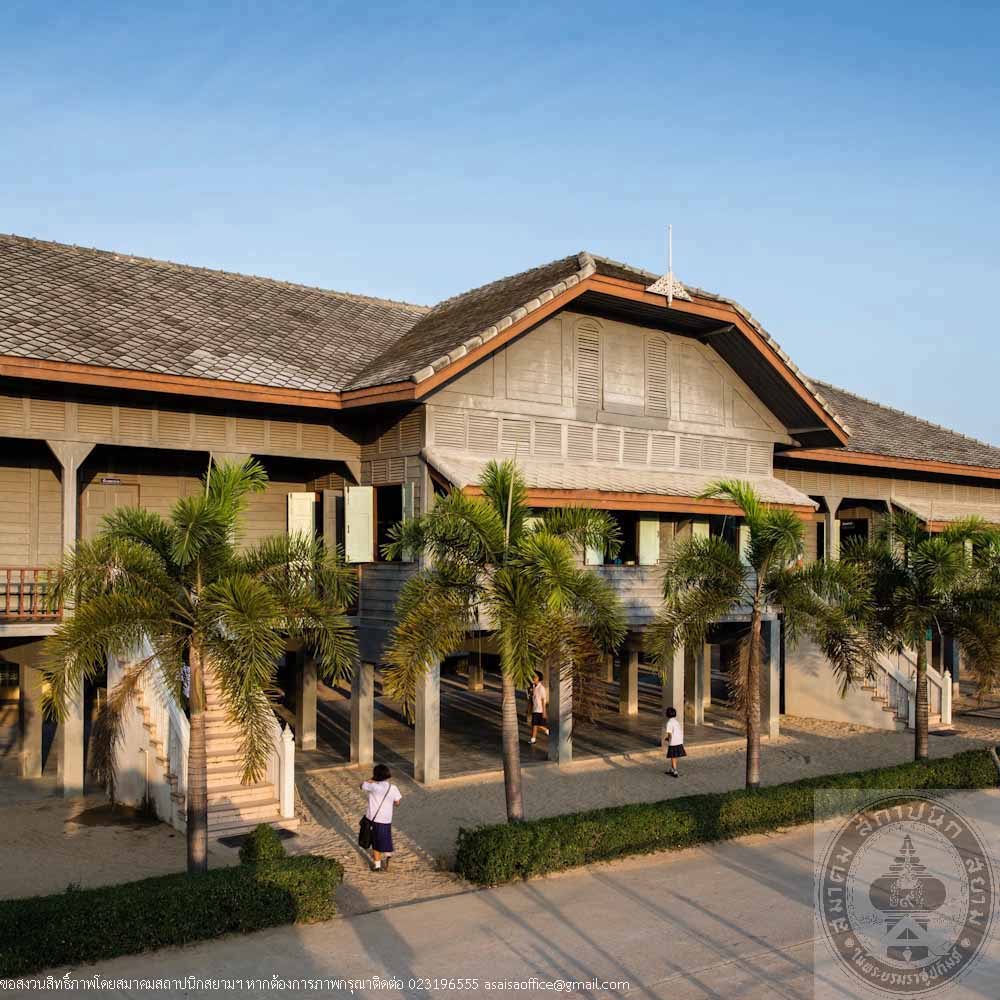
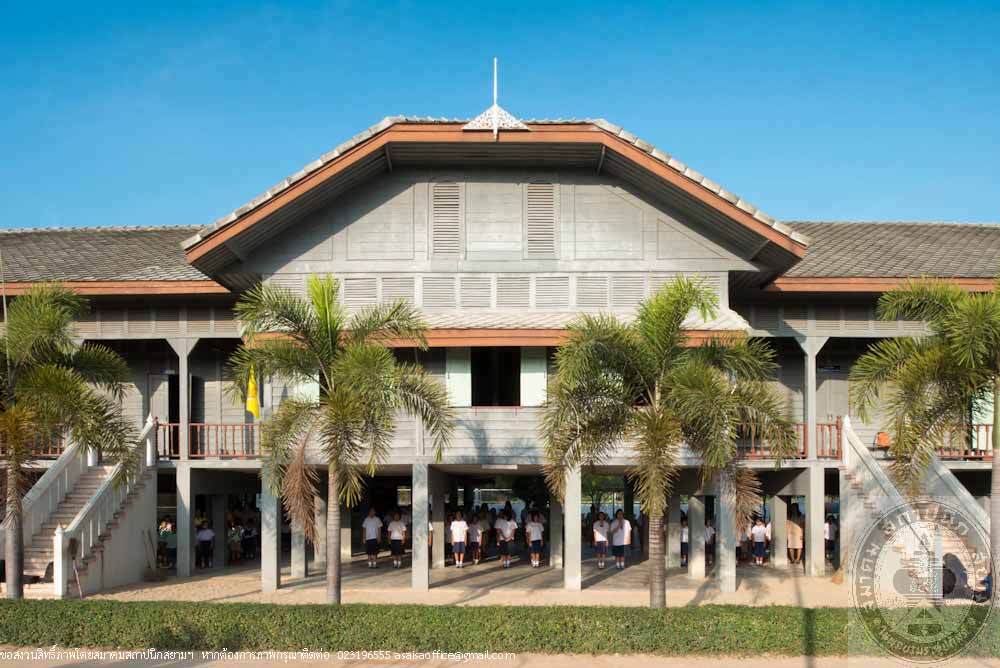
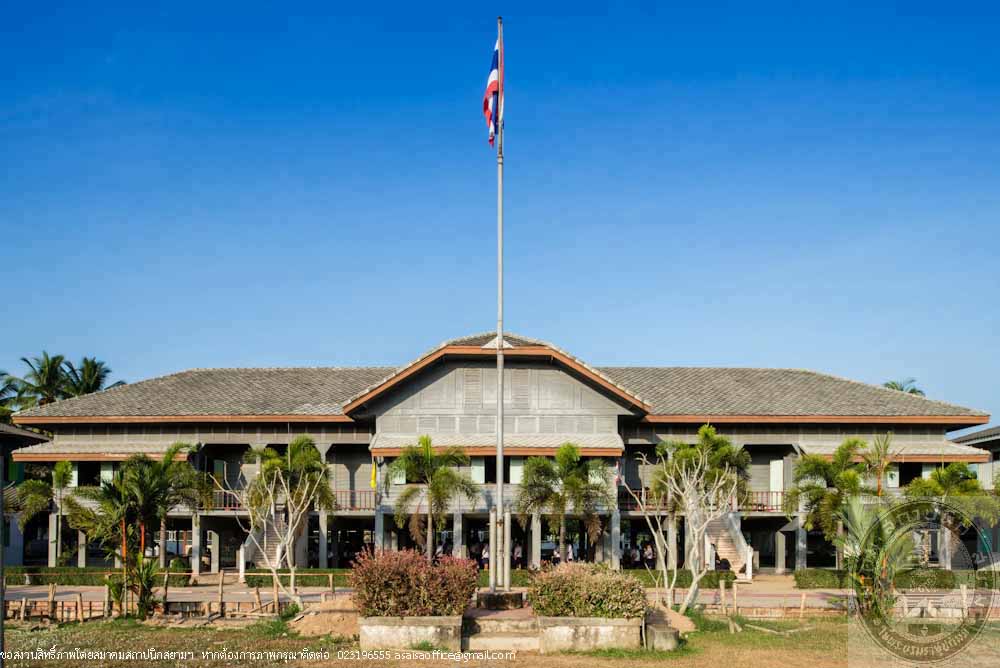
บ้านพักรับรองแหลมแท่น
อ่านเพิ่มเติม
บ้านพักรับรองแหลมแท่น
- ผู้ครอบครอง สำนักนายกรัฐมนตรี
- ปีที่สร้าง พ.ศ.2503
- ปีที่ได้รับรางวัล พ.ศ.2557
ประวัติ
บางแสนเป็นสถานตากอากาศเก่าแก่ของเมืองไทยมานานกว่า 50 ปี ซึ่งในอดีตเป็นหมู่บ้านชาวประมงขนาดเล็ก ต่อมาในสมัยจอมพล ป. พิบูลย์สงคราม ได้มีการสร้างบ้านพักตากอากาศขึ้นที่บริเวณเชิงเขาสามมุขด้านทิศตะวันตกในปี พ.ศ.2486 – 2488 และสร้างบ้านพักตากอากาศเพื่อรับรองบุคคลสำคัญ แขกบ้านแขกเมือง ข้าราชการชั้นสูง รวม 13 หลัง นอกจากนี้ยังเคยใช้เป็นสถานที่จัดประชุมคณะรัฐมนตรี ทำให้บ้านพักรับรองที่เขาสามมุขนี้เป็นที่รู้จักมากขึ้น ภายหลังในปี พ.ศ.2503 สมัยจอมพลสฤษดิ์ ธนะรัชต์ ดำรงตำแหน่งนายกรัฐมนตรี ได้มีการสร้างบ้านพักตากอากาศและบ้านพักรับรองทางฝั่งแหลมแท่นและชายหาดบางแสน ทำให้ข้าราชการชั้นผู้ใหญ่นิยมมาพักตากอากาศทางฝั่งแหลมแท่นและชายหาดบางแสนกันมากขึ้น การท่องเที่ยวชายหาดบางแสนจึงเติบโตขึ้นนับแต่นั้นเรื่อยมา
ในปี พ.ศ. 2510 ดร.ถนัด คอมันตร์ รัฐมนตรีว่าการกระทรวงการต่างประเทศ ร่วมด้วยผู้นำประเทศมาเลเซีย ฟิลิปปินส์ อินโดนีเซีย และสิงคโปร์ ได้ใช้บ้านพักรับรองหลังนี้เป็นสถานที่หารือร่วมกันเพื่อกำหนดแนวทางจัดตั้งสมาคมอาเซียนขึ้น ในวันที่ 6 สิงหาคม 2510 พร้อมจัดทำเอกสารข้อตกลง “The Spirit of Bangsaen” หรือ “จิตวิญญาณแห่งบางแสน” ก่อนจะมีการลงนามในปฏิญญากรุงเทพในอีก 2 วันต่อมา
บ้านพักรับรองแหลมแท่นเป็นอาคารก่ออิฐถือปูน 3 ชั้น มีดาดฟ้าด้านบนสำหรับจัดงานเลี้ยงและชมทัศนียภาพชายหาดบางแสน อาคารถูกสร้างโดยคำนึงถึงสภาพแวดล้อมทางกายภาพ การวางตัวอาคารด้านหน้าเป็นแกนยาวขนานชายหาด แกนตัดขวางใช้เป็นส่วนพักรับรอง การเลือกใช้วัสดุแต่ละด้านคำนึงถึงทิศทางของแสงแดดได้อย่างเหมาะสม วัสดุมุงหลังคาด้านฝั่งที่พักใช้กระเบื้องรอนคู่สีแดงตัดกับหินกาบและหินทรายสีน้ำตาลอย่างลงตัว องค์ประกอบสถาปัตยกรรมโดยรอบเลือกใช้เส้นตั้งและเส้นนอน ทำให้เกิดจังหวะแต่งแฝงไปด้วยประโยชน์ใช้สอย มีกันสาดปูนยื่นออกไปโดยรอบ เพื่อกันแดดฝน ผนังด้านข้างออกแบบเป็นลายเพื่อบังแดด ด้านล่างเป็นพื้นหินขัดสำหรับเป็นพื้นที่สังสรรค์ พื้นที่ด้านบนเป็นห้องพักมีห้องน้ำในตัว รวมจำนวน 4 ห้อง ด้านหน้าที่ติดทะเลทั้ง 3 ชั้นเป็นห้องประชุมและห้องจัดเลี้ยงรับรอง สามารถจุคนได้ประมาณ 50 – 100 คน ด้านในตกแต่งอย่างสวยงามเน้นงานไม้เป็นลวดลาย ประดับตกแต่งด้วยเฟอร์นิเจอร์รูปทรงทันสมัย ซึ่ง “บ้านพักรับรองแหลมแท่น” ยังคงใช้เป็นบ้านพักรับรองเจ้าหน้าที่สำนักนายกรัฐมนตรีจนกระทั่งถึงปัจจุบัน
Laem Tan Beach House
- Owner Office of the Prime Minister
- Year Built 1960
- Year Awarded 2014
History
Bang Saen is an old resort town in Thailand of over 50 years. It was once a small fishing village until the period of Field Marshall Plaek Pibulsonggram when a vacation home was built on the west foot of Kao Sam Muk from 1943 – 1945. Thirteen additional guest houses were also built to facilitate VIPS, foreign visitors and high ranking government officials. The facilities were also used to host the Ministry Conferences which brought the guest houses at Kao Sam Muk into spotlight. Later in 1960, when Field Marshall Sarit Thanarat became Prime Minister, villas and guest houses were built on Laem Taen cape and Bang Saen beach resulting in the increasing interests of government officials in visiting Laem Taen and Bang Saen beach. Bang Saen tourism grew tremendously since.
In 1967, the villa was used by Dr. Thanad Khoman, Minister of Foreign Affairs of Thailand together with the leaders from Malaysia, the Philippines, Indonesia and Singapore to negotiate plans in establishing the Association of Southeast Asian Nations or ASEAN countries which took place on August 6, 1967. “The Spirit of Bang Saen” agreements were issued here two days before The Bangkok Declaration was signed.
Laem Taen beach house is a three leveled masonry building with a sun deck on the rooftop for hosting events and scenic Bang Saen Beach viewing. The building was created by taking into consideration the physical environment – the long front layout parallels the beach while the crossed sections are guest units. Materials used on each side of the building were carefully selected with direction of sunlight in mind. Roofing materials on guest units are red carved tiles which contrast well with brown slate and sandstone. The architectural components of the surroundings were based on the vertical and horizontal elements to create rhythm yet functional. Cement awnings along the side to keep the sun and rain out. Siding pattern designed for shading. The gathering space on the lower level features terrazzo flooring while the upper level comprises four en suite bedrooms. The front three-storey front building facing the sea houses meeting and banquet rooms that accommodate 50 – 100 guests with beautiful crafted wood interior and modern furnishings. “Laem Taen Beach House” continues to serve as a guest house to officers from Office of the Prime Minister to this day.
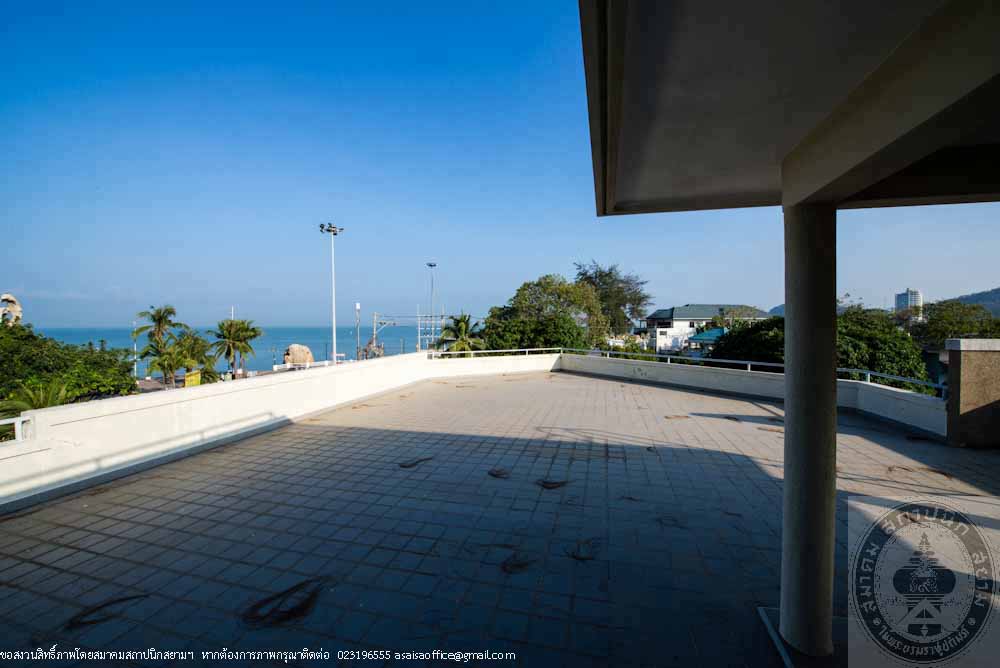
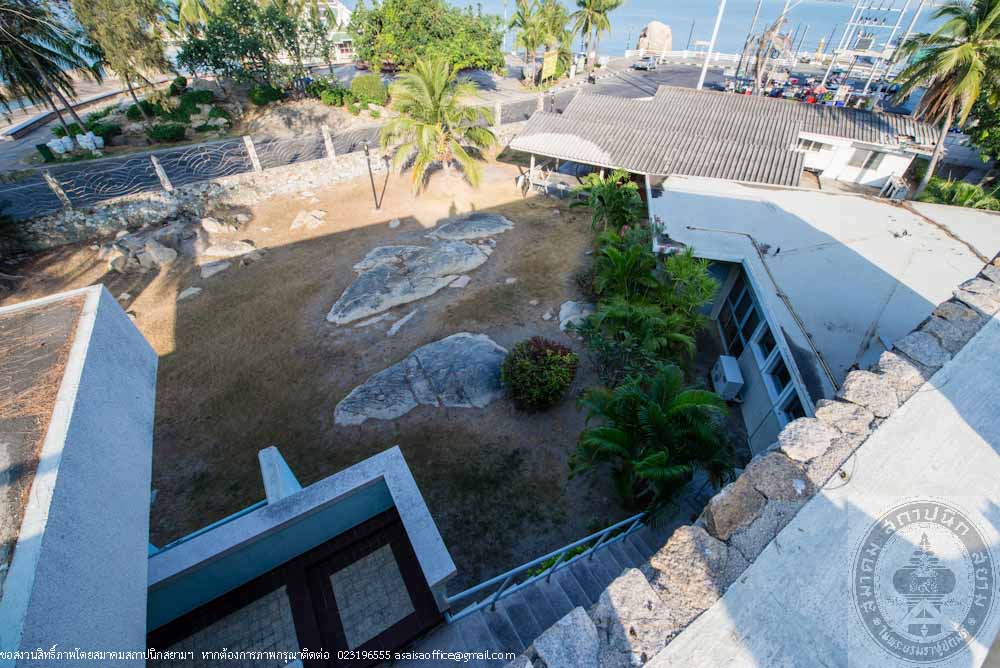
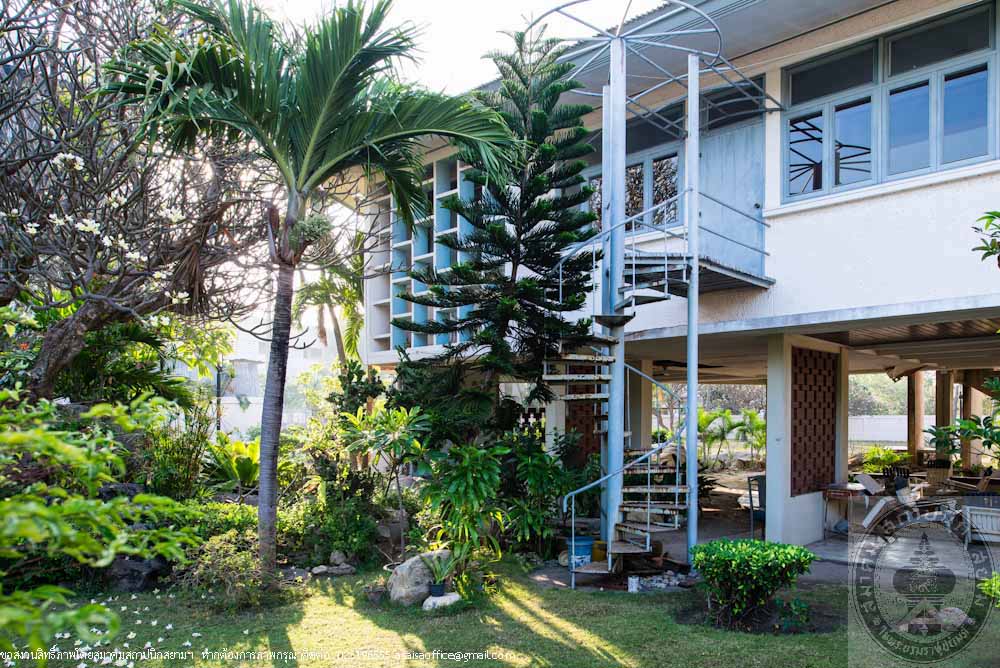
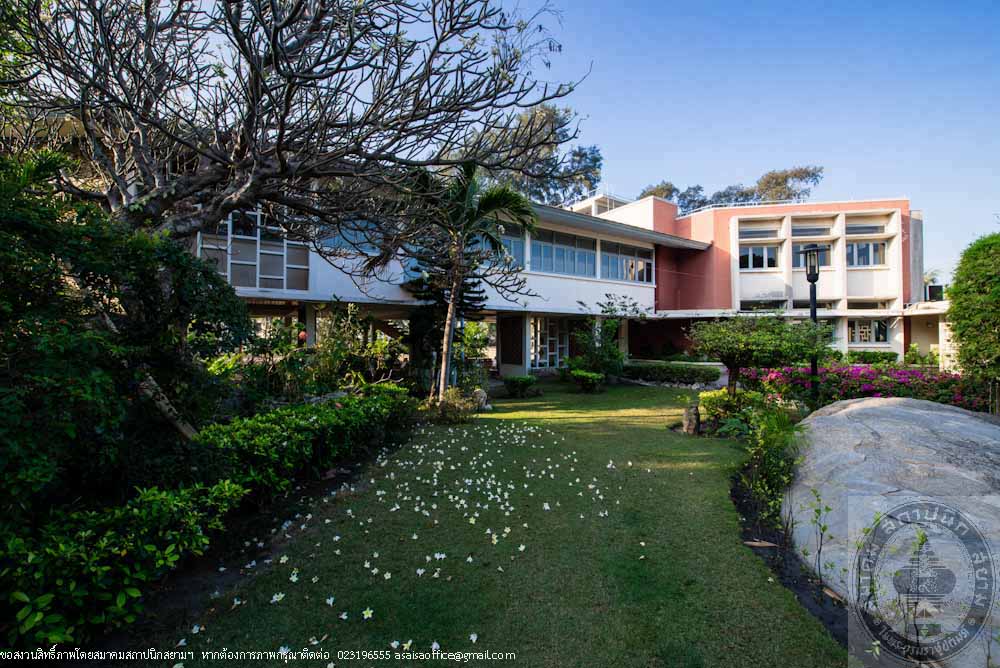
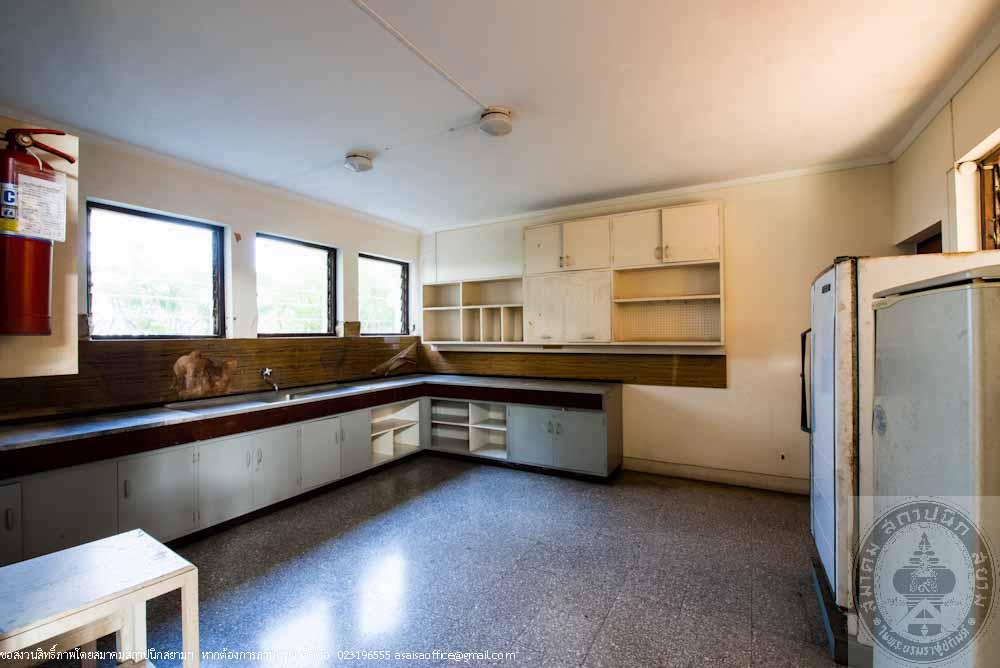
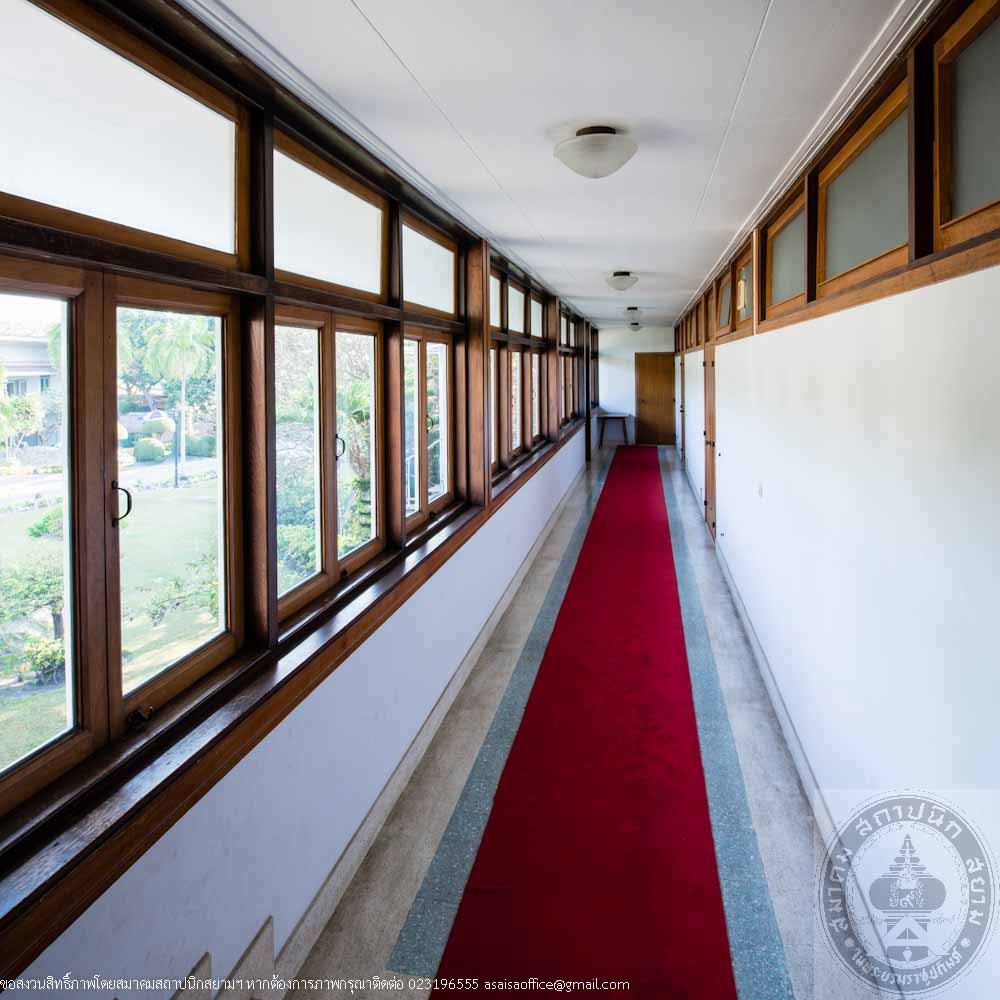
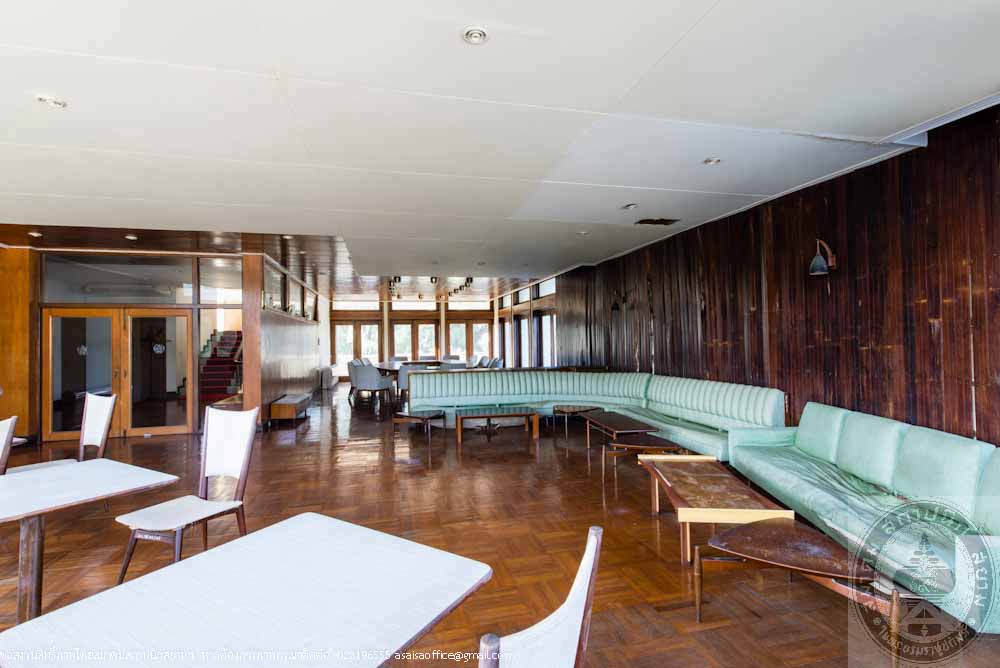
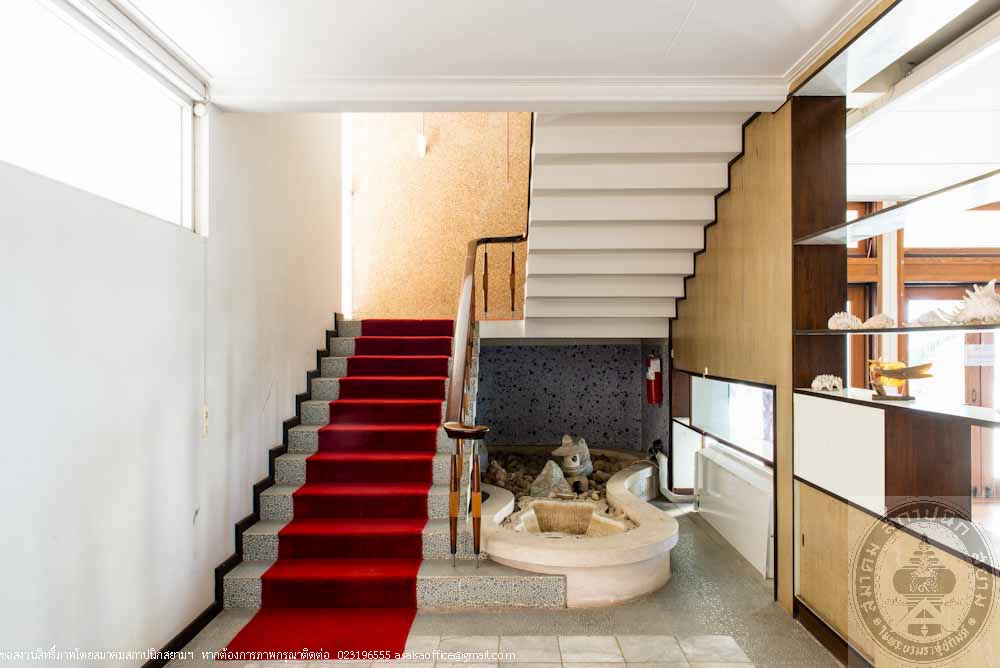
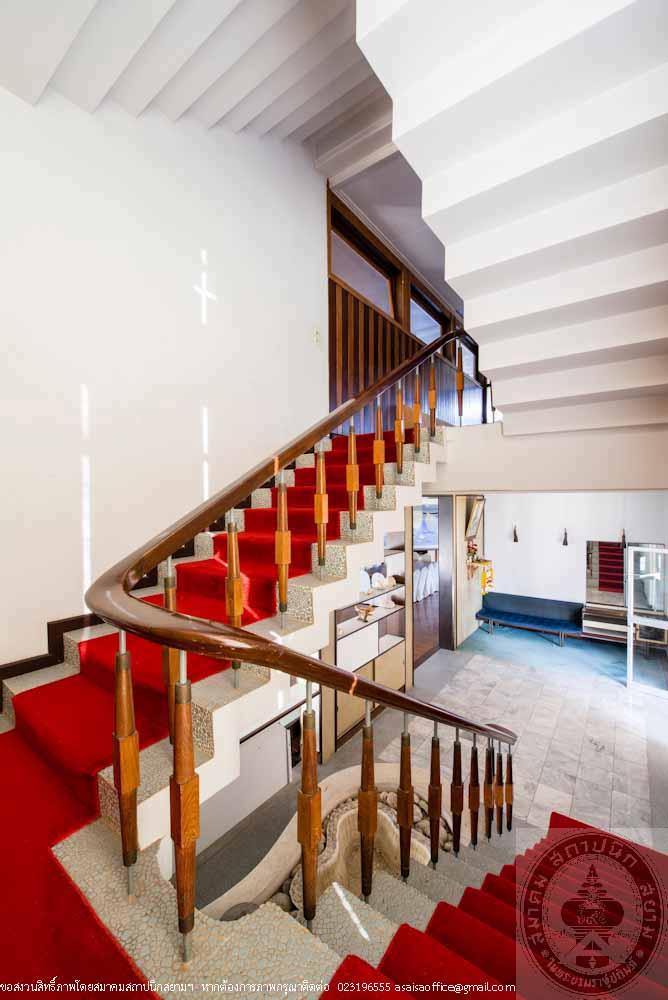
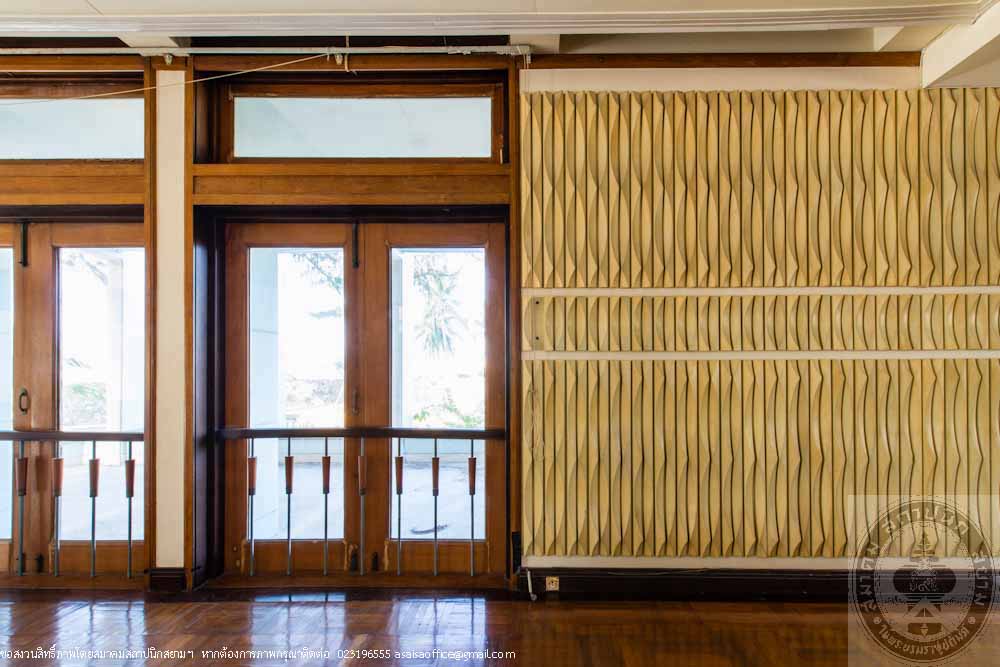
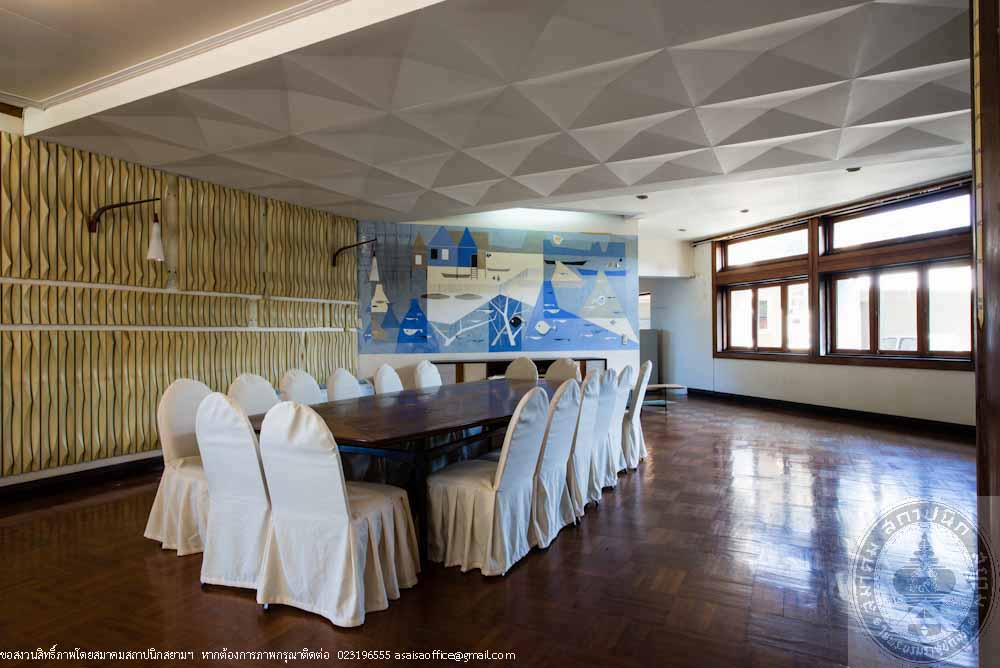
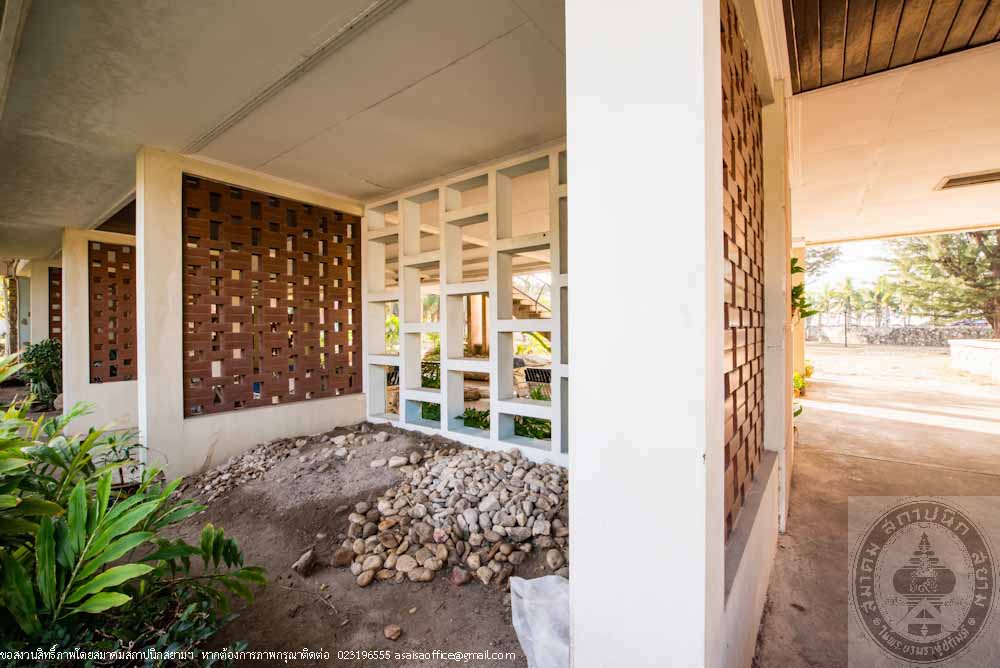
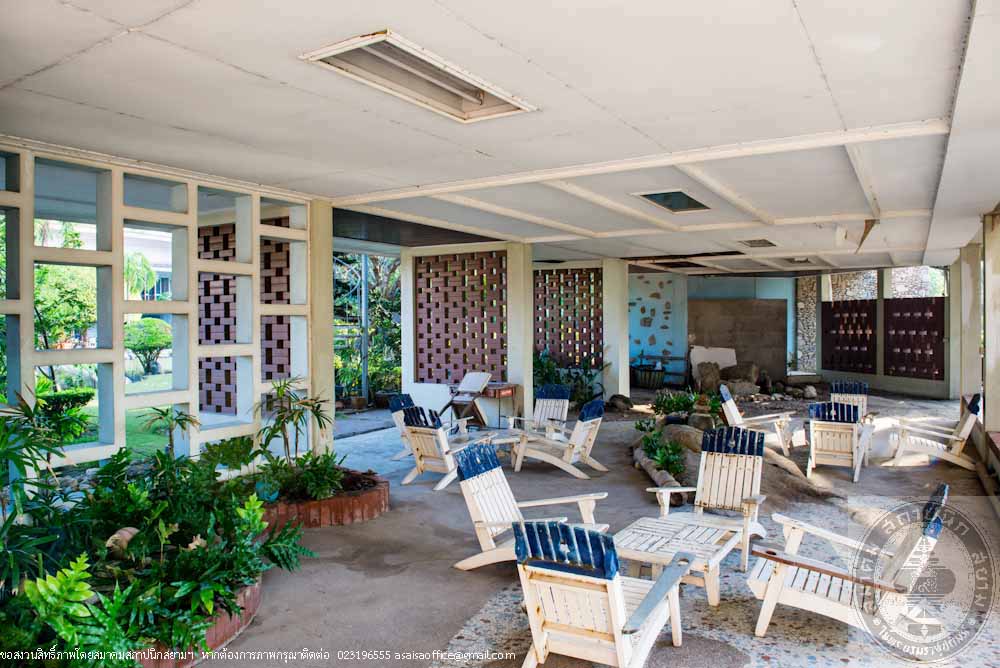
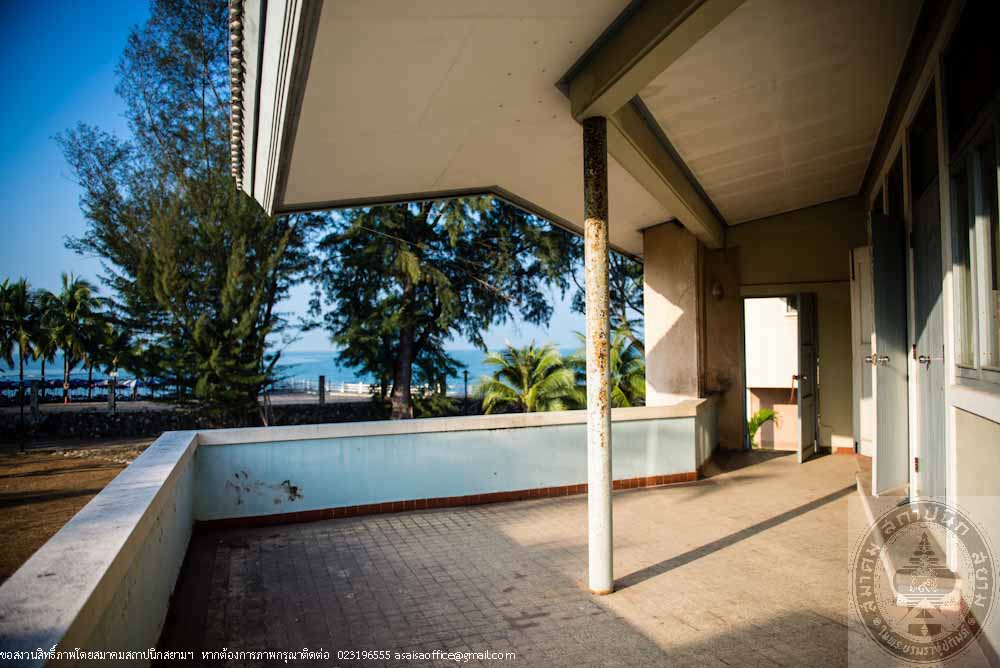

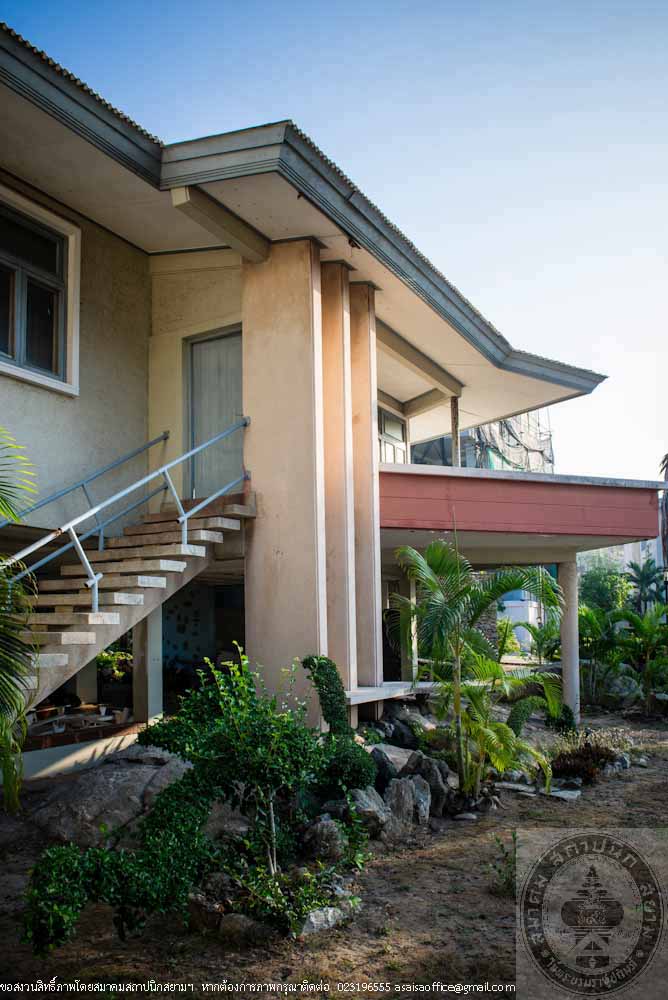
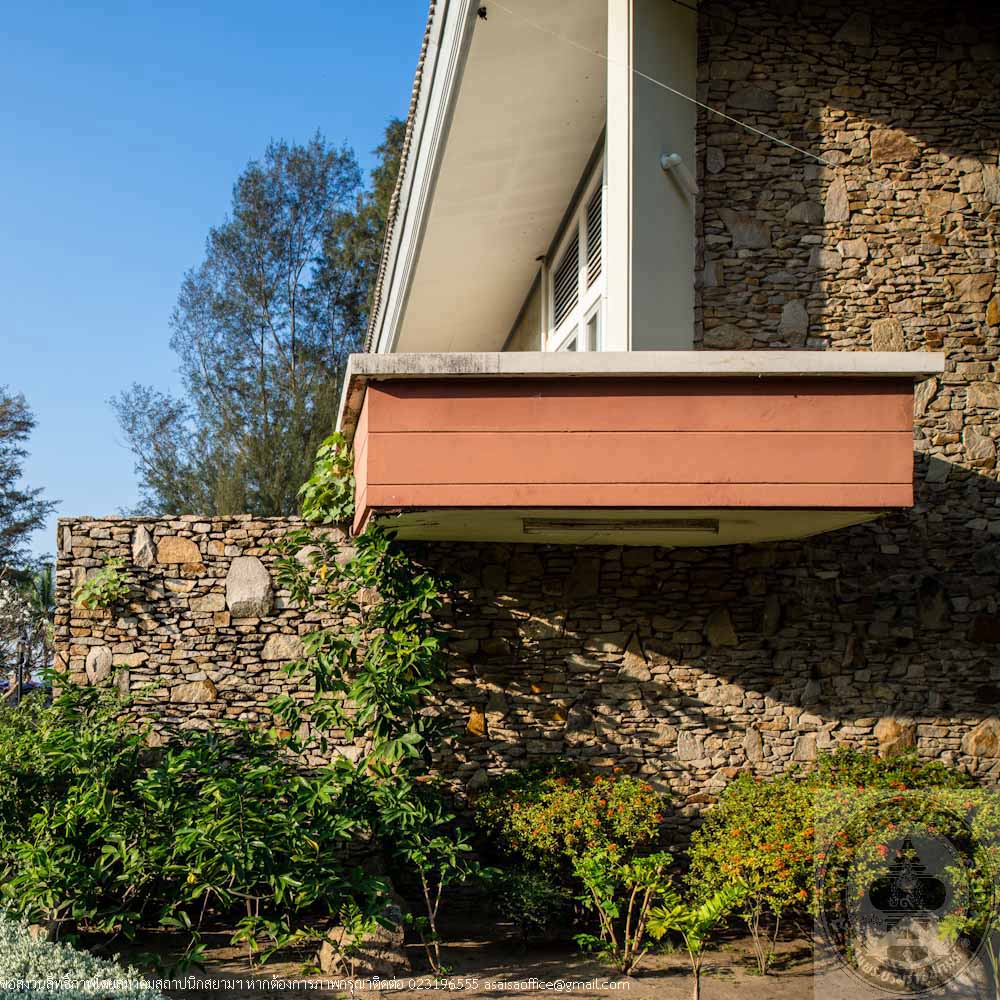
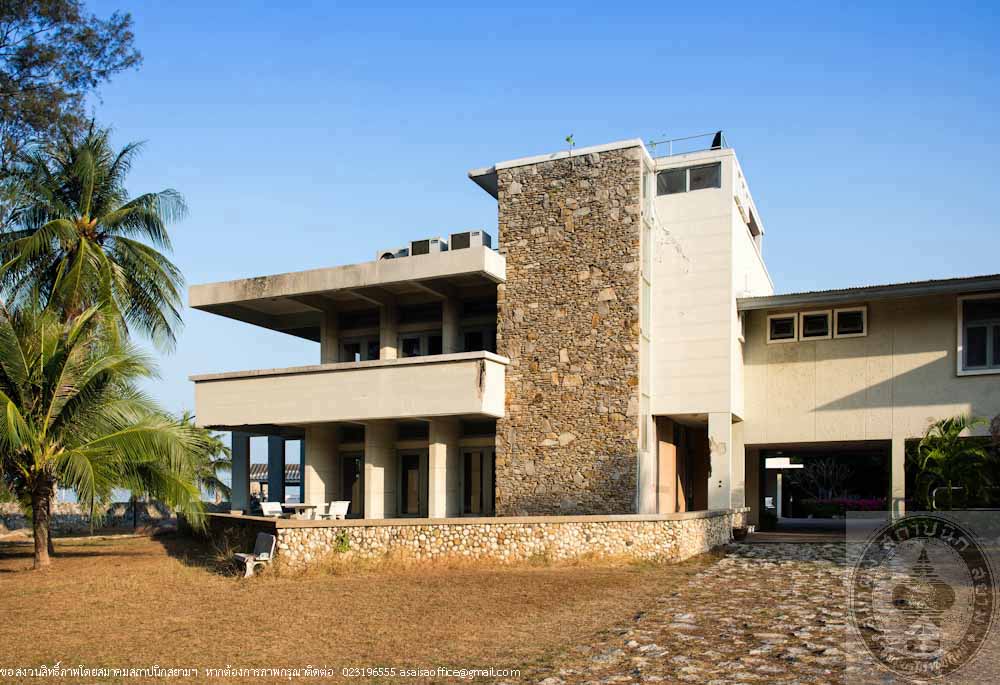
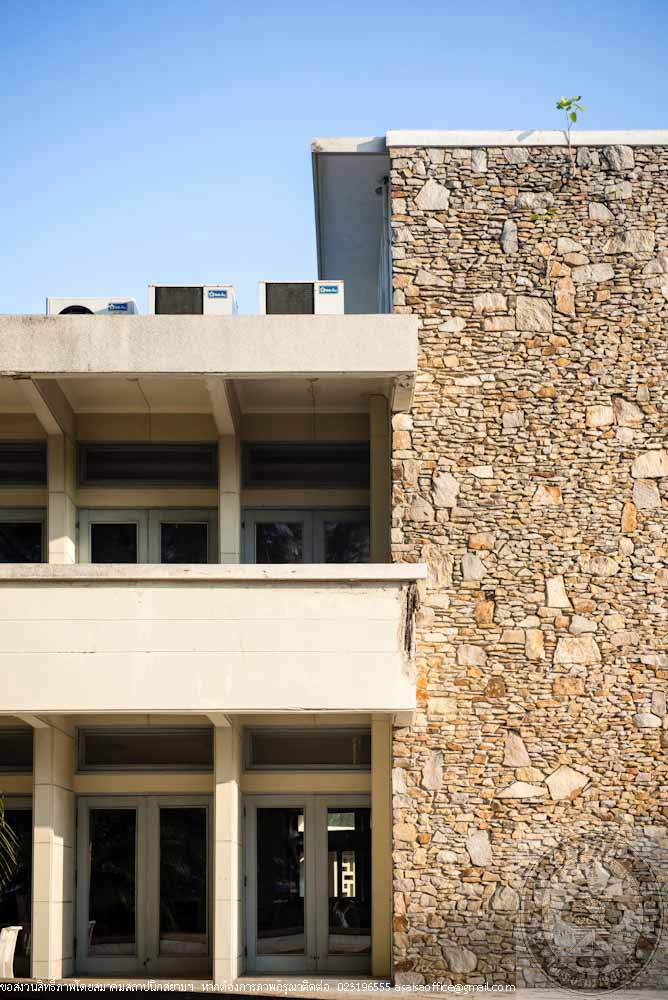
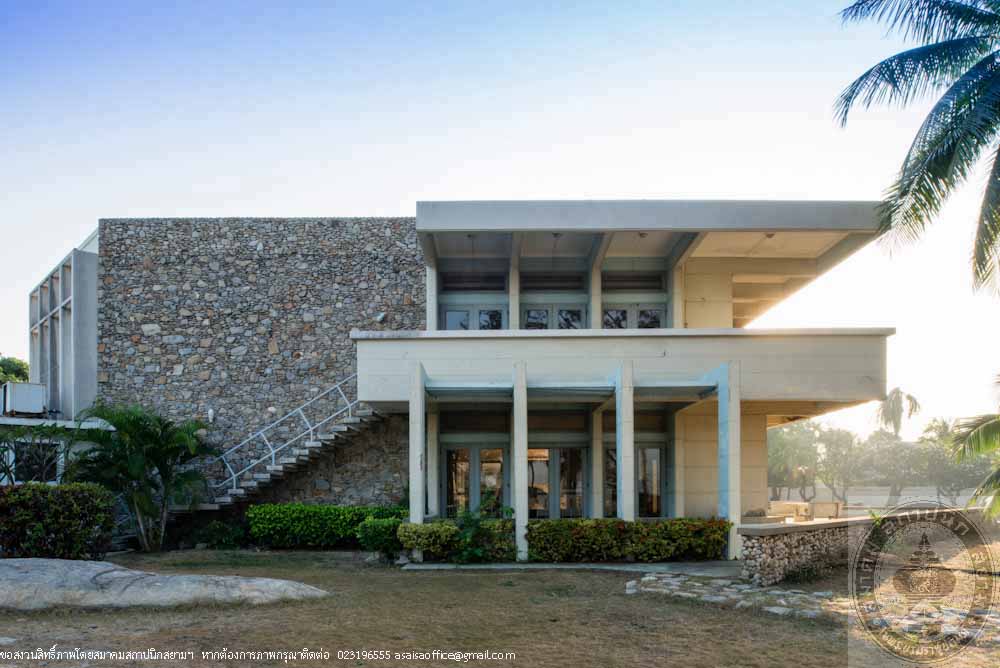
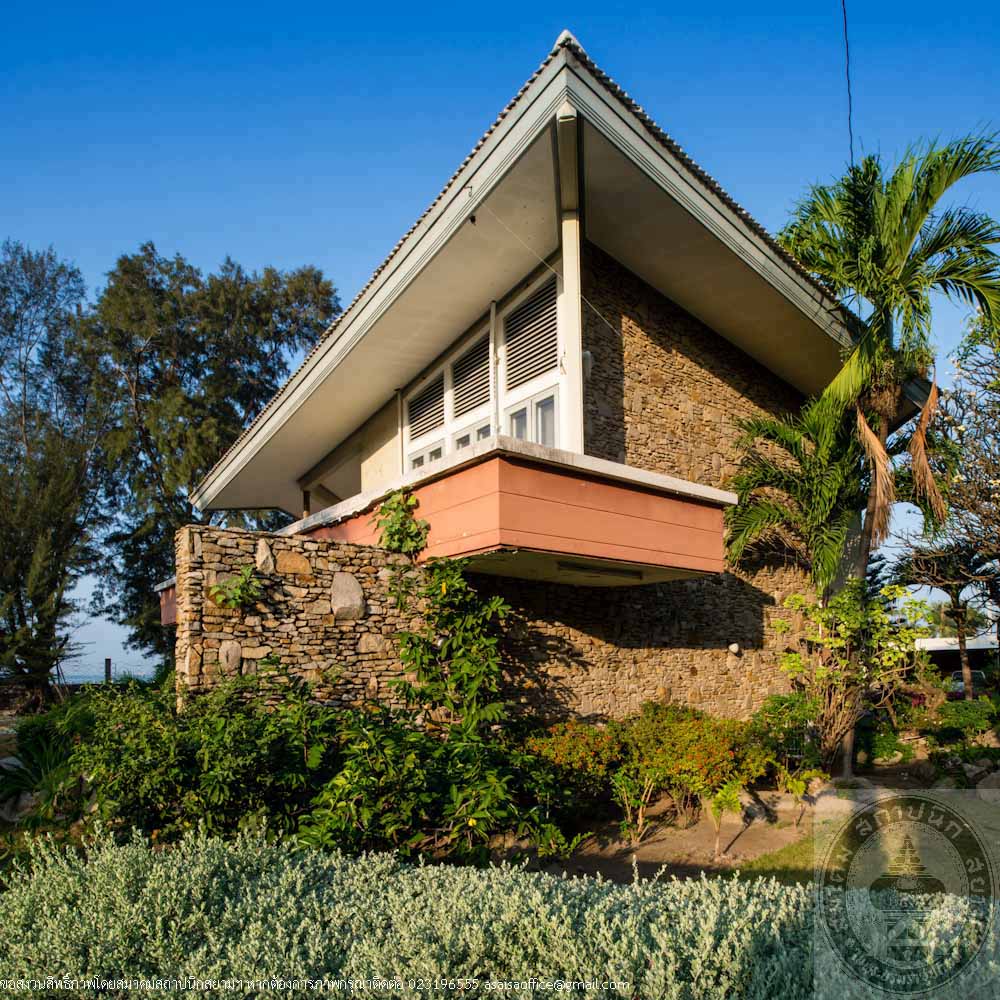
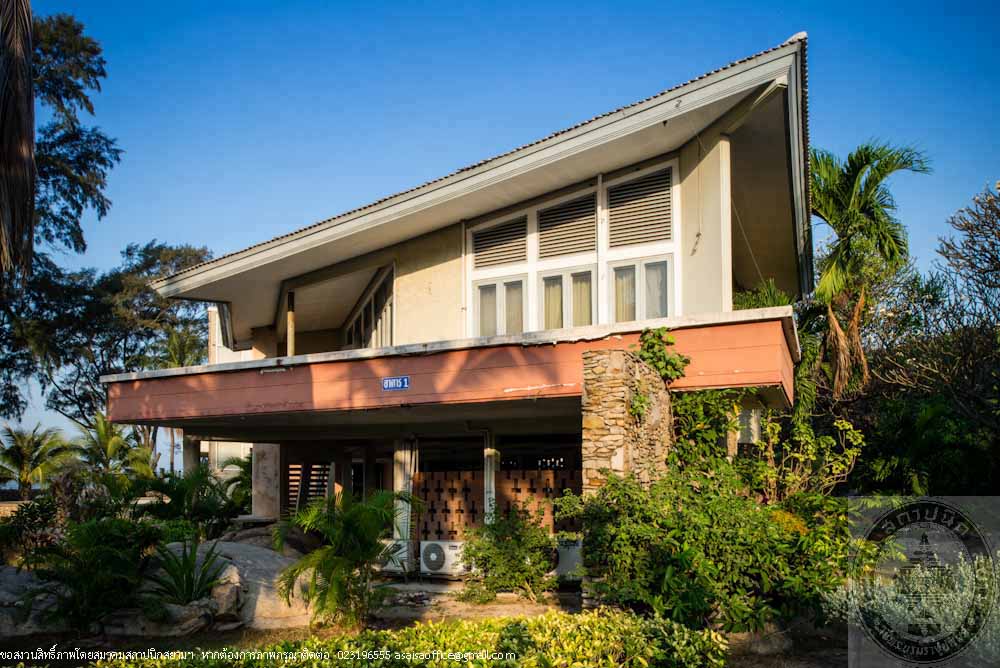
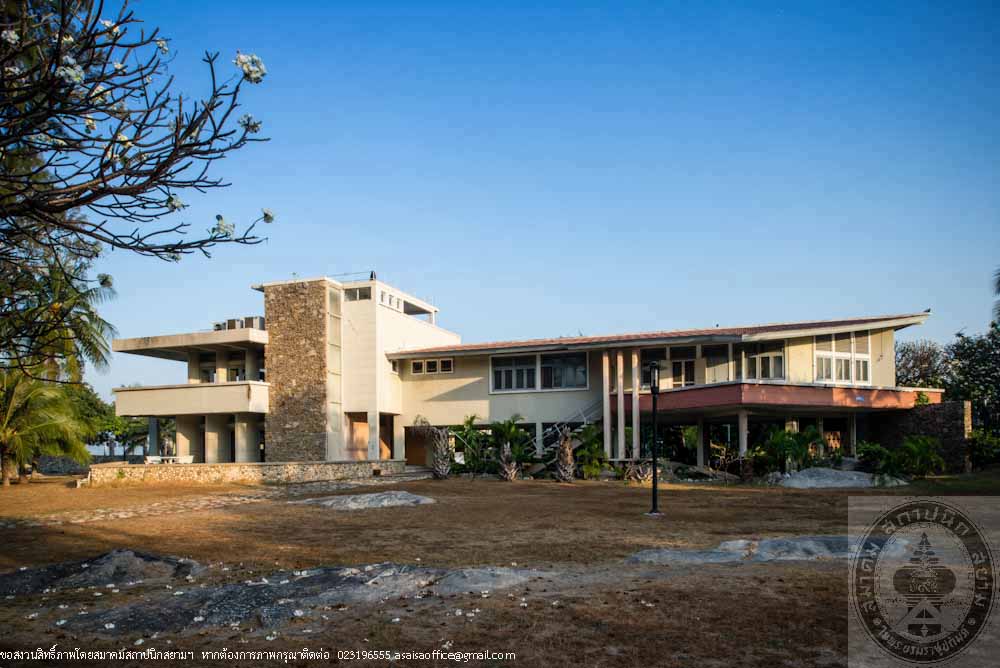
อาคารพิพิธภัณฑ์อู่เรือหลวงเฉลิมพระเกียรติ 84 พรรษา
อ่านเพิ่มเติม
อาคารพิพิธภัณฑ์อู่เรือหลวงเฉลิมพระเกียรติ 84 พรรษา
- ที่ตั้ง เลขที่ 2 ถนนอรุณอมรินทร์ แขวงศิริราช เขตบางกอกน้อย กรุงเทพมหานคร
- สถาปนิก/ผู้ออกแบบ ไม่ปรากฏหลักฐานชื่อผู้ออกแบบ
- ผู้ครอบครอง กรมอู่ทหารเรือ
- ปีที่สร้าง สมัยรัชกาลที่ 5
ประวัติ
อาคารพิพิธภัณฑ์อู่เรือหลวงเฉลิมพระเกียรติ 84 พรรษา ตั้งอยู่ในอาณาบริเวณพระนิเวศน์เดิมของพระบาทสมเด็จ พระพุทธยอดฟ้าจุฬาโลกมหาราช รัชกาลที่ 1 เมื่อครั้งทรงดำรงตำแหน่งเป็นสมเด็จเจ้าพระยามหากษัตริย์ศึก ในสมัยกรุงธนบุรีเป็นราชธานี ทรงย้ายนิวาสสถานจากบ้านอัมพวา สมุทรสงคราม มาสร้างจวนขึ้นใหม่ ณ บริเวณปากคลองมอญ ต่อมาได้ขยายพื้นที่ออกไปจนถึงอู่กำปั่นซึ่งอยู่ติดกับเขตวัดบางหว้าใหญ่ (วัดระฆังโฆสิตาราม) ครั้นเมื่อเสด็จขึ้นครองราชย์เป็นปฐมบรมกษัตริย์แห่งราชจักรีวงศ์ พระบาทสมเด็จพระพุทธยอดฟ้าจุฬาโลกมหาราชได้พระราชทานพื้นที่จวนเดิมให้เป็นวังที่ประทับของพระราชโอรสและพระราชวงศ์สืบแทนต่อมา จนกระทั่งเมื่อพระองค์เจ้ายุคันธร กรมหมื่นอนันตการฤทธิ์ เจ้านายองค์สุดท้ายซึ่งประทับ ณ พระนิเวศน์แห่งนี้ สิ้นพระชนม์ลงในปี พ.ศ. 2423 พระบาทสมเด็จพระจุลจอมเกล้าเจ้าอยู่หัว รัชกาลที่ 5 มิได้พระราชทานให้เจ้านายพระองค์ใดอีกต่อไป แต่พระราชทานให้แก่กรมทหารเรือ (กองทัพเรือในปัจจุบัน) เพื่อสร้างโรงงานกรมอู่หลวงและที่ทำการของกรมทหารเรือ พร้อมทั้งโปรดเกล้าฯ ให้สร้างอู่เรือไม้ขนาดใหญ่ขึ้นบริเวณข้างโรงหล่อด้านทิศใต้ของวัดระฆังโฆสิตาราม สำหรับซ่อมและสร้างเรือรบ โดยเสด็จพระราชดำเนินไปทรงเปิดอู่เรือหลวง เมื่อวันที่ 9 มกราคม พ.ศ. 2433อาคารพิพิธภัณฑ์อู่เรือหลวงเฉลิมพระเกียรติ 84 พรรษา เป็นอาคารหลังหนึ่งที่สร้างขึ้นในห้วงเวลานั้น สำหรับใช้ปฏิบัติงานในการกำกับและดูแลการซ่อมและสร้างเรือรบ ปรากฏหลักฐานใน พ.ศ. 2458 เป็นที่ทำการของกองสารวัตรช่าง ทำหน้าที่ตรวจสอบการชำรุดของเรือรบ เพื่อนำไปประเมินและวางแผนการซ่อมทำ และกองออกแบบ ทำหน้าที่ออกแบบการต่อเรือรบ หลังจากนั้นมีหน่วยงานหลายหน่วยงานในสังกัดกรมยุทธโยธาทหารเรือ (กรมอู่ทหารเรือในปัจจุบัน) ได้ผลัดเปลี่ยนเข้ามาใช้ จวบจน พ.ศ. 2512 เป็นที่ทำการของกองโรงงานเครื่องกล อู่ทหารเรือธนบุรี โดยส่วนปีกของอาคารทั้งสองด้านเป็นพื้นที่ซ่อมทำเครื่องยนต์ขนาดเล็กสำหรับเรือรบ และในเวลาต่อมาเป็นสถานที่ปฏิบัติงานของแผนกโรงงานเครื่องกล กองโรงงาน อู่ทหารเรือธนบุรี ต่อมาในปี พ.ศ. 2551 กรมอู่ทหารเรือจัดทำโครงการ “พิพิธภัณฑ์อู่เรือหลวงเฉลิมพระเกียรติ 84 พรรษา” และได้บูรณะและปรับปรุงอาคารเป็นพิพิธภัณฑ์ เพื่อเฉลิมพระเกียรติพระบาทสมเด็จพระเจ้าอยู่หัว เนื่องในโอกาสพระราชพิธีมหามงคลเฉลิมพระชนมพรรษา 7 รอบ วันที่ 5 ธันวาคม พ.ศ. 2554
อาคารพิพิธภัณฑ์อู่เรือหลวงเฉลิมพระเกียรติ 84 พรรษา มีลักษณะสถาปัตยกรรมแบบเรือนขนมปังขิง กว้าง 23 เมตร ยาว 31 เมตร สูง 2 ชั้น ชั้นล่างก่ออิฐถือปูน พื้นชั้นล่างเป็นกระเบื้อง ชั้นบนเป็นไม้ พื้นชั้นบนเป็นพื้นเป็นไม้สัก หลังคาทรงปั้นหยามุงด้วยกระเบื้องซีเมนต์รูปว่าวสีเทา เชิงชายประดับด้วยไม้ฉลุลวดชายน้ำ บันไดอยู่นอกอาคารด้านหน้า 2 ทาง และด้านหลัง 1 ทาง มุขด้านหน้าเป็นห้องโถงมีเพดานโค้ง จุดเด่นของอาคาร คือ หน้าจั่วด้านหน้าอาคารประดับเครื่องหมายและสัญลักษณ์ของกองทัพเรือ ใต้หน้าจั่วแกะสลักเป็นรูปเครื่องมือช่างต่าง ๆ เช่น เลื่อย ลูกดิ่ง ไม้บรรทัด ท่ามกลางลวดลายไม้ฉลุสวยงาม
อาคารพิพิธภัณฑ์อู่เรือหลวงเฉลิมพระเกียรติ 84 พรรษา แสดงให้เห็นถึงความตั้งใจขอกรมอู่ทหารเรือที่จะอนุรักษ์อาคารที่มีคุณค่าทางประวัติศาสตร์และสถาปัตยกรรมเพื่อให้สาธารณชนและอนุชนรุ่นหลังได้ชื่นชม อันจะก่อให้เกิดความภาคภูมิใจ ความรัก ความหวงแหนและมีจิตสำนึกในการรักษามรดกวัฒนธรรมของชาติ รวมทั้งได้เรียนรู้เรื่องราวทางประวัติศาสตร์ของพื้นที่และองค์ความรู้ที่จัดแสดงในพิพิธภัณฑ์ สำหรับการปรับปรุงฟื้นฟูอาคารใช้วิธีซ่อมแซมโครงสร้างอาคารให้มีความแข็งแรงคงทน รักษารูปแบบสถาปัตยกรรมดั้งเดิมไว้ เพิ่มมุขด้านหลังอาคารชั้นล่างสำหรับเป็นห้องจัดกิจกรรมทางวิชาการ เปลี่ยนหลังคาเป็นกระเบื้องว่าว และทาสีอาคาร ปรับพื้นที่ใช้สอยภายในและตกแต่งใหม่ จัดทำส่วนจัดแสดงนิทรรศการถาวร ซึ่งมีพิธีเปิดพิพิธภัณฑ์ เมื่อวันที่ 25 สิงหาคม พ.ศ. 2554 ปัจจุบัน พิพิธภัณฑ์อู่เรือหลวงเฉลิมพระเกียรติ 84 พรรษา เป็นศูนย์รวมในการเก็บรักษา อนุรักษ์ และจัดแสดงอุปกรณ์เครื่องมือเครื่องใช้ทางช่าง เครื่องจักรกล และเอกสารอันทรงคุณค่าที่เกี่ยวข้องกับการซ่อมสร้างเรือ เป็นแหล่งเรียนรู้พระมหากรุณาธิคุณและพระปรีชาสามารถของพระบาทสมเด็จพระเจ้าอยู่หัวด้านการต่อเรือ การสร้างเรือรบตามแนวพระราชดำริ รวมทั้งเป็นศูนย์รวมองค์ความรู้ด้านการต่อเรือรบ เรือพระที่นั่ง งานอู่เรือ และอุตสาหกรรมต่อเรือของประเทศ ตลอดจนผลงานทางช่างของกรมอู่ทหารเรือ เปิดให้นักเรียน นิสิต นักศึกษา และประชาชนทั่วไปเข้าชมโดยไม่เก็บค่าเข้าชมพิพิธภัณฑ์อู่เรือหลวงเฉลิมพระเกียรติ 84 พรรษา เป็นอาคารเพียงหลังเดียวในส่วนราชการกองทัพเรือในอาณาบริเวณพระนิเวศน์เดิมของรัชกาลที่ 1 ที่ยังคงสภาพอยู่ถึงปัจจุบันและได้รับการอนุรักษ์เพื่อให้สาธารณชนได้ศึกษาและชื่นชมความงดงามของศิลปะสถาปัตยกรรมของชาติ
The Royal Thai Dockyard Museum
- Location 2 Arun-amarin Road, Siriraj, Bangkoknoi, Bangkok
- Architect/ Designer Unknown
- Owner Naval Dockyard Department
- Year Built The reign of King Rama V
History
The Royal Thai Dockyard Museum in honor of His Majesty the King’s 84th Birthday is located inside the old palace compound of King Buddha Yodfa Chulalok the Great (Rama I) while still holding the title of Chao Phraya Maha Kasatsuek during the time Thonburi was the capital city of Siam. He moved from Amphawa, Samutsongkram to build his new residence on the mouth of the Mon canal. It was later expanded towards the dockyard right next to Wat Bang Wa Yai (Wat Rakang Kositaram.) When he ascended to the throne as the first monarch of the reigning house of Chakri, King Buddha Yodfa Chulalok the Great gave his old palace area and built a new palace for his son which was inherited within his family until Phra Ong Chao Yukhanthorn Krommuen Anantakarnriti, the last royalty to reside at this palace, passed away in 1880. King Chulalongkorn (Rama V) did not give the palace to any other royalties but gave it up to the Royal Dockyard (Naval Dockyard Department at present) to establish dockyard plant and the Royal Dockyard office as well as building a large wooden dockyard in the area next to the foundry on the southern side of Wat Rakang Kositaram to be ship repair and warship building facilities. The King officially opened the Royal Dockyard on January 9, 1891. The Royal Thai Dockyard Museum building in honor of H.M. the King’s 84th Birthday was one of the structures built within that period to house a unit that operate and manage the ship repair and building. According to the evidence from 1915, the building once housed the Engineer Inspector Unit in charge of inspecting the damages of warships, to evaluate and plan the repair and the Design Unit that design warship. After that, many other departments under the Royal Dockyard Department took turn occupying the building until 1969 when it became an office of Mechanical Engineer Factory Unit of Thonburi Naval Shipyard. Both wings of the building became the warship’s small engine repair shops and was later occupied by the Mechanical Engineer Factory, Factory Division of Thonburi Naval Shipyard. In 2008, the Department of the Naval Shipyard initiated the projects “The Royal Thai Dockyard Museum in honor of H.M. the King’s 84th Birthday” and has restored the building into the museum in commemorations of the celebration on the auspicious occasion of H.M. the King’s 7th cycle Birthday on December 5, 2011
The building of the Royal Thai Dockyard Museum in honor of H.M. the King’s 84th Birthday was built of gingerbread styled architecture. First floor of the building was brick masonry with tile floor while the second floor was wood structure with teak wood flooring. Hip roof covered with grey kite-shaped tiles Perforated wood panels covering the side of roof eaves. There were two sets of stairs in the front of the building and one in the back. The front porch with entry hall and vaulted ceiling. The outstanding feature of the building is the navy seal on the front gable. Underneath the gable featured carvings of various hand tools such as saw, plummet and ruler among charming perforated wood panels.
Royal Thai Dockyard Museum buildings demonstrated the intent of the Naval Dockyard Department to preserve buildings with historical and architectural values for the people of the next generation. It was believed that the sense of history can contribute to community pride, affection, sense of ownership and could lead to the urge to help preserve the cultural heritage of the nation. To get to know the history of the area and learn from the exhibits displayed in the museum. The restoration works included structural repairs and strengthening while maintaining its original architecture. A porch was added in the back of the building on the first floor to accommodate academic activities. Old roofing was replaced with kite shaped tile. New paint. The building’s interior received an alteration and a new décor to create permanent exhibition space. The opening ceremony of the museum took place on August 25, 2013. Today, the Royal Thai Dockyard Museum in honor of H.M. the King’s 84th Birthday is the center for preservation and exhibition of technical tools, machines and valuable documents related to boat repair and building. Parts of the displays were to educate visitor of the King’s grace and wisdom in boat building, warship building under the Royal Initiative of His Majesty the King as well as being the center of knowledge and techniques in building warship, royal barge, dockyard works and the country’s boat building industry and the engineering work of the Naval Dockyard Department. The museum is open to students and general public free of charge. The Royal Thai Dockyard Museum in honor of H.M. the King’s 84th Birthday was the only naval official building located at the original site of King Rama I residential compound that still stand today. The well-preserved building encouraged the people to learn and appreciate the beauty of arts and architecture of the nation.
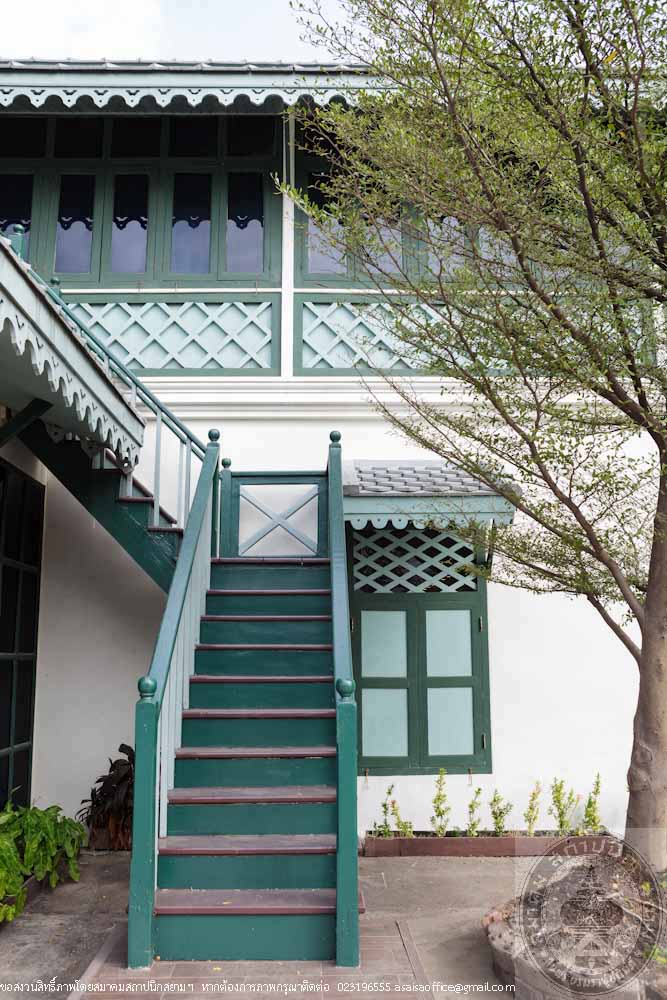
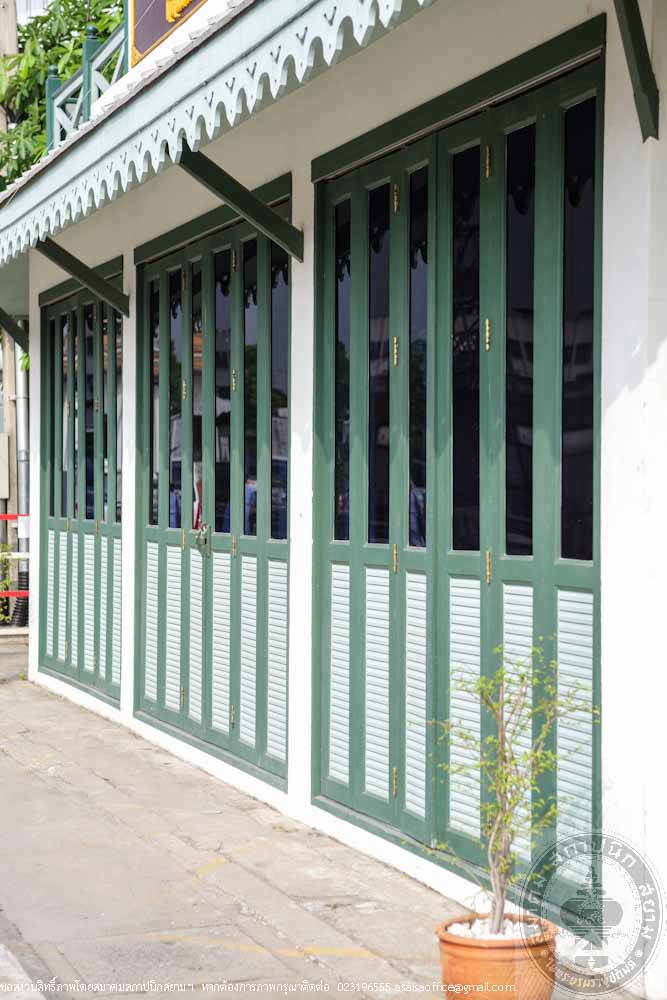
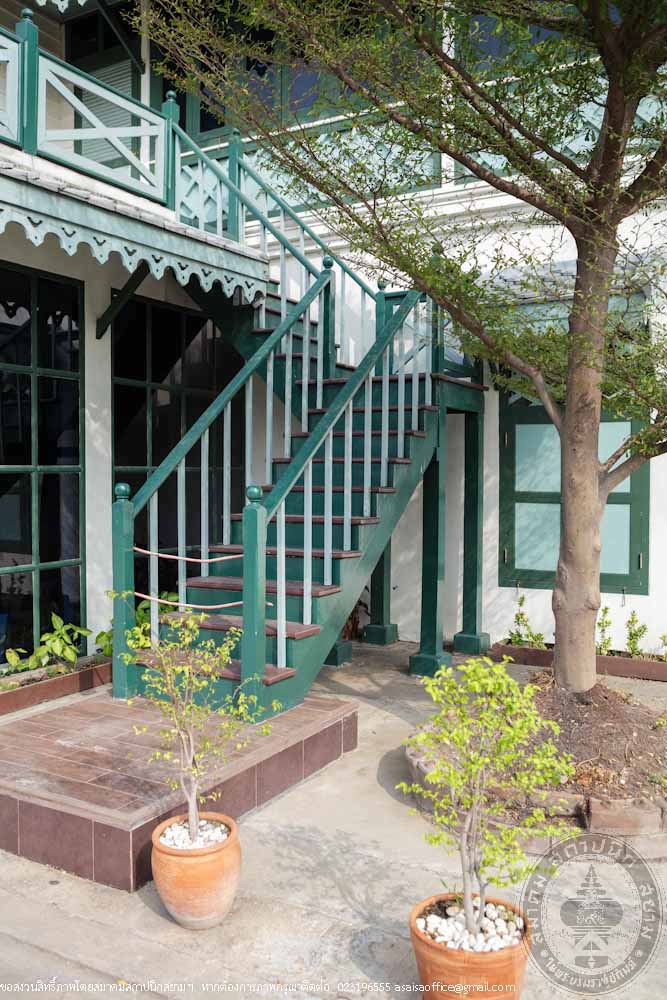
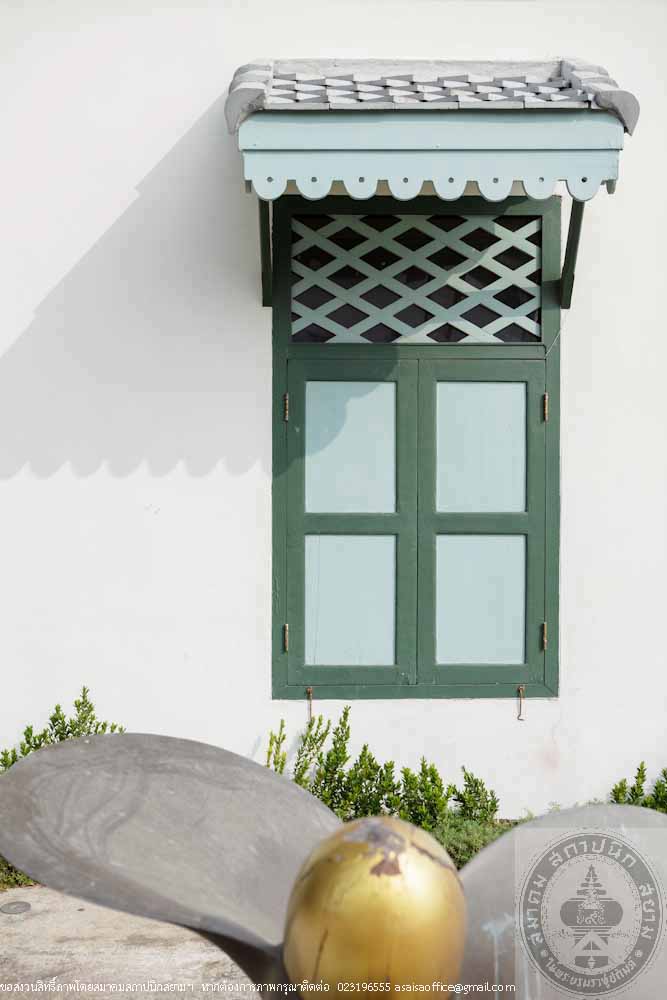
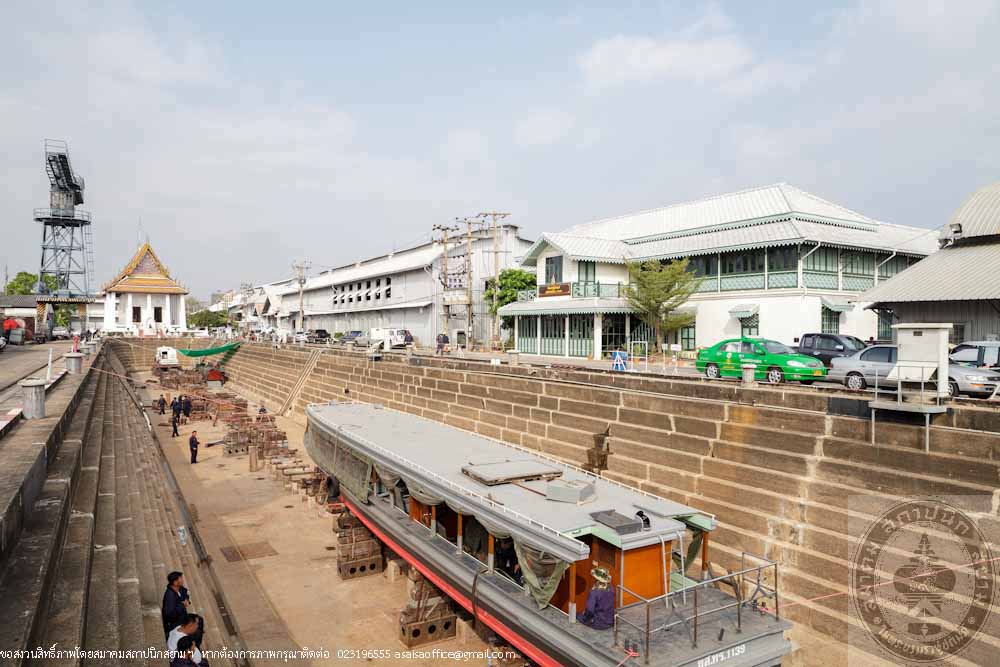
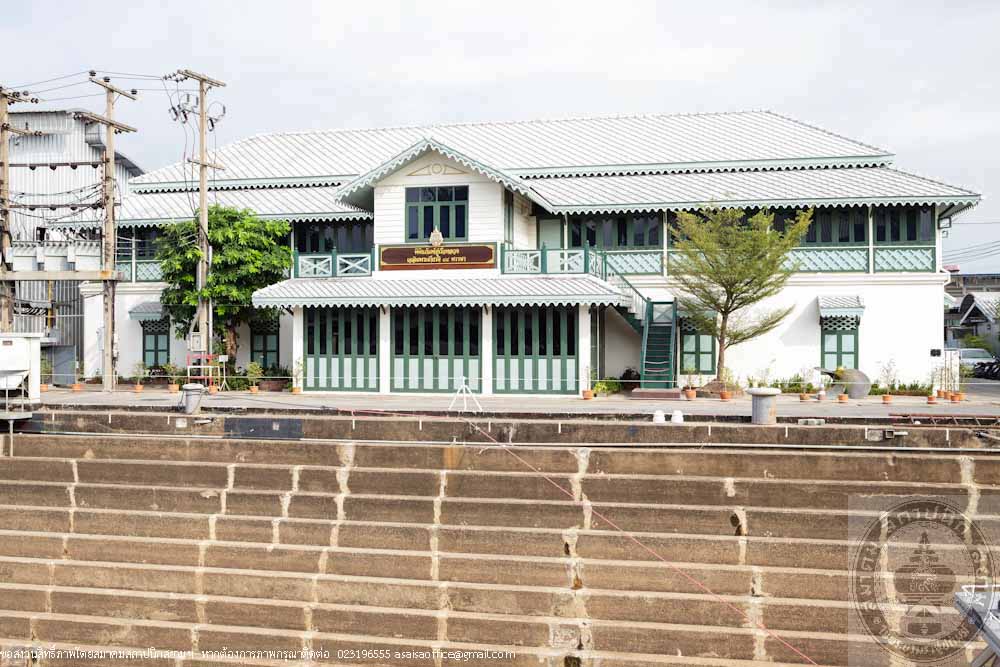
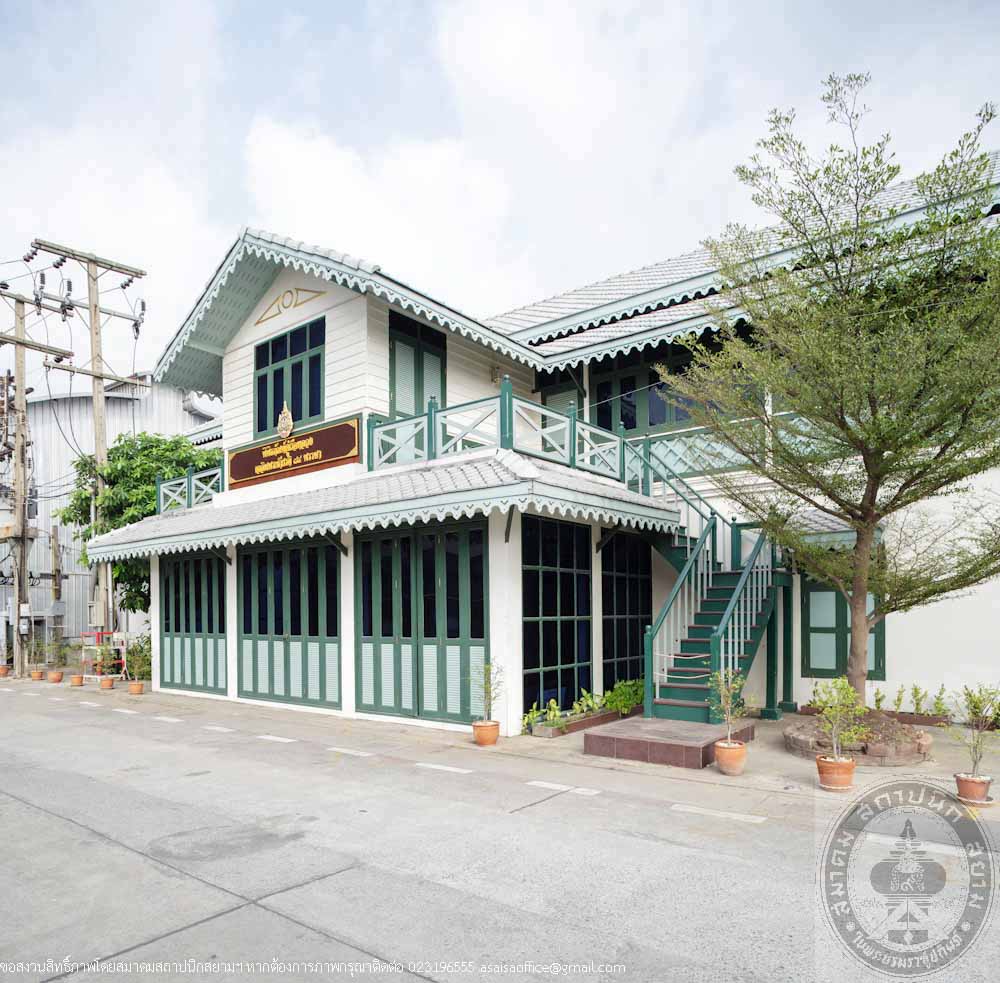
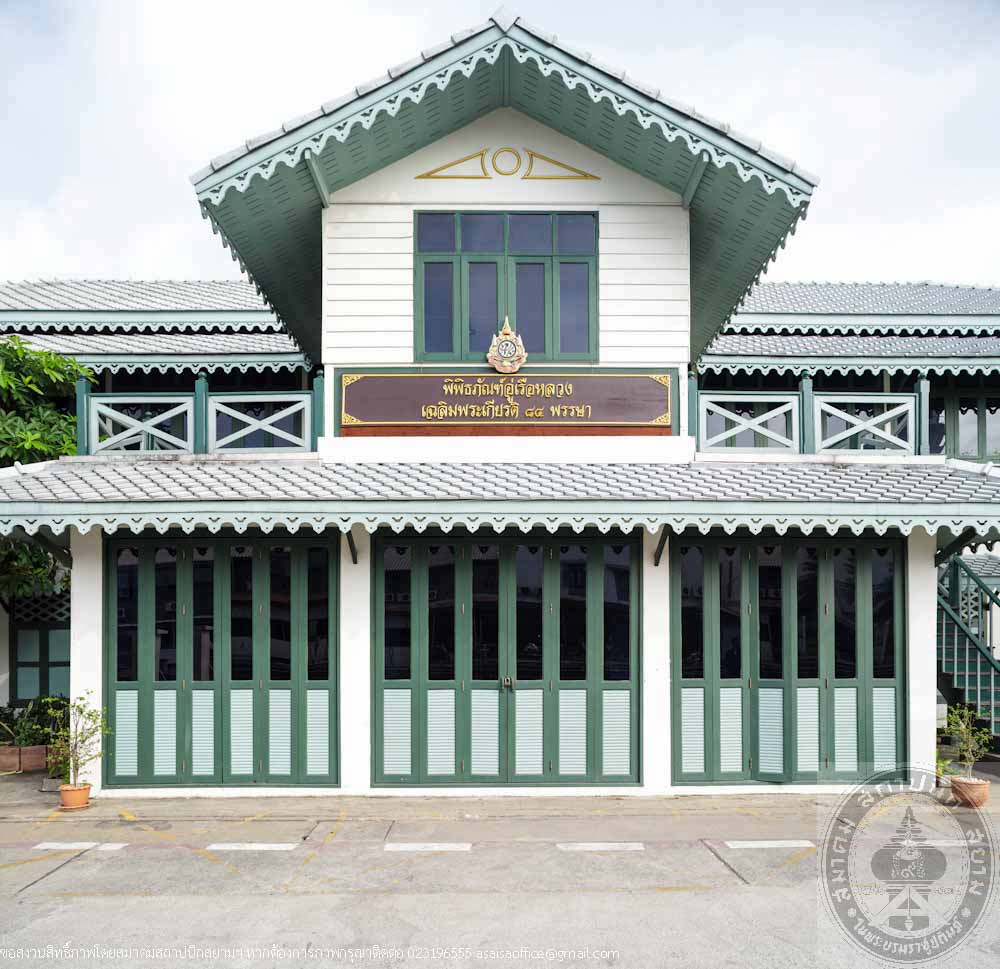
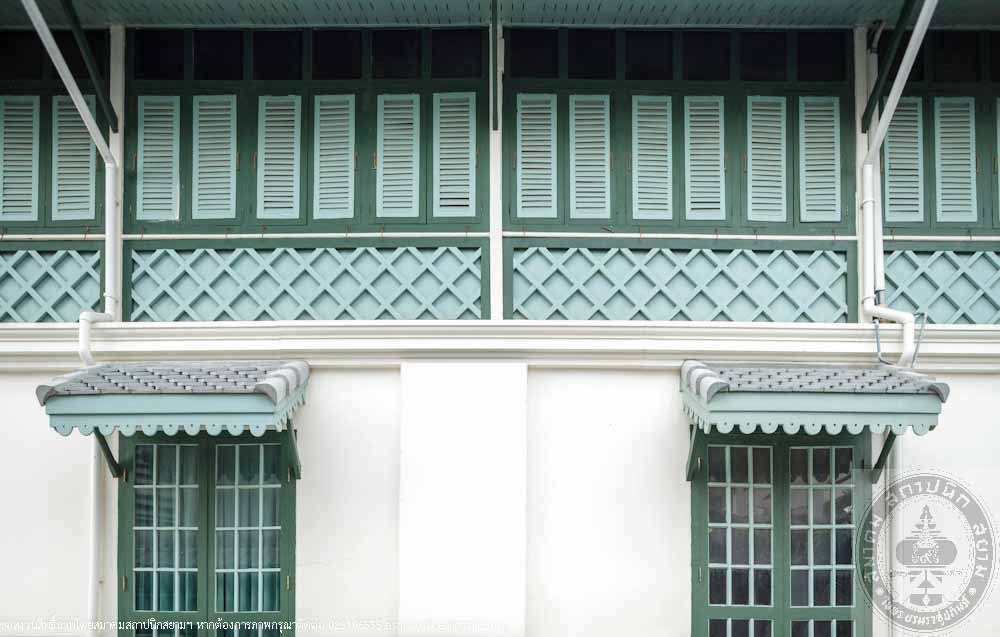
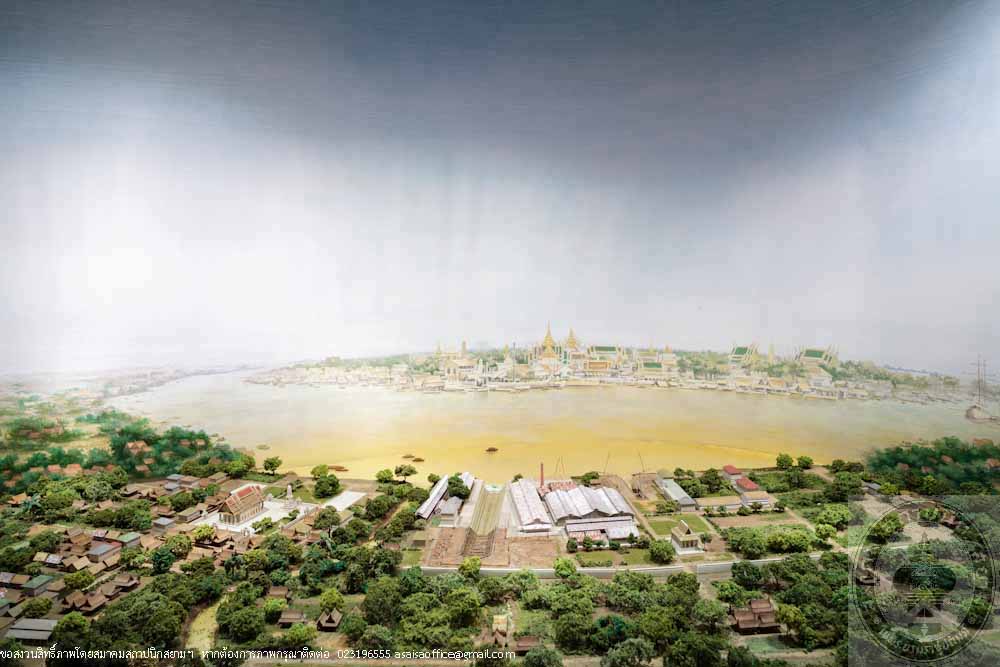
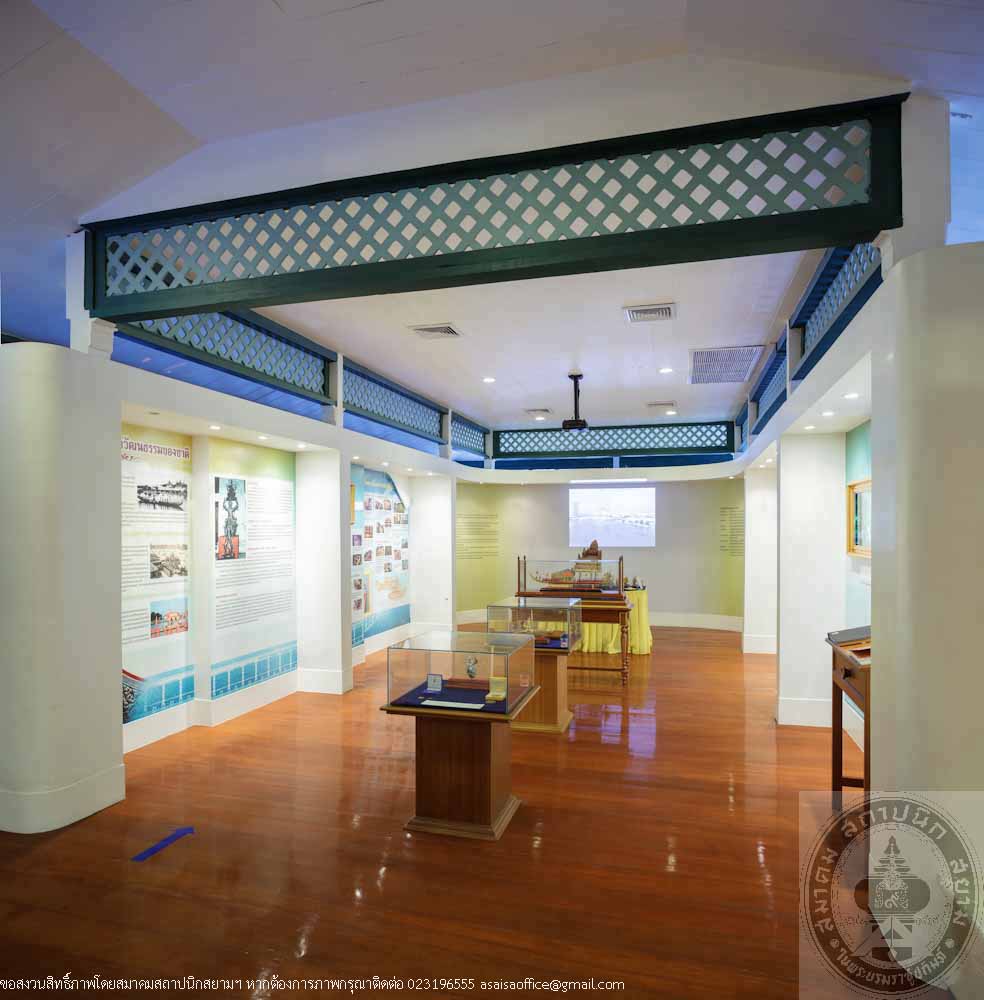
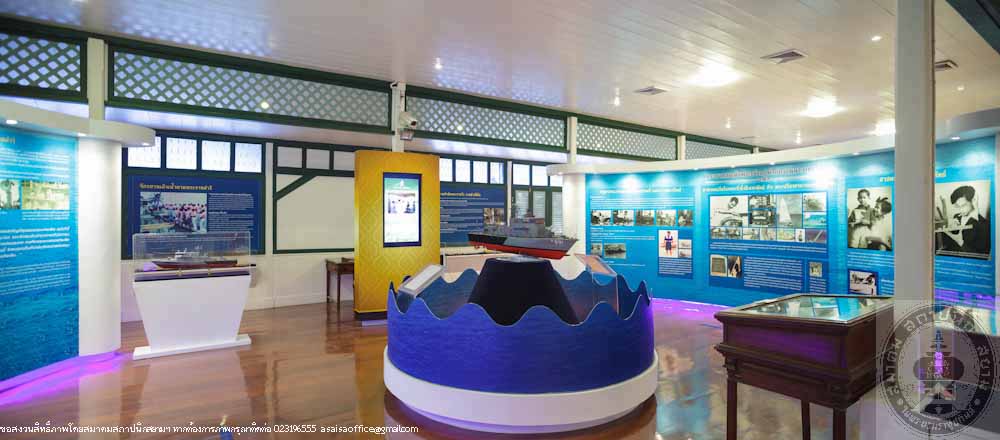
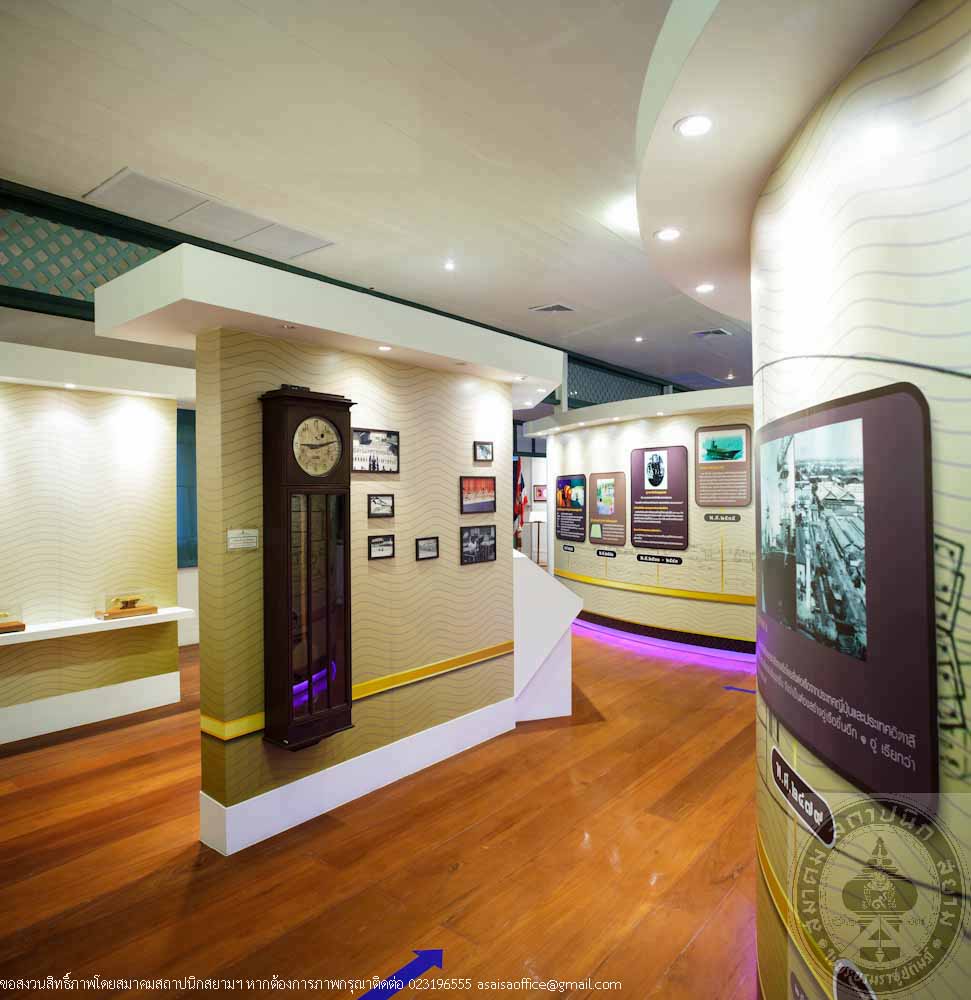
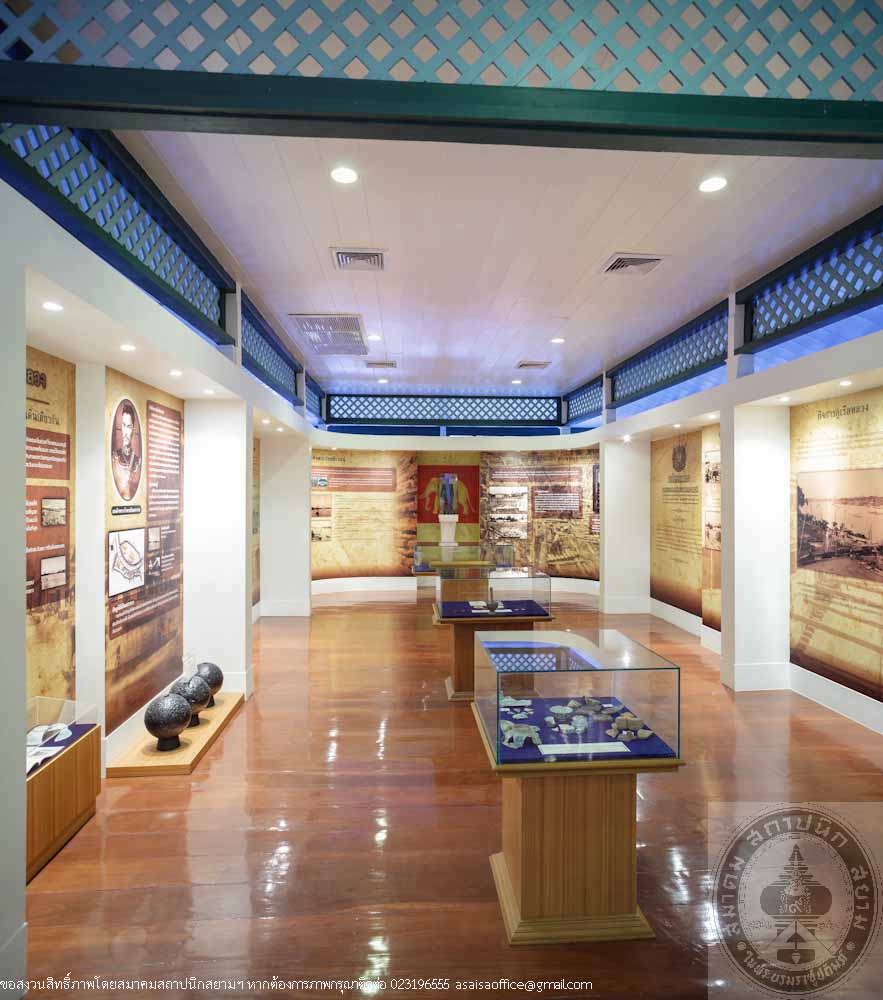
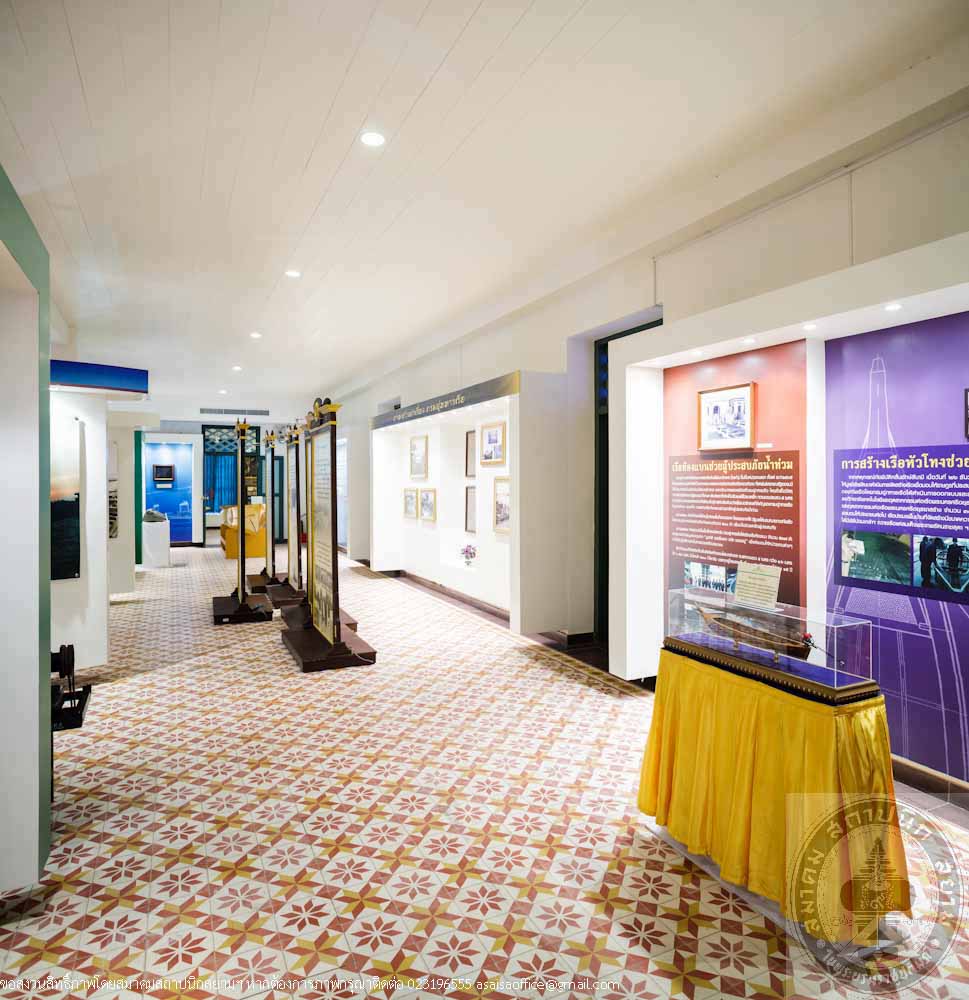
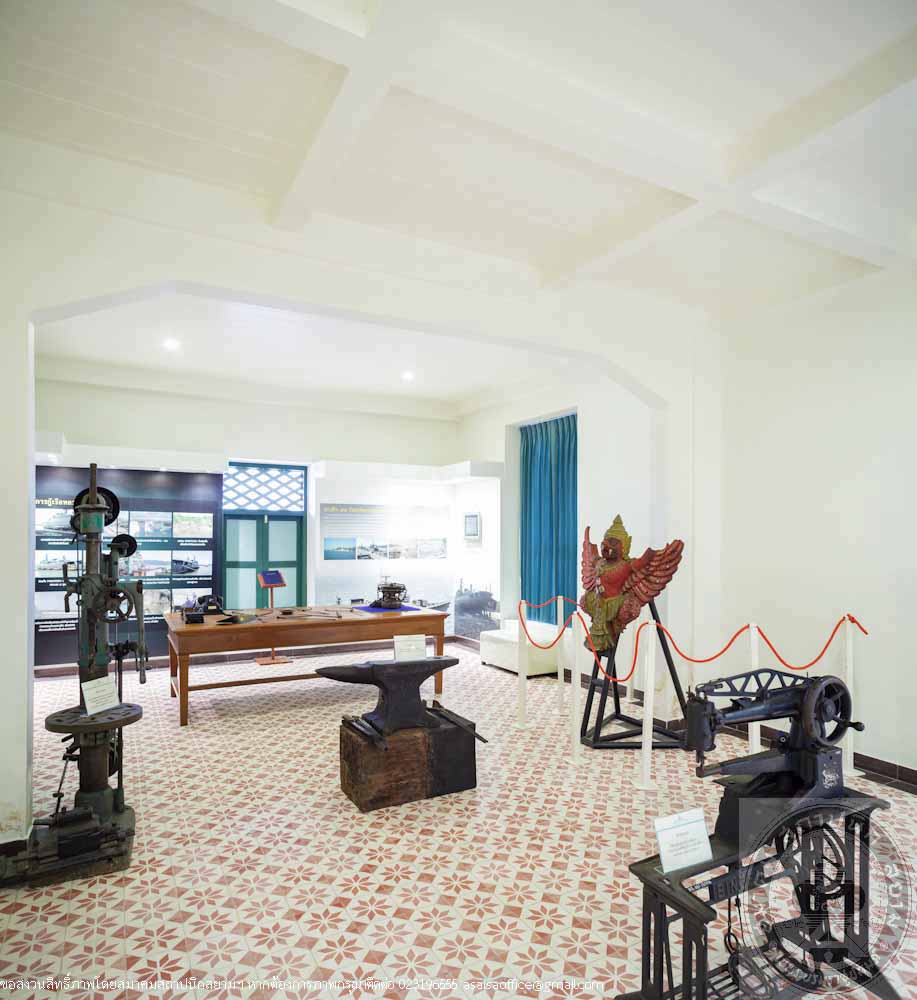
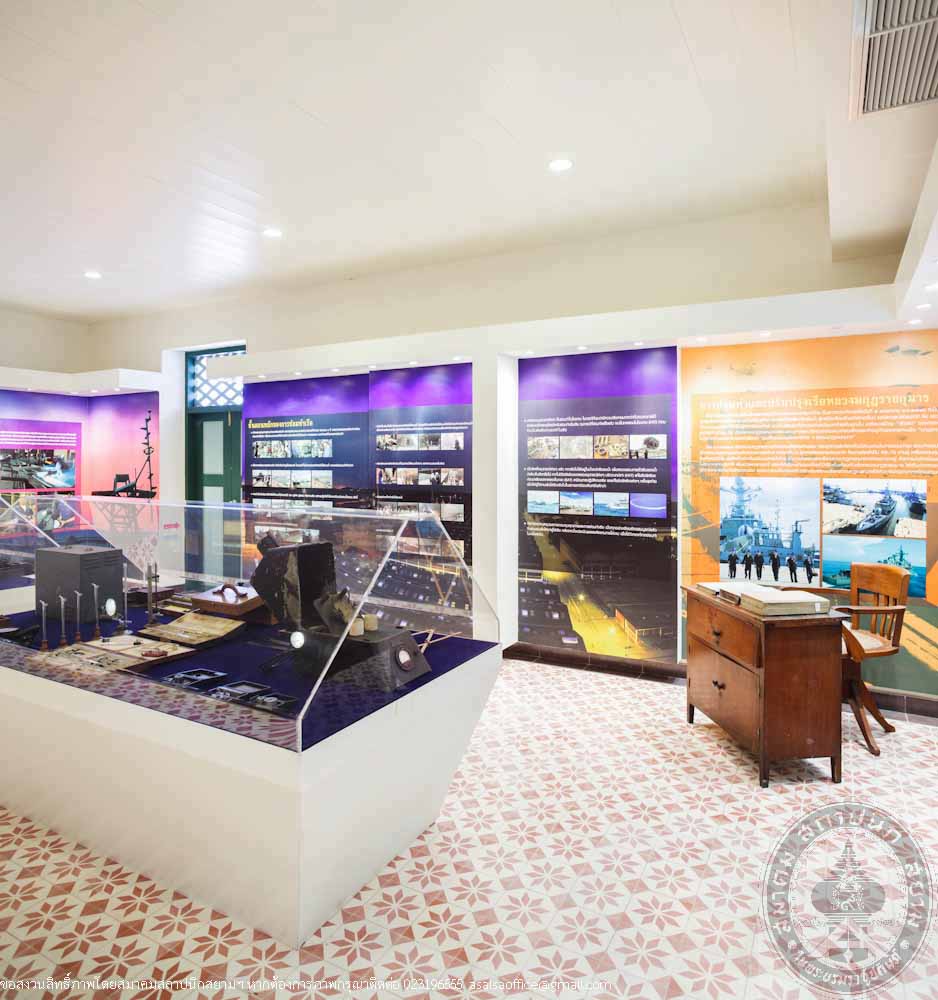
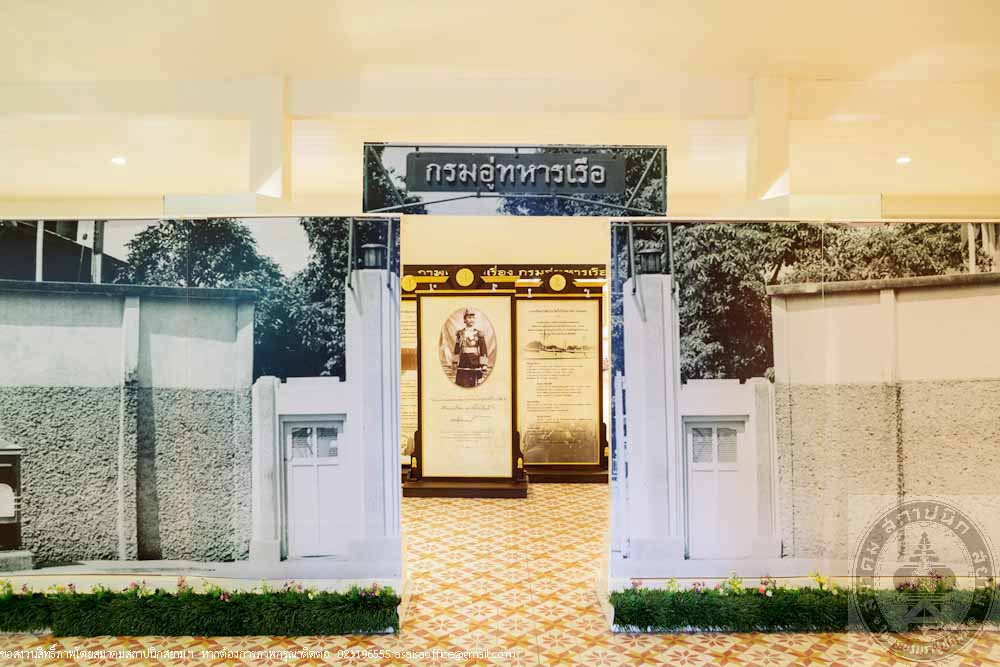
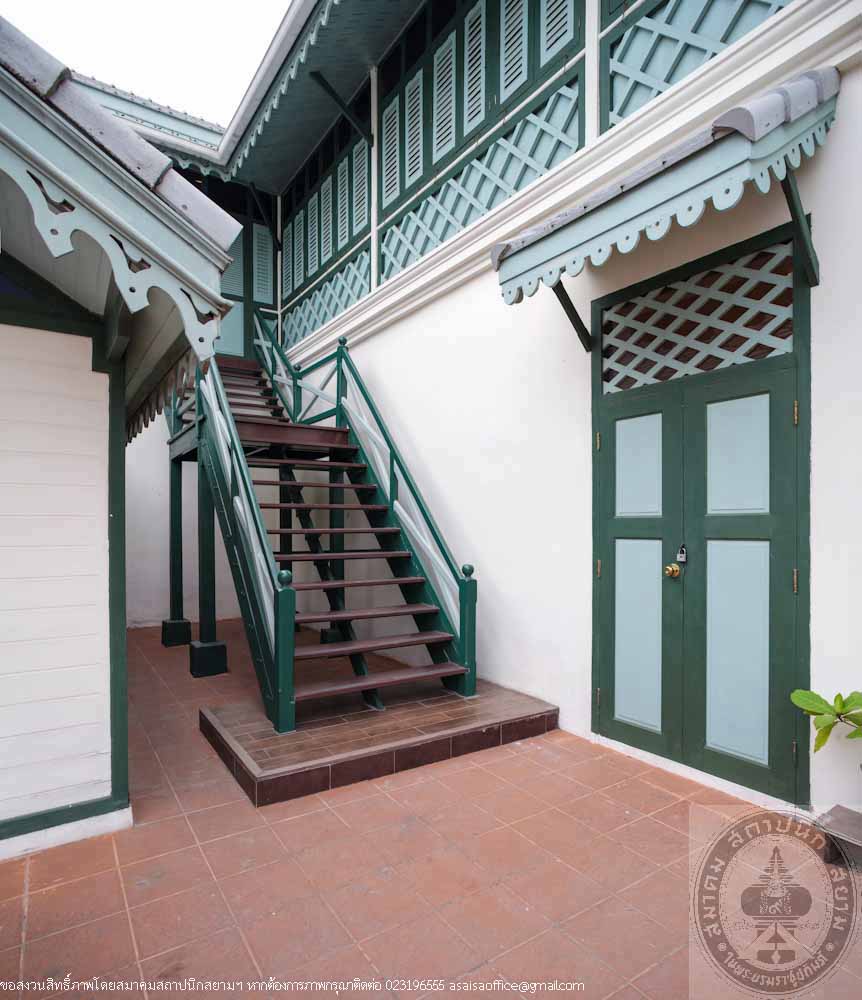
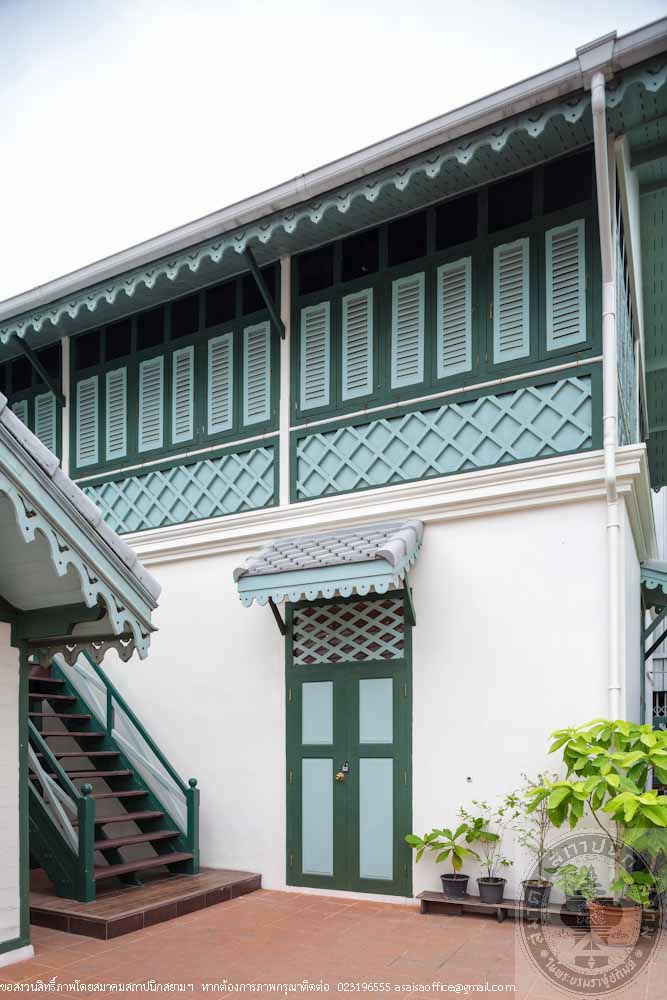
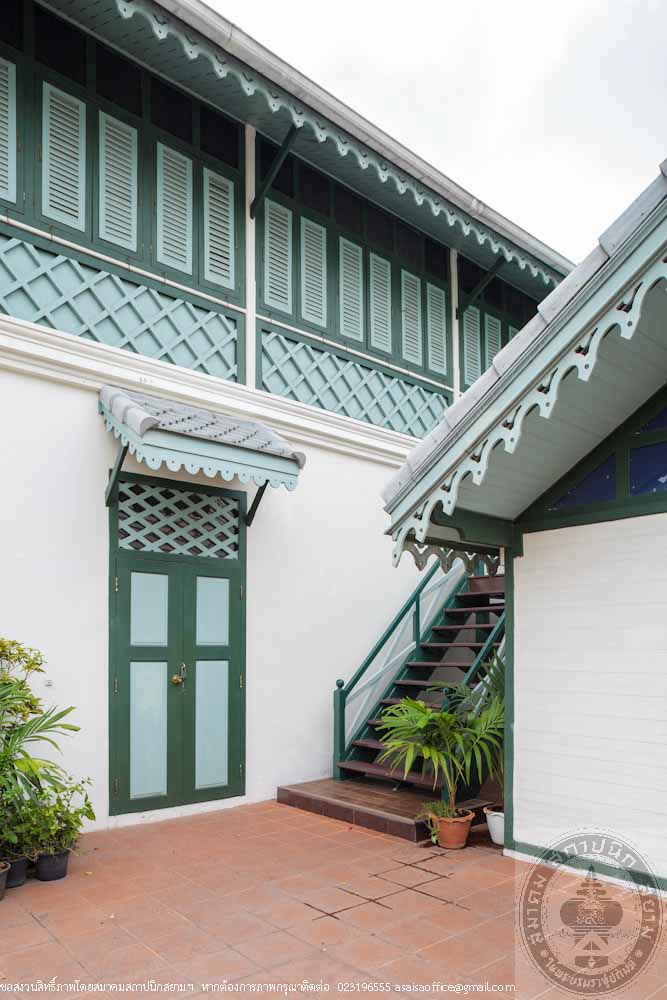
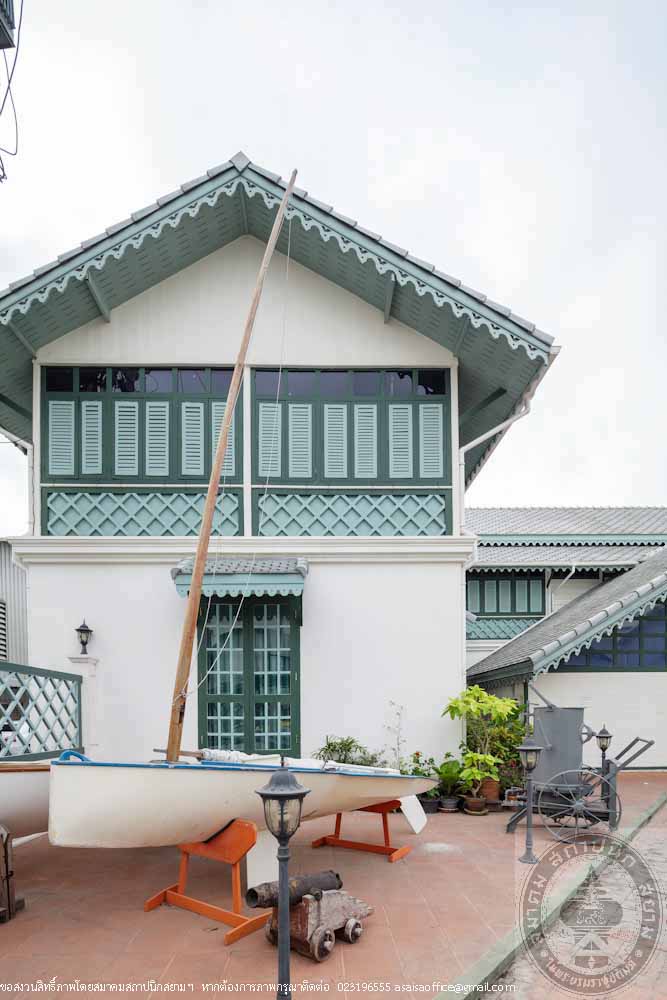
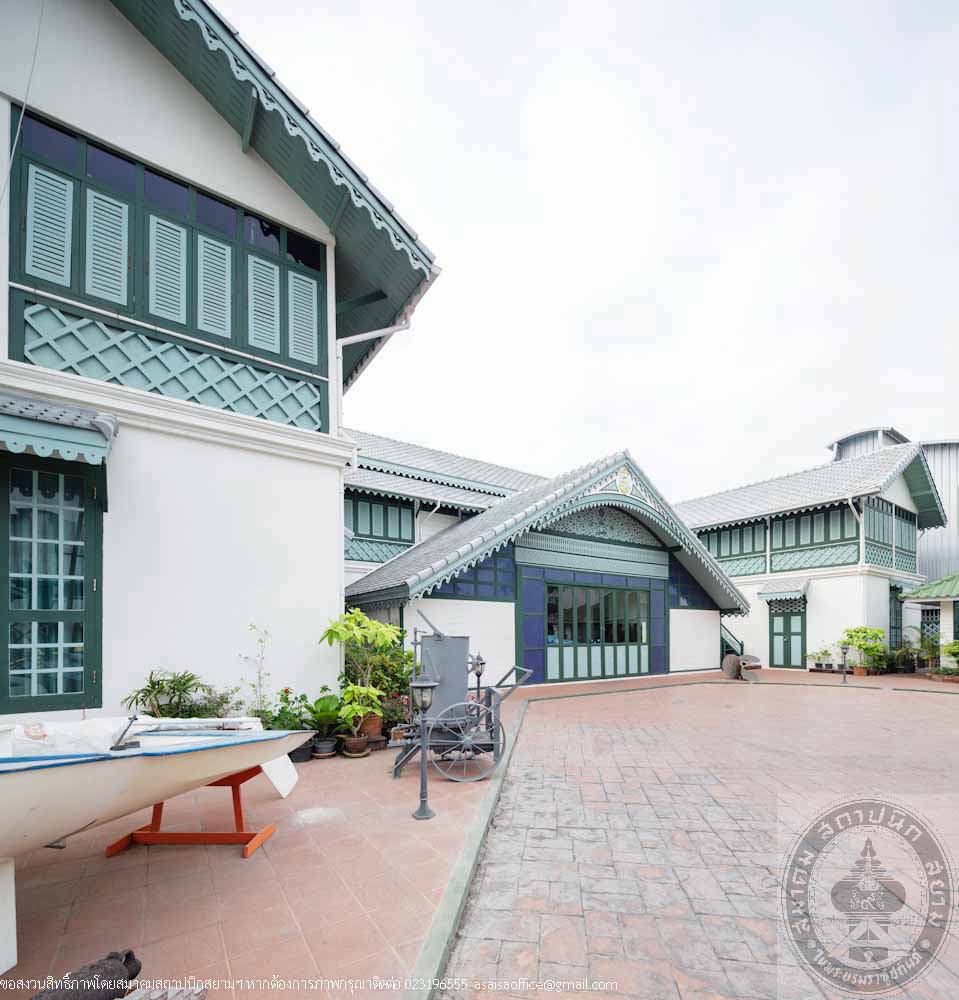
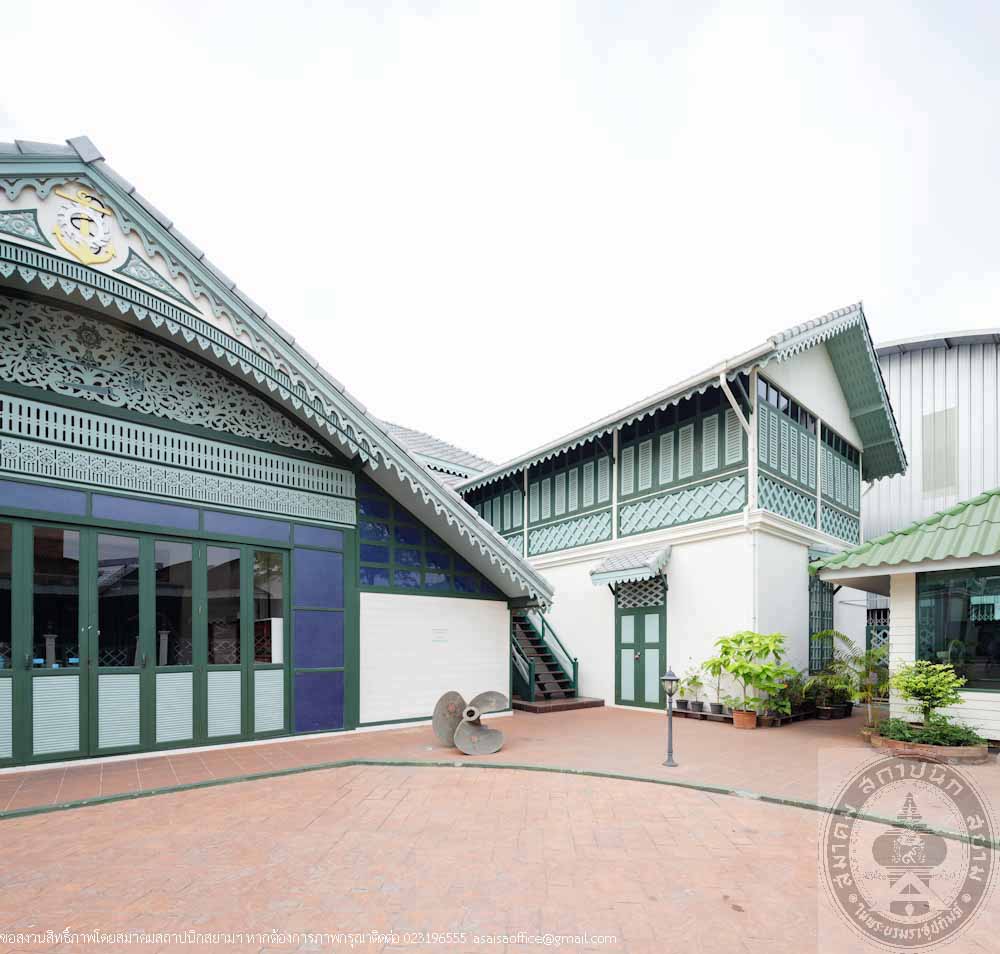
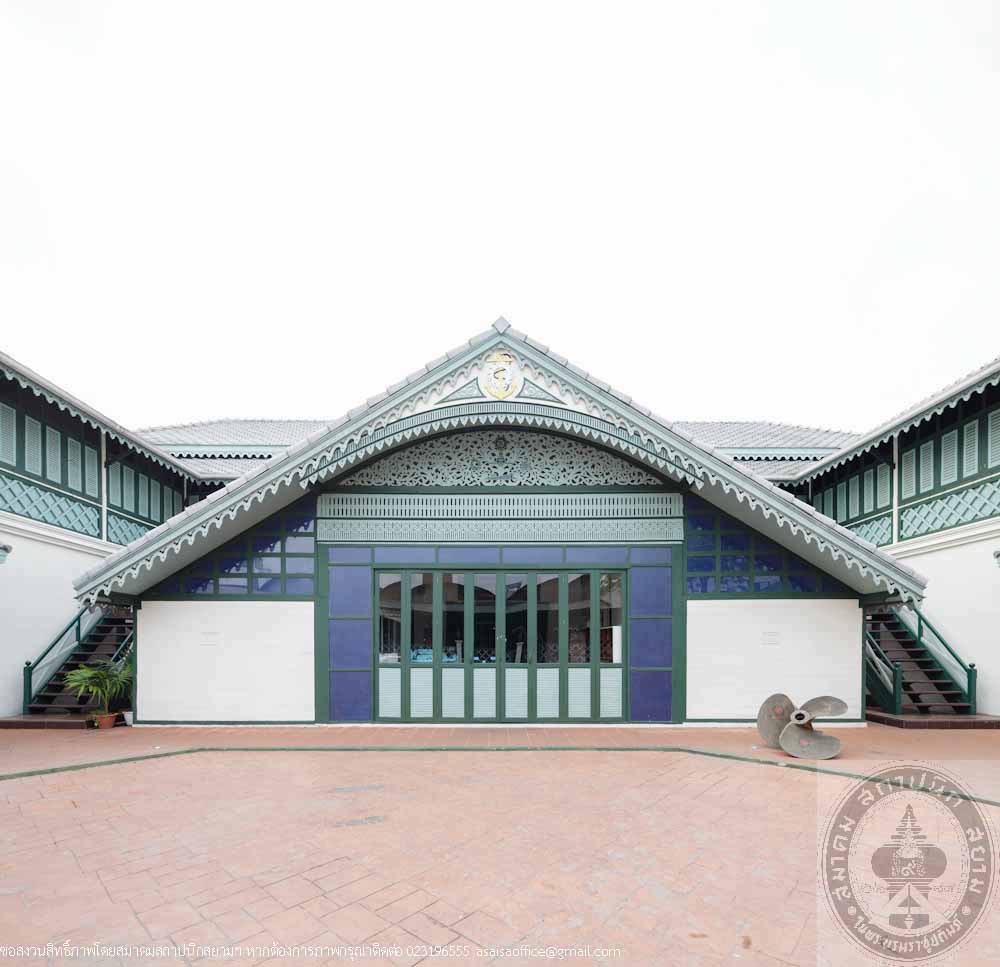
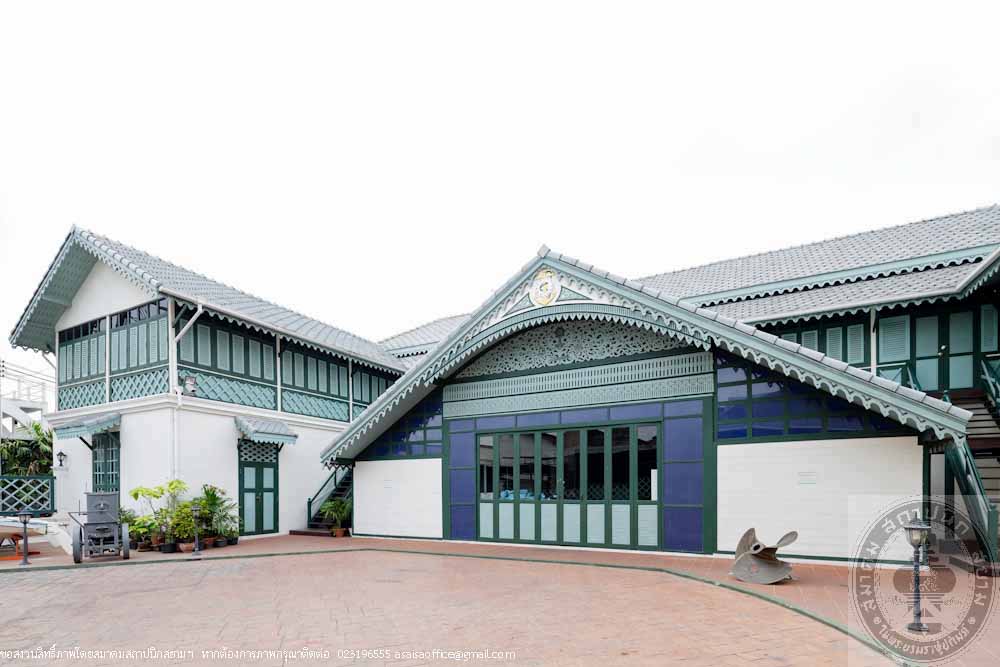
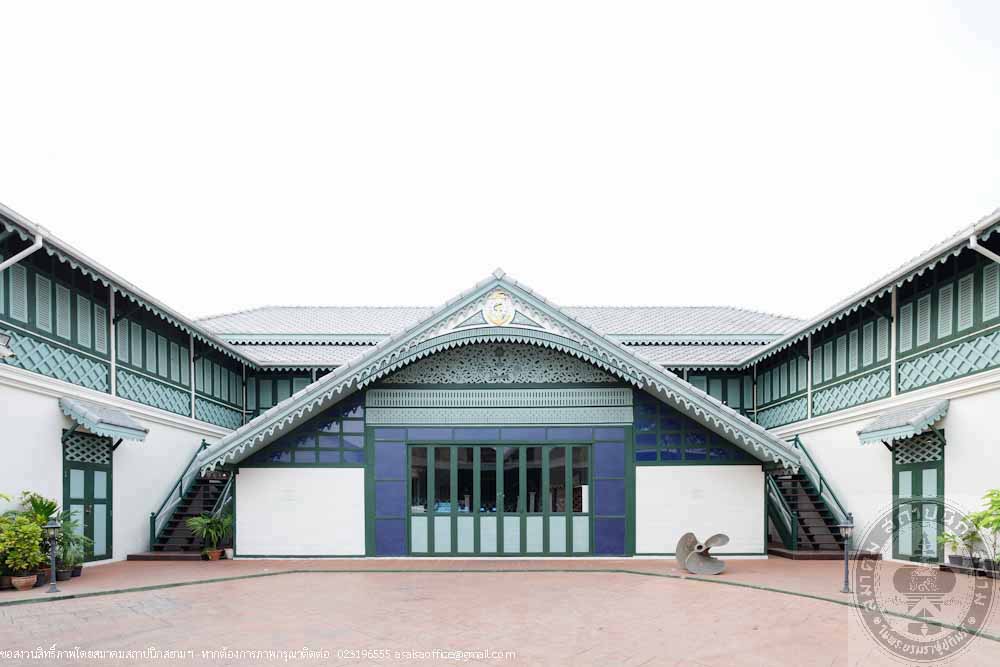
พิพิธภัณฑ์แห่งการเรียนรู้การประปาไทย
อ่านเพิ่มเติม
พิพิธภัณฑ์แห่งการเรียนรู้การประปาไทย
- ที่ตั้ง เลขที่ 220 ถนนพระรามที่ 6 แขวงสามเสนใน เขตพญาไท กรุงเทพมหานคร
- สถาปนิก/ผู้ออกแบบ ที่สูบน้ำ พ.ศ. 2457 และอาคารที่ขังน้ำบริสุทธิ์ – บริษัท ยี.กลูเซอร์ ประเทศอิตาลี โรงเกรอะน้ำ ถังพักน้ำ และโรงกรองน้ำ 1 – บริษัท ยูไนเต็ด อินยีเนีย ประเทศอังกฤษ
- ผู้ครอบครอง การประปานครหลวง
- ปีที่สร้าง พ.ศ. 2452 – พ.ศ. 2473
ประวัติ
โรงกรองน้ำสามเสนเป็นโรงงานผลิตน้ำแห่งแรกของประเทศไทย มีจุดเริ่มต้นมาจากพระมหากรุณาธิคุณของพระบาทสมเด็จพระจุลจอมเกล้าเจ้าอยู่หัว รัชกาลที่ 5 ผู้ทรงมีวิสัยทัศน์อันยาวไกล พระองค์ทรงตระหนักว่าน้ำสะอาดมีความสำคัญต่อสุขอนามัยของพสกนิกร จึงได้มีพระบรมราชโองการดำรัสเหนือเกล้าฯ ประกาศกำหนดจัดการประปาและเริ่มก่อสร้างในปี พ.ศ. 2452 ให้จัดทำน้ำบริโภค โดยขุดคลองส่งน้ำจากบริเวณคลองเชียงรากมาถึงคลองสามเสน และตั้งโรงกรองน้ำขึ้นที่สามเสน ภายใต้ความรับผิดชอบของกรมศุขาภิบาล ซึ่งการก่อสร้างมาแล้วเสร็จในรัชสมัยพระบาทสมเด็จพระมงกุฎเกล้าเจ้าอยู่หัว รัชกาลที่ 6 และพระองค์ทรงเสด็จเป็นประธานในพระราชพิธีเปิดกิจการและเริ่มใช้งานครั้งแรกเมื่อวันที่ 14 พฤศจิกายน พ.ศ. 2457 ในนาม“ประปากรุงเทพฯ” สังกัดกรมช่างสุขาภิบาล กระทรวงนครบาล ต่อมาภายหลังกรมช่างสุขาภิบาลได้เปลี่ยนชื่อเป็นกรมโยธาเทศบาล และกระทรวงนครบาลได้เปลี่ยนชื่อเป็นกระทรวงมหาดไทย ต่อมาเมื่อปี พ.ศ. 2482 การประปากรุงเทพฯ ได้โอนไปสังกัดเทศบาลนครกรุงเทพฯ และโอนกลับมากรมโยธาเทศบาล เมื่อปี พ.ศ. 2495 และโอนไปรวมเป็นการประปานครหลวงเมื่อวันที่ 16 สิงหาคม พ.ศ. 2510 โดยการประปานครหลวงได้พิจารณาอนุรักษ์กลุ่มอาคารเดิมที่ใช้ในกระบวนการผลิตน้ำของโรงกรองน้ำสามเสน ที่ก่อสร้างขึ้นในสมัยรัชกาลที่ 5 และรัชกาลที่ 6 ซึ่งปัจจุบันได้ยกเลิกการใช้งานไปแล้ว ไว้เป็นกลุ่มอาคารอนุรักษ์เพื่อจัดทำเป็นพิพิธภัณฑ์แห่งการเรียนรู้การประปาไทย เพื่อเผยแพร่พระมหากรุณาธิคุณ พระปรีชาสามารถ พระอัจฉริยภาพของกษัตริย์ไทยที่มีต่อการพัฒนาและส่งเสริมงานด้านระบบการประปา และบูรณะฟื้นฟูโรงกรองน้ำชุดแรกให้อนุชนรุ่นหลังได้ศึกษา เรียนรู้เกี่ยวกับวิวัฒนาการ ความเป็นมาของการผลิตน้ำประปาตั้งแต่อดีตจนถึงปัจจุบัน และใช้เป็นศูนย์กลางแห่งการเรียนรู้ระบบประปาของไทย เผยแพร่ปรัชญาแนวคิดและองค์ความรู้เรื่องการบริหารจัดการทรัพยากรน้ำ ปลูกฝังและสร้างจิตสำนึกให้กับเยาวชนในการอนุรักษ์ทรัพยากรน้ำ ซึ่งจะเป็นแหล่งเรียนรู้ที่คงคุณค่าทางประวัติศาสตร์ของชาติไทยสืบต่อไป
กลุ่มอาคารอนุรักษ์ ประกอบไปด้วยหมู่อาคารจำนวน 9 อาคาร ได้แก่ อาคารเรือนรับรองเจ้าพระยายมราช หอที่รวมกุญแจไฟฟ้า (หอกุญแจ) อาคารโรงสูบน้ำ อาคารโรงเกรอะน้ำ ถังตกตะกอน (ถังพักน้ำ) 1 และ 2 อาคารโรงกรองน้ำ 1 และ 2 และอาคารที่ขังน้ำบริสุทธิ์ สำหรับอาคารโรงกรองน้ำนับเป็นอาคารทางวิศวกรรมที่แสดงถึงการใช้โครงสร้างคอนกรีตเสริมเหล็ก ที่ชัดเจนและทันสมัยที่สุดแห่งหนึ่งในยุคนั้น ส่วนอาคารอื่นๆ ลักษณะแบบเรียบง่าย โครงสร้างผสมระหว่างคอนกรีตเสริมเหล็กกับระบบกำแพงรับน้ำหนัก ตัวอาคารมีลักษณะเป็นรูปสี่เหลี่ยมแบบสมมาตร หลังคาทรงปั้นหยาผสมหน้าจั่ว ออกแบบแนวเส้นประตูหน้าต่างเป็นระเบียบในแนวเดียวกัน ประดับตกแต่งด้วยบัวปูนปั้น โค้งหรือเหลี่ยมตามแนวกรอบประตูหน้าต่างและโดยรอบอาคาร นอกจากนี้อาคารโรงสูบน้ำ ยังมีการประดับด้วยลวดลายไม้ฉลุ ที่เรียกว่า “เรือนขนมปังขิง” บริเวณกรอบหน้าต่างของอาคารเพื่อความสวยงามอีกด้วย
สำหรับกลุ่มอาคารอนุรักษ์ไว้เป็นพิพิธภัณฑ์แห่งการเรียนรู้การประปาไทย ภายในพื้นที่โรงกรองน้ำสามเสน การประปานครหลวง ได้แบ่งการดำเนินงานซ่อมแซมบูรณะเป็น 3 ระยะ ตั้งแต่ปี 2554 จนถึงปัจจุบัน ในความรับผิดชอบของคณะทำงานย่อยโครงการสร้างพิพิธภัณฑ์แห่งการเรียนรู้ (คณะทำงานย่อยฯ) โดยในระยะที่ 1 และ 2 ได้ดำเนินการสำรวจ ศึกษา บูรณะและซ่อมแซมตัวอาคารทั้งภายนอกและภายใน รวมทั้งภูมิทัศน์โดยรอบของพื้นที่อนุรักษ์ ซึ่งได้เรียนเชิญเจ้าหน้าที่จากกรมศิลปากรมาให้คำแนะนำและดูแลอย่างใกล้ชิด ให้เป็นไปตามหลักวิชาการอนุรักษ์อาคาร สำหรับสีภายนอกของอาคารเลือกใช้สีเหลืองหมากสุก ซึ่งน่าจะเป็นสีเดิมของอาคาร เนื่องจากยังคงมองเห็นชั้นสีเดิมที่พบจากบริเวณที่สีและปูนใหม่กะเทาะออกไป และเป็นสีที่นิยมใช้กันอย่างแพร่หลายทางตะวันตก รวมถึงสิ่งก่อสร้างในประเทศไทยที่เกิดขึ้นในสมัยนั้นด้วยรวมงบประมาณดำเนินการประมาณ 33 ล้านบาท ส่วนในระยะที่ 3 ระยะสุดท้ายจะดำเนินการในปี 2557 โดยจัดทำสื่อการเรียนรู้และนิทรรศการภายในตัวอาคาร โดยพิจารณาดำเนินการให้เกิดผลกระทบกับอาคารเดิมน้อยที่สุด ในกรอบงบประมาณดำเนินการทั้งสิ้น 45 ล้านบาท และคาดว่าจะดำเนินการแล้วเสร็จภายในปี 2557 รวมงบประมาณทั้งหมดที่การประปานครหลวงดำเนินการเองทั้งสิ้น 78 ล้านบาท ซึ่งในระหว่างนี้ คณะทำงานย่อยฯ ได้เสนอให้ การประปานครหลวงจัดตั้งหน่วยงานเข้ามาดูแลอาคารอนุรักษ์และพิพิธภัณฑ์แห่งการเรียนรู้เมื่อโครงการแล้วเสร็จ ทั้งนี้ เพื่อความยั่งยืน คงคุณค่าและเป็นแหล่งเรียนรู้คู่การประปานครหลวงและชาติไทยตลอดไป
Thai Waterworks Museum
- Location 220 Rama IV Road, Sam Sen Nai, Phayathai Bangkok
- Architect/ Designer The Water Pumping Station and The Pure Water Station – G. Kluzer Company, Italy The Septic Tank Station, The Settling House and The Filtering House 1 – United Engineer Company, Great Britain
- Owner Metropolitan Waterworks Authority
- Year Built 1909 – 1930
History
The former Chiang Mai British Consulate is a 2-storey house of Colonial style. The ground floor is surrounded by colonnades and the first floor by verandahs. It is said that the style similar to Colonial building in India. The appearance is simple, sincere, and very homely. The building was constructed circa 1913, during the time that Mr. William Alfred Rae Wood was the Consul General, who, later, also involved in the planning and design of the British Embassy in Bangkok. At first built, the consulate comprised the residences, office, courtroom, servant house, and stables for elephants that the Consul used for transportation. The consulate was officially opened in 1915, but later it was moved, and the property has been sold to private owner.
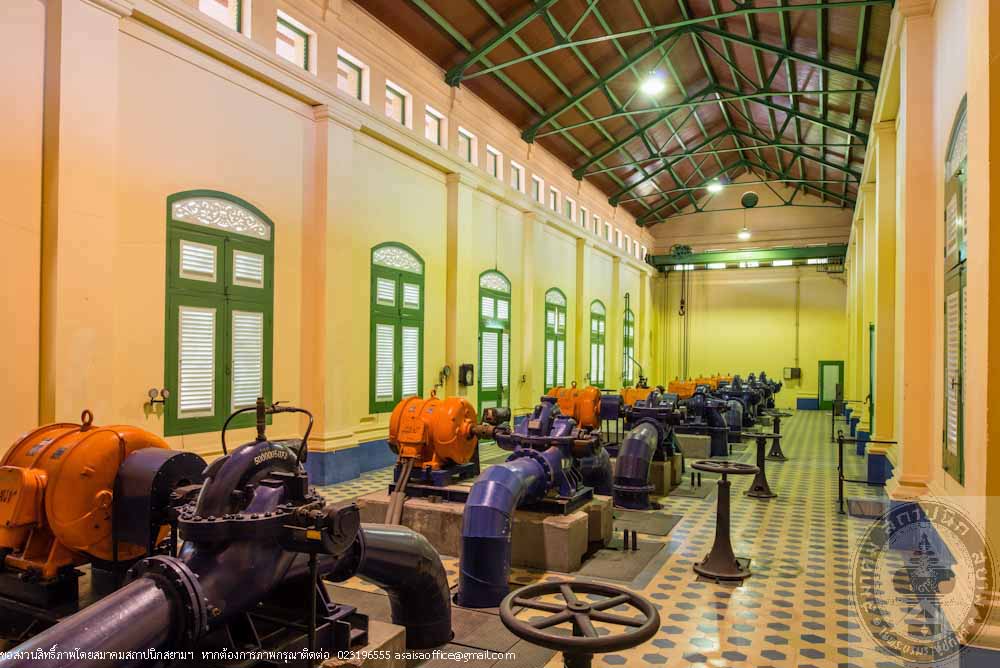
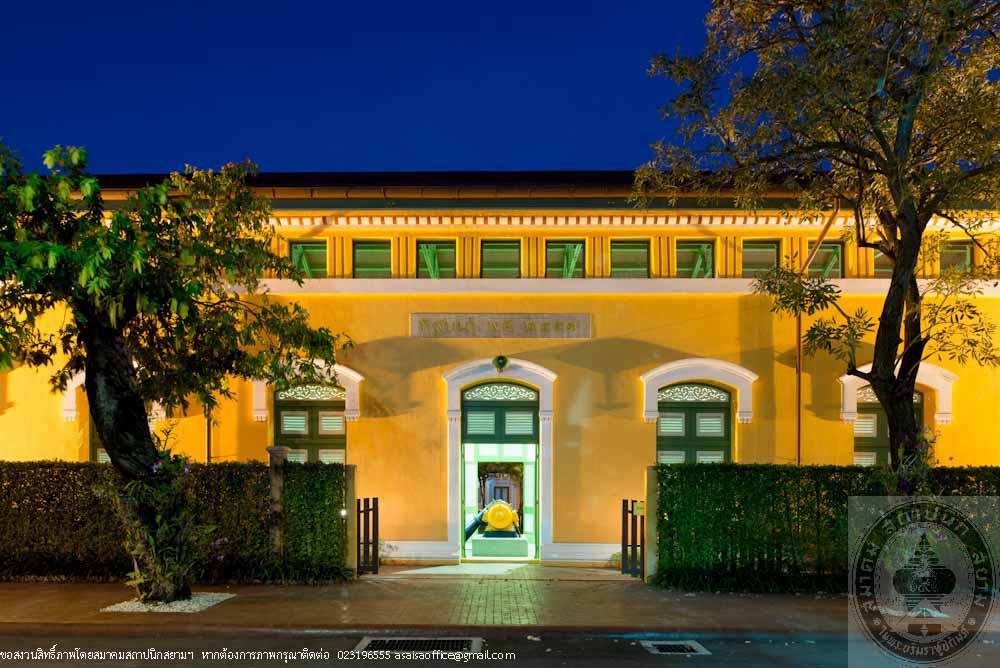
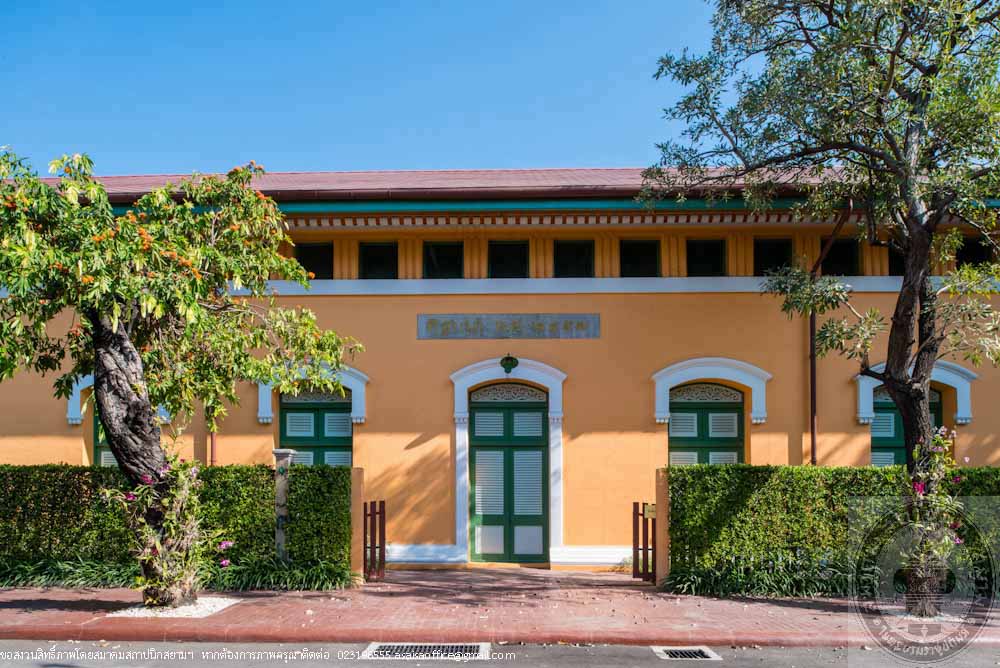
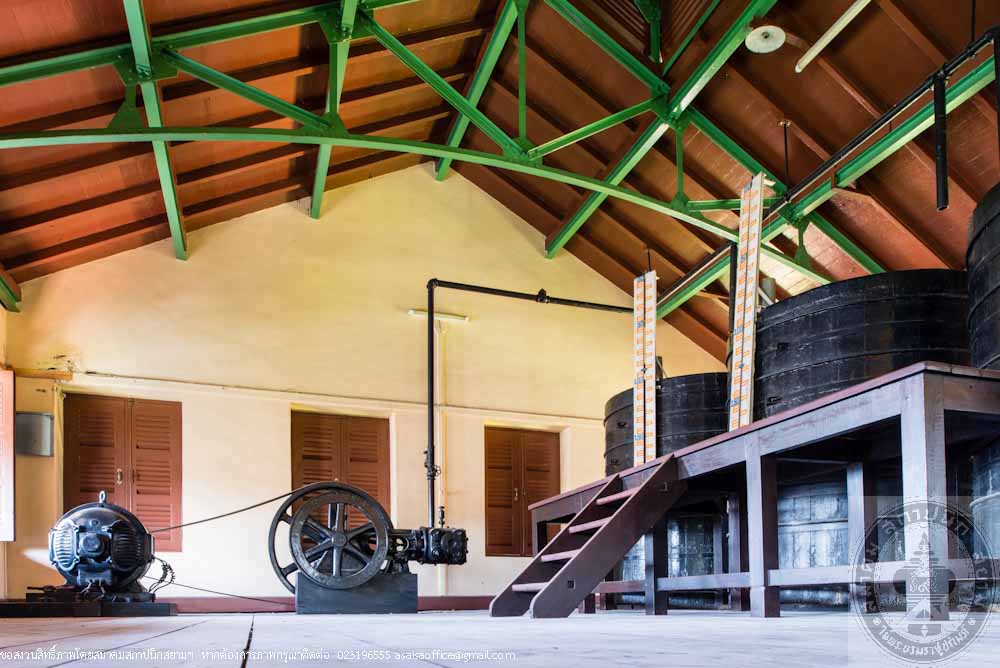
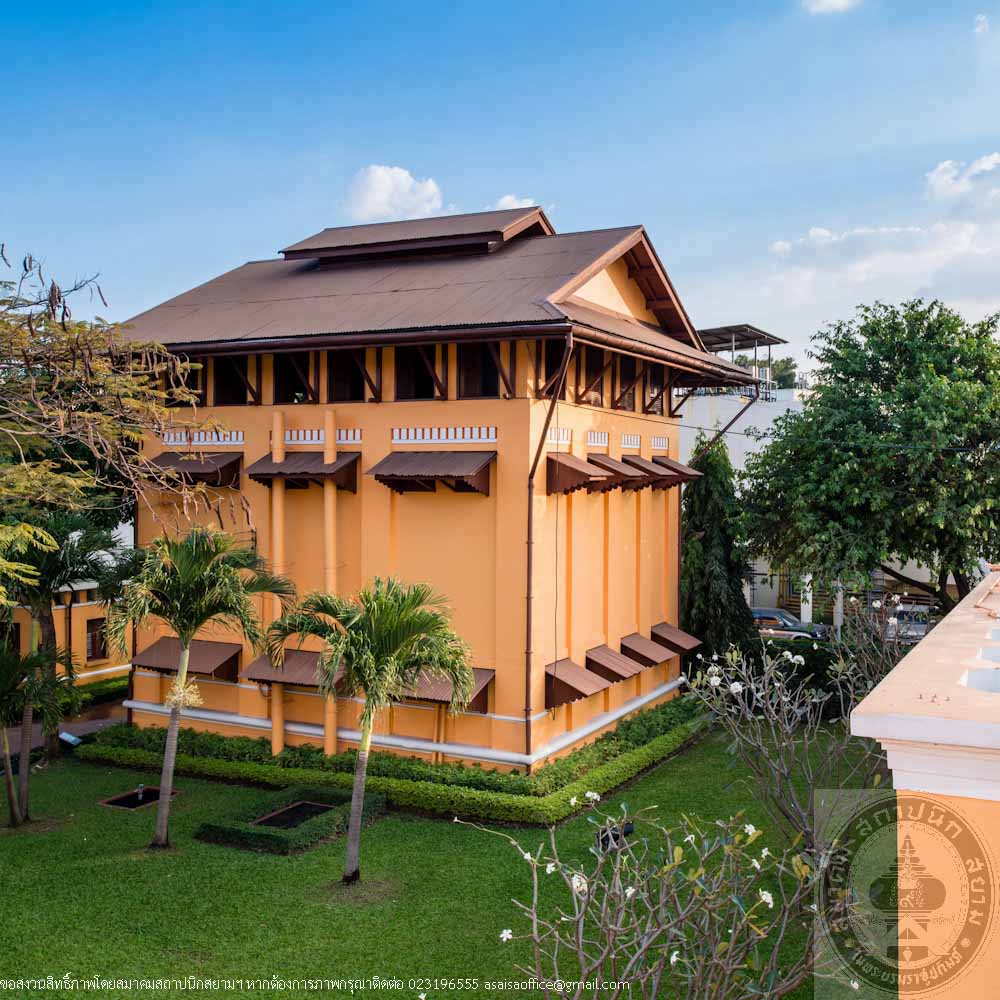
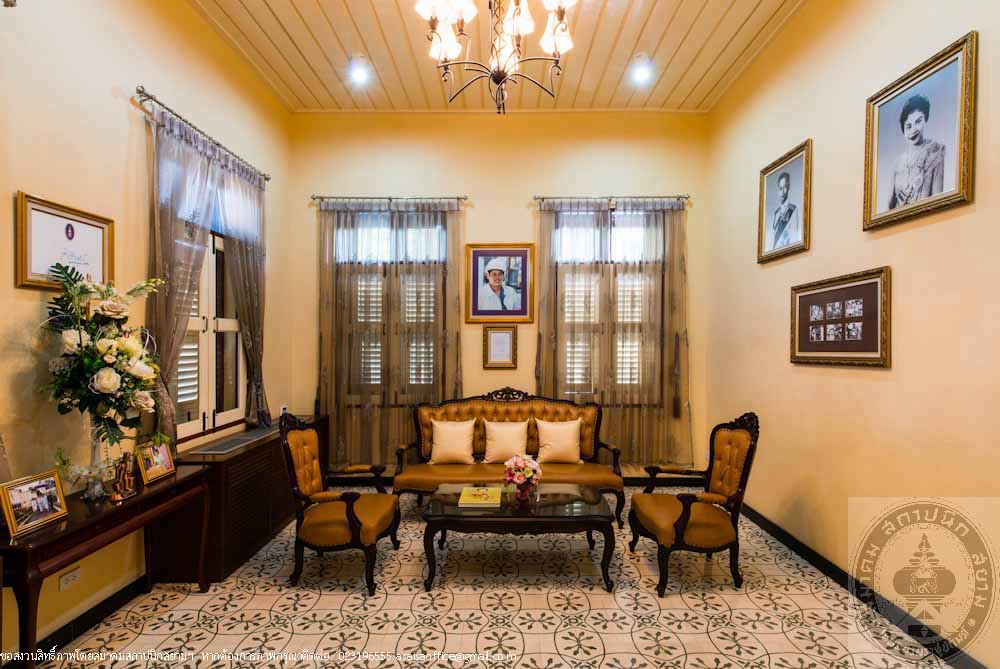
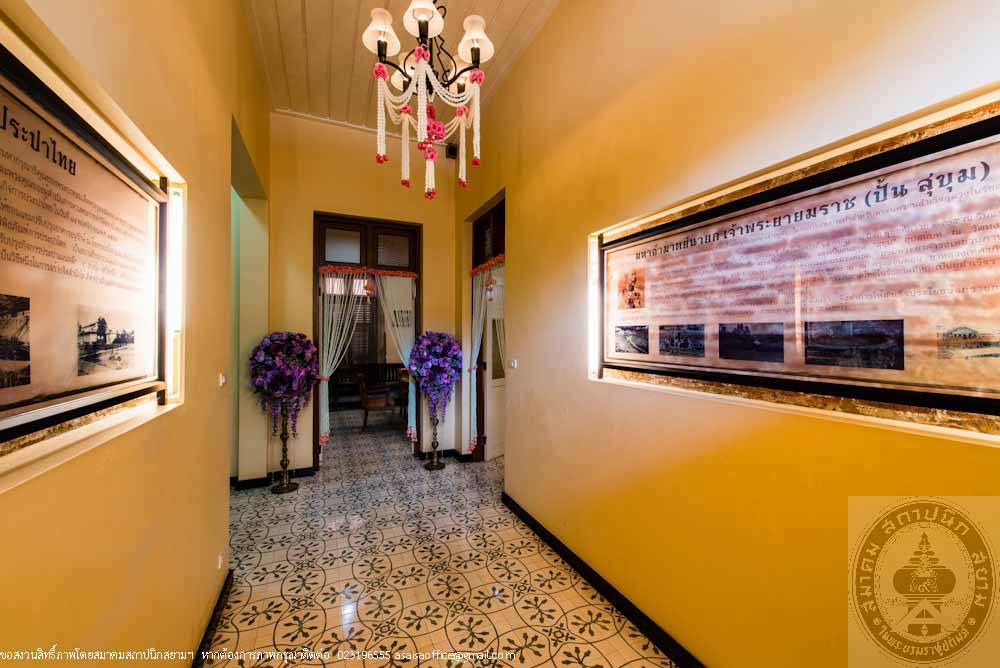
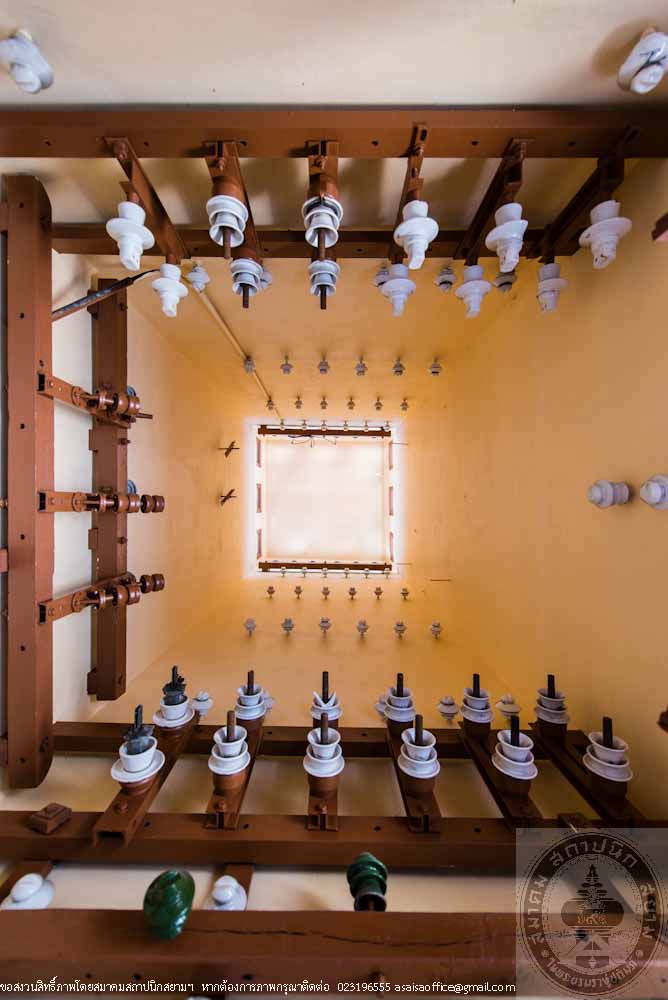
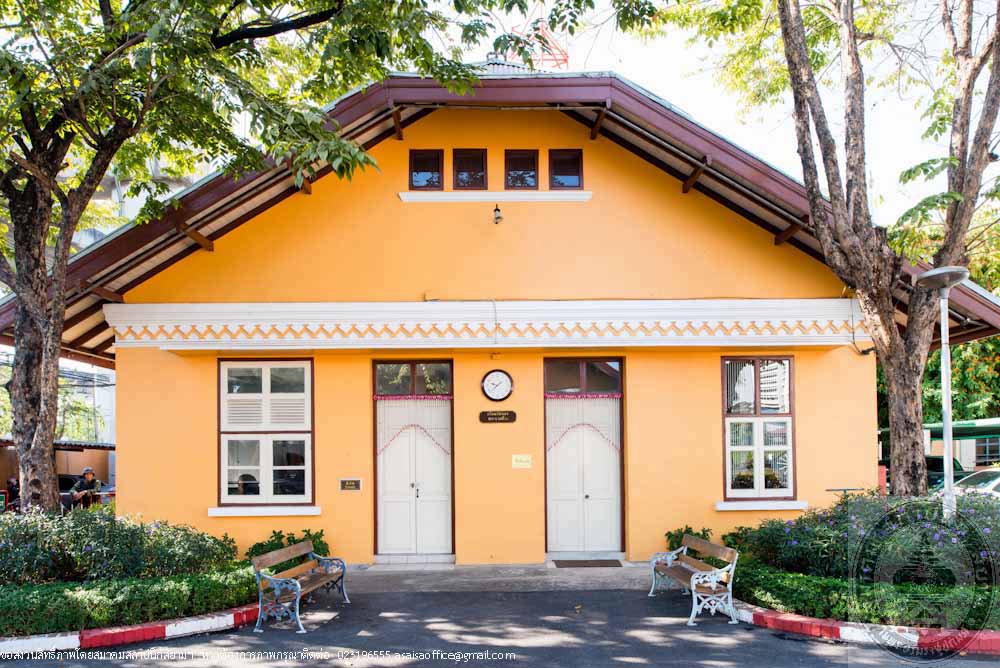
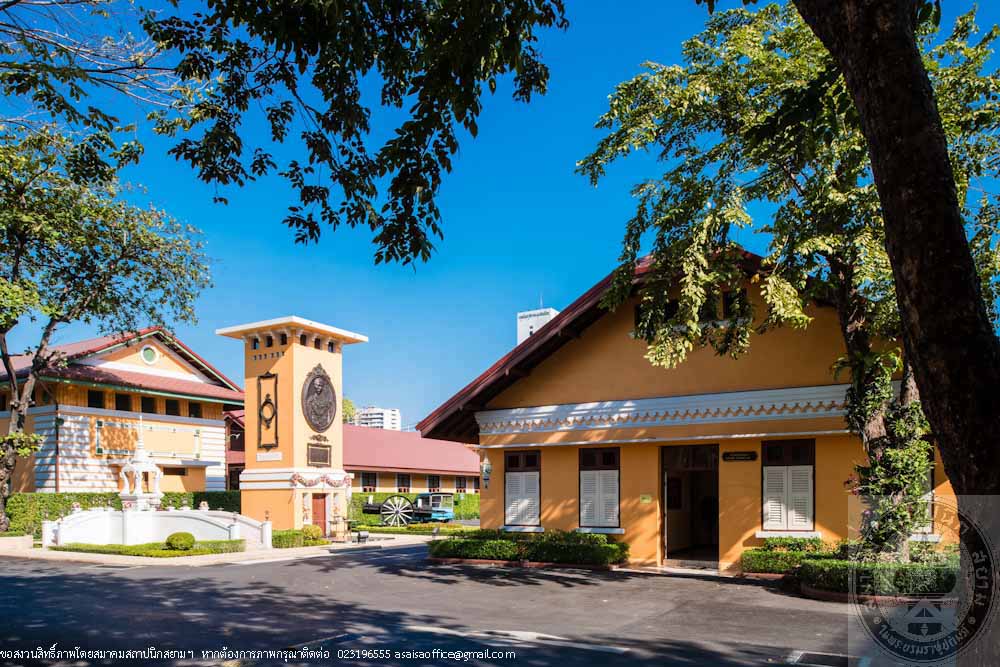
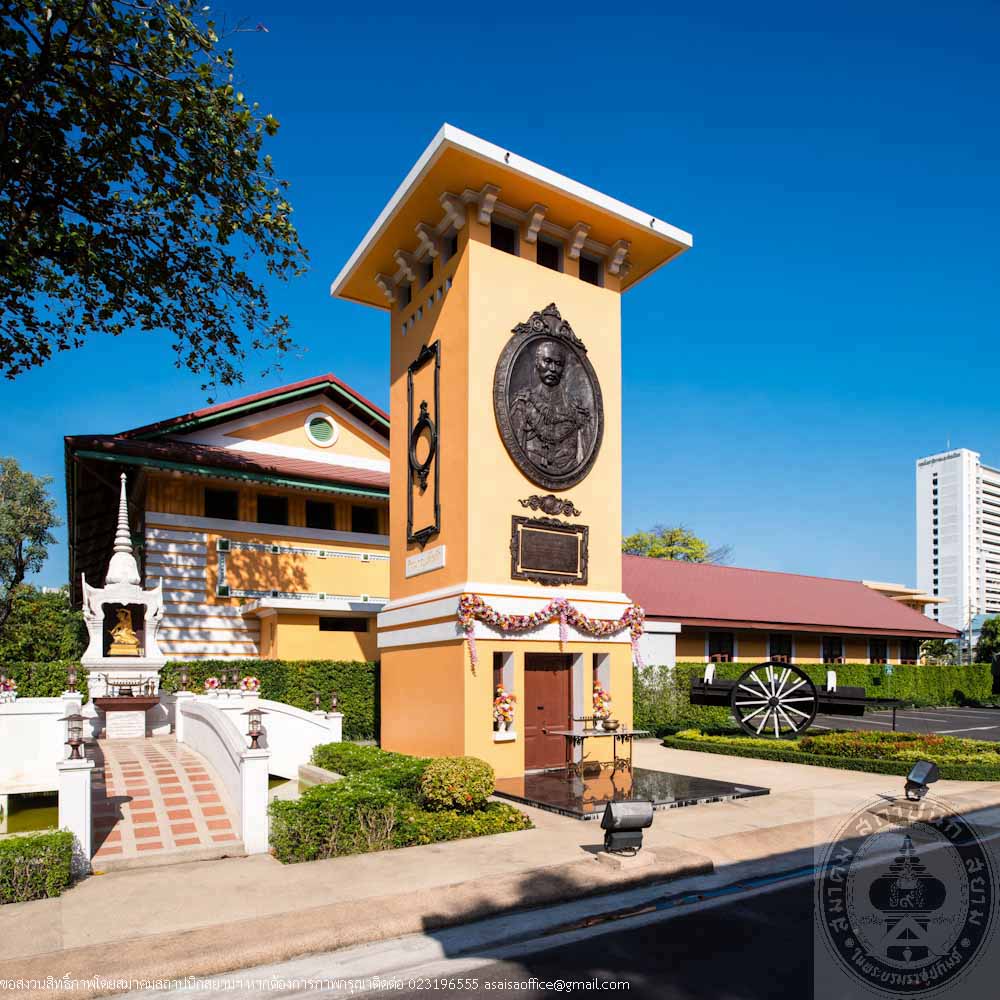
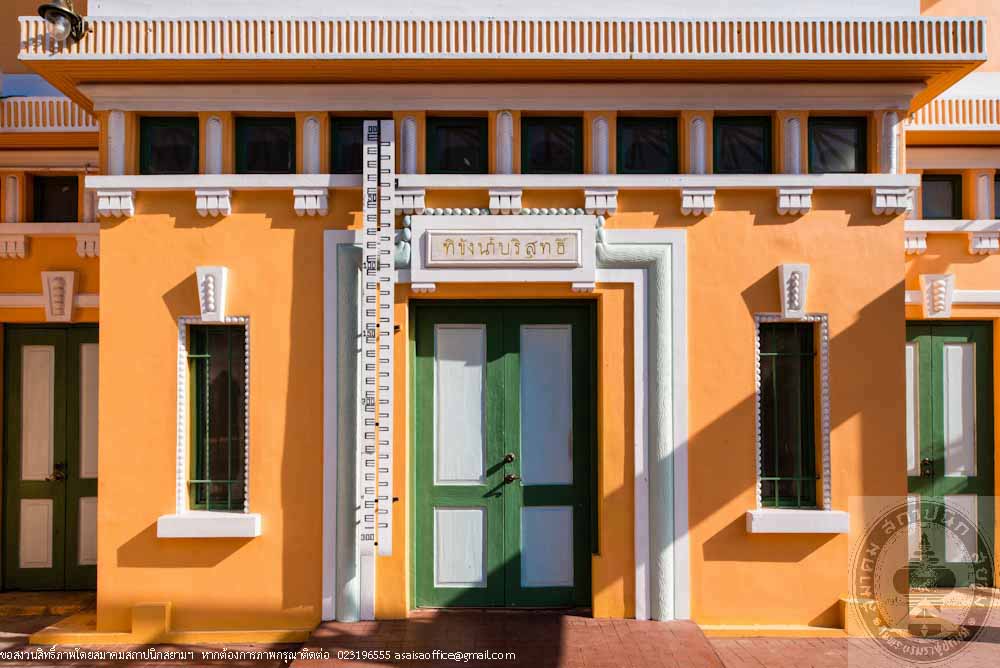
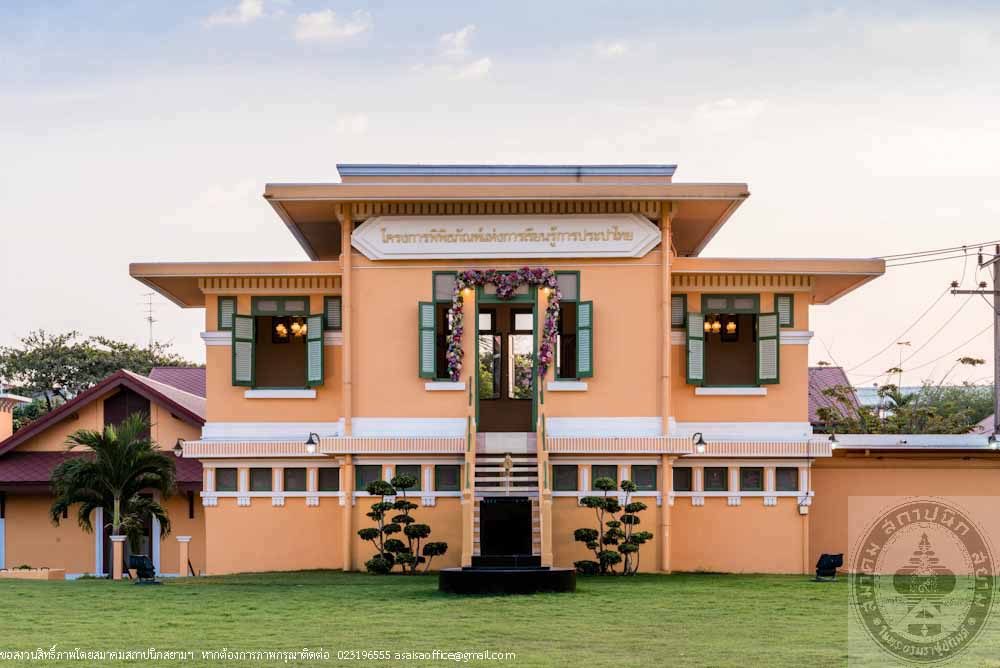
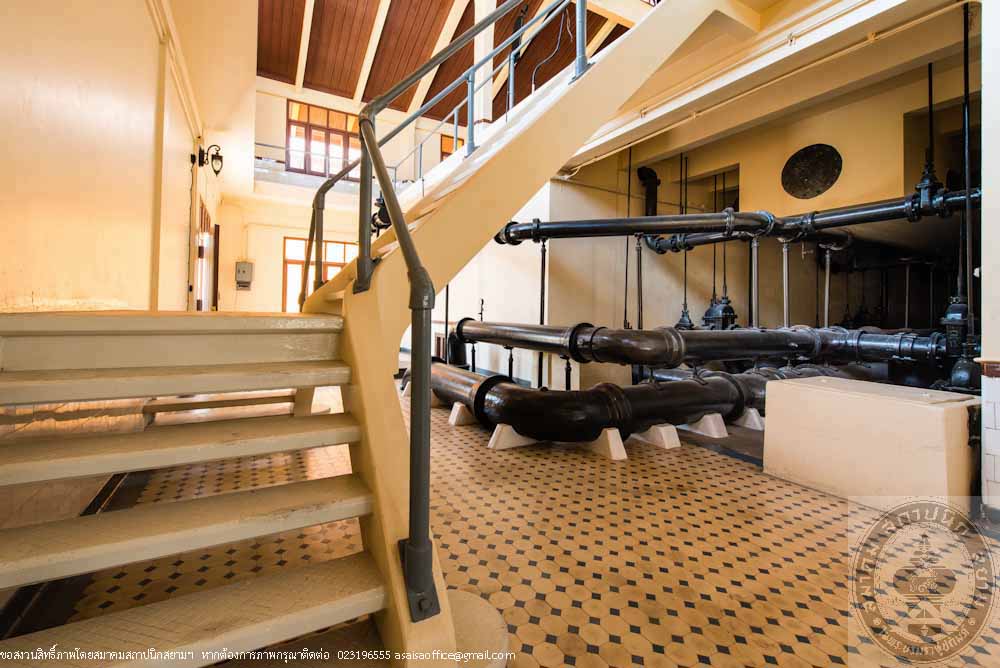
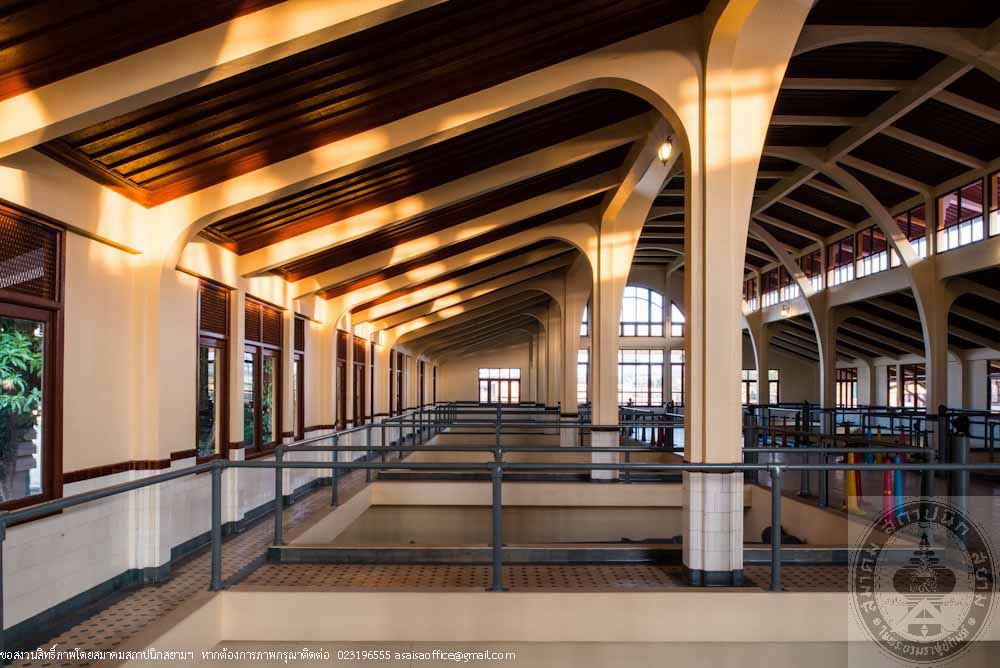
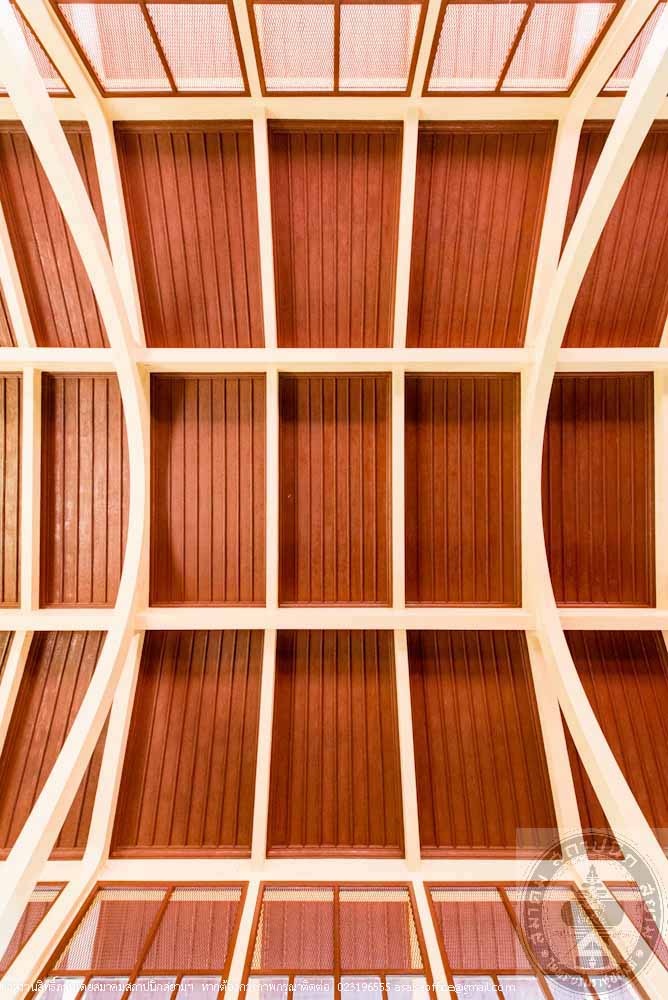
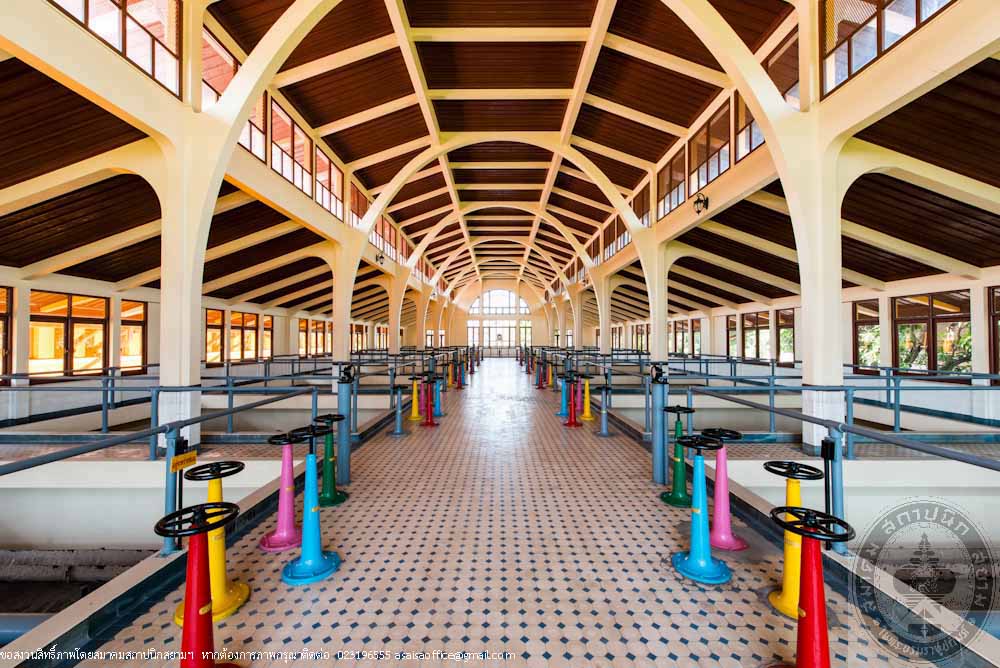
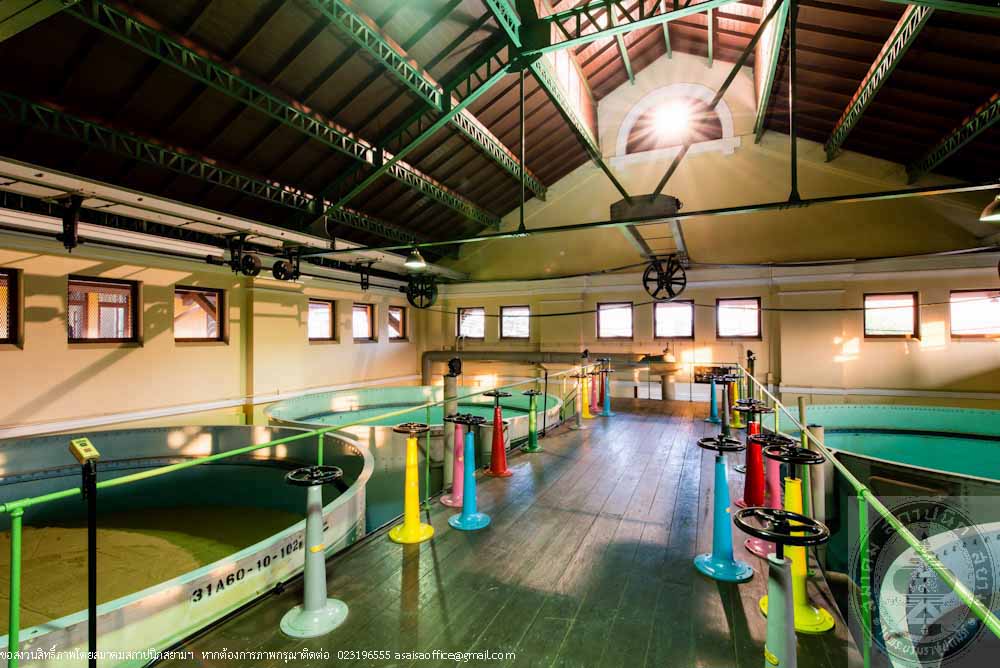
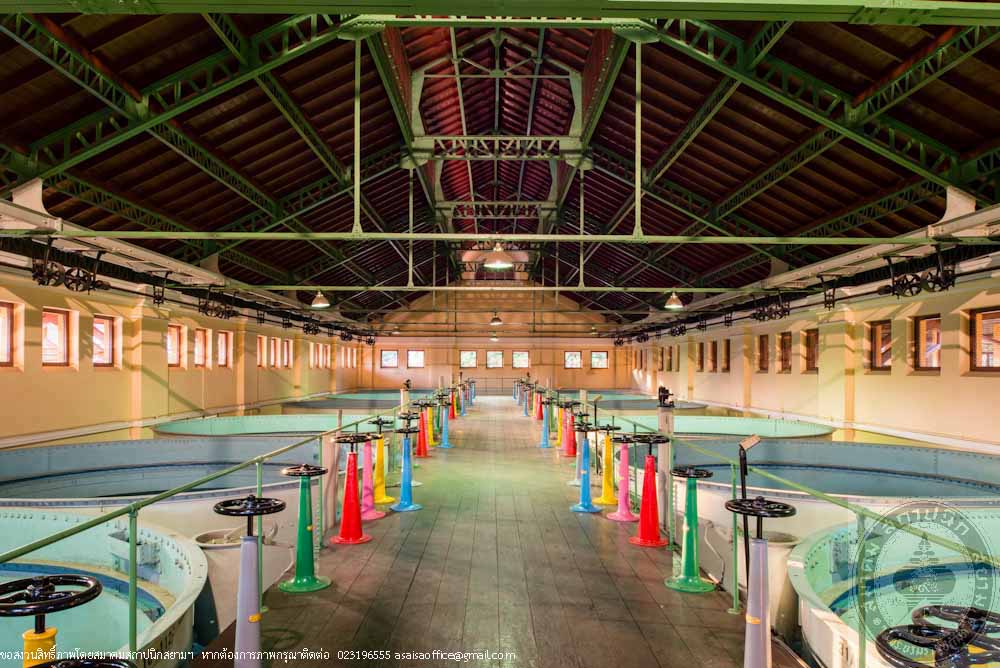
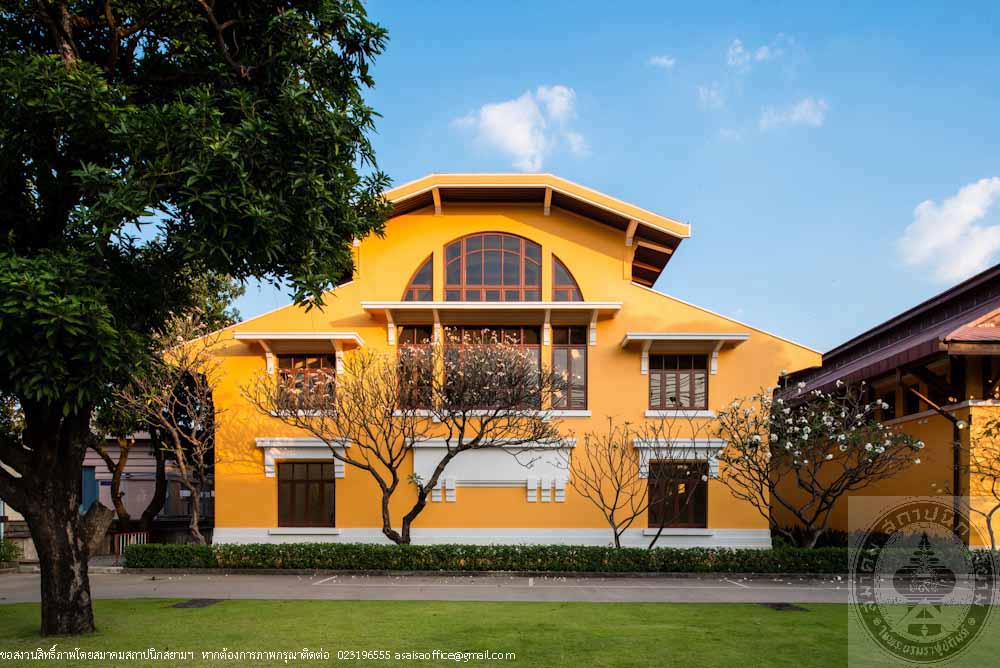
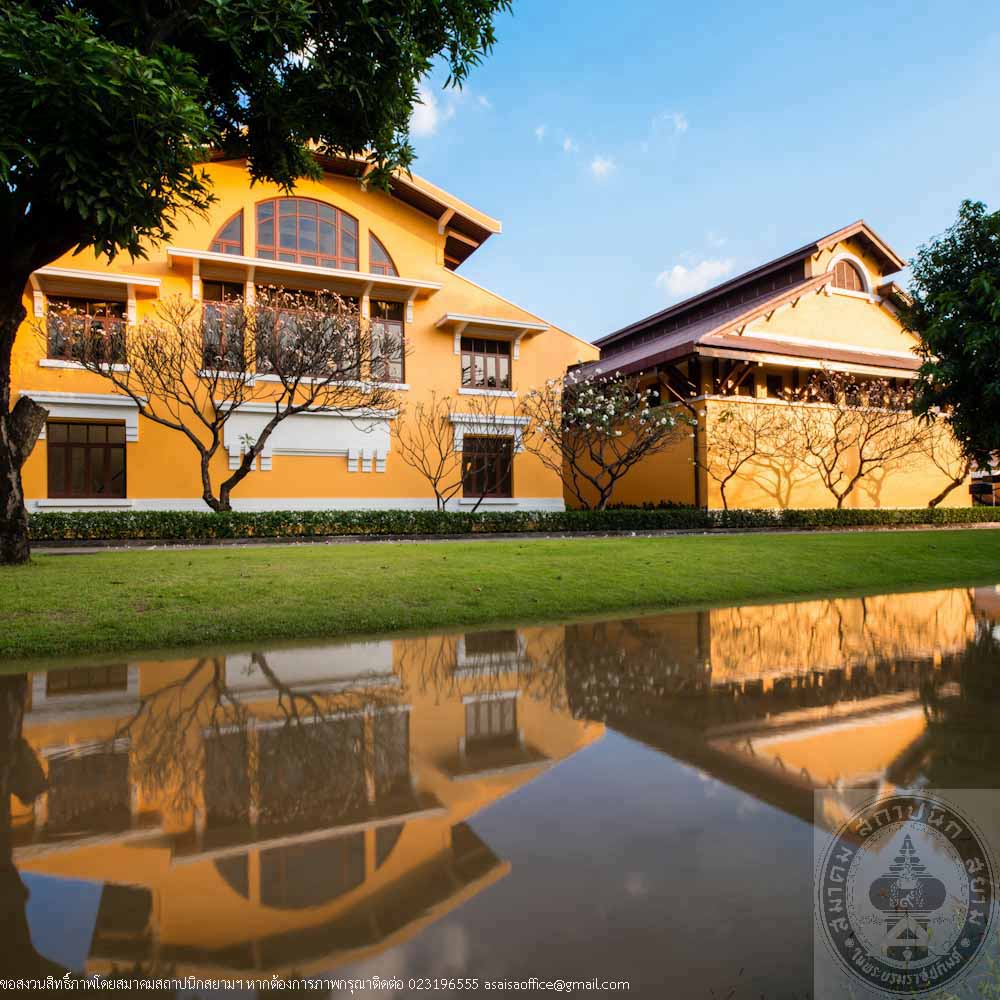
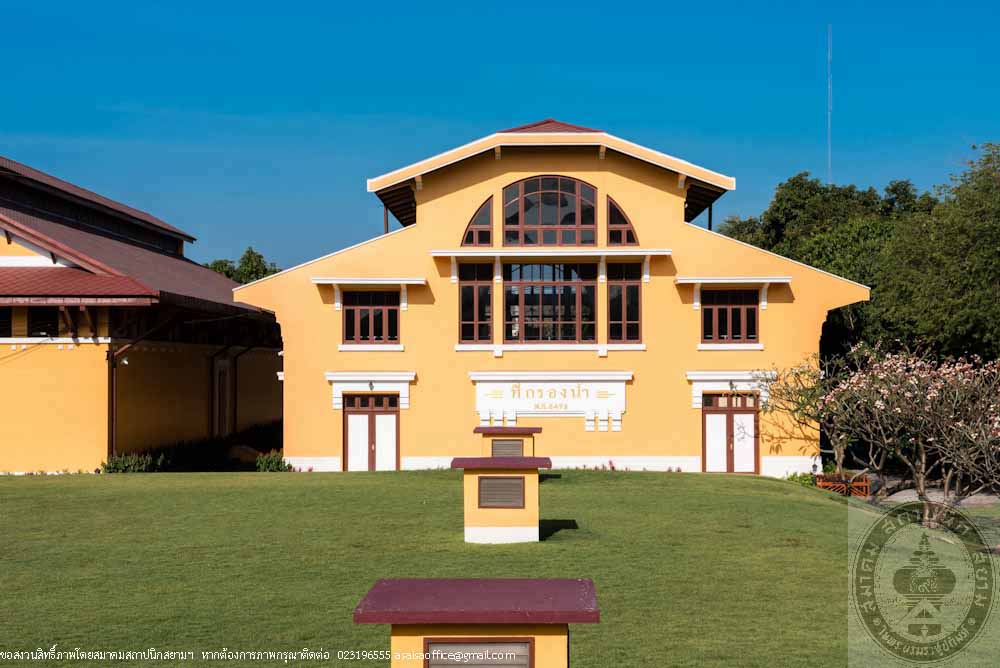
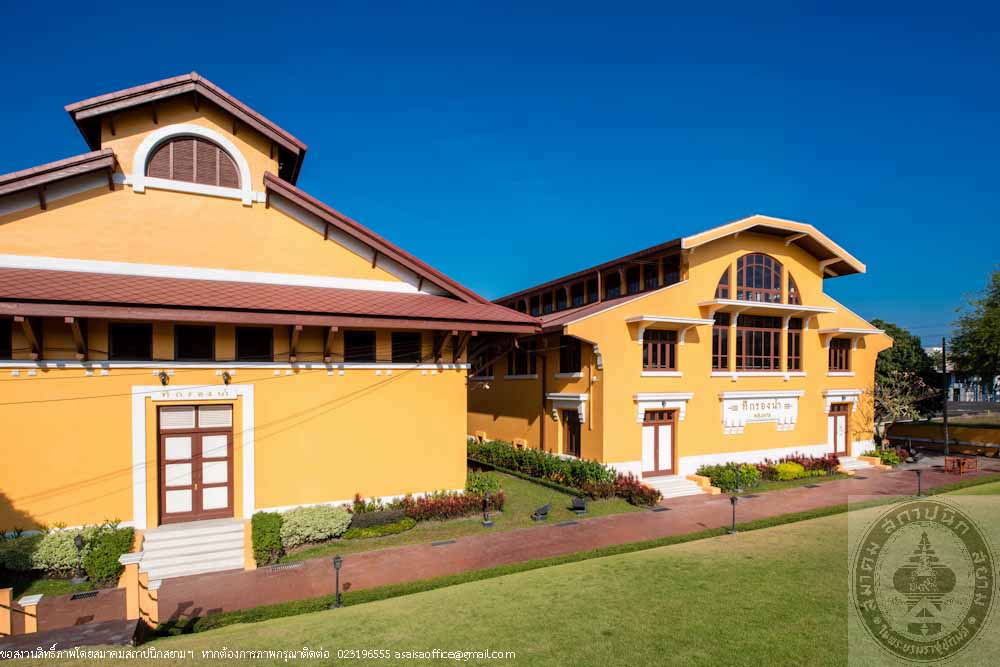
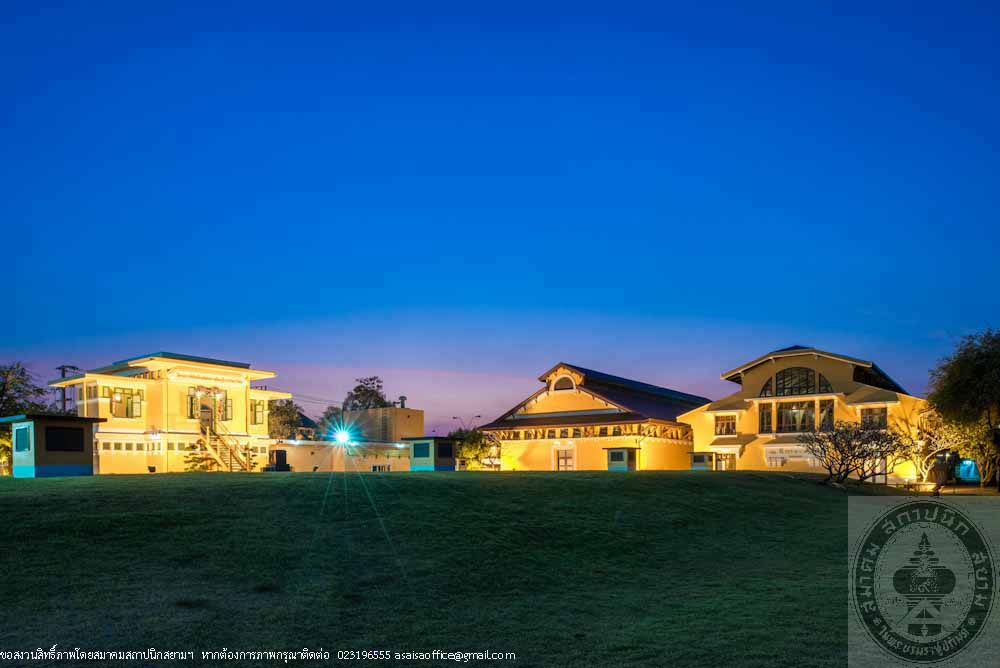
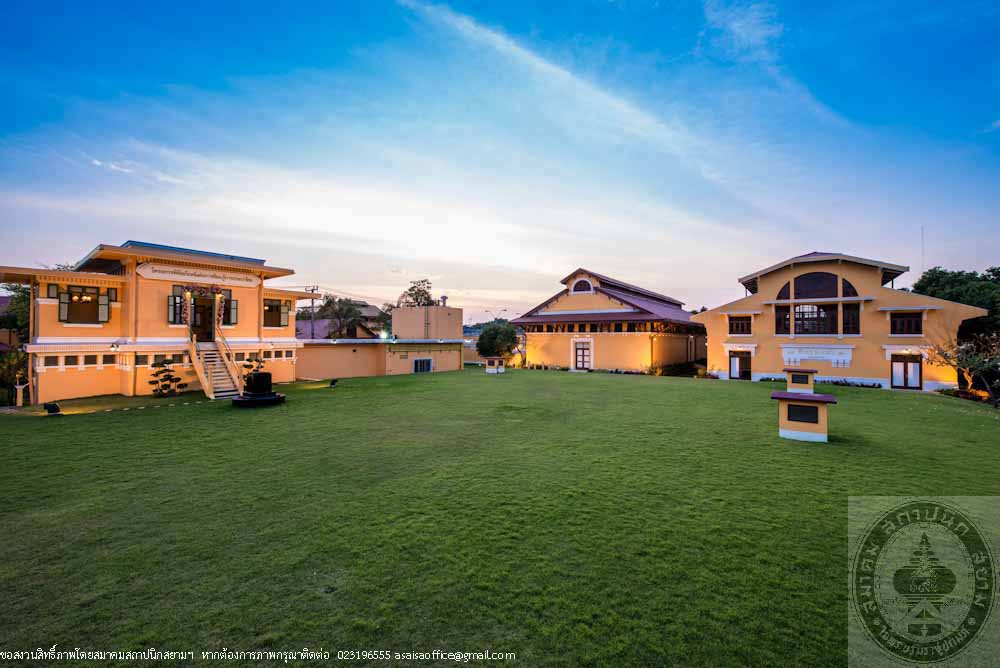
เรือนพระยาศรีธรรมาธิราช
อ่านเพิ่มเติม
เรือนพระยาศรีธรรมาธิราช
- ที่ตั้ง เลขที่ 87 ถนนจรัสเมือง แขวงรองเมือง เขตปทุมวัน กรุงเทพมหานคร
- สถาปนิก/ผู้ออกแบบ พระยาศรีธรรมาธิราช
- ผู้ครอบครอง สำนักงานทรัพย์สินส่วนพระมหากษัตริย์
- ปีที่สร้าง ปลายรัชสมัยพระบาทสมเด็จพระจุลจอมเกล้าเจ้าอยู่หัว รัชกาลที่ 5 และต้นรัชสมัยพระบาทสมเด็จพระมงกุฎเกล้าเจ้าอยู่หัว รัชกาลที่ 6
ประวัติ
เรือนพระยาศรีธรรมธิราชสร้างขึ้นโดยพระยาศรีธรรมาธิราช (เจิม บุณยรัตพันธุ์)เพื่อเป็นที่พักอาศัยของท่านและครอบครัว ต่อมาในปี พ.ศ. 2457 พระคลังข้างที่ได้รับมอบอาคารและที่ดินของบ้านพระยาศรีธรรมาธิราช หลังจากนั้นในปี พ.ศ. 2480 จึงตกเป็นกรรมสิทธิ์ของสำนักงานทรัพย์สินส่วนพระมหากษัตริย์ อย่างไรก็ตาม พระยาศรีธรรมาธิราชและครอบครัวได้รับพระบรมราชานุญาตให้พักอาศัยอยู่ในพื้นที่บ้านด้านที่ติดกับถนนรองเมือง ส่วนพื้นที่ด้านที่ติดกับถนนจรัสเมืองนั้น พระคลังข้างที่ได้นำไปจัดหาผลประโยชน์ ต่อมาในปี พ.ศ. 2490 อาจารย์ชิน นุตโยธิน และกลุ่มเพื่อนครูได้ขอเช่าพื้นที่ด้านที่ติดกับถนนจรัสเมืองจากสำนักงานทรัพย์สินส่วนพระมหากษัตริย์เพื่อใช้เป็นที่ตั้งของโรงเรียนสีตบุตรบำรุงแห่งใหม่ เนื่องจากโรงเรียนสีตบุตร (เดิม)ถูกทำลายจากการทิ้งระเบิดของฝ่ายสัมพันธมิตรในระหว่างสงครามโลกครั้งที่ 2 ต่อมาในปี พ.ศ. 2492 เมื่อพระยาศรีธรรมาธิราชถึงแก่อนิจกรรม ทายาทของท่านจึงได้ส่งมอบที่ดินและบ้านพักอาศัยคืนแก่สำนักงาน หลังจากนั้น โรงเรียนสีตบุตรจึงขอเช่าพื้นที่และเรือนพระยาศรีธรรมาธิราชเพื่อเป็นส่วนหนึ่งของอาคารเรียนโรงเรียนสีตบุตรบำรุง อาคารนี้เป็นส่วนหนึ่งของการเรียนการสอนซึ่งได้มีการดัดแปลงและปรับปรุงอาคารเรื่อยมา จนกระทั่งในปี พ.ศ. 2554 มูลนิธิไทย – จีนเพื่อการศึกษาและวัฒนธรรม และสำนักงานทรัพย์สินส่วนพระมหากษัตริย์ได้เริ่มโครงการอนุรักษ์อาคารเรือนพระยาศรีธรรมาธิราช โดยมีวัตถุประสงค์เพื่อบูรณะซ่อมแซมอาคารที่มีคุณค่าทางด้านประวัติศาสตร์และสถาปัตยกรรมซึ่งอยู่ในสภาพทรุดโทรมไปตามกาลเวลา ให้กลับมาอยู่ในสภาพที่สมบูรณ์ตามรูปแบบทางสถาปัตยกรรมแบบดั้งเดิม โดยคงไว้ซึ่งเทคนิควิธีการ ฝีมือช่าง และวัสดุดั้งเดิมสำหรับรองรับการใช้งานที่เหมาะสม การบูรณะเรือนพระยาศรีธรรมาธิราชแล้วเสร็จในเดือนพฤษภาคม พ.ศ. 2556 หลังจากนั้นสำนักงานทรัพย์สินส่วนพระมหากษัตริย์ได้ส่งมอบอาคารให้กับ “มูลนิธิไทย – จีนเพื่อการศึกษาและวัฒนธรรม” เพื่อใช้เป็นอาคารรับรองและห้องทำงานของประธานมูลนิธิฯ และกิจการทางการศึกษา
เรือนพระยาศรีธรรมาธิราชเป็นอาคารก่ออิฐถือปูน โครงสร้างเป็นผนังหนารับน้ำหนักสูง 2 ชั้น รูปแบบทางสถาปัตยกรรมแบบตะวันตก ผังพื้นอาคารเป็นรูปสี่เหลี่ยมผืนผ้า หันหน้าไปทางทิศเหนือ ตัวอาคารยาวตามแนวแกนตะวันออก – ตะวันตก การจัดวางผังอาคารอย่างเรียบง่ายตรงไปตรงมา โดยมีห้องต่างๆ เรียงกันไปตามยาวของอาคาร มีเฉลียงด้านหน้าอาคาร และมีระเบียงทางเดินด้านหลังอาคารทั้ง 2 ชั้น เชื่อมต่อการใช้สอยระหว่างห้องต่างๆ พื้นที่ใช้สอยภายในอาคารแต่ละชั้นประกอบด้วยห้องต่างๆ จำนวน 5 ห้อง เดิมมีอาคารก่ออิฐถือปูนใช้ผนังรับน้ำหนัก 2 ชั้นครึ่งอีก 1 หลัง เชื่อมต่อกันบริเวณระเบียงชั้น 2 เพื่อใช้เป็นทางขึ้นห้องใต้หลังคาบริเวณหน้าจั่วมุขอาคารด้านตะวันตก หลังคาอาคารทรงจั่วมีการปาดที่ยอดจั่วหรือที่เรียกว่าJerkinhead roof (เรียกอีกอย่างว่า Clipped gable, Hipped gable หรือ Shreadhead) มีความลาดชันมากจนสามารถใช้พื้นที่เป็นห้องใต้หลังคาได้ โดยมีระเบียงยื่นตรงหน้าจั่วมุขทั้งสองด้าน โครงสร้างหลังคาเครื่องไม้มุงด้วยกระเบื้องซีเมนต์ใยหินรูปสี่เหลี่ยมผืนผ้าขนาด 60 x 120 เซนติเมตร มีลักษณะเฉพาะ คือ มีการยกลอนกระเบื้องเพียงลอนเดียวในแต่ละแผ่นซึ่งไม่ปรากฏพบหลักฐานการใช้งานในอาคารอื่นใดในช่วงเวลาเดียวกันเป็นวัสดุมุงหลังคา ภายในอาคารยังมีภาพจิตรกรรมแบบตะวันตกบนฝาผนังและฝ้าเพดานในทุกๆ ห้องอย่างวิจิตรงดงาม โดยเฉพาะห้องโถงใหญ่บนชั้นสองที่มีการเขียนภาพนกยูงคู่บริเวณเหนือประตูทุกบาน นอกจากนี้ยังมีการเขียนลายมงคลต่างๆ บริเวณช่วงบนของผนังทุกห้องซึ่งแต่ละห้องจะมีรายละเอียดแตกต่างกัน นอกจากนั้นองค์ประกอบในส่วนของ เชิงชาย ค้ำยัน และราวลูกกรงบันไดมีการแกะสลักไม้เป็นรูปสัตว์ต่างๆ เช่น จระเข้ เสือ ชะนี และกระรอก ช่องลมบริเวณเหนือประตูหน้าต่างมีการฉลุลวดลาย “เจิม” ซึ่งเป็นสัญลักษณ์ของชื่อเจ้าของอาคาร ล้อมรอบด้วยลวดลายกนกเปลวแบบไทย และลวดลายใบไม้แบบตะวันตก บริเวณผนังด้านหน้าอาคารตรงประตูทางเข้าชั้นล่างประดับด้วยหินอ่อนสีเหลืองแกะสลักนูนต่ำรูปหัวม้าติดตั้งทางด้านซ้ายและด้านขวา ซึ่งเป็นสัญลักษณ์นักษัตรประจำปีเกิดของเจ้าของเรือน ส่วนระเบียงด้านหน้าอาคารชั้น 2 ในตำแหน่งเดียวกัน ประดับหินอ่อนสีชมพูแกะสลักนูนต่ำรูปการเต้นรำสเปน และรูปคล้ายผู้หญิงกำลังเศร้าเสียใจ
เรือนพระยาศรีธรรมาธิราชได้รับการบูรณะตามหลักวิชาการอย่างเคร่งครัด โดยก่อนการบูรณะได้มีการศึกษาค้นคว้าทางประวัติศาสตร์ ศิลปะสถาปัตยกรรม และโบราณคดี การประเมินบูรณภาพ (assessment of integrity) และการทดความแท้(test of authenticity) ทำให้ได้ข้อมูลที่เกี่ยวข้องกับอาคารเพื่อใช้ประกอบในการตัดสินใจเลือกเทคนิคและวิธีการอนุรักษ์ที่เหมาะสม นอกจากนี้ การทำงานอย่างมีส่วนร่วมระหว่างสำนักงานทรัพย์สินส่วนพระมหากษัตริย์ มูลนิธิไทย – จีนเพื่อการศึกษาและวัฒนธรรม กรมศิลปากร คณะที่ปรึกษาด้านงานอนุรักษ์ของสำนักงานทรัพย์สินส่วนพระมหากษัตริย์ บริษัทผู้รับเหมา สถาบันการศึกษา และผู้ที่มีส่วนเกี่ยวข้องทุกฝ่าย ส่งผลให้การดำเนินงานในแต่ละขั้นตอนเป็นไปด้วยความเรียบร้อย นับเป็นการทำงานตัวอย่างให้กับหน่วยงานอื่นๆ นำไปประยุกต์ใช้เป็นแนวทางในการอนุรักษ์ประวัติศาสตร์ของตนเองได้เป็นอย่างดี
Phraya Sri Thammathirat’s Residence
- Location 87 Charat Muang Road, Rong Muang, Pathumwan, Bangkok
- Architect/ Designer Phraya Sri Thammathirat
- Owner The Crown Property Bureau
- Year Built During the late period of King Chulalongkorn, Rama V reign and early period of King Vachiravudh, Rama VI
History
The family home built by Phraya Sri Thammathirat (Choem Boonyarattapan) himself was later transferred to the Privy Purse in 1914. The house became the property of The Crown Property Bureau in 1937. However, Phraya Sri Thammathirat and his family were allowed to live in a house adjacent to Rong Muang Road while the Privy Purse managed the property on Charat Muang side. In 1947, Chin Nutayothin together with his teacher friends was seeking to rent the Charat Muang side of property from the Crown Property Bureau to be a new location for Sitabut Bamrung School for the old location was destroyed by the Allies’ bombing during WWII. After Phraya Sri Thammathirat passed away in 1949, his heirs transferred the property back to the Crown Property Bureau. Sitabut School rented the area of which Phraya Sri Thammathirat’s residence was located to be a part of the school. The residence became a school house and has been altered and renovated over the years. Until 2011, Thai-China Cultural and Educational Foundation and The Crown Property Bureau initiated a project to preserve Phraya Sri Thammathirat’s old residence. The main purpose of the project was to restore historic buildings and architectures worn out by age and bring them back to their original, architectural perfection by using old techniques, craftsmanship and traditional materials to support appropriate use of the building. The Crown Property Bureau The restoration project was completed in May, 2013. The Crown Property Bureau later transferred the building back to “Thai-China Cultural and Educational Foundation” as a reception area for visitors and to accommodate an office for its president. It was also used in academic related activities.
Phraya Sri Thammathirat’s Residence is a two-storey brick masonry structure with thick wall to bear the load of the structure. Western style rectangular building facing the North. The building stretches East-West. Simple and forthright floor plan with rooms that line up in one long row. A long porch along the front of the house and overhanging balconies at the rear that connect the rooms. There are five rooms on each floor. There used to be another two and a half storey brick masonry building with load-bearing walls that connect to the old residence through the balconies on the second floor. It was used to enter the attic on the west gable-roof porch. Jerkinhead roof (also called clipped gable, hipped gable or shreadhead) is very steep that it leaves large empty space that can be used as an attic. Wooded roof structure with large rectangular asbestos and cement tile.
The tile measure 60×120 centimeters and are of a type called Lon Diew, a single curve roof pattern no other structure of the same age has. The wall and ceiling in each room are adorned with exquisite European style frescoes. Particularly outstanding is the stylized rendition of two peacocks which is repeated above all of the doors in the main hall on the second floor. There are also motifs with auspicious meaning on the upper section of the wall in all of the rooms. No two rooms are the same. Roof and pillar support structures and staircase are decorated with wooded carved sculptures of animals such as crocodiles, tigers, gibbons and squirrels. Ventilation grilles above doors and windows are adorned with wood carving symbol called “Choem” to symbolize the name of the owner, and surrounded by a traditional Thai flame called Kanok and Western styled foliage motifs. The external wall near the front entrance on the ground floor is adorned with yellow marble bas-reliefs of a horse’s head on both the left and right side of the building front, a reference to the fact that the owner of the house was born in the year of the horse. While the verandah on the upper floor is decorated with pink marble bas-reliefs depicting the Spanish dance and a weeping woman.
The restoration of Phraya Sri Thammathirat’s residence adhered strictly to the technical principles. Before the building was restored, historical, architectural and archeological researches, assessment of integrity and test of authenticity were conducted to gather sufficient data related to the building to determine appropriate renovation techniques. Moreover, partnerships between The Crown Property Bureau, Thai-China Educational and Cultural Foundation, Fine Arts Department, the Bureau’s Conservation Project Division, contractors, educational institution and all related personnel resulted in a smooth operation in each and every stage which served as an exemplary approach for other restoration project in the future.
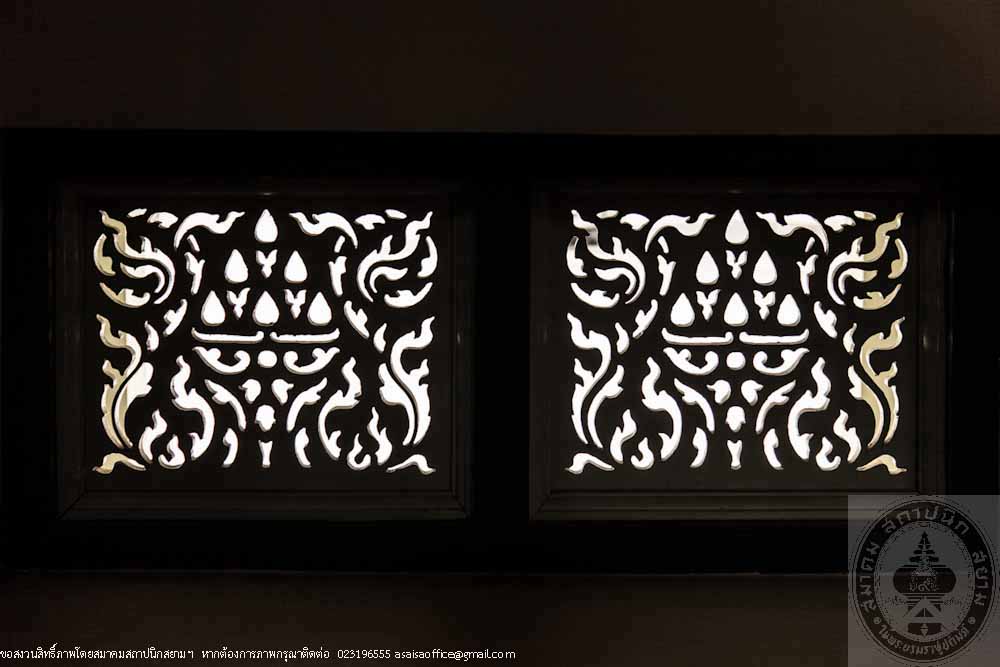
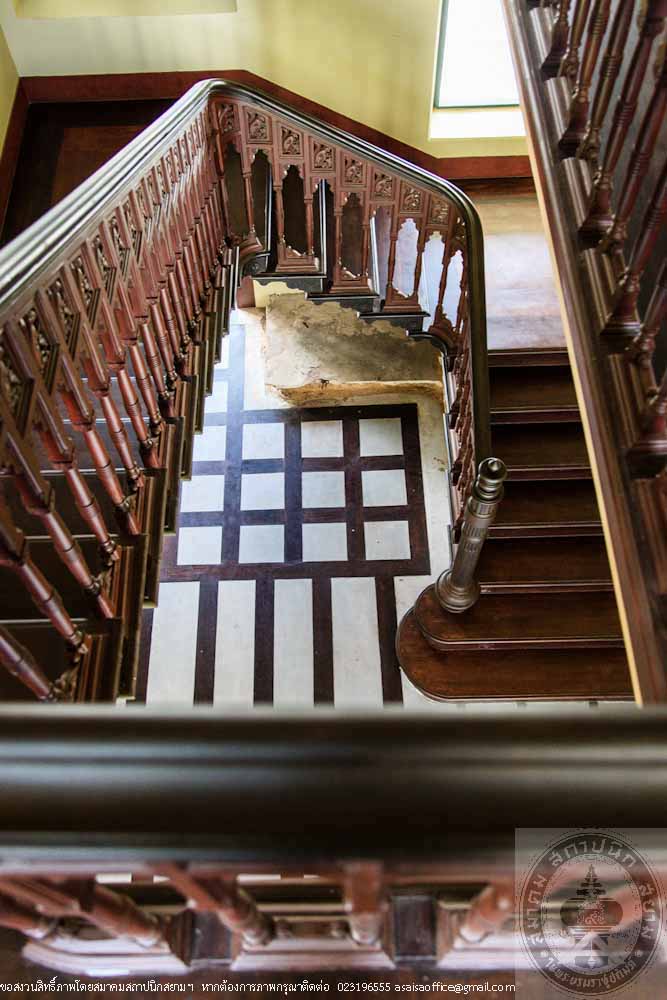
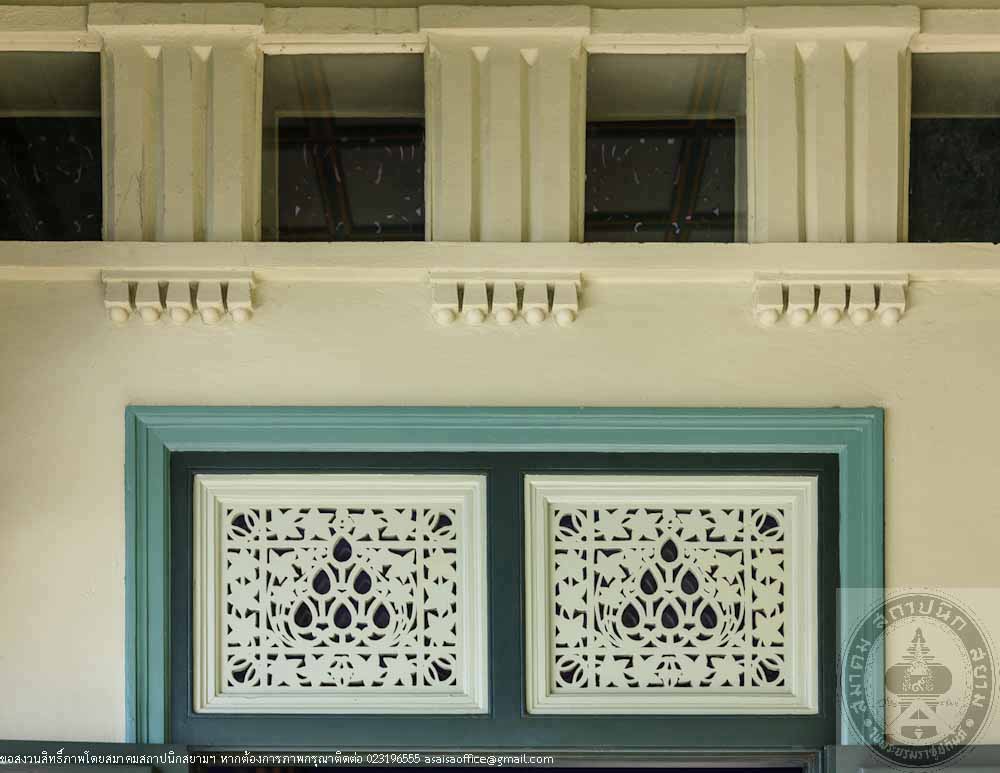
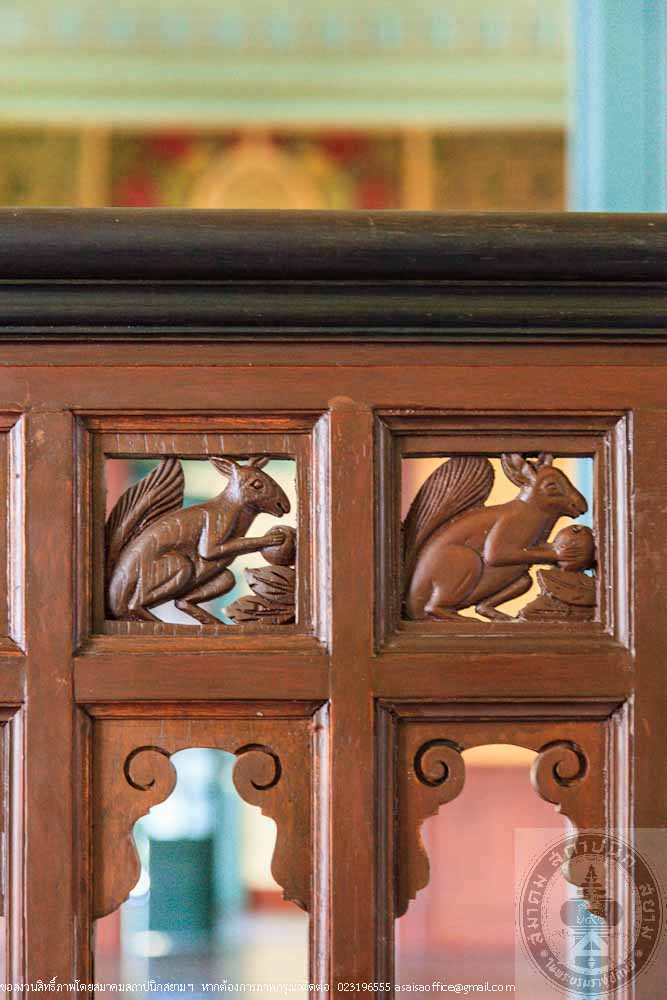
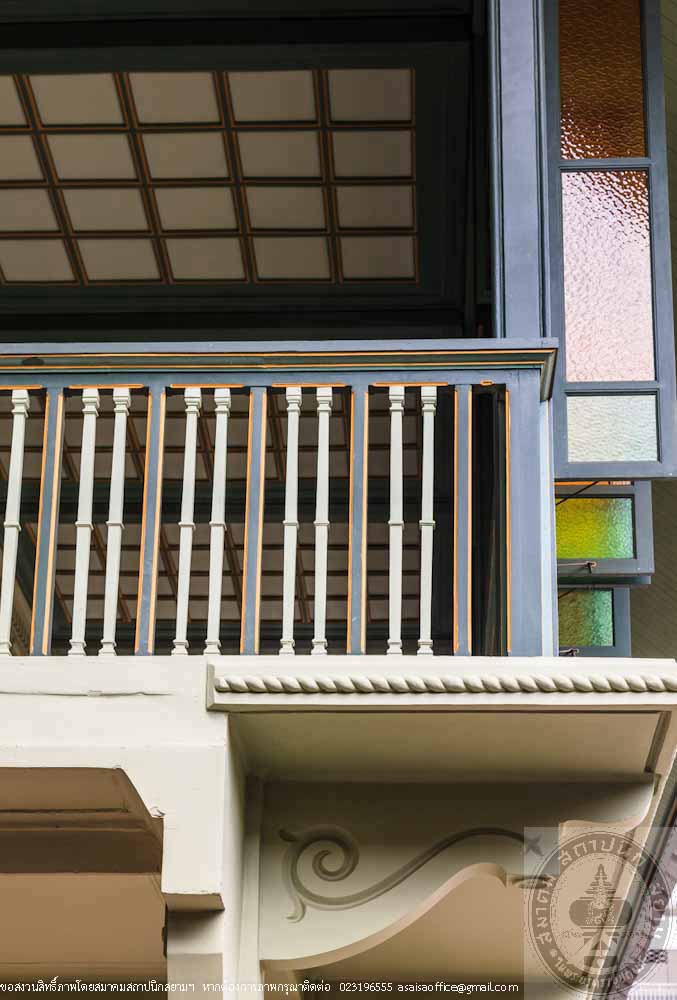
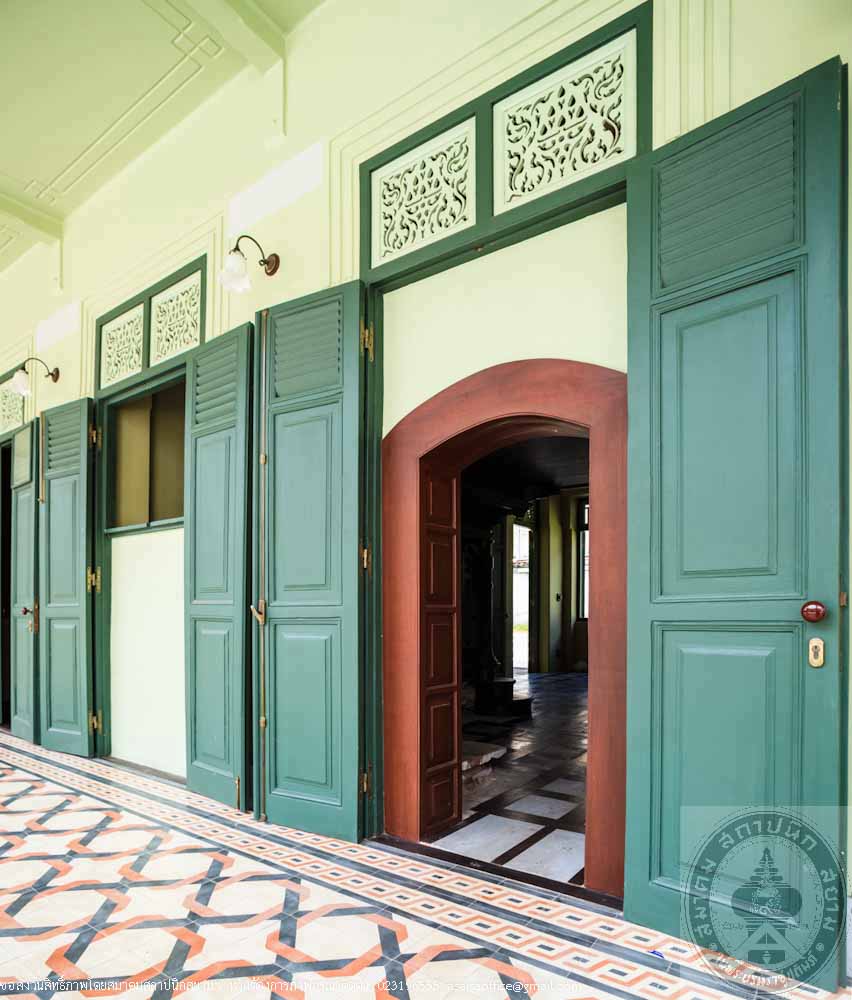
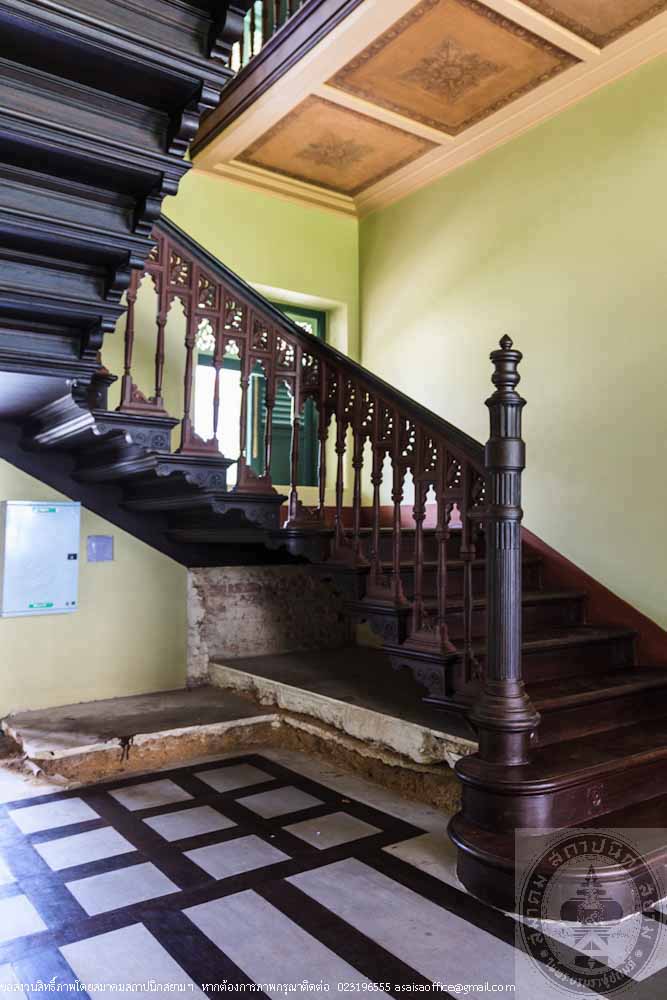
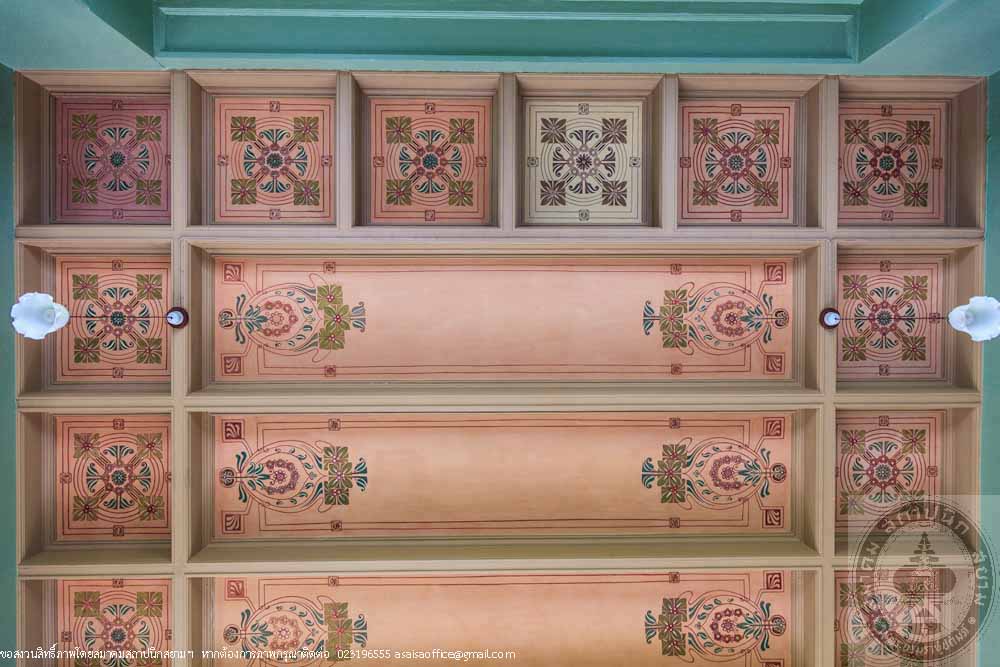
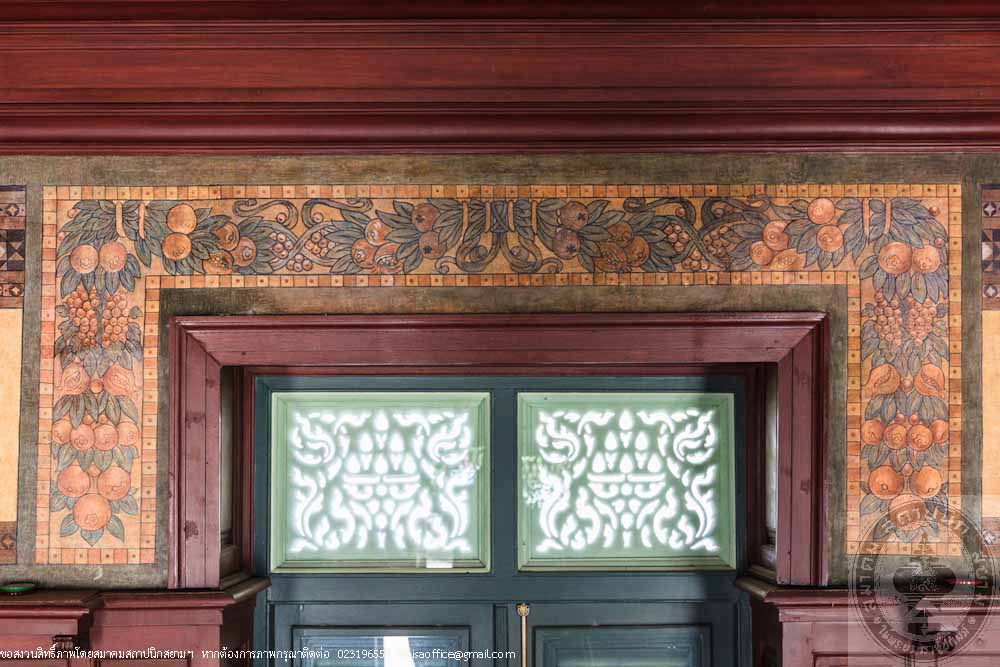
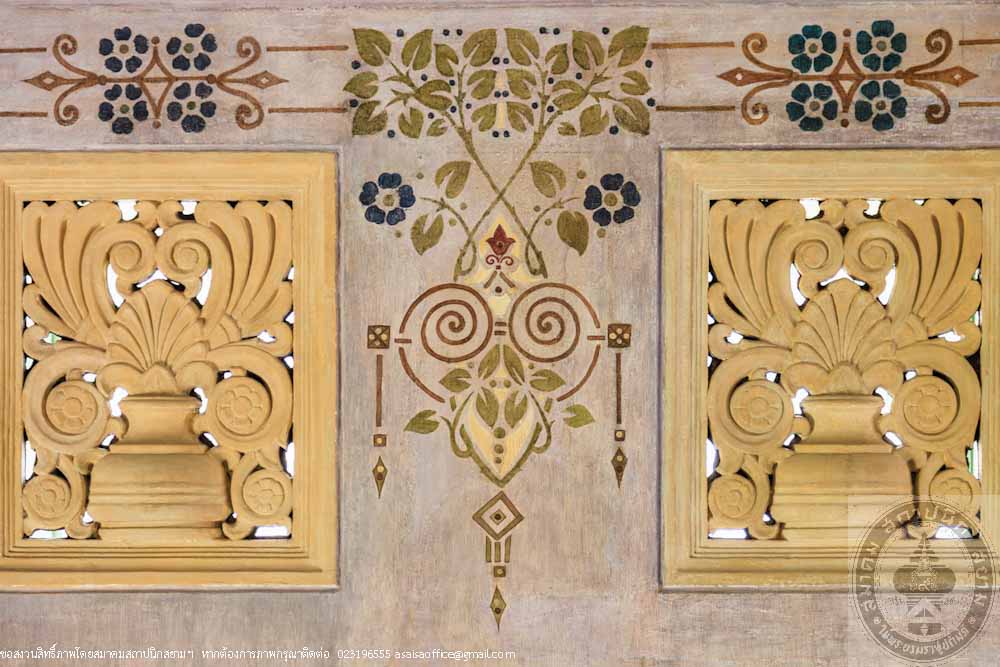
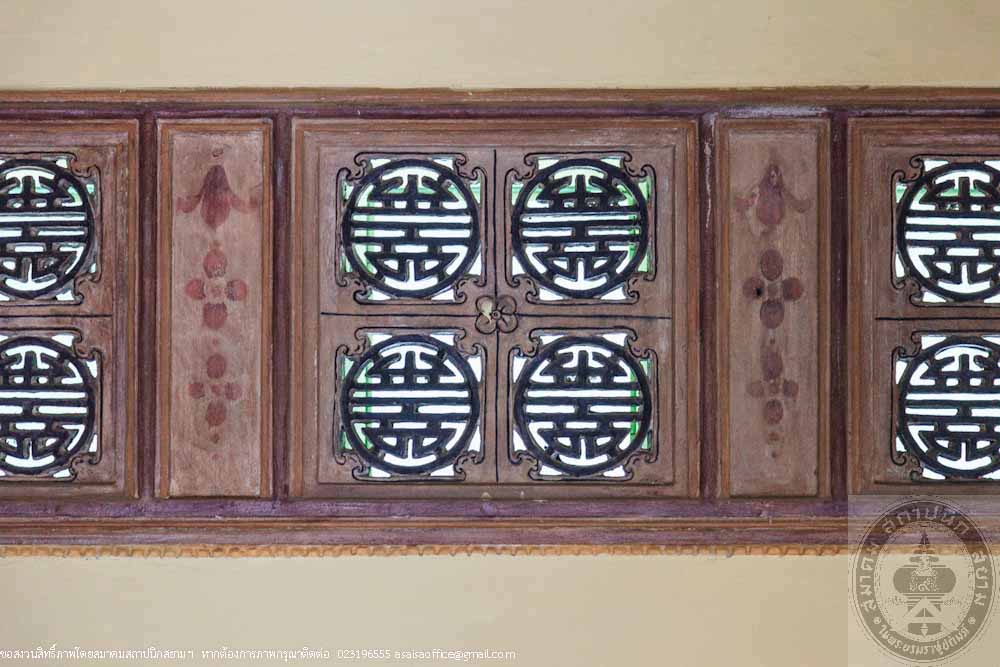
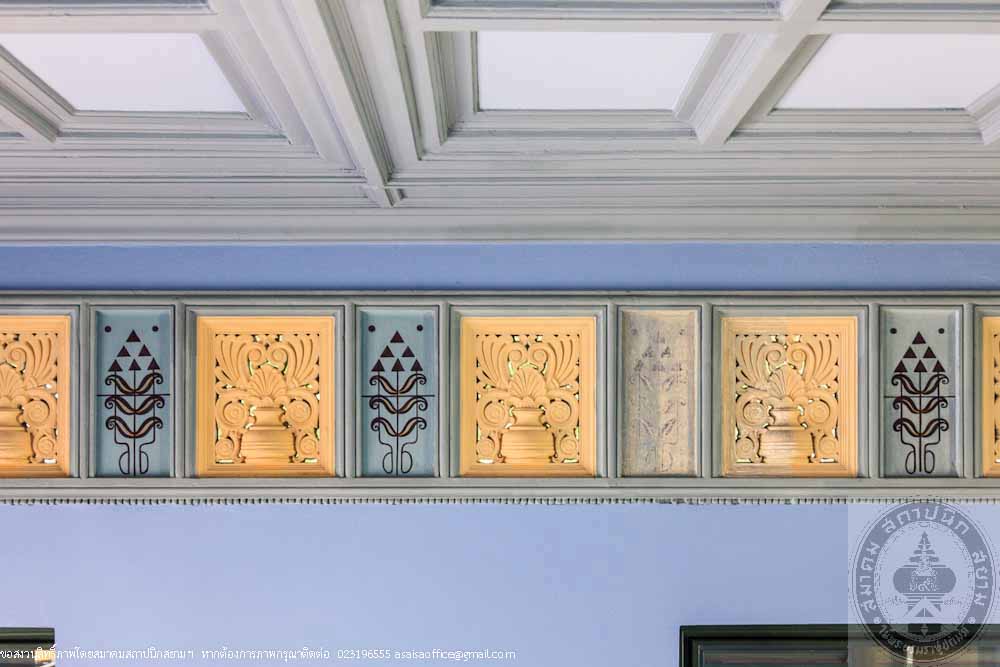
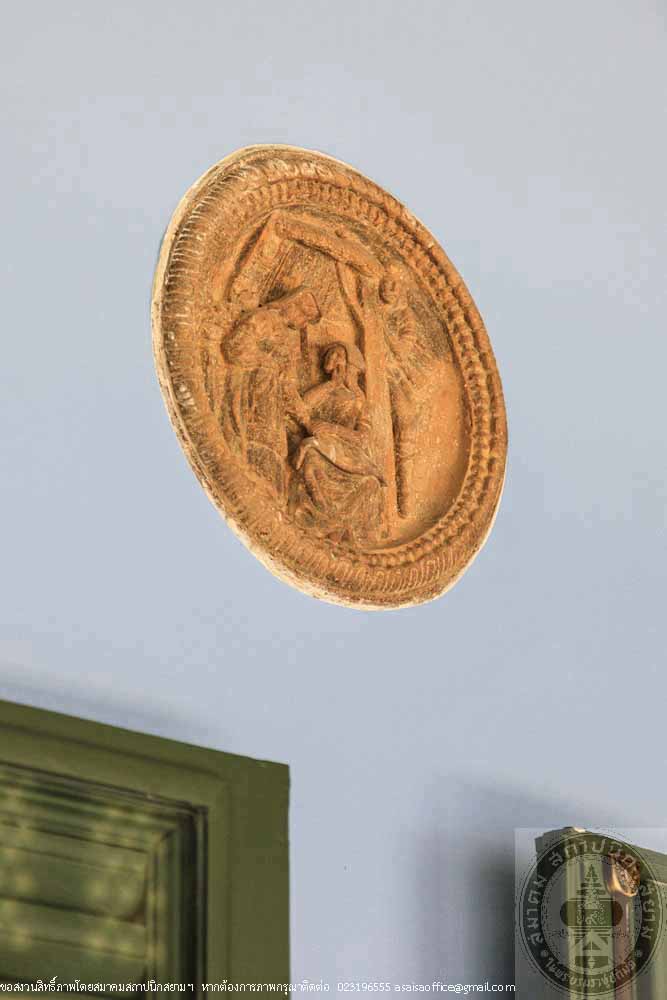
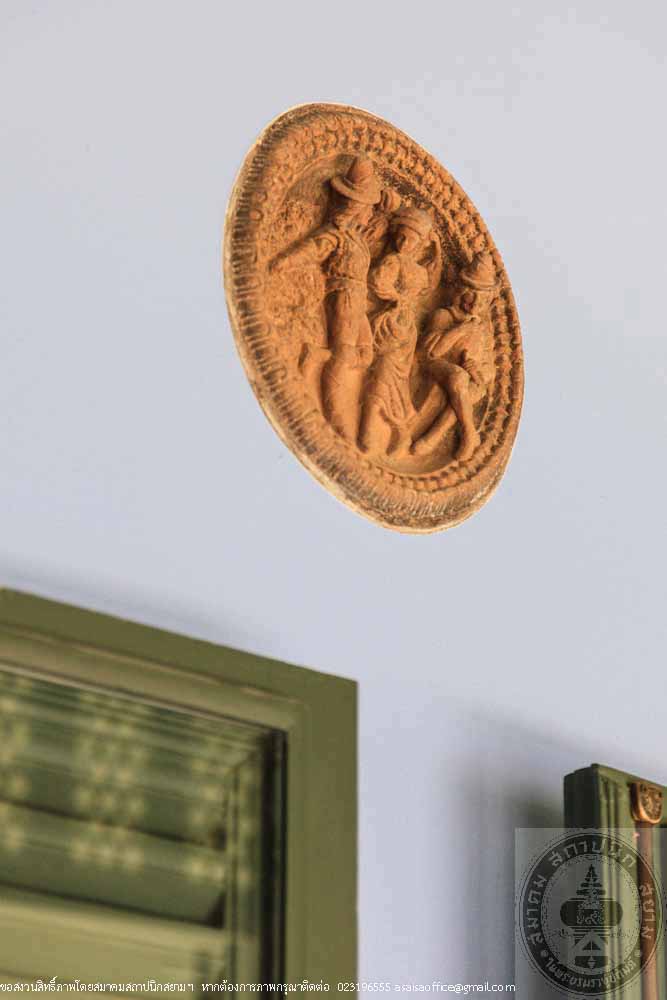
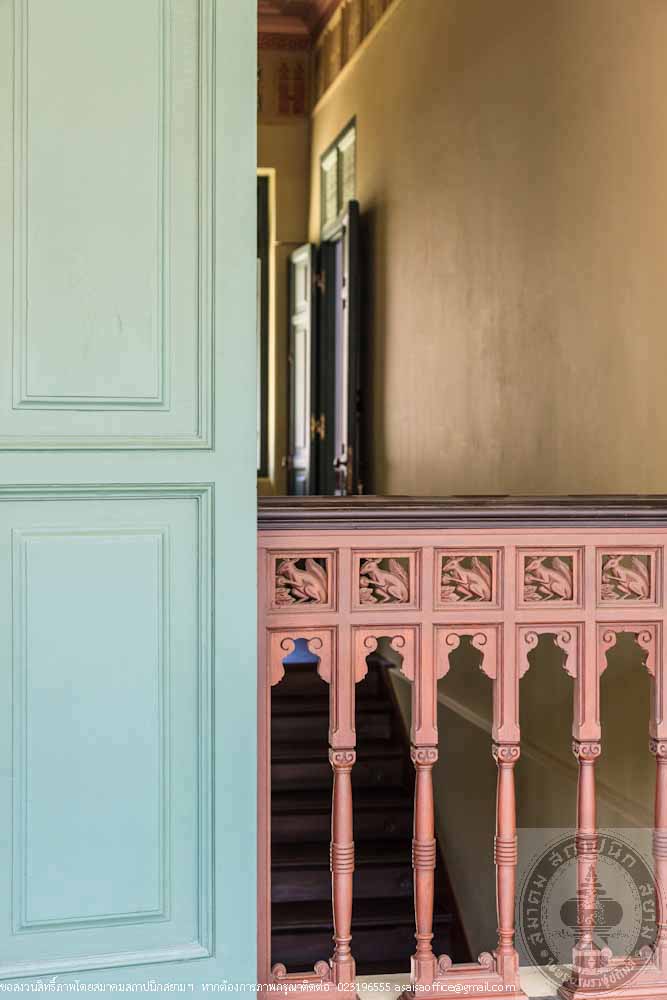
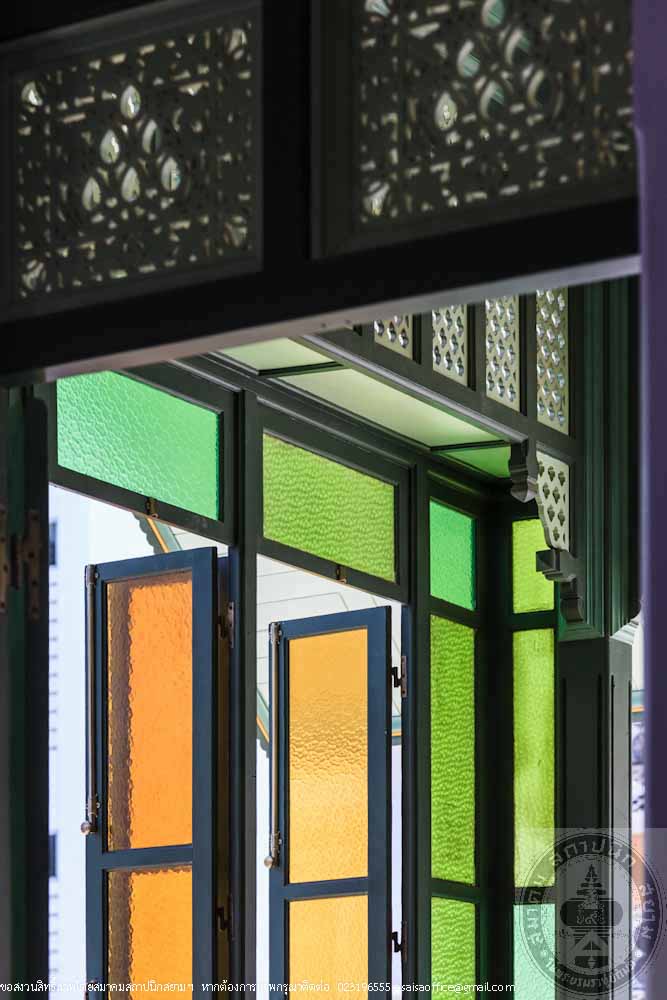
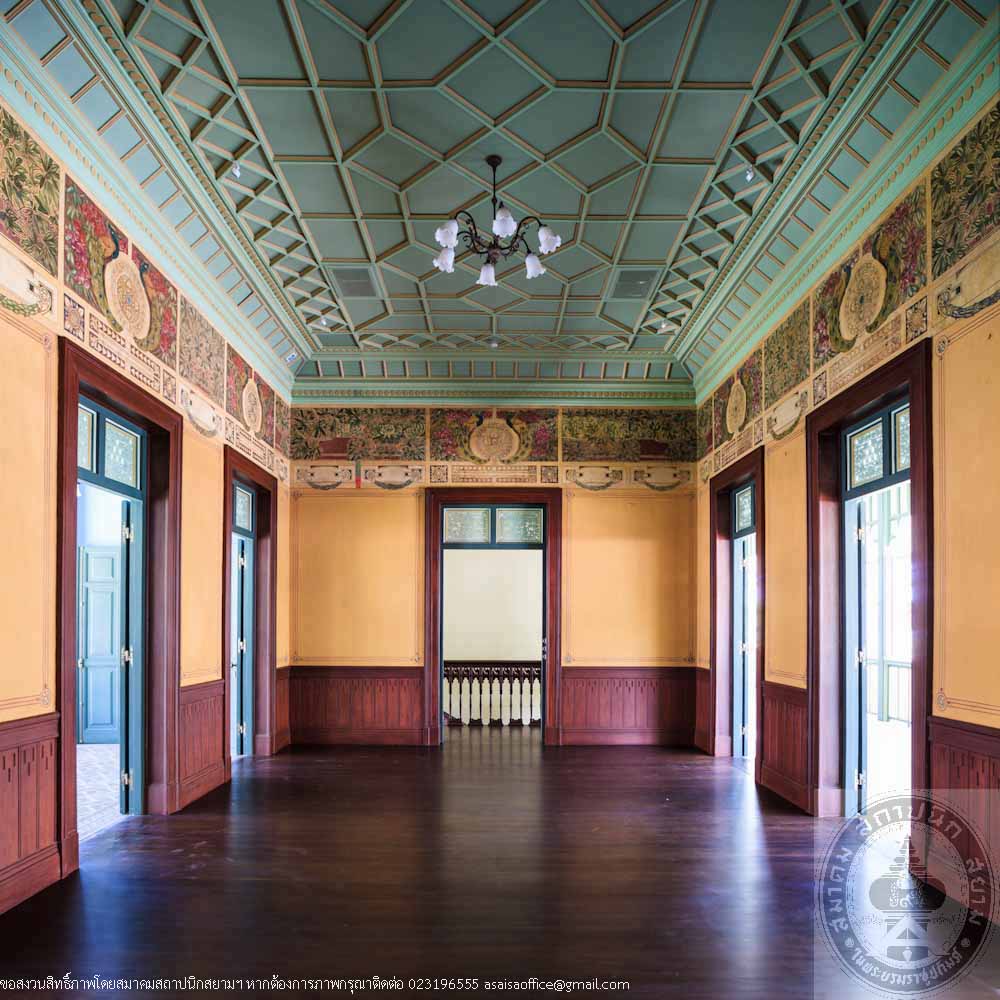
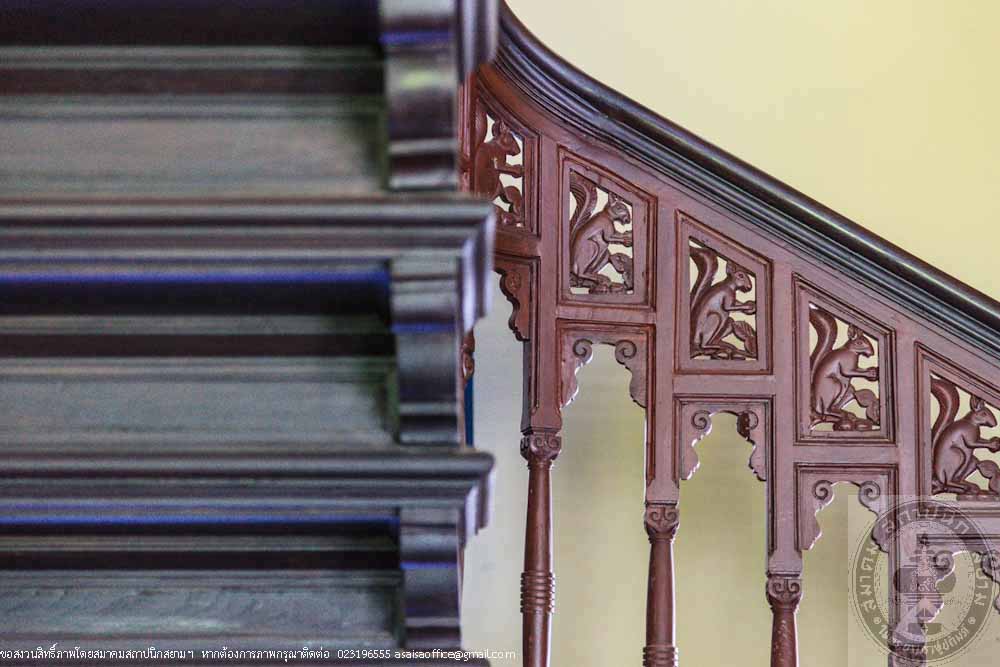
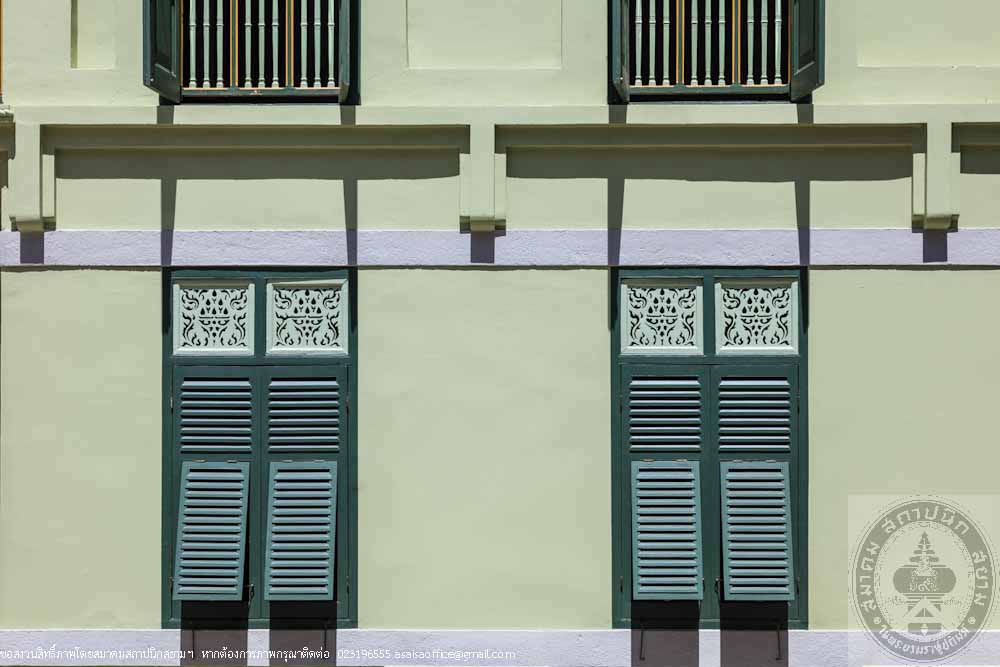
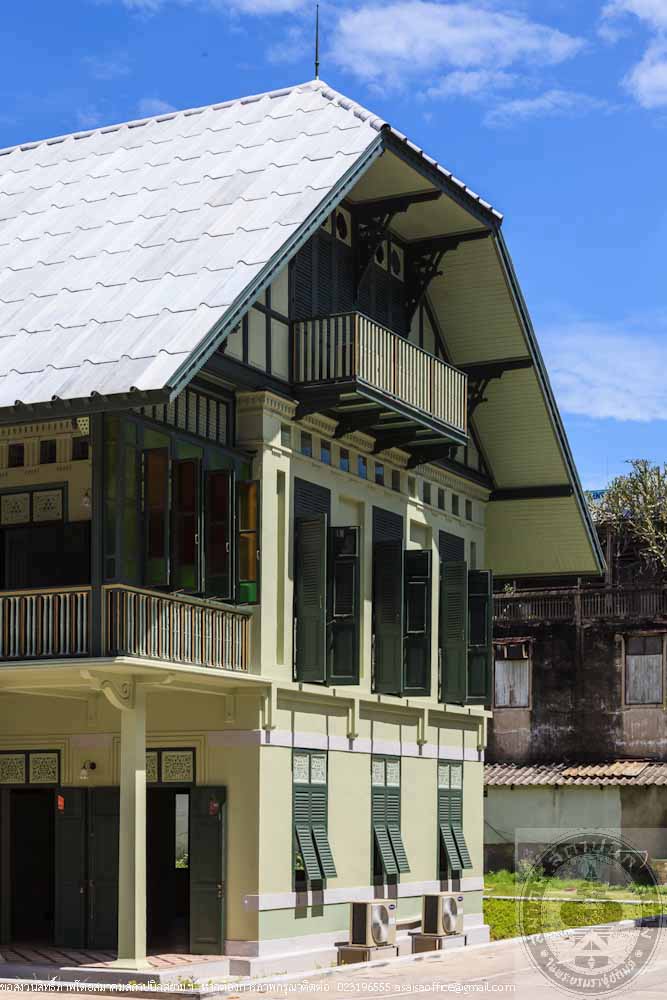
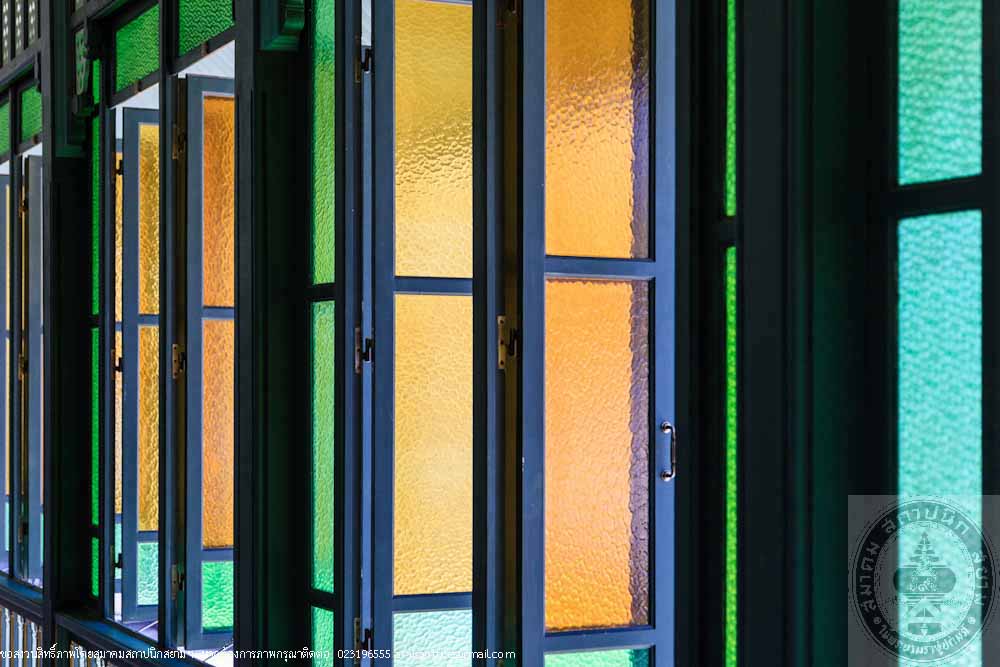
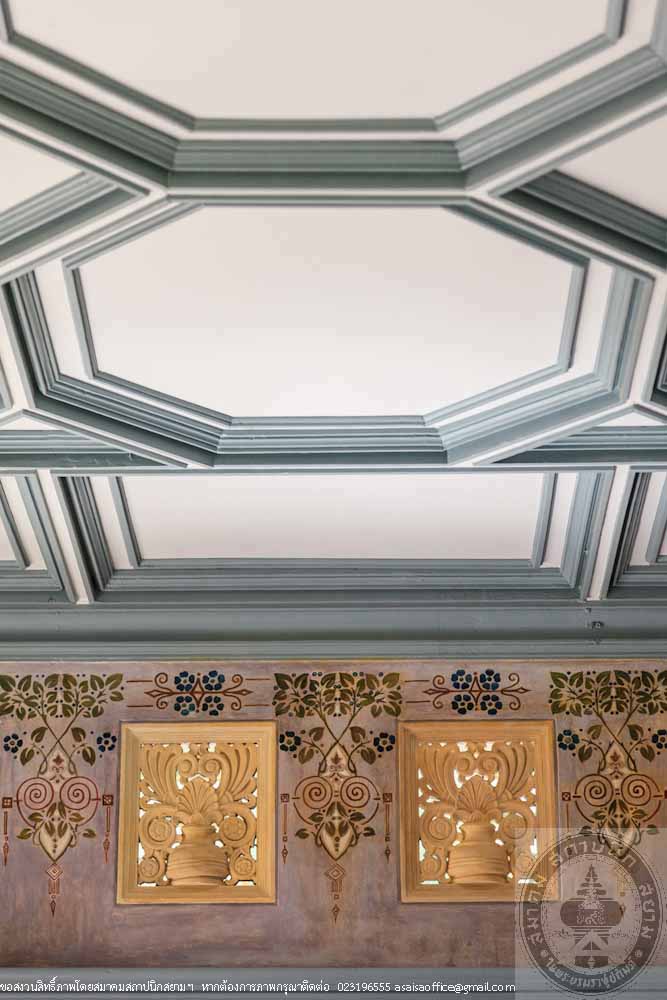
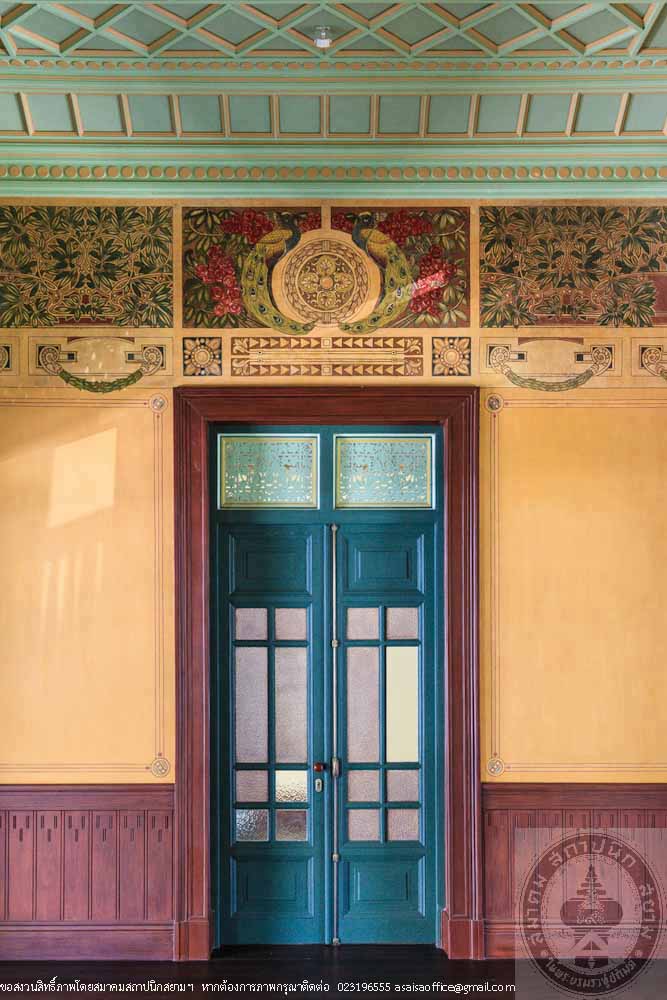
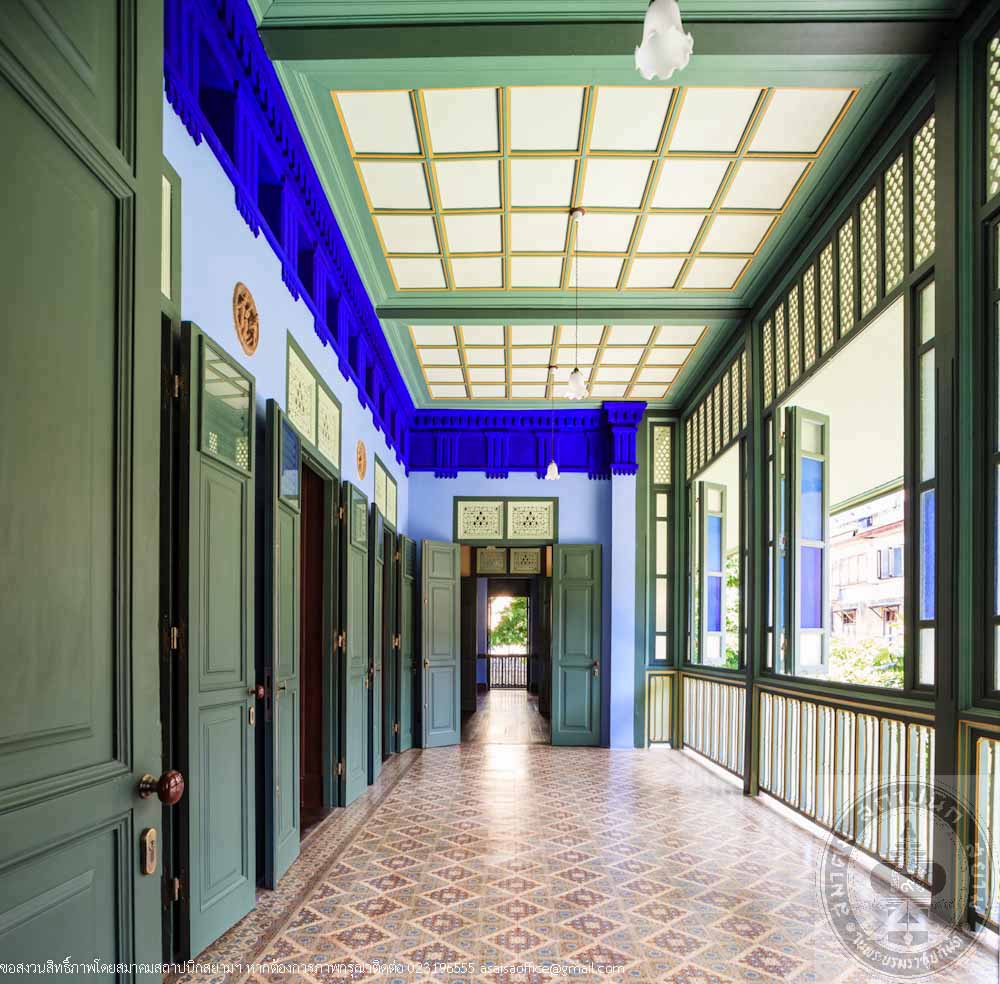
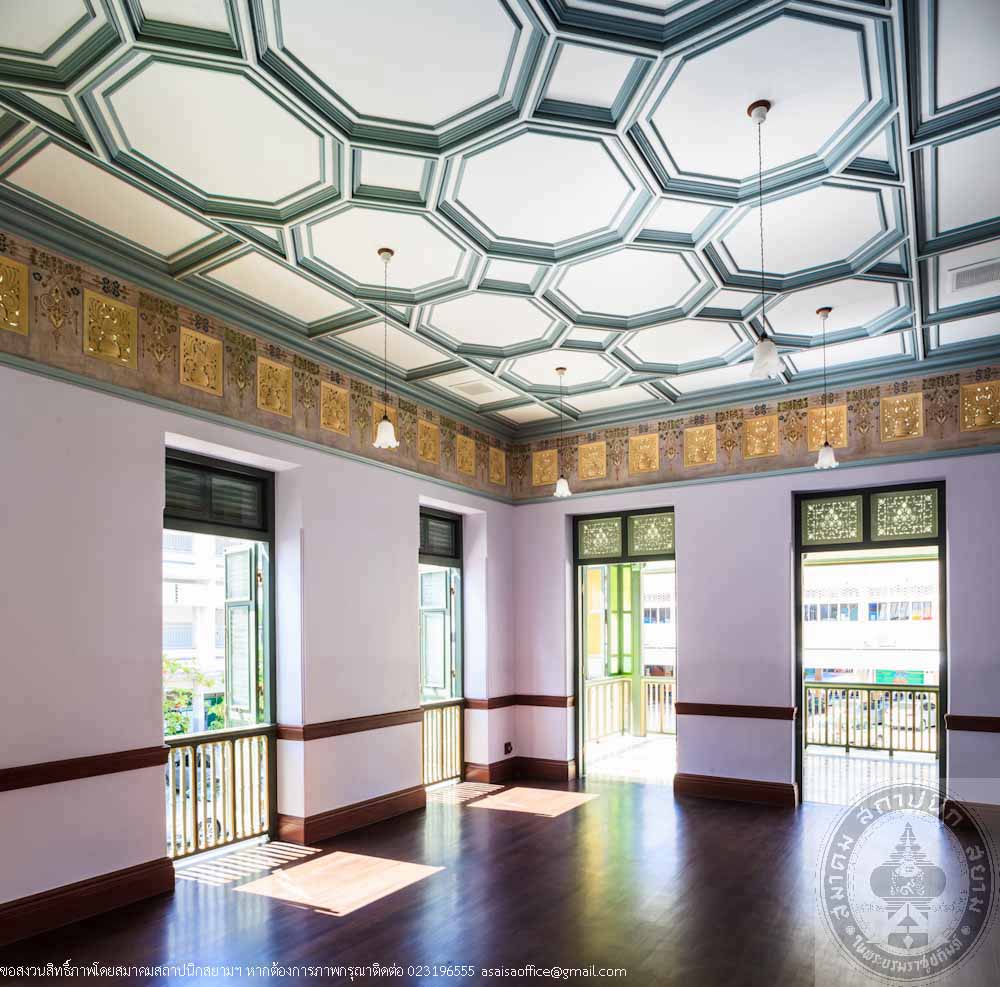
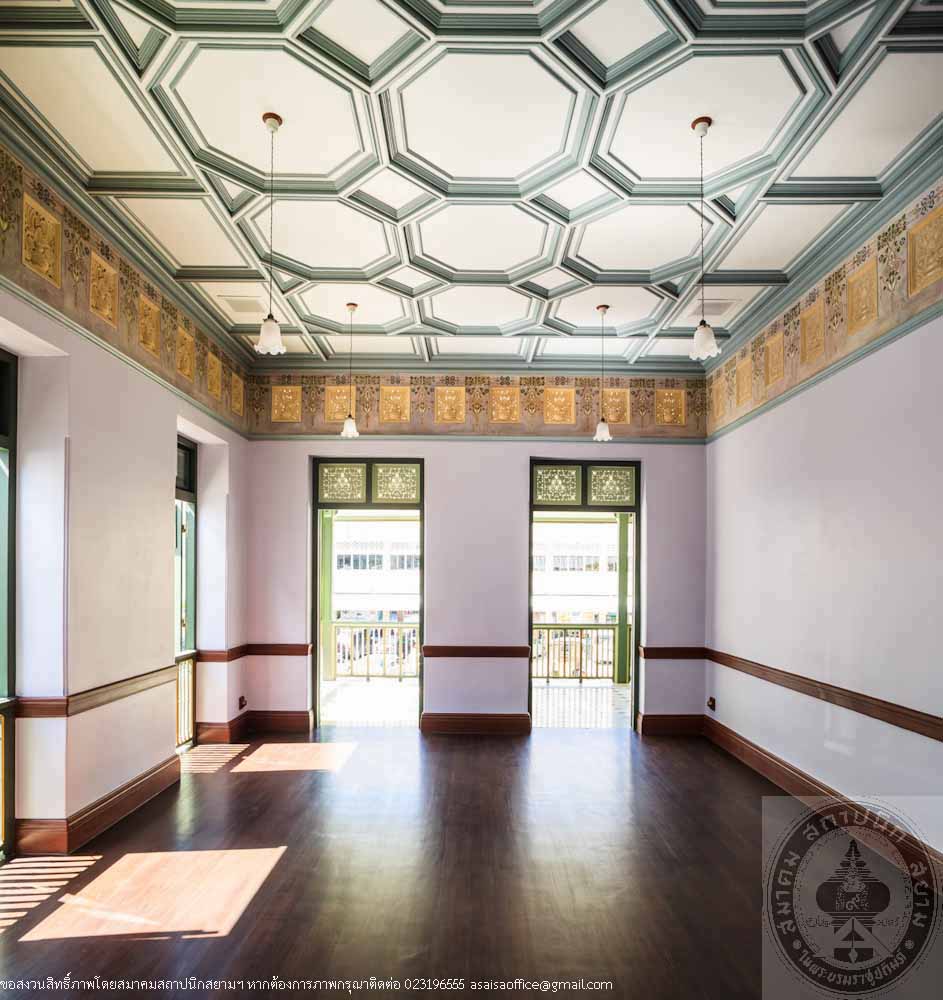
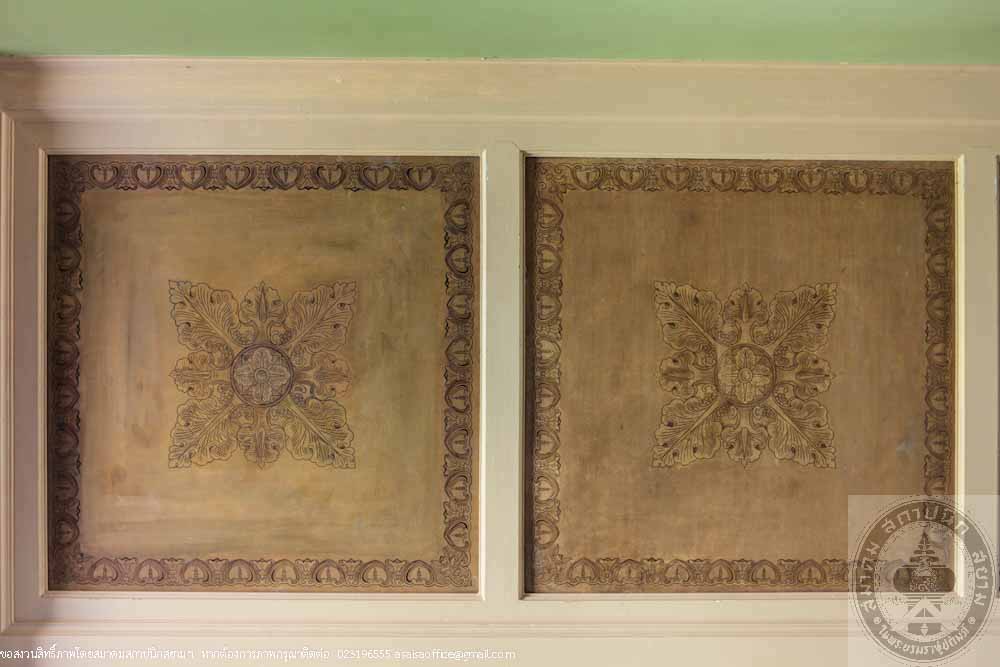
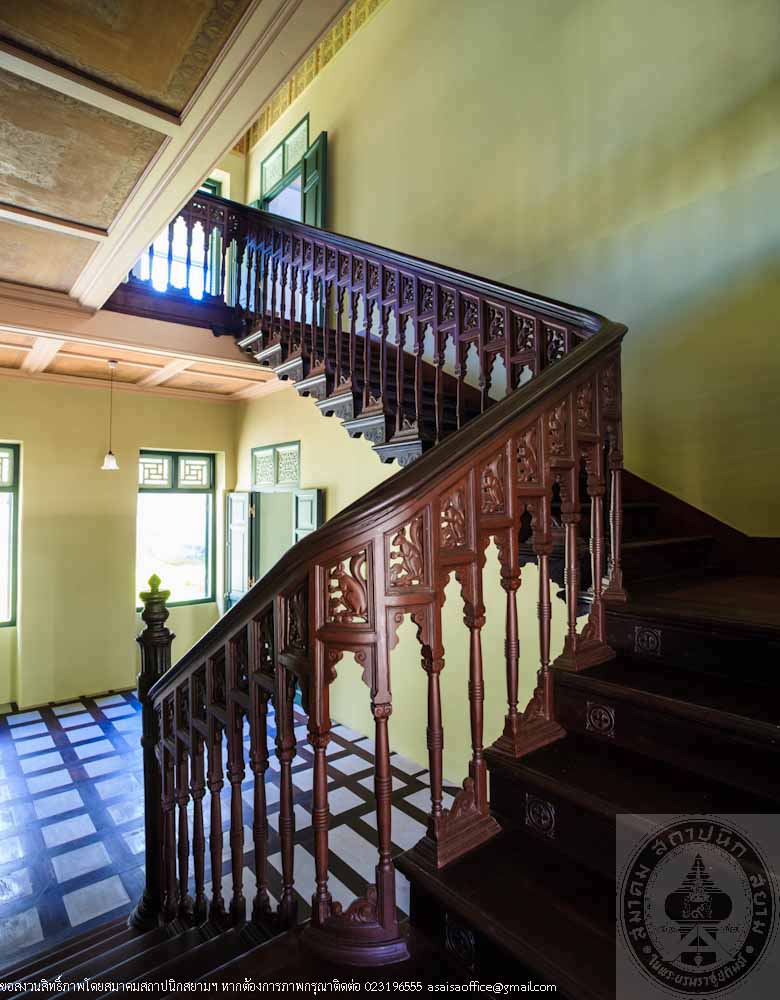
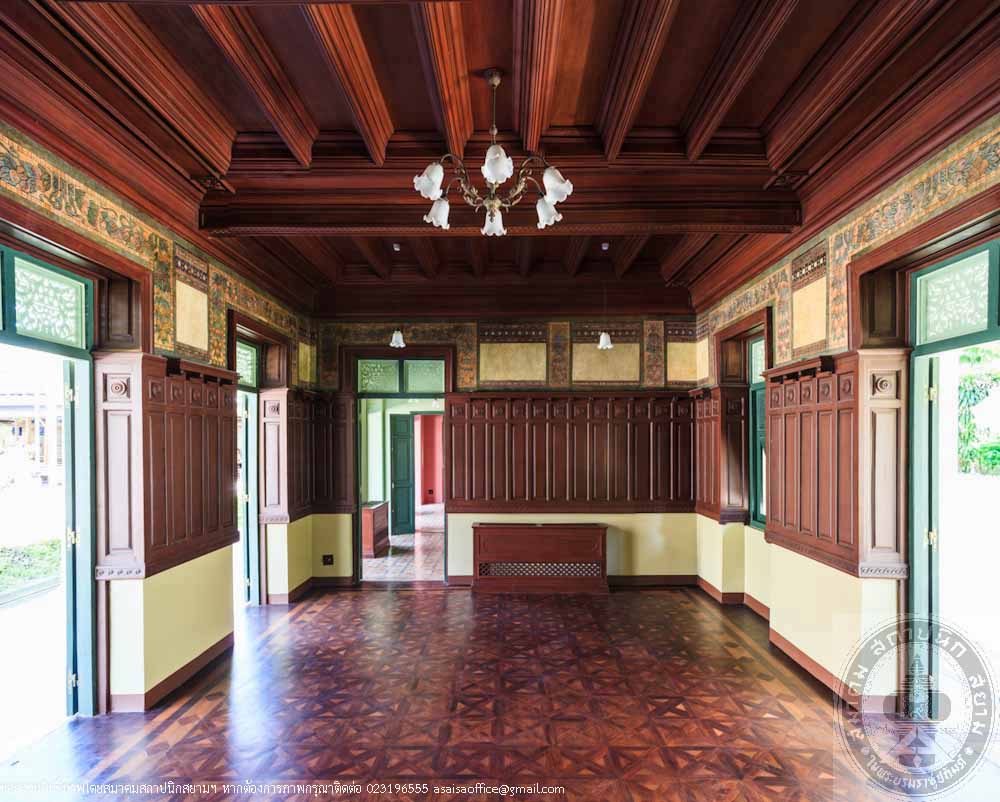
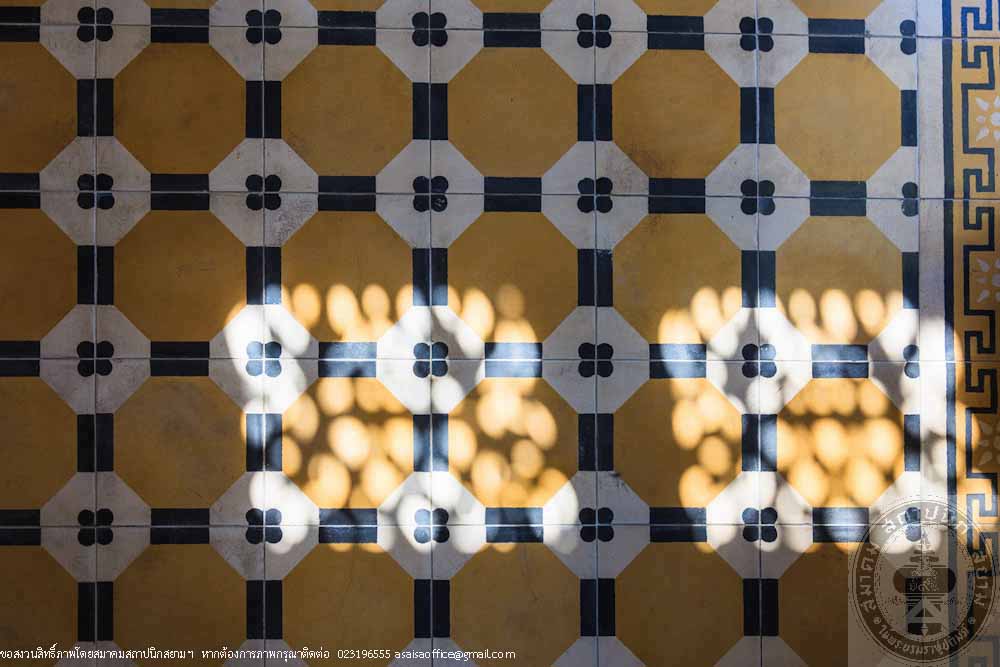
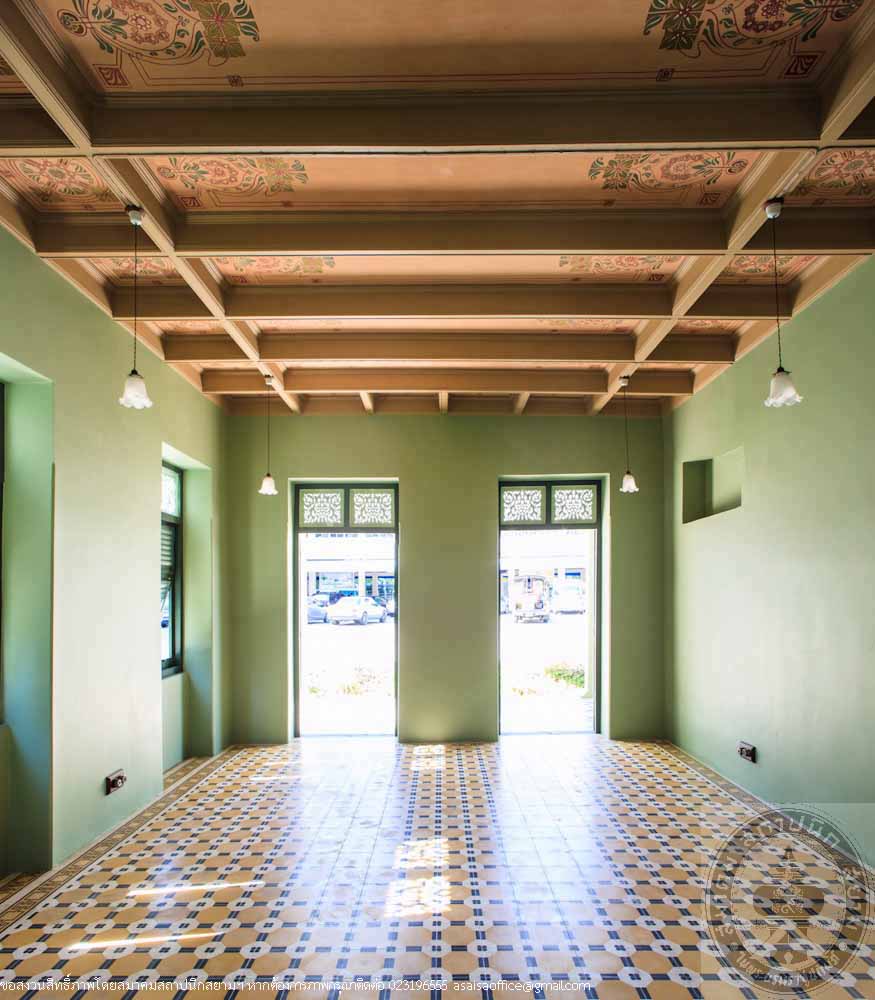
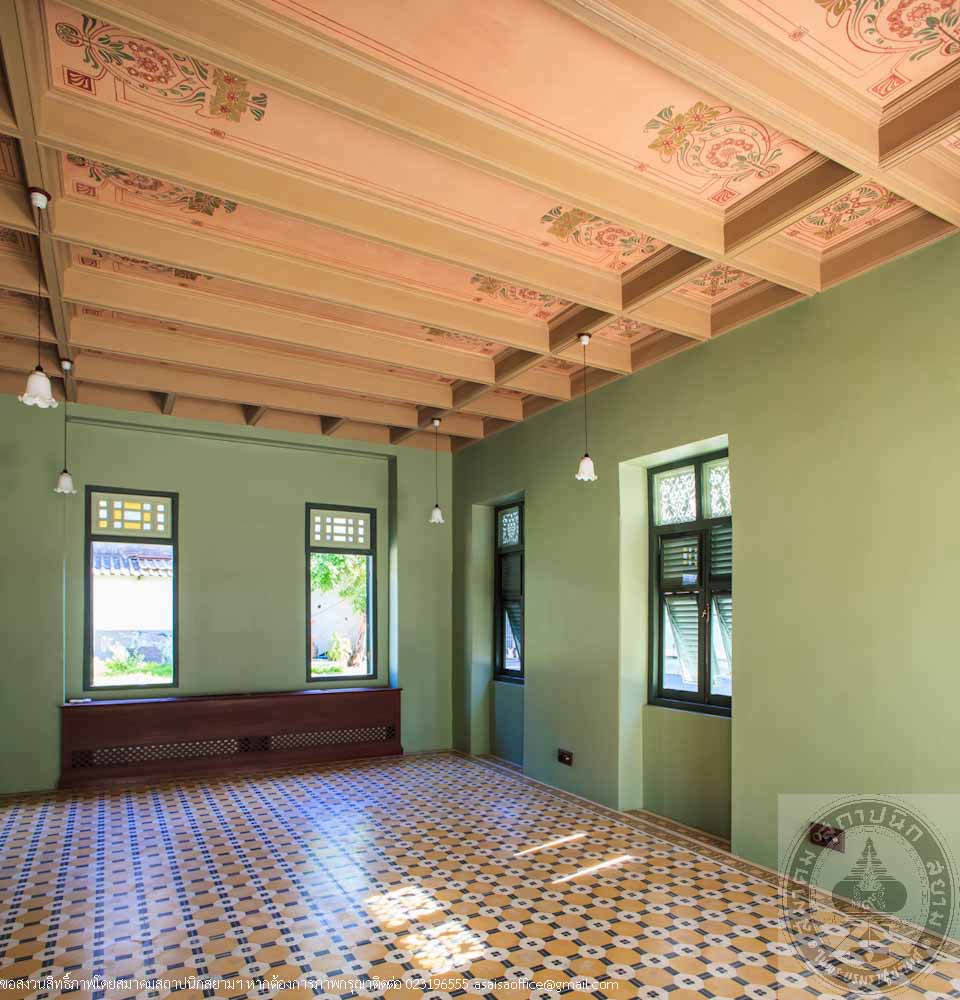
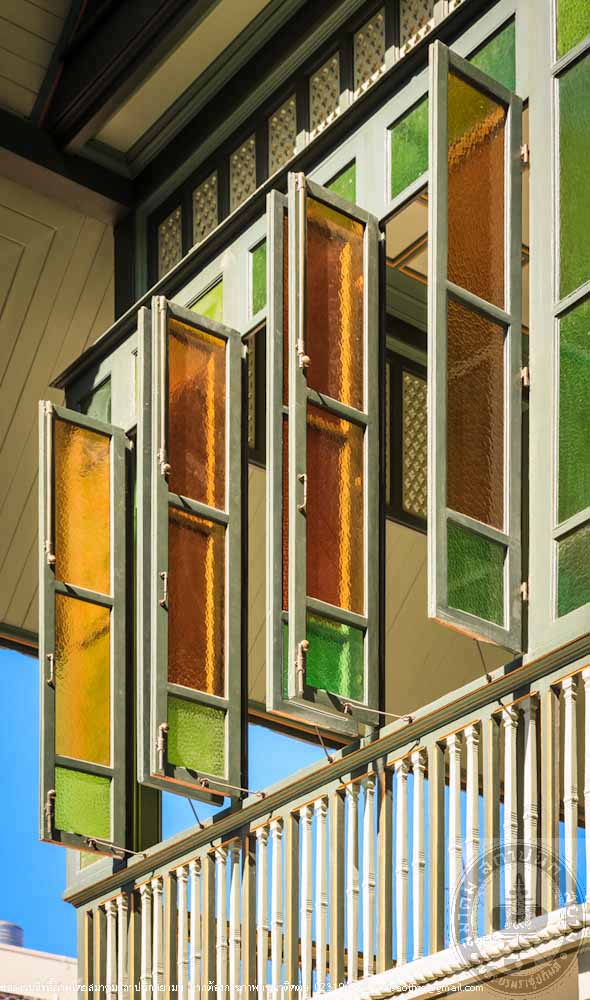
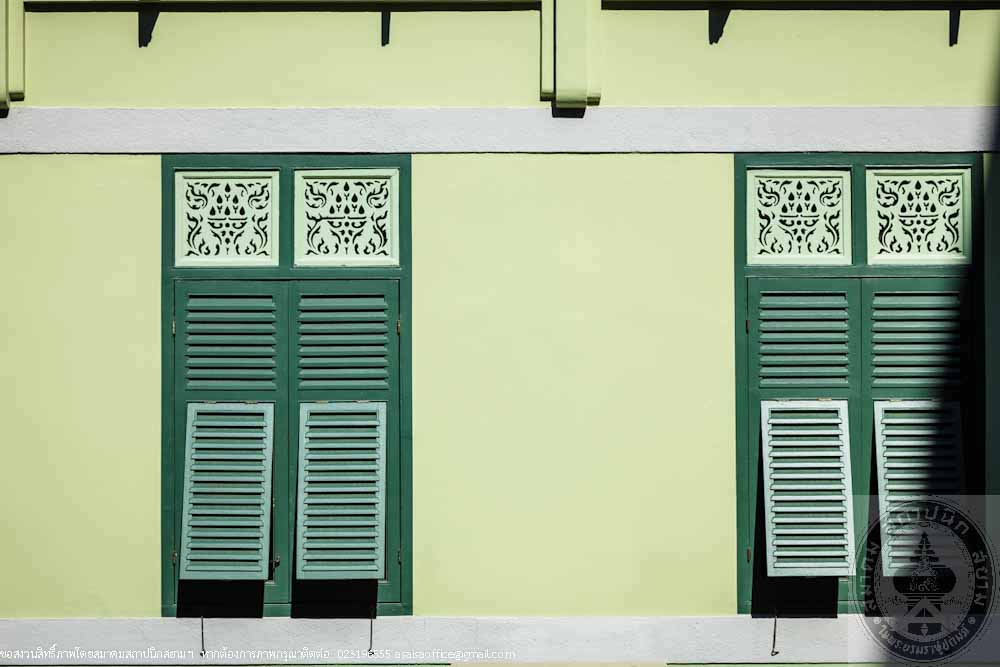
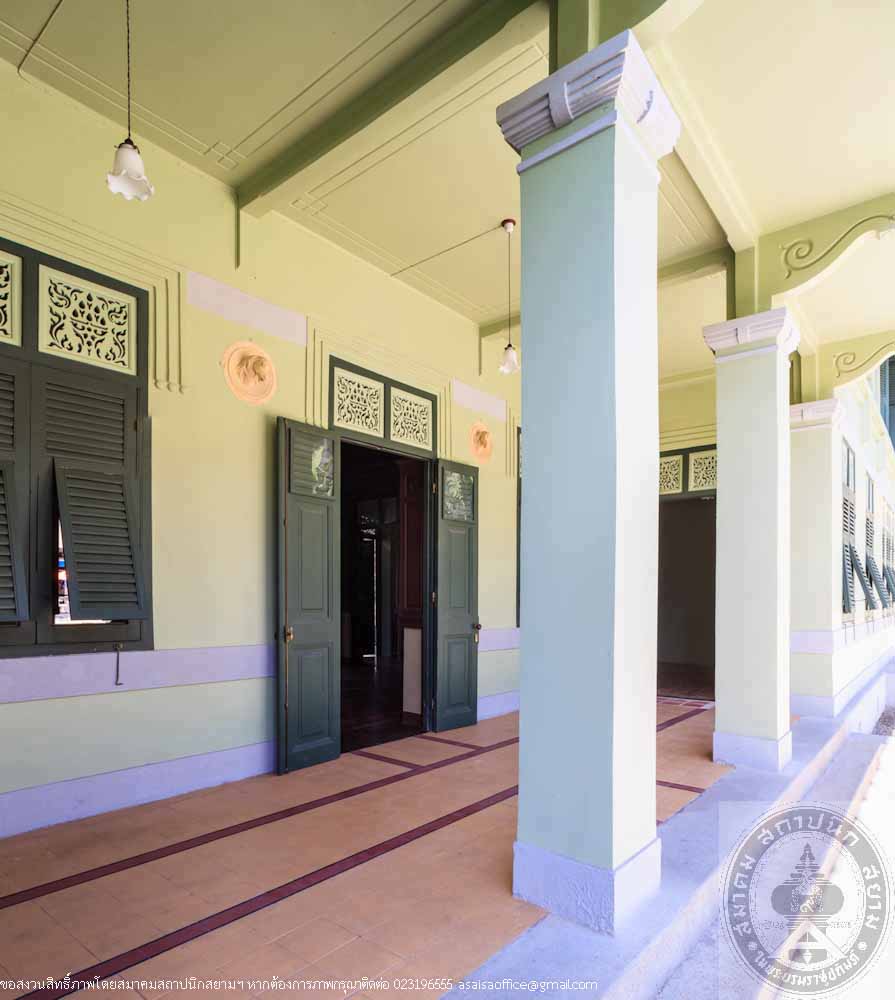
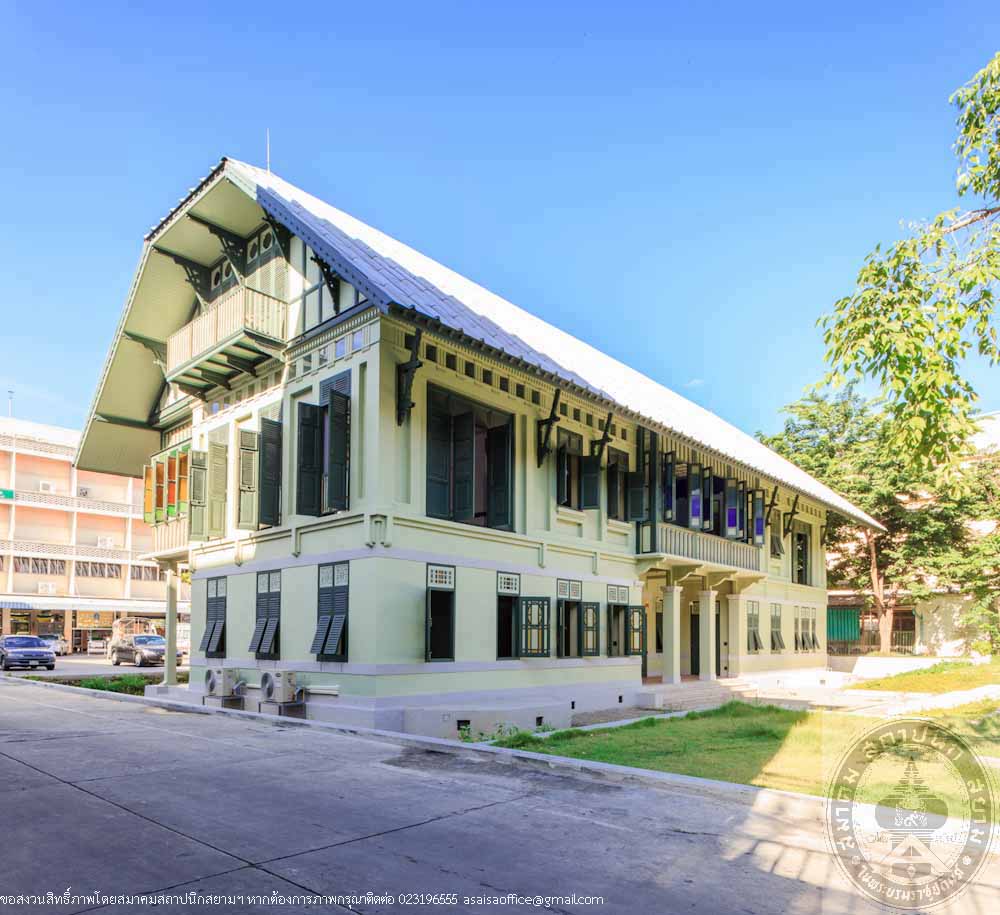
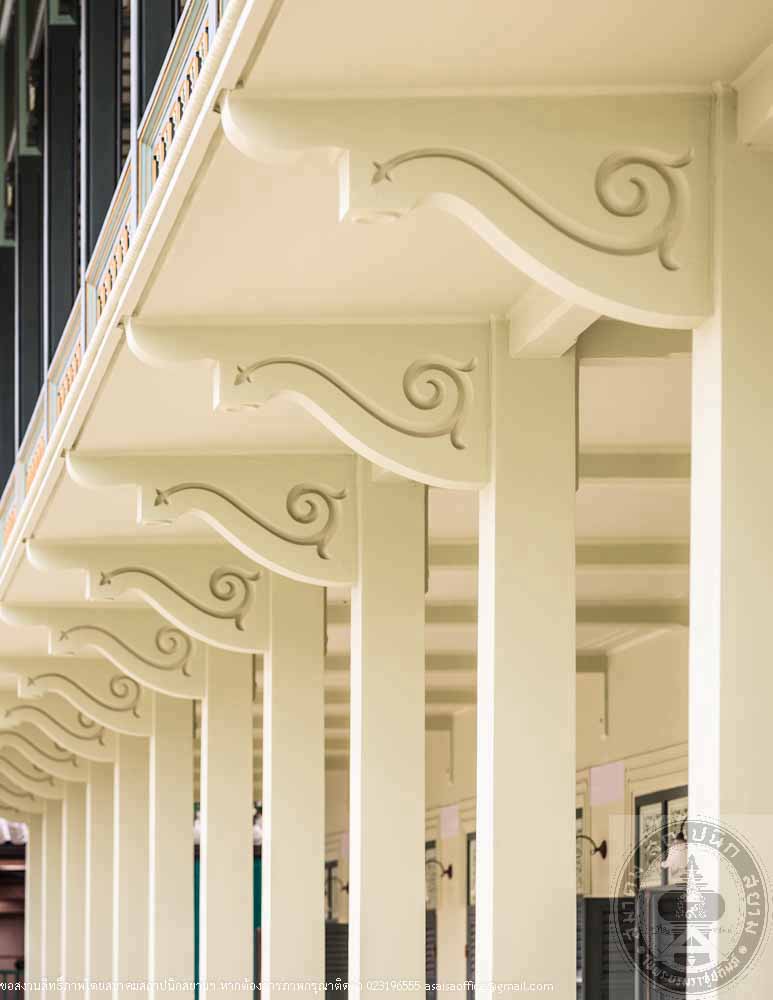
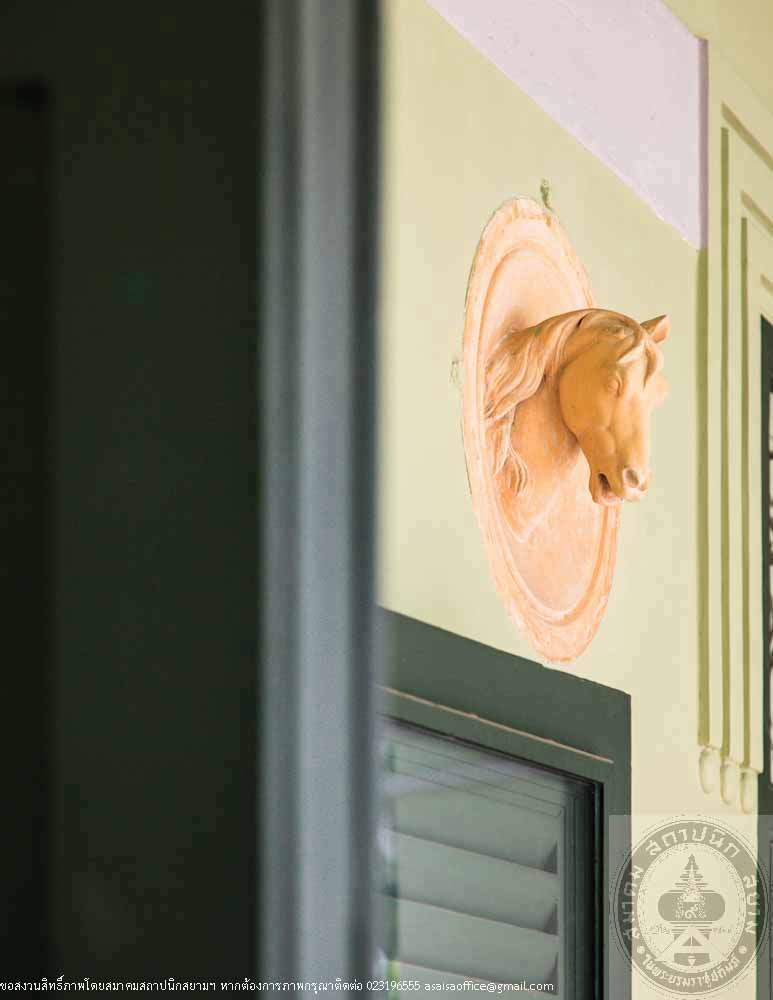
อาคาร 6 แผนกวิชาช่างกลการเกษตร มหาวิทยาลัยเทคโนโลยีราชมงคลอีสาน นครราชสีมา
อ่านเพิ่มเติม
อาคาร 6 แผนกวิชาช่างกลการเกษตร มหาวิทยาลัยเทคโนโลยีราชมงคลอีสาน นครราชสีมา
- ที่ตั้ง คณะวิศวกรรมศาสตร์และสถาปัตยกรรมศาสตร์ มหาวิทยาลัยเทคโนโลยีราชมงคลอีสาน นครราชสีมา
- สถาปนิก/ผู้ออกแบบ อาจารย์จิตเสน รัตนพาหุ
- ผู้ครอบครอง มหาวิทยาลัยเทคโนโลยีราชมงคลอีสาน
- ปีที่สร้าง พ.ศ. 2505
ประวัติ
มหาวิทยาลัยเทคโนโลยีราชมงคลอีสาน นครราชสีมา เดิมมีสถานะเป็นวิทยาลัยเทคนิคภาคตะวันออกเฉียงเหนือ นครราชสีมา โดยมี อาจารย์ ดร.วทัญญู ณ ถลาง ปูชนียบุคคลด้านสถาปัตยกรรมและสิ่งแวดล้อมของประเทศไทยเป็นผู้อำนวยการตั้งแต่ปี พ.ศ. 2500 – 2510 โดยในช่วงเวลาดังกล่าวเป็นช่วงของการบุกเบิก ก่อสร้าง และเริ่มต้นการสอนในวิชาต่างๆ โดยเน้นการผลิตช่างเทคนิคระดับสูงเพื่อรองรับการพัฒนาของประเทศในสถานการณ์ที่ประเทศไทยยังขาดแคลนแรงงานและเครื่องมือเครื่องใช้เกี่ยวกับการก่อสร้างทั้งหลาย ทำให้ผู้บริหารในยุคแรกที่ประกอบไปด้วยกลุ่มสถาปนิกและวิศวกรต้องใช้แนวคิดในการก่อสร้างอาคารให้มีประโยชน์ใช้สอยสูงสุดและประหยัดงบประมาณอันสอดคล้องกับแนวทางของสถาปัตยกรรมแบบสมัยใหม่ในยุคนั้น ด้วยการออกแบบอาคารและคำนวณโครงสร้างโดยอาจารย์ที่สอนอยู่ในสถาบันและใช้แรงงานของนักศึกษาเป็นหลักในการก่อสร้าง
แผนกวิชาช่างกลเกษตรได้เปิดทำการสอนขึ้นในปี พ.ศ. 2506 เพื่อมุ่งหมายผลิตช่างเทคนิคระดับสูงที่มีความรู้ ความเชี่ยวชาญในการซ่อมบำรุงเครื่องมือ เครื่องจักรที่ใช้ในงานด้านการเกษตร อาคารเรียนจึงถูกออกแบบเพื่อสนองตอบต่อประโยชน์ใช้สอยดังกล่าวโดยมีทั้งห้องเรียนและโรงงานสำหรับการฝึกปฏิบัติการซ่อมบำรุง ตัวอาคารมีลักษณะเป็นสถาปัตยกรรมสมัยใหม่ ที่โดดเด่นเป็นเอกลักษณ์ มีความสมดุลแบบสมมาตร เป็นการออกแบบเส้นสายอาคารให้มีลักษณะเบา ลอยตัว และแสดงสัจจะของวัสดุ โดยเฉพาะบันไดทางขึ้นด้านหน้าและหลังคาแผ่นพับคอนกรีตที่มีการออกแบบและก่อสร้างอย่างประณีต มีการวางผังพื้นอย่างแยบยลโดยด้านหน้าทำเป็นอาคารสองชั้น ชั้นล่างเป็นห้องเรียนและชั้นบนเป็นสำนักงาน มีการเว้นที่ว่างแบบเล่นระดับระหว่างผังพื้นที่อาคารด้านหน้ากับด้านในของอาคารที่เป็นโรงฝึกงานออกแบบเป็นชั้นเดียวโล่ง เพดานสูง มีการเลือกใช้วัสดุที่ทำให้เกิดการถ่ายเทอากาศระหว่างอาคารด้านหน้าและด้านหลังถึงกันได้อย่างมีประสิทธิภาพ
อาคารแผนกวิชาช่างกลเกษตรถูกใช้งานต่อเนื่องเรื่อยมาตั้งแต่เริ่มต้นเปิดสอนในระดับประกาศนียบัตรวิชาชีพและประกาศนียบัตรวิชาชีพชั้นสูงสาขาช่างกลเกษตร แม้เวลาจะผ่านไปถึงห้าสิบปีที่มีพัฒนาการของแผนกวิชาช่างกลเกษตรที่ได้มีการเปิดสอนในสาขาอื่นๆ ที่เกี่ยวเนื่องในระดับปริญญาตรีในเวลาต่อมาจนถึงปัจจุบัน แต่อาคารหลังนี้ก็ยังมีรูปลักษณ์และการใช้งานที่ไม่แตกต่างไปจากเมื่อสมัยแรกเริ่ม โดยสัดส่วนอาคารทั้งหมดยังคงเดิม มีการซ่อมบำรุงเล็กน้อยในบางจุดที่เสื่อมโทรมตามกาลเวลาแต่ยังรักษาโครงร่างเดิมของอาคารไว้เป็นอย่างดี
Building 6, Agricultural Machinery Engineering Department, Rajamangala University of Technology Isan Nakhon Ratchasima.
- Location Faculty of Engineering and Architecture Rajamangala University of Technology Isan Nakhon Ratchasima
- Architect Designer Jittasen Rattanapahu
- Owner Rajamangala University of Technology Isan
History
Rajamangala University of Technology Isan Nakhon Ratchasima was formerly known as Northeastern Technical College Nakhon Ratchasima under the management of Dr. Wathunyu Na Thalang, a venerable person in architecture and environments, from 1957 to 1967. At that time, the college was just opened up, buildings were under construction and different courses were started by focusing on producing high level technicians to support the development of the country during the market’s shortage of skilled labors and construction machinery. Accordingly, the administrators in the early period of the college which consisted mostly of architects and engineers had came up with the design concepts of maximizing building utility and minimizing the construction cost which conformed to the nature of modern architecture. Building design and construction estimate performed by college instructors at the time and students were the main source of labor force in the construction.
Agricultural Machinery Engineering Department was founded in 1963 to the purpose of producing skilled technicians with knowledge and expertise in the agricultural machinery maintenance. The Department’s building was then designed to respond to such function with classrooms and workshops for training. The building acclaimed its unique and outstanding features in modern architecture and is symmetrically balanced. The building structure is designed to be weightless and floating and to reveal genuineness of materials particularly the front entrance stairs and the concrete folded plate roof which were meticulously designed and constructed. Smartly designed floor plan, the front part has two stories – classrooms on ground floor and offices on second. There is a layering of space between the front part and the workshop at the rear which is a single story open floor plan with high ceiling. The use of materials that effectively create good ventilation through both front and rear parts.
Agricultural Machinery Engineering Department building has been in continuous use since the beginning when the college was still offering diploma programs in agricultural machinery engineering. After fifteen year, through all the developments of the Agricultural Machinery Engineering Department when other related Bachelor degree programs were added until now, the building remains in its original form and functions. The shape of the building is the unchanged with minimal repairs on parts that worn out over time while maintaining the origin structure of the building.
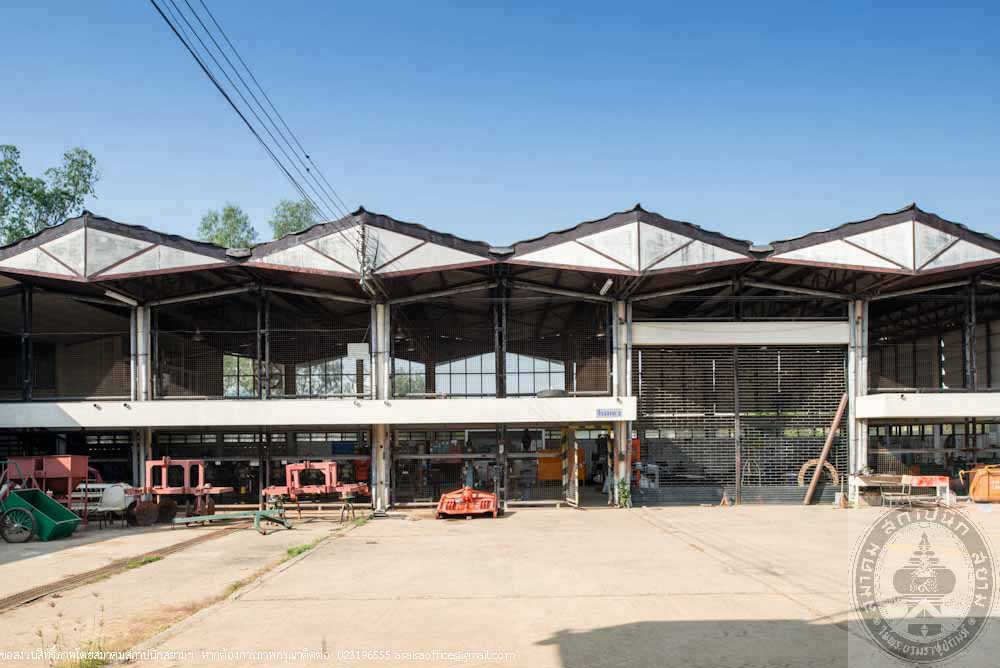
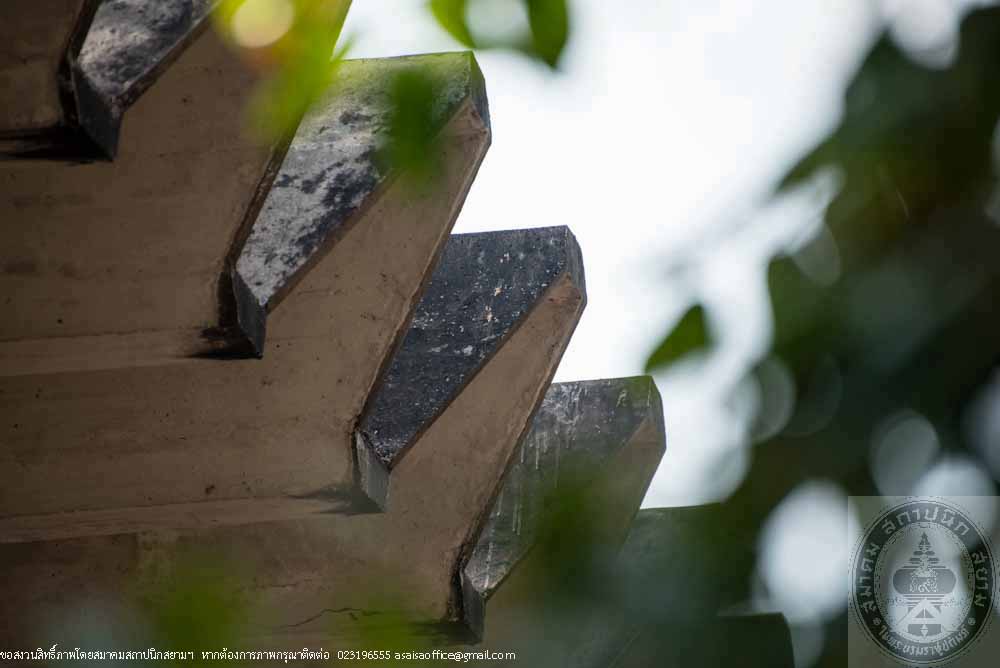
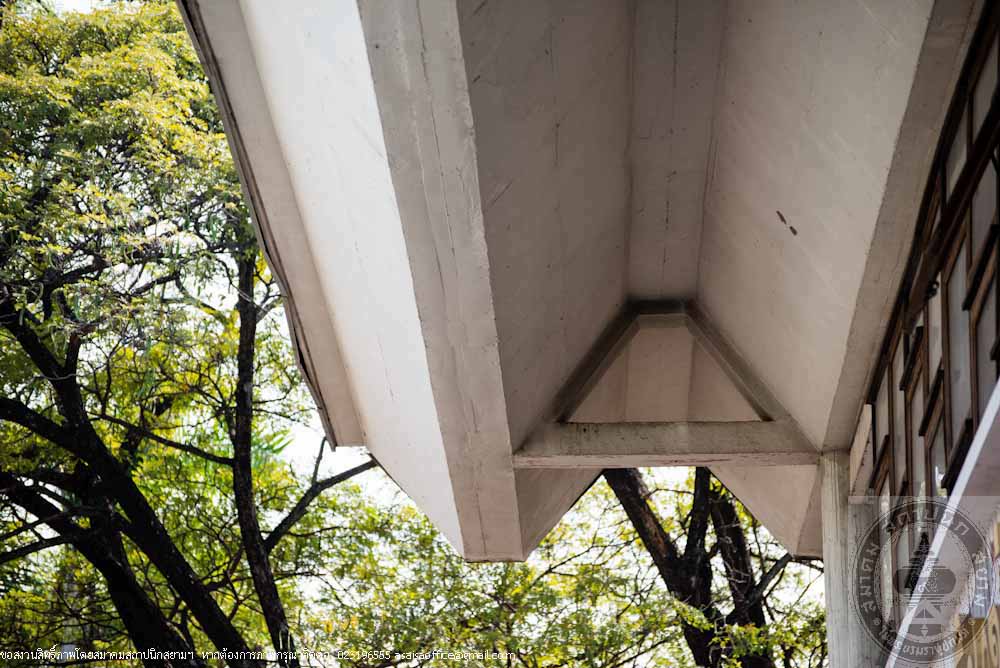
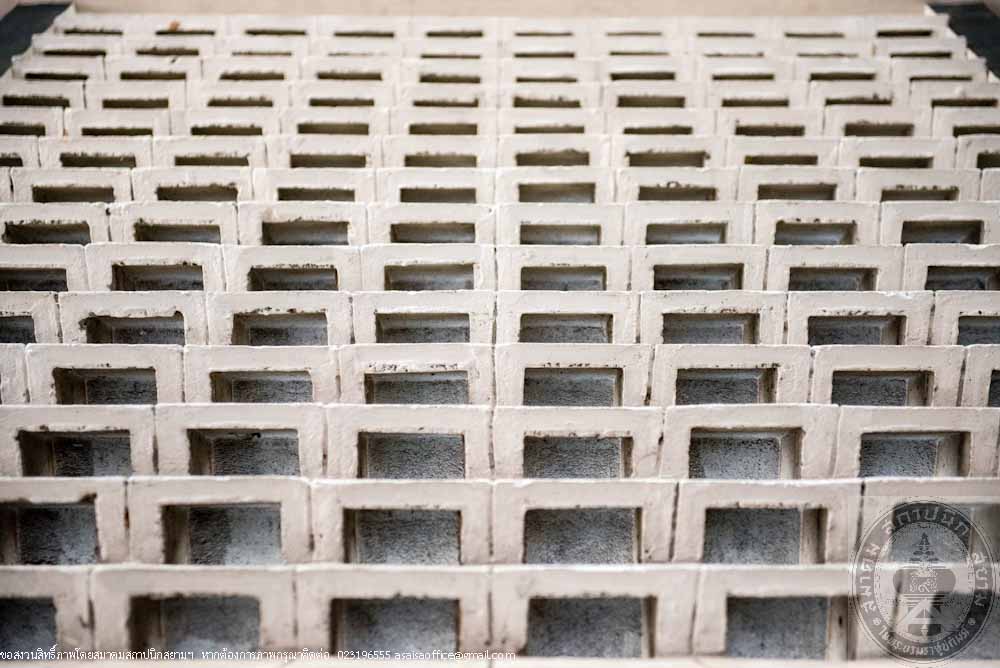
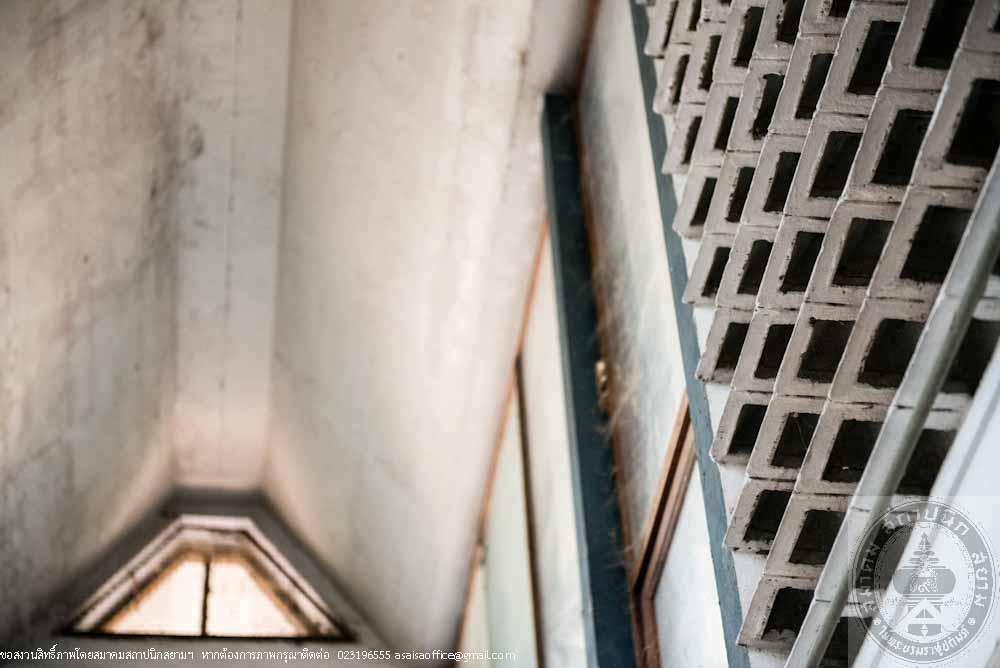
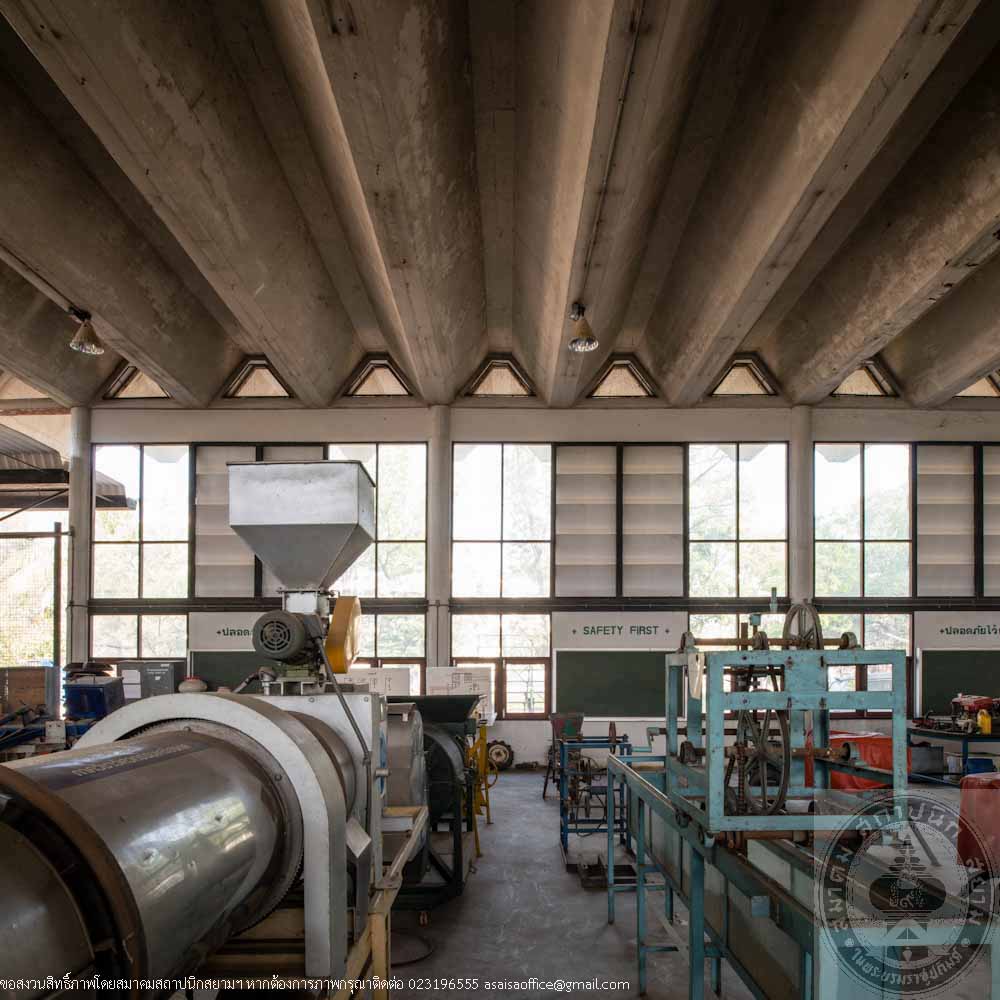
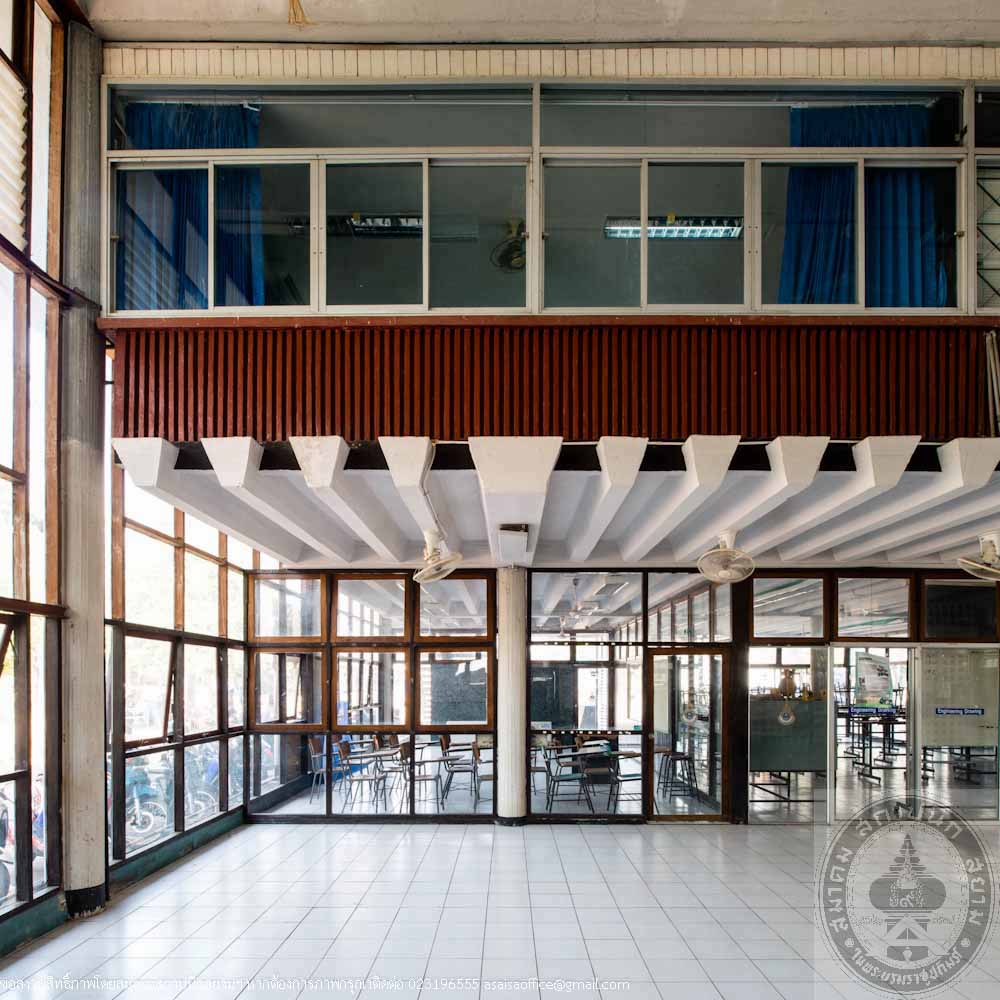
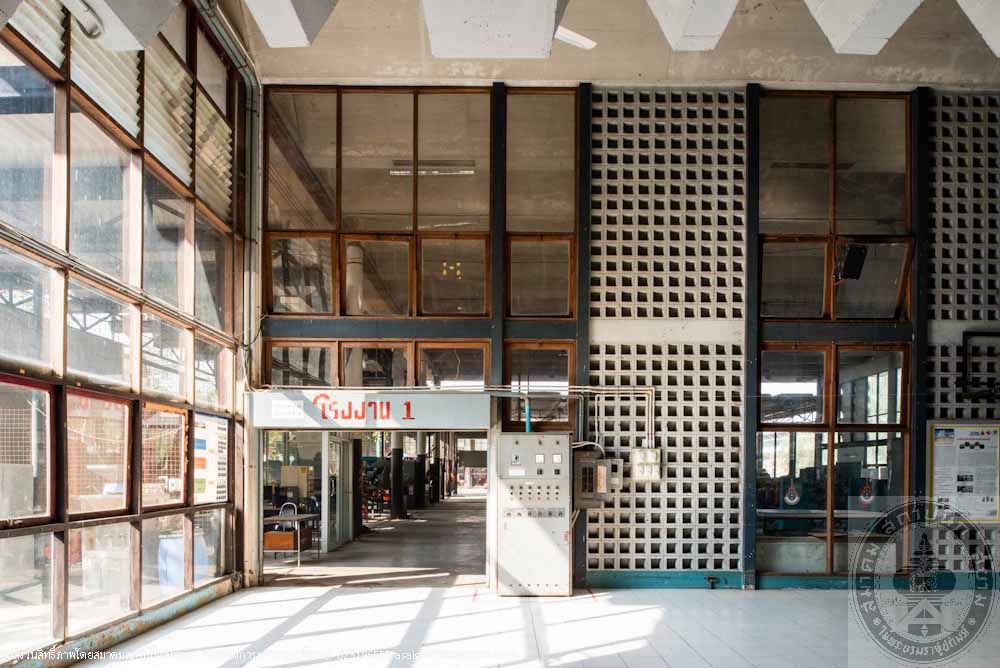
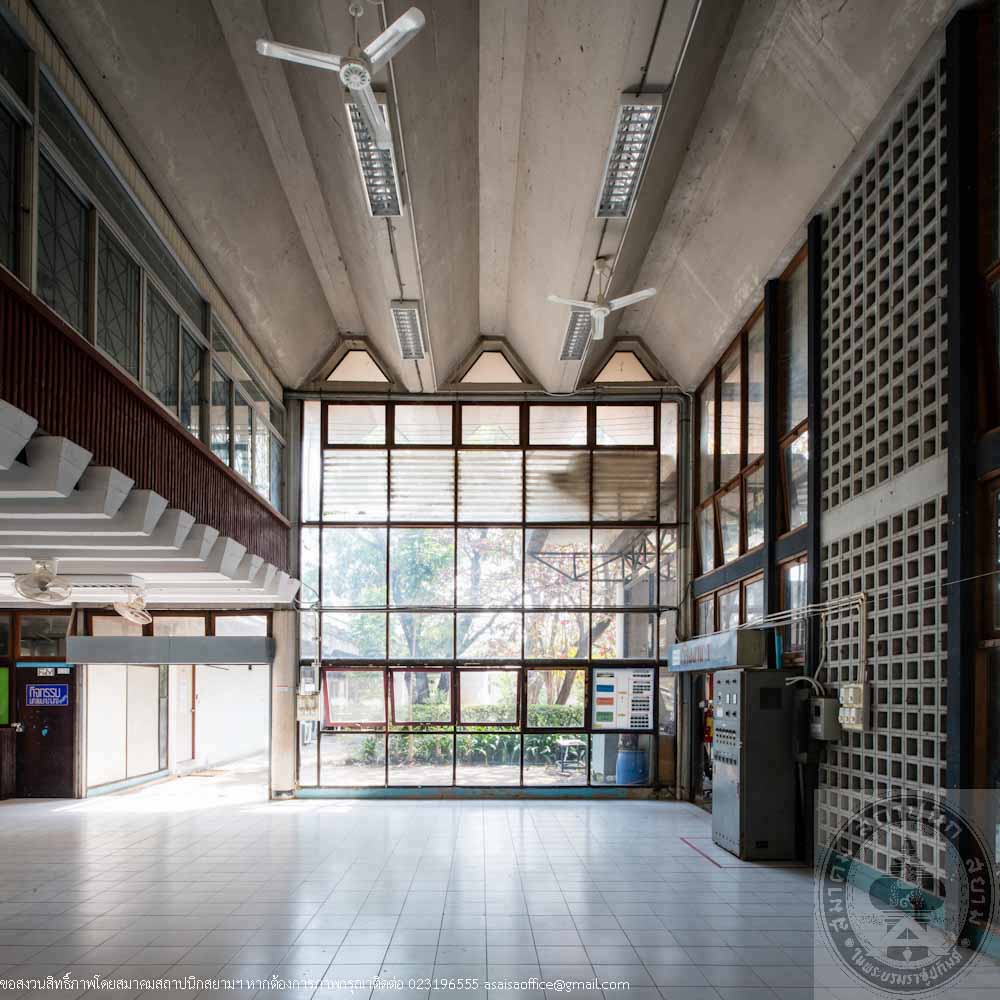
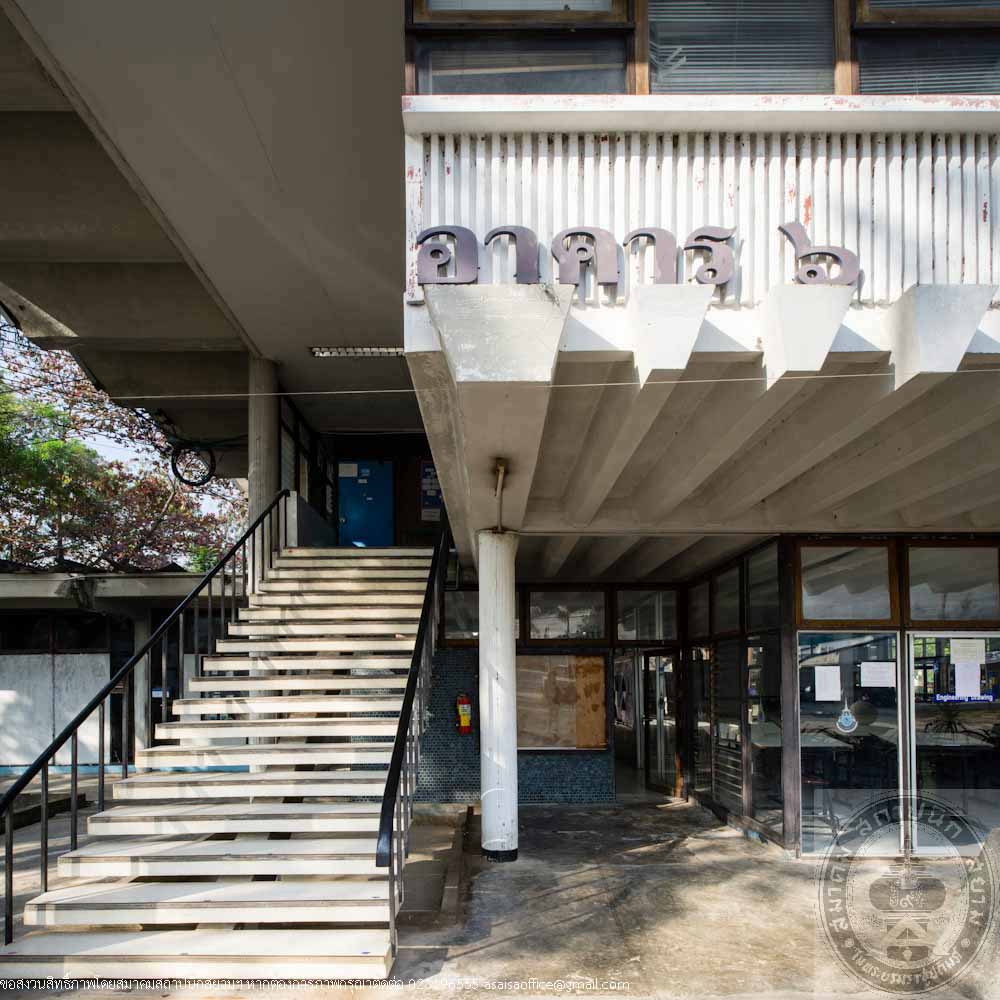
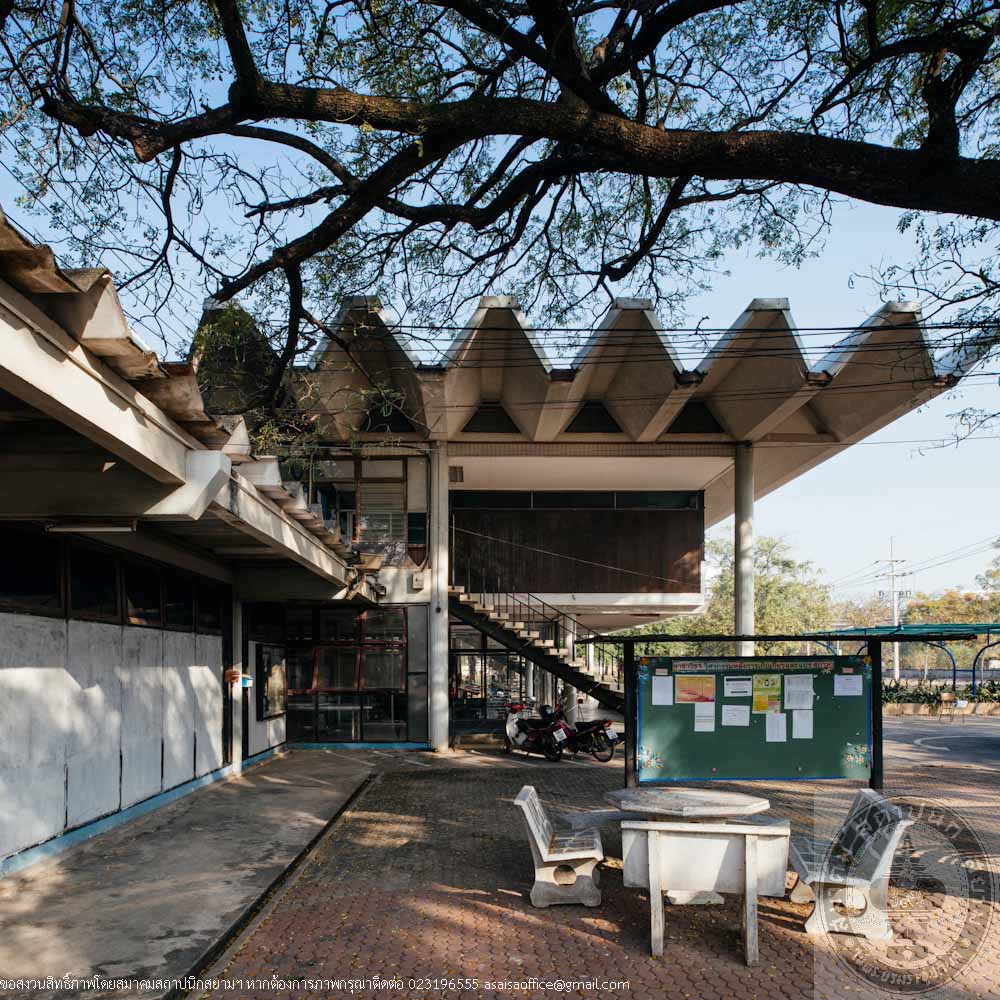
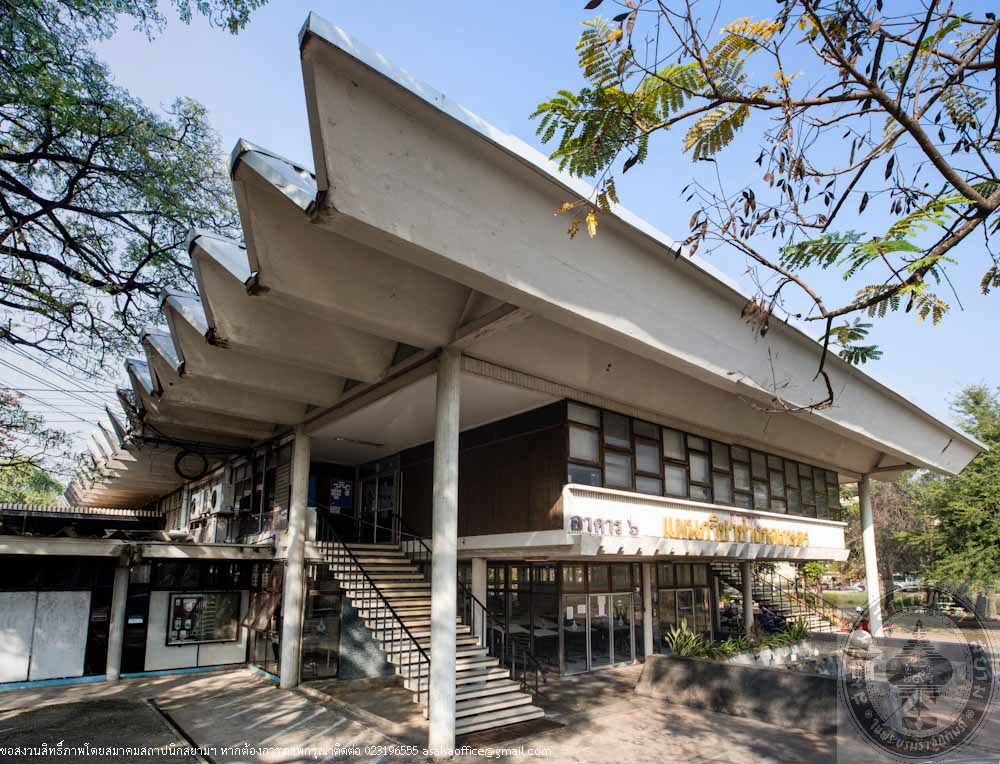
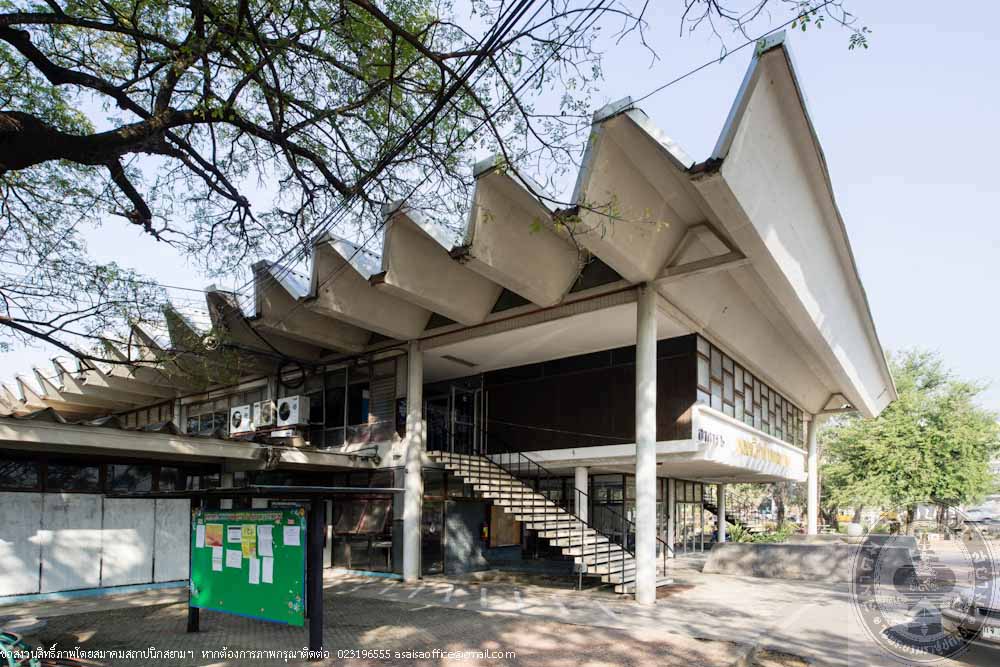
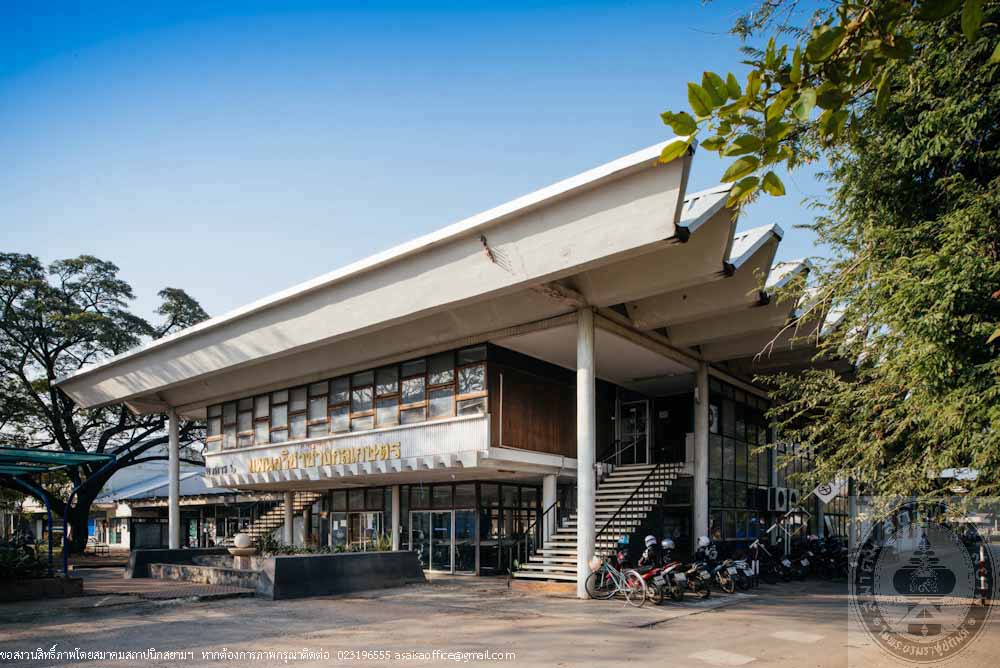
ตึกรังสีเกษม โรงเรียนรังษีเกษม
อ่านเพิ่มเติม
ตึกรังสีเกษม โรงเรียนรังษีเกษม
- ที่ตั้ง โรงเรียนน่านคริสเตียนศึกษา ถนนรังสีเกษม ตำในเวียง อำเภอเมือง จังหวัดน่าน
- สถาปนิก/ผู้ออกแบบ ไม่ปรากฏชื่อผู้ออกแบบ
- ผู้ครอบครอง โรงเรียนน่านคริสเตียนศึกษา
- มูลนิธิแห่งสภาคริสตจักรแห่งประเทศไทย
- ปีที่สร้าง พ.ศ. 2458
ประวัติ
ตึกรังษีเกษมสร้างขึ้นในเดือนธันวาคม พ.ศ. 2458 โดยมิชชันนารีคณะเพลสไบทีเรียนอเมริกันโดยการนำของ ดร.นพ.ซามูเอล ซี พีเพิลส์, ศจ.ดร.ฮิวส์ เทเลอร์, ศจ.แมเรียน บี ปาล์เมอร์ และนางสาวลูซี่ สตาร์ลิง แล้วเสร็จปี พ.ศ. 2459 ในส่วนของตัวอาคารส่วนที่ 1 สร้างโดยดัดแปลงแบบของอาคารเรียนตึก ลินกัล์นอะแคเดมี (โรงเรียนชาย) ถือว่าเป็นตึกแบบตะวันตก ต่อมาในปี พ.ศ. 2460 สมเด็จพระราชปิตุลาบรมพงศาภิมุข เจ้าฟ้าภาณุรังษีสว่างวงศ์ กรมพระยาภาณุพันธุวงศ์วรเดช (สมเด็จเจ้าฟ้าภาณุรังษี) เสด็จเยี่ยมกิจการของโรงเรียน และพระราชทานนามให้ว่า “โรงเรียนรังสีเกษม” ตามพระนามของพระองค์ท่าน ซึ่งเป็นที่มาของชื่อ ตึกรังสีเกษมเกษม แต่เนื่องด้วยมิชชันนารียังขาดที่พักและมีนักเรียนเพิ่มขึ้นจึงทำการก่อสร้างตัวตึกเสริมขึ้นทางด้านทิศใต้ แล้วเสร็จในปี พ.ศ. 2461 จึงใช้ชั้นบนเป็นที่พักของมิชชันนารีและนักเรียนประจำ ส่วนชั้นล่างเป็นห้องพักครูซึ่งจะมีเตาผิงอยู่ในห้องพัก เมื่อนักเรียนมีจำนวนเพิ่มขึ้น ห้องเรียนไม่เพียงพอจึงทำการก่อสร้างอาคารเพิ่มขึ้นอีกทางด้านทิศเหนือ แล้วเสร็จในปี พ.ศ. 2467
ต่อมาในช่วงสงครามโลกครั้งที่ 2 ระหว่างปี พ.ศ. 2485 – 2488 ทางรัฐบาลได้ยึดครองกิจการโรงเรียนรังษีเกษมดังนั้นโรงเรียนจึงต้องปิดกิจการโดยปริยาย และทางราชการใช้โรงเรียนรังษีเกษมเป็นโรงเรียนฝึกหัดครูประกาศนียบัตรจังหวัด ดำเนินการประมาณ 2 ปีก็ปิดกิจการ และใช้เป็นที่พักของทหารไทยจนกระทั่งสงครามสิ้นสุด หลังจากนั้นจังหวัดน่านได้มอบทรัพย์สินที่ทางรัฐบาลยึดครองไว้ให้ในวันที่ 7 เมษายน พ.ศ. 2489 และวันเดียวกันนั้นเองได้เกิดพายุใหญ่ พัดจนแป้นเกล็ดไม้พังเสียหาย จึงทำการซ่อมแซมใหม่ ทั้งส่วนที่เกิดจากพายุ และความเสียหายระหว่างสงครามโดยเปลี่ยนหลังคาเป็นกระเบื้องดินขอ และทำการเปิดใช้ตึกรังษีเกษมอีกครั้งในวันที่ 17 พฤษภาคม พ.ศ. 2489 ต่อมาในปี พ.ศ. 2511 ได้ทำการเปลี่ยนหลังจากกระเบื้องดินขอเป็นสังกะสี เพราะกระเบื้องดินขอหมดสภาพ และทำให้ระบบโครงสร้างของหลังคาไม่ต้องรับน้ำหนักมาก ในอดีตตึกรังษีเกษมใช้เป็นห้องประชุม ห้องเรียนสำหรับเด็ก และเป็นที่ประกอบศาสนพิธีที่สำคัญนอกเหนือจากการเรียนการสอน เช่น พิธีแต่งงาน การประชุมใหญ่ พิธีแต่งตั้ง สถาปนา พิธีนมัสการในช่วงที่มีการรื้อถอนโบสถ์อาคารไฮด์ปาร์คอนุสรณ์ ที่บ้านสวนตาล มาสร้างโบสถ์คริสตจักรประสิทธิพรน่าน ที่บ้านดอนแก้ว เป็นต้น
ตึกรังษีเกษมเป็นอาคารก่ออิฐถือปูนสองชั้น สร้างด้วยอิฐโดยช่างปั้นอิฐมาจากเชียงใหม่ เพราะคนปั้นอิฐของเมืองน่าน ยังไม่เชี่ยวชาญ ผังพื้นอาคารรูปตัวยู พื้นและเพดานสร้างด้วยไม้แบบการก่อสร้างเป็นแบบตะวันตก แต่ปรับแบบบางส่วนให้เข้ากับสภาพอากาศของประเทศไทย เช่น ผนังที่ติดกับเพดานมีช่องระบายอากาศ การใช้ตัวอาคารปัจจุบันชั้นล่างเป็นห้องทำงานของครู 4 ห้อง ส่วนห้องอื่นใช้เป็นทำเป็นหอประวัติศาสตร์โรงเรียนน่านคริสเตียนศึกษา จัดแสดงวัตถุโบราณ และภาพถ่ายในอดีตของเมืองน่าน มากกว่า 1,000 ภาพ เช่น พระราชกรณียกิจของพระบาทสมเด็จพระเจ้าอยู่หัว และพระบรมวงศานุวงศ์ในจังหวัดน่าน ผู้เสด็จเมืองน่าน พันธกิจของมิชชันนารี วิถีชีวิตของคนเมืองน่าน และการศึกษาแบบตะวันตกแห่งแรกของเมืองน่าน เป็นแหล่งศึกษาประวัติศาสตร์เมืองน่าน ของนักเรียนนักศึกษา นักท่องเที่ยว และบุคลทั่วไป
Rangsri Kasem Building, Rangsri Kasem School
- Location Nan Christian School, Rangsri Kasem Road, Tambon Nai Vieng, Muang Nan
- Architec/t Designer Unknown
- Owner Nan Christian School The Church of Christ in Thailand Foundation
- Year Built 1915
History
Rangsri Kasem building was built in December 1915 by the American Presbyterian Missionary led by Dr. Samuel C Peoples, MD, Prof. Dr. Huge Taylor, Prof. Marion B Palmer and Miss Lucy Starling. It was completed in 1916. The first phase of the construction was a modified design of Lincoln Academy building (the boys’ school) which was western style. Later in the year 1916, Princess Panurangsri visited the school and named the school “Rangsri Kasem” after his name which was also the name of the building. However, due to the missionaries’ lack of housing and the increase in the number of students, another building was built on the south side. Completed in 1918, the top floor of the building was the living quarter for the missionaries and boarding students while the rooms with fireplace on the lower floor were for teachers. And when the number of students grew larger, classrooms were overcrowded and therefore, another building was added to the north side in 1924.
During World War II, from 1942 – 1945, the government seized the school business and therefore the school was forced to shut down. Rangsri Kasem School was turned into a Provincial Normal School, Diploma level. The school operated for two years and closed down. The school was occupied by the military until the war ended. Later on Nan Province returned all the properties seized by the government back to their owners on April 7, 1946, the same day a big storm damaged the wood shingles. The roof repair took place to restore the parts ruined by the storm and the damage done during the war period by replacing the entire roofing with Lanna clay roof tile. Rangsri Kasem building reopened on May 17, 1946 and later in 1968, the dilapidated clay roof tile was replaced with corrugated iron to prevent the roof structure from carrying too much weight. Rangsri Kasem Building has been used for meetings, student classrooms and other religious ceremonies such as wedding, summit, inauguration ceremonies, and dedication sermons during the demolition of Hyde Park Anusorn Church at Ban Suan Tan and the construction of Prasittiporn Nan Christianity Church.
Rangsri Kasem Building is a two storey brick masonry building. The bricks used in the construction were made by brick masons in Chiangmai as Nan brick masons were not as proficient. U-shaped floor plan, the building floors and ceilings were wood built, Western style with a little modification to suit Thailand’s climate condition such as the vent on the wall attached to the ceiling. Currently, the ground level of the building consists of four teacher’s offices. The other rooms were transformed into Nan Christian School Hall of History that showcase antique objects, more than 1000 photographs of ancient Nan such as the royal duties took place in Nan of the King and the members of the royal family, missionaries’ mission statement, Nan folk life and the Nan’s first western style education. The building became Nan’s history learning center for students and visitors.
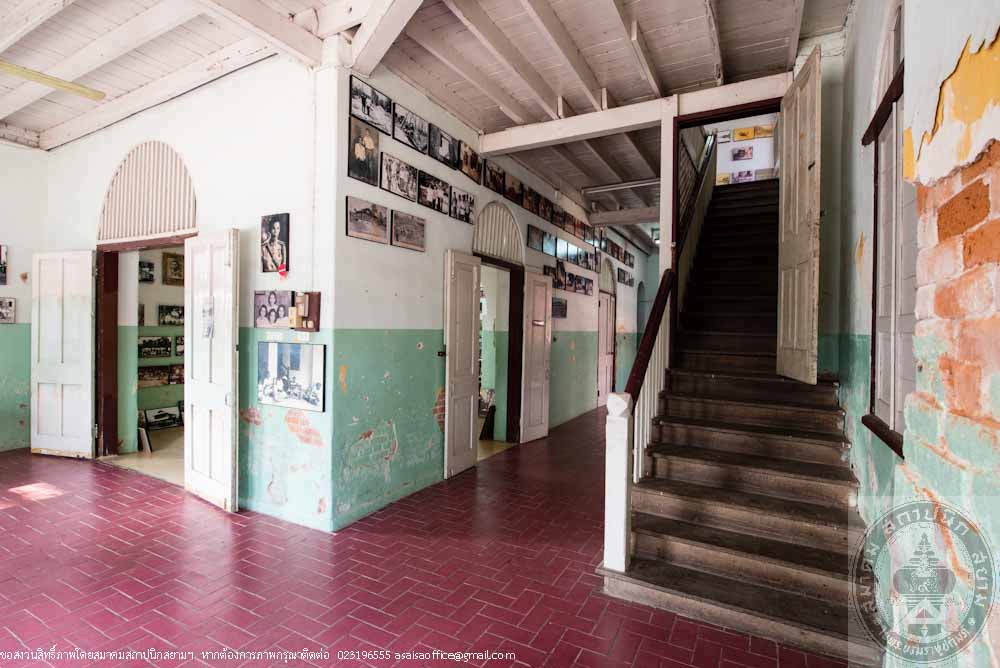
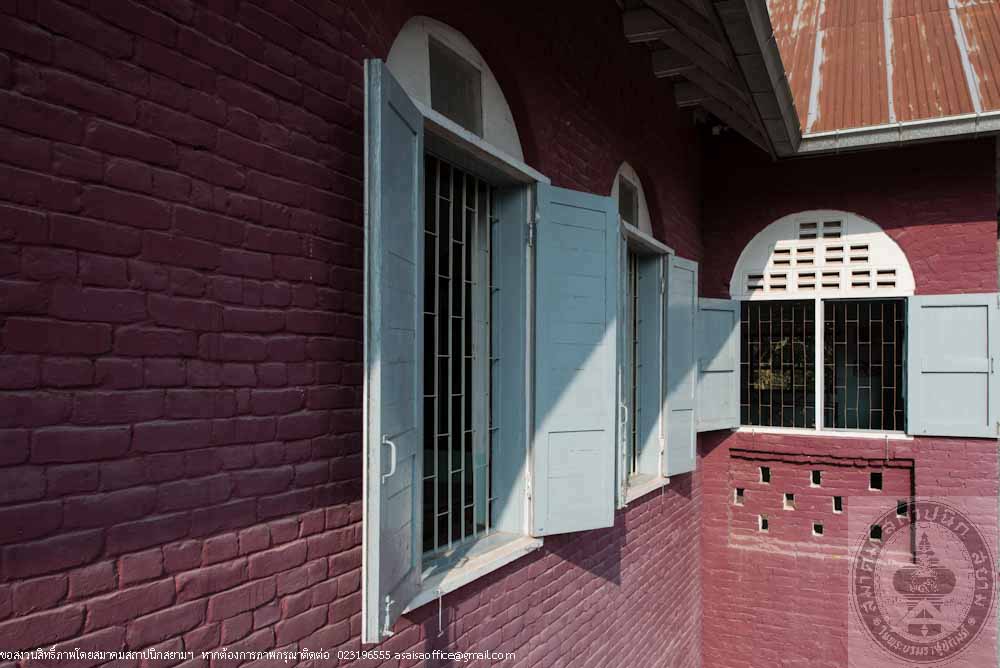
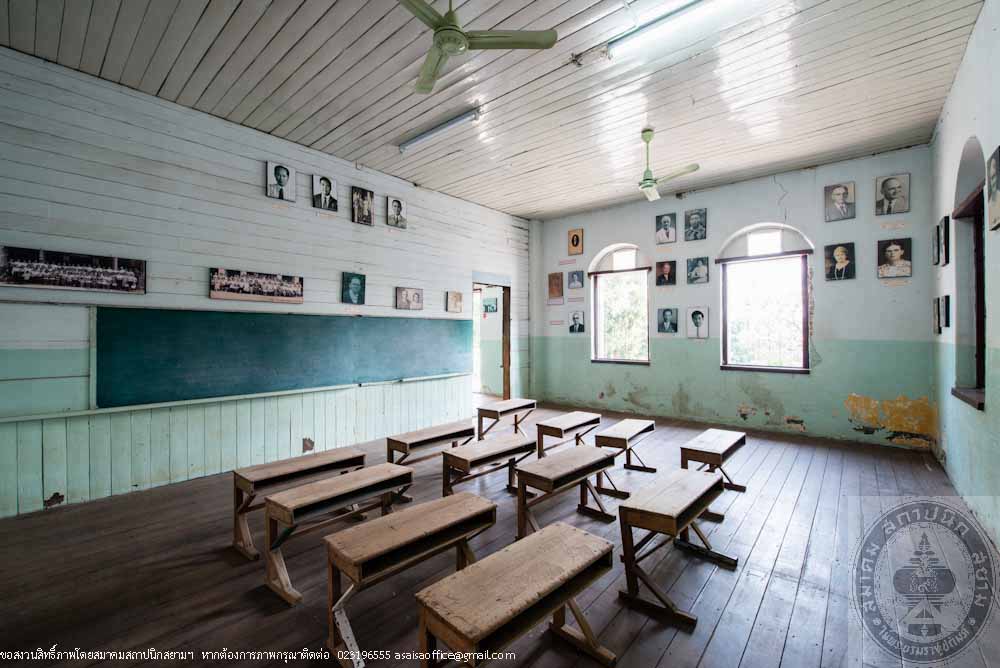
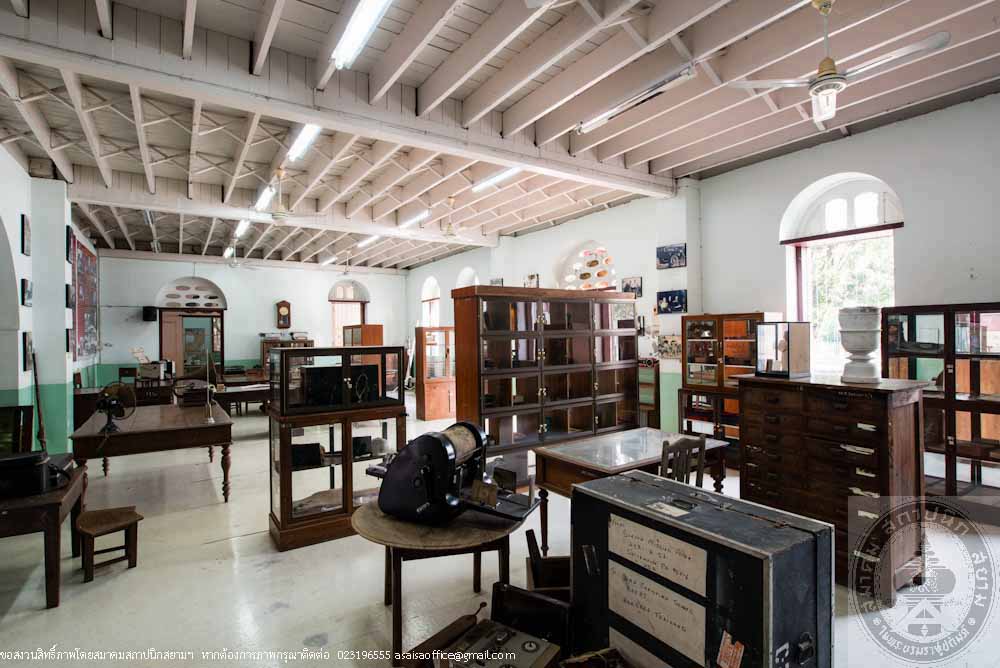
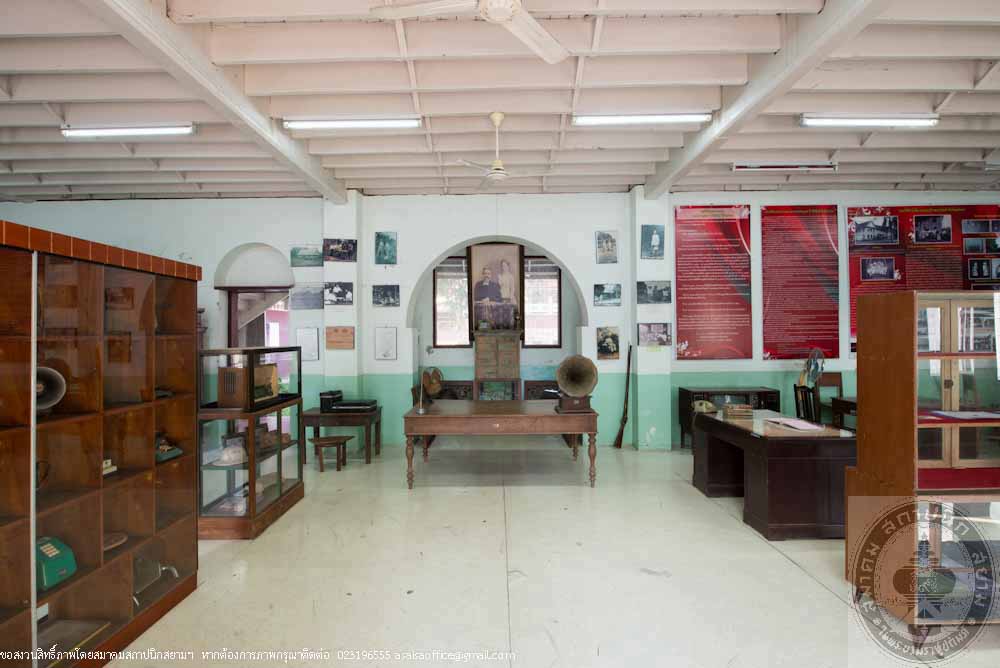
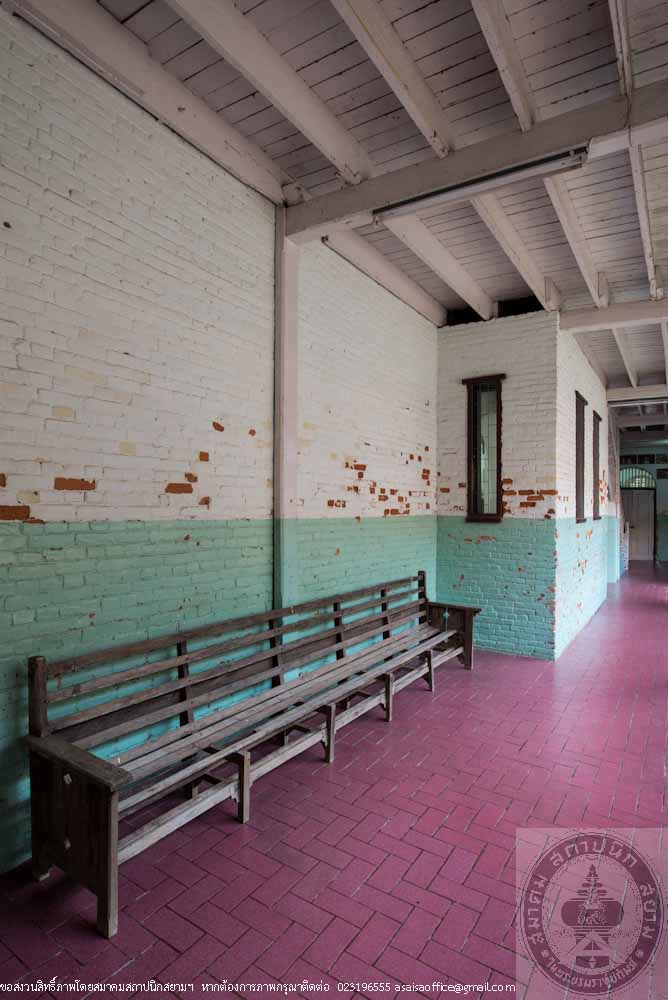
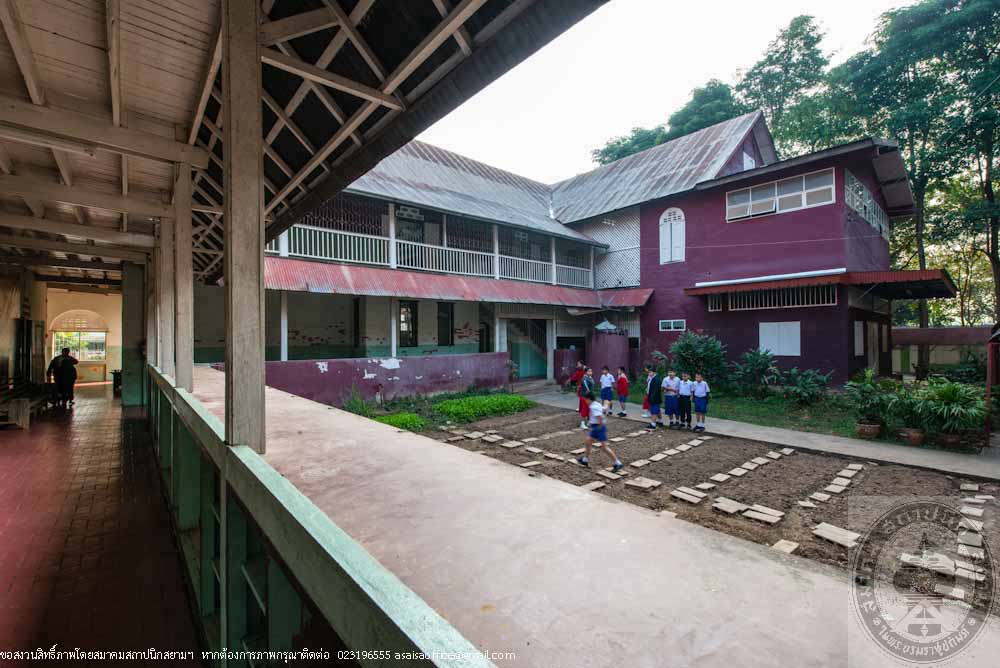
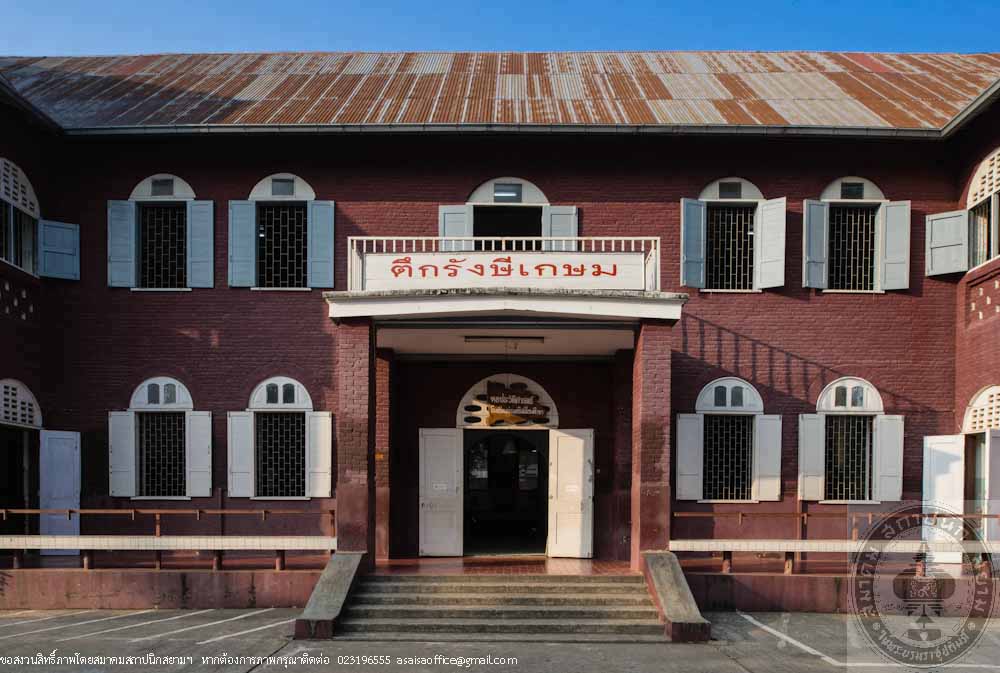
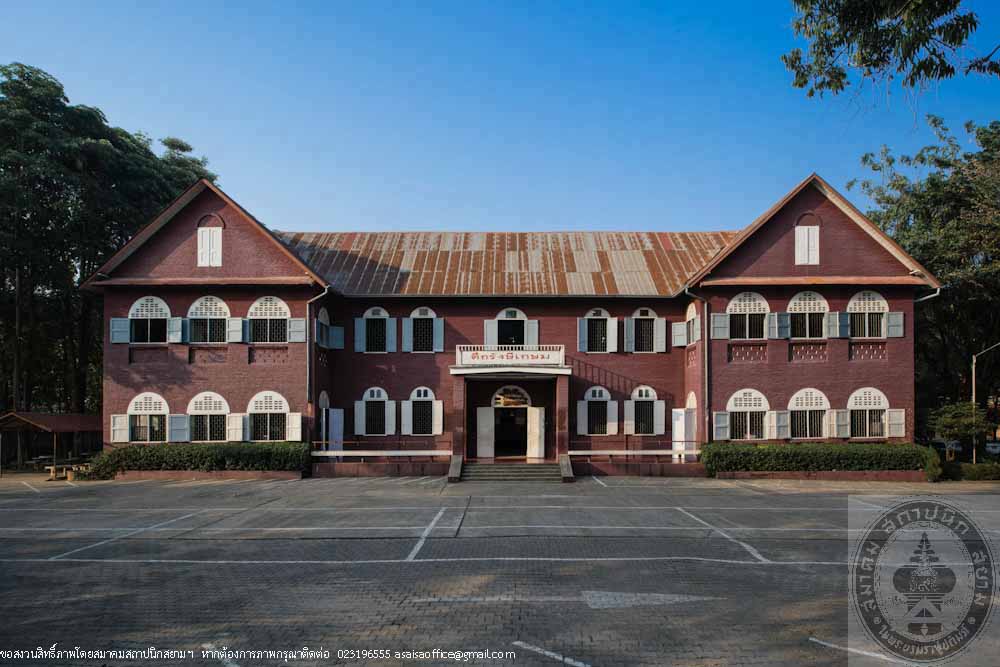
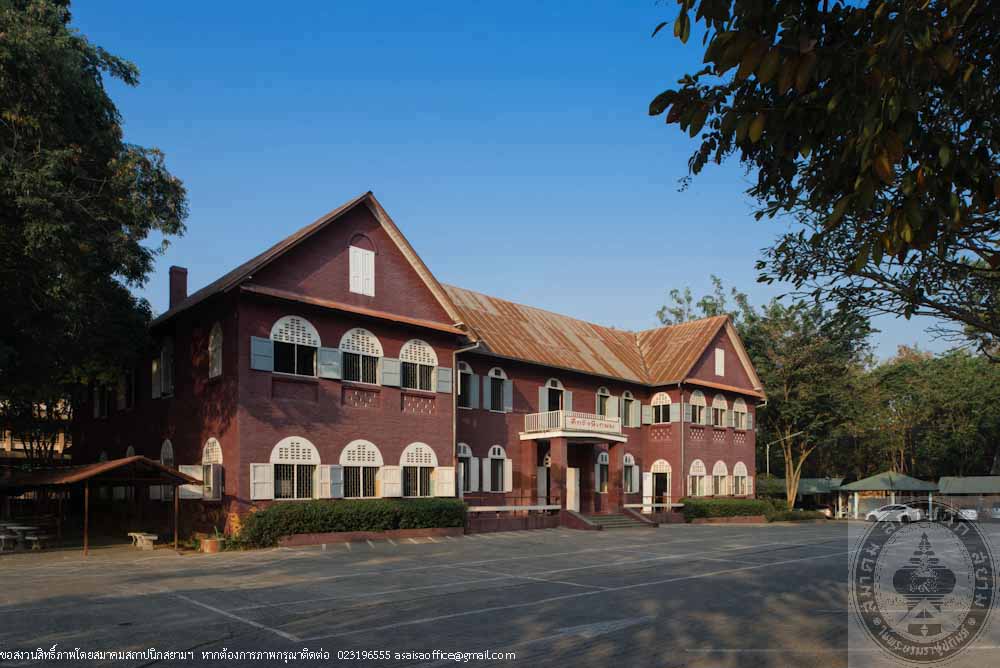
ทำเนียบเอกอัครราชทูตไทย ณ นครย่างกุ้ง
อ่านเพิ่มเติม
ทำเนียบเอกอัครราชทูตไทย ณ นครย่างกุ้ง
- ที่ตั้ง เลขที่ 91 Pyay Road, Dagon Township, Myanmar
- สถาปนิก/ผู้ออกแบบ ไม่ปรากฏชื่อผู้ออกแบบ
- บูรณะโดย บริษัท ชูจักร์ก่อสร้าง จำกัด
- ผู้ครอบครอง รัฐบาลไทย
- ปีที่สร้าง ไม่ปรากฏหลักฐานชัดเจน มีเพียงหลักฐานการซื้อขายดั้งเดิมของอาคารหลังนี้ในปี พ.ศ. 2445 จึงประมาณได้ว่าอาคารหลังนี้สร้างก่อนปี พ.ศ. 2445
ประวัติ
ทำเนียบเอกอัครราชทูตไทย ณ กรุงย่างกุ้ง เดิมเป็นบ้านพักของนาย De Souza เชื้อชาติโปรตุเกสสัญชาติอังกฤษ ซึ่งเป็นผู้นำเข้ายาจากต่างประเทศรายใหญ่ของประเทศพม่าในสมัยที่พม่ายังคงเป็นอาณานิคมของประเทศอังกฤษ ต่อมาในปี พ.ศ. 2491 รัฐบาลไทยได้สถาปนาความสัมพันธ์ทางการทูตกับพม่า รวมทั้งได้ซื้ออาคารหลังนี้แล้วทำการปรับปรุงเป็นสถานเอกอัครราชฑูต ณ กรุงย่างกุ้ง นอกจากใช้เป็นสถานที่ทำงานแล้ว อาคารหลังนี้ยังใช้เป็นที่รับเสด็จพระบรมวงศานุวงศ์ชั้นสูงและผู้นำไทยเรื่อยมา โดยในปี พ.ศ. 2503 พระบาทสมเด็จพระเจ้าอยู่หัวและสมเด็จพระนางเจ้าพระบรมราชินีนาถฯ เสด็จเยือนพม่าอย่างเป็นทางการ โดยทั้งสองพระองค์ทรงใช้อาคารหลังนี้ในการพระราชทานเลี้ยงพระกระยาหารค่ำแก่ผู้นำรัฐบาลพม่า รวมทั้งทรงใช้พักพระอิริยาบถในระหว่างการเสด็จฯ ดังกล่าวอีกด้วย ต่อมาในช่วงปี พ.ศ. 2538 – 2539 รัฐบาลไทยได้ปรับปรุงซ่อมแซมอาคารเพื่อใช้เป็นทำเนียบเอกอัครราชฑูตเพียงอย่างเดียว และแยกส่วนของสถานเอกอัครทูตฯ ไปยังสถานที่แห่งใหม่
ทำเนียบเอกอัครราชทูตไทย ณ กรุงย่างกุ้ง เป็นอาคารก่ออิฐถือปูน 2 ชั้น ลักษณะทางสถาปัตยกรรมแบบทิวดอร์(Tudor) ผนังชั้นล่างเป็นผนังรับน้ำหนักรูปโค้ง (Arch) ผนังชั้นบนเป็นกรอบไม้เป็นเส้นตั้ง เส้นนอน และเส้นทแยง และก่อเต็มด้วยอิฐฉาบปูนทาสีขาว พื้นชั้นล่างปูกระเบื้อง พื้นชั้นบนเป็นไม้ หลังคาอาคารเป็นแบบปั้นหยาผสมหลังคาจั่วมุงด้วยกระเบื้อง พื้นที่ใช้สอยชั้นล่างประกอบด้วย ห้องรับแขกใหญ่ ห้องรับแขกเล็ก ห้องรับประทานอาหารใหญ่ ห้องรับประทานอาหารเล็ก ห้องน้ำ 3 ห้อง ห้องเตรียมอาหาร และห้องเก็บของ 2 ห้อง ส่วนพื้นที่ใช้สอยชั้นบนประกอบด้วย ห้องนอนใหญ่ 2 ห้อง ห้องนอนเล็ก 2 ห้อง ห้องนั่งเล่น ห้องพระ ห้องรับแขกใหญ่ที่ยื่นออกไปเป็นมุข และห้องน้ำ 4 ห้อง ลักษณะภายในตกแต่งอย่างเรียบง่ายเน้นการเปิดเผยโครงสร้างอาคาร ประตู หน้าต่าง ช่องลม ลูกกรง บันไดและราวบันไดล้วนทำจากไม้ที่มีความงดงามด้วยฝีมือช่าง
ตลอดระยะเวลาที่ผ่าน ทำเนียบเอกอัครราชทูตไทย ณ กรุงย่างกุ้ง ได้รับการดูแลรักษาอย่างต่อเนื่อง สามารถรักษาคุณค่าทางประวัติศาสตร์ และสถาปัตยกรรมไว้ได้เป็นอย่างดี สำหรับแผนการอนุรักษ์อาคารในอนาคตนั้น กระทรวงการต่างประเทศจะปรับปรุงระบบต่างๆ ของอาคาร เช่น ระบบน้ำ ระบบไฟ และระบบปรับอากาศให้ดีขึ้น รวมทั้งการซ่อมแซมอาคารตามหลักวิชาการอย่างเคร่งครัด
The Thai Ambassador’s Residence in Yangon, Myanmar
- Location 91 Pyay road, Dagon Township, Myanmar
- Architect/ Designer Unknown
- Owner The Government of Thailand
- Year Built No valid evidence presented beside the original proof of purchase of the building in 1902. It is therefore estimated that the building was built before 1902.
History
The Thai Ambassador’s Residence in Yangon was originally the residence of Mr. De Souza, a Portuguese English, Burma’s biggest importer of medicines during the British Colonial period. In 1948, the Thai government established a diplomatic relations with Burma, purchased the building and converted it into The Royal Thai Embassy in Yangon. Besides serving as an embassy office, the building has also been accommodating members of the royal family and the country leaders. In 1960, when His Majesty King Bhumipol and Queen Sirikit made an official visit to Burma, they used the building to host an official dinner with the Government of Burma. They also stayed at the building during the trip. Between the year 1995 and 1996, the Thai government renovated the building which was later used solely as the ambassador place of residence and moved the Royal Thai Embassy to a new location.
The Thai Ambassador’s Residence in Yangon is a Tudor style two-storey brick masonry building. The first floor arch wall supports the weight above. The second floor wall framing includes vertical, horizontal and diagonal wood frame covered with brick masonry and white painted concrete. Tile flooring downstairs and wood flooring upstairs. A combination of hip and gable roof with tile roofing. Area downstairs consists of a large and a small drawing room, a large and a small dining parlor, three bathrooms, kitchen area and two storage rooms. Upstairs space consists of two large bedrooms, two small bedrooms, a living room, a tabernacle, a large living room with veranda and four bathrooms. Simple interior with exposed building structure. Doors, windows, vent, stair bars and railings were made out of wood by talented artisan.
Throughout the years, the Thai Ambassador’s residence in Yangon has been receiving constant maintenances and cares which perfectly helped in preserving its historical and architectural values. As for the future restoration project, the Ministry of Foreign Affair planned to improve several systems in the building including the water system, the power and the air conditioning system. The repairs will be made by following strict technical guidelines.
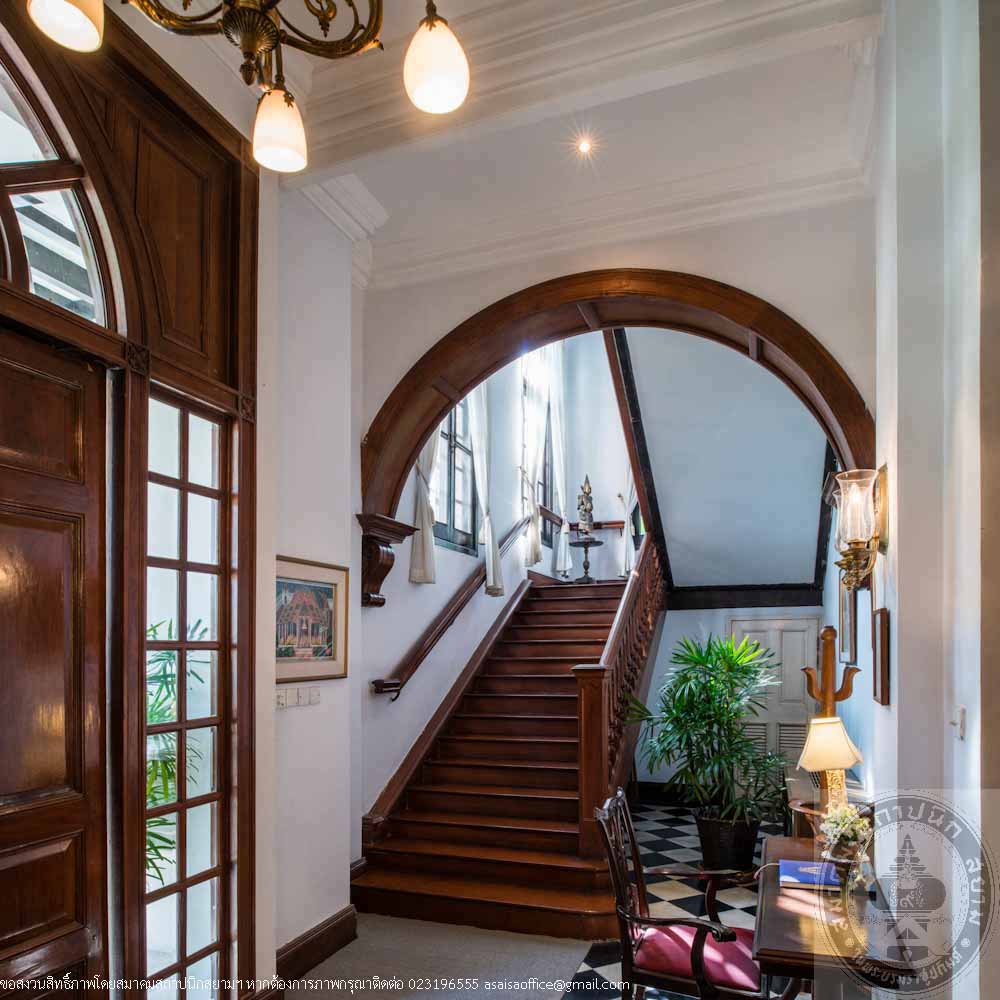
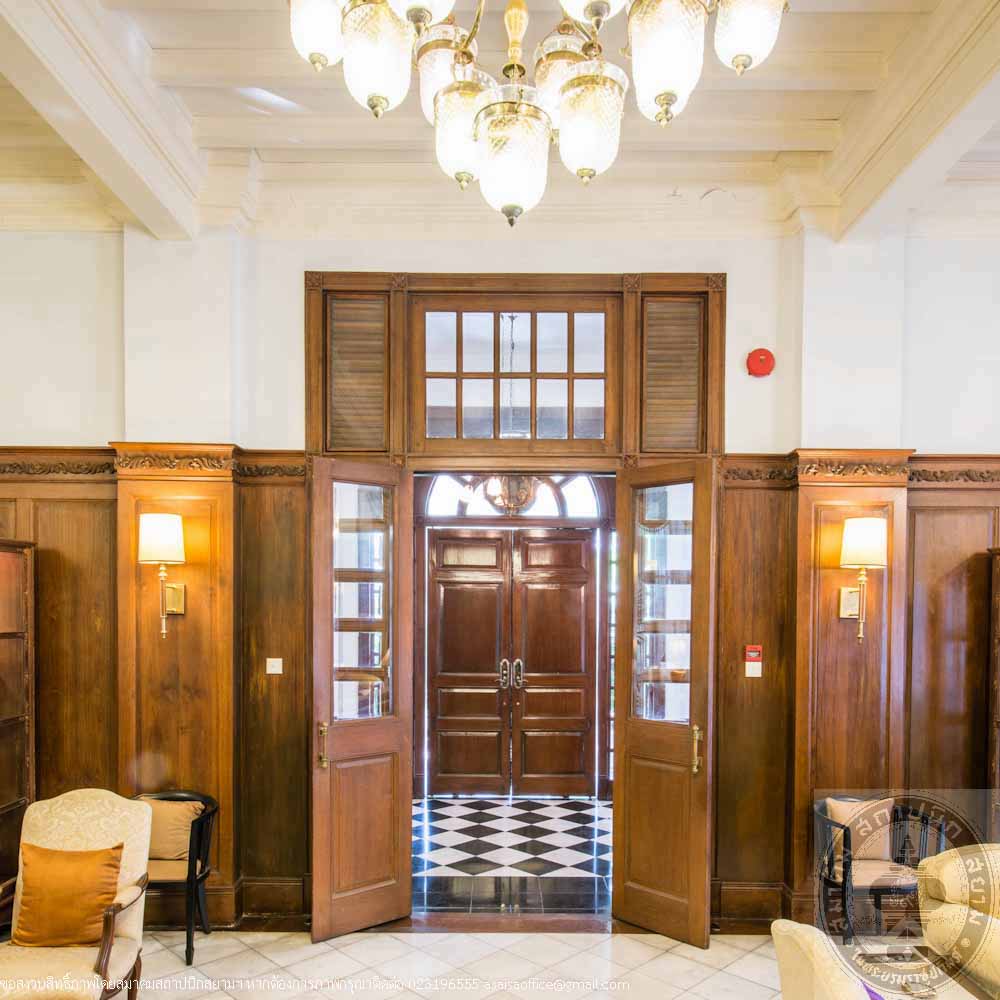
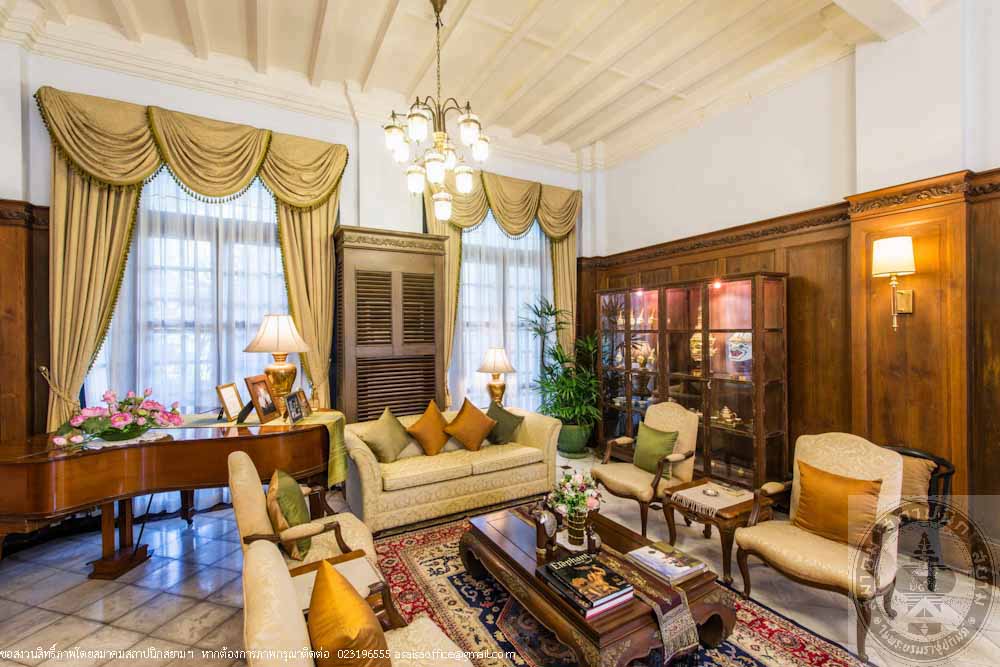
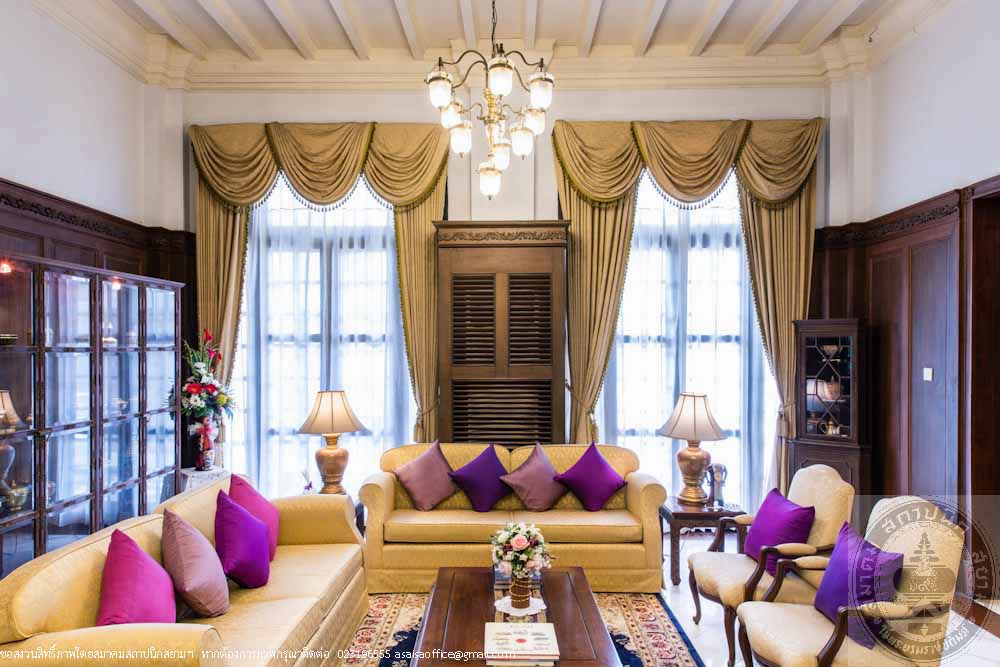
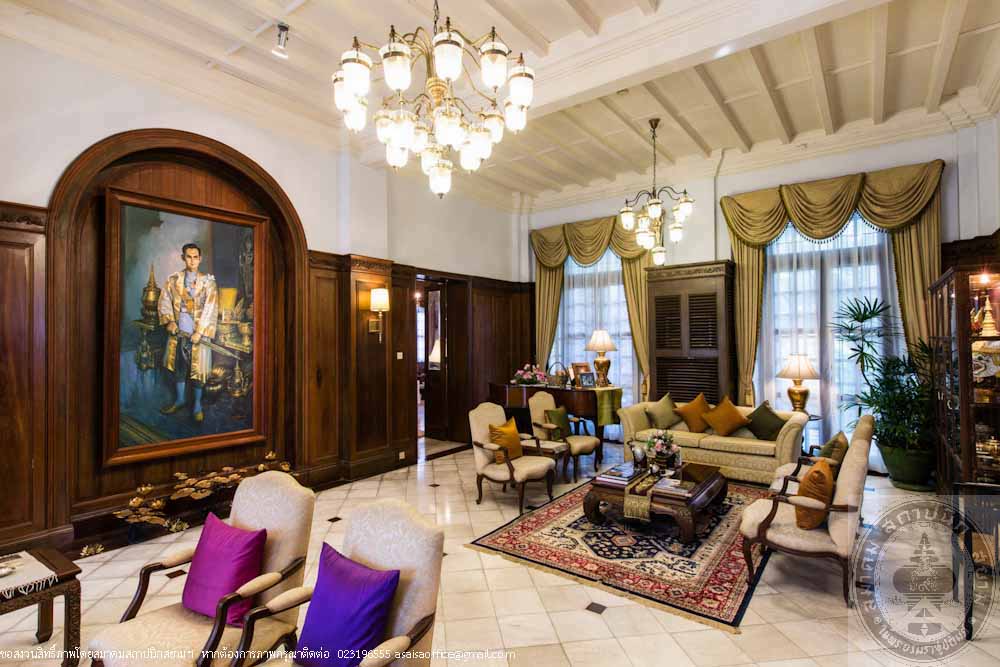
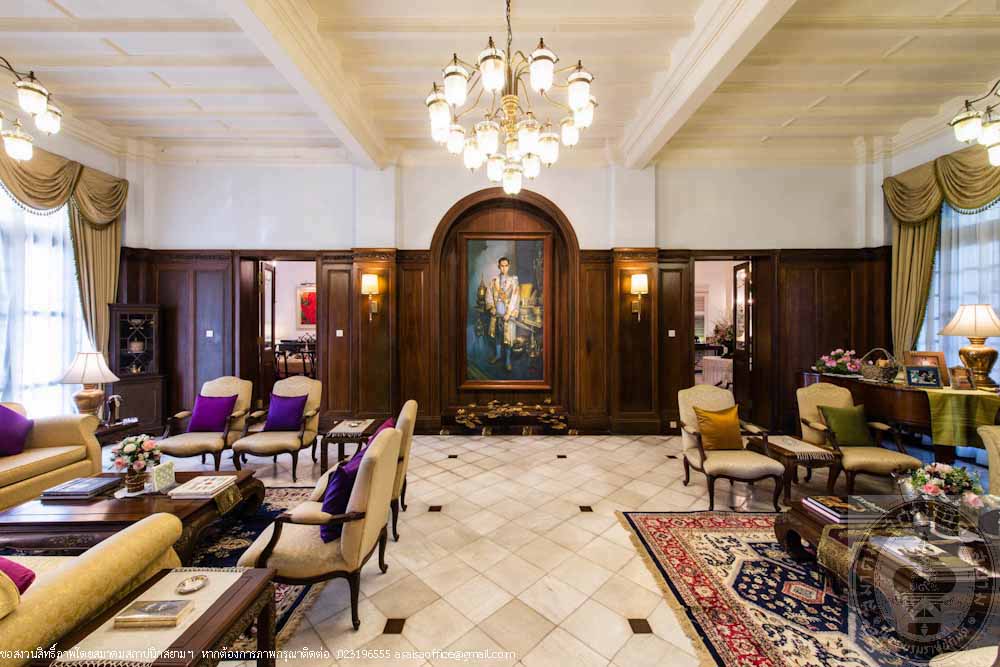
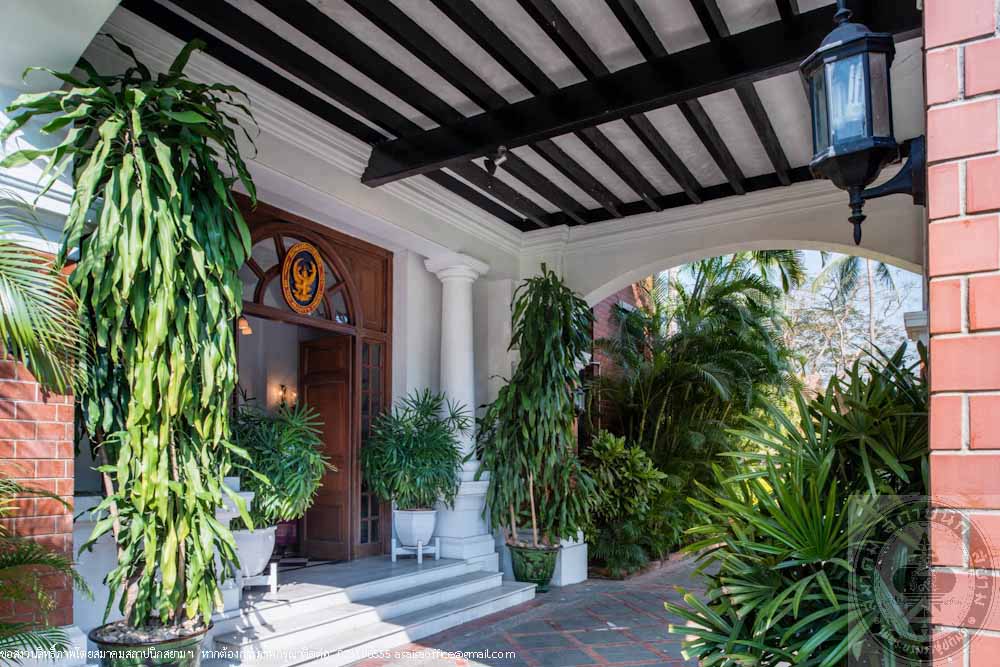
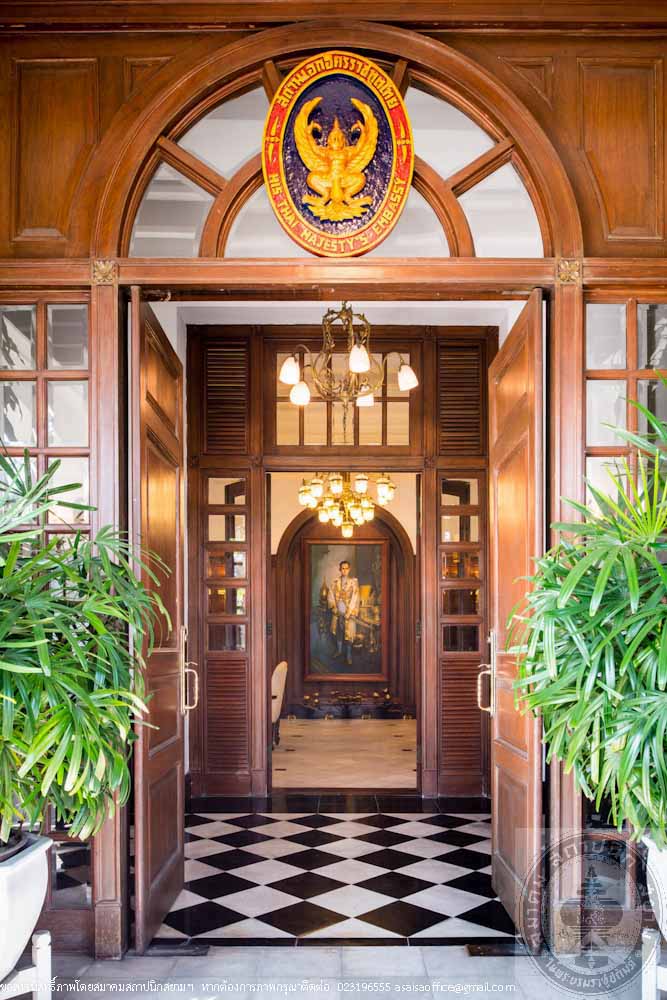
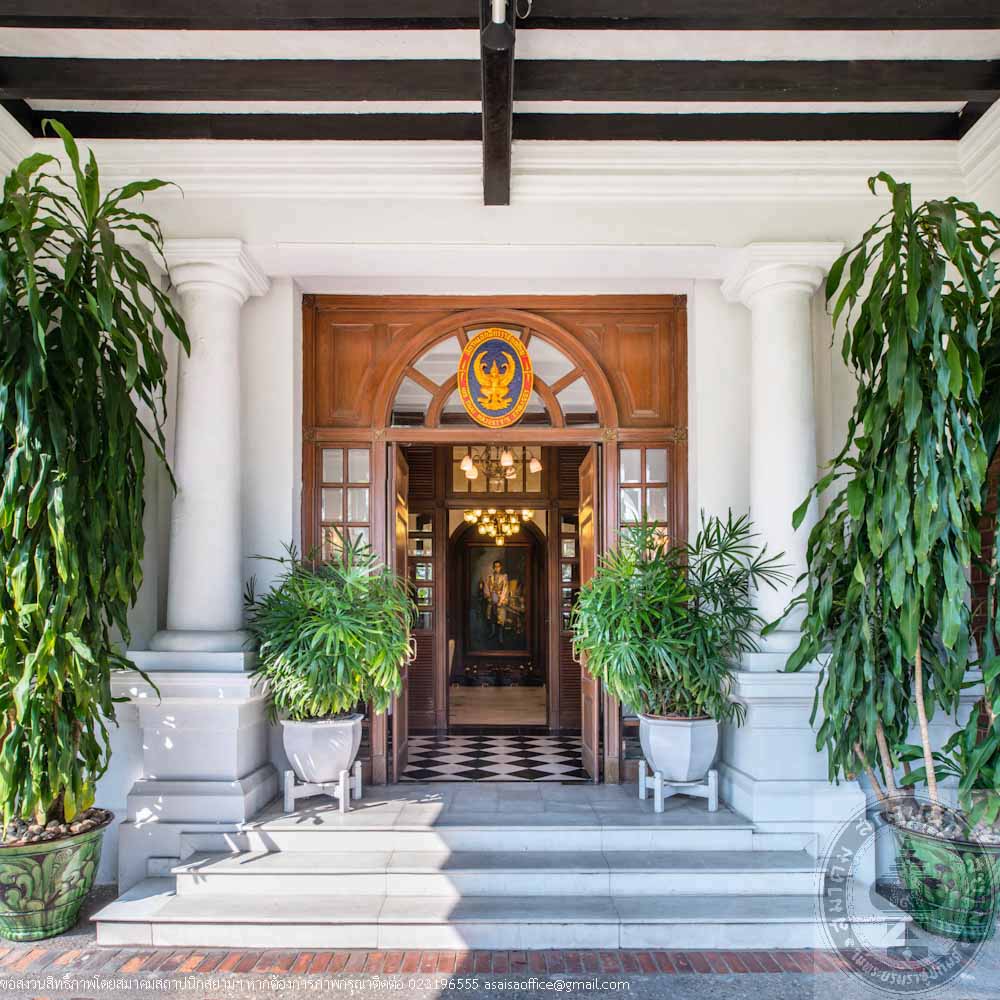
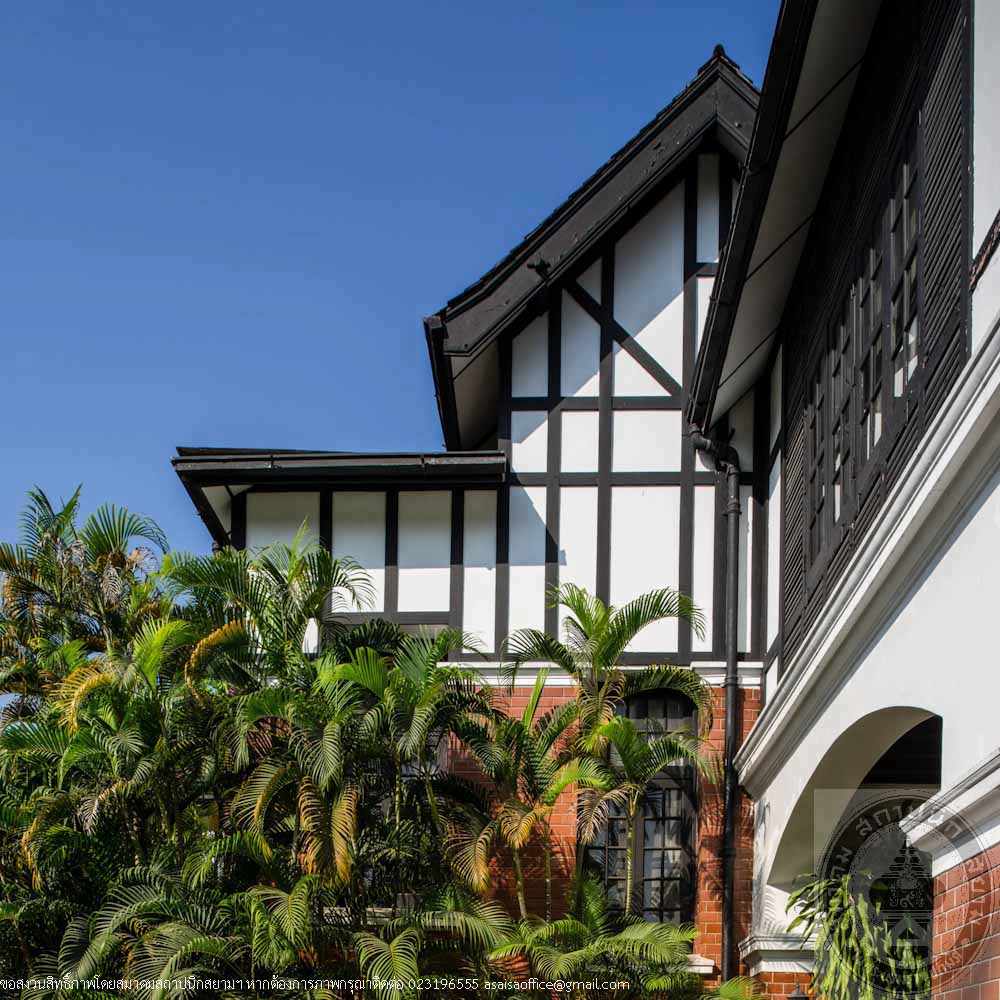
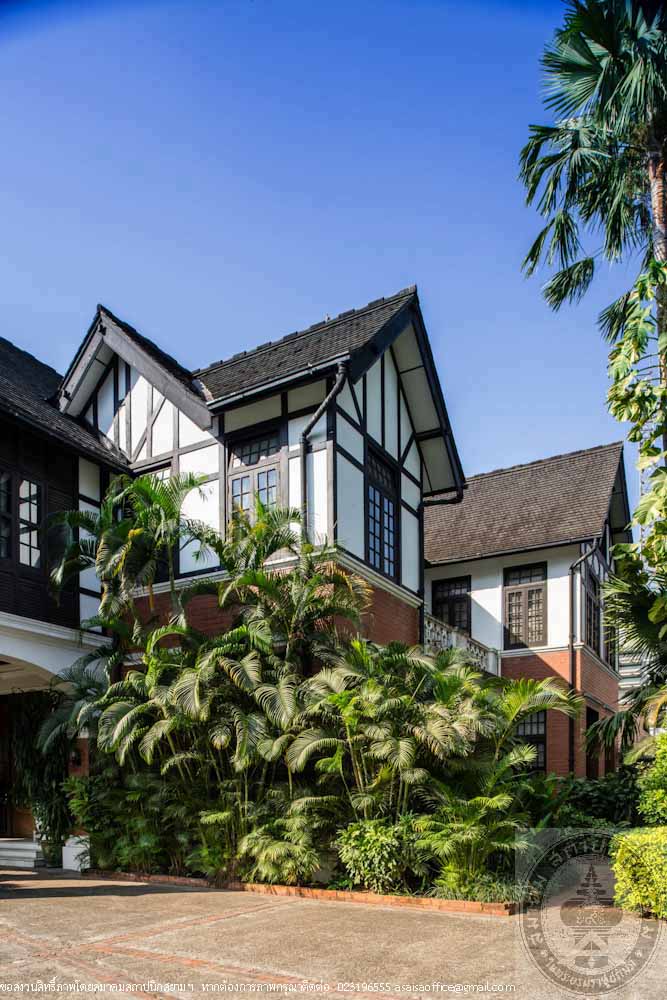
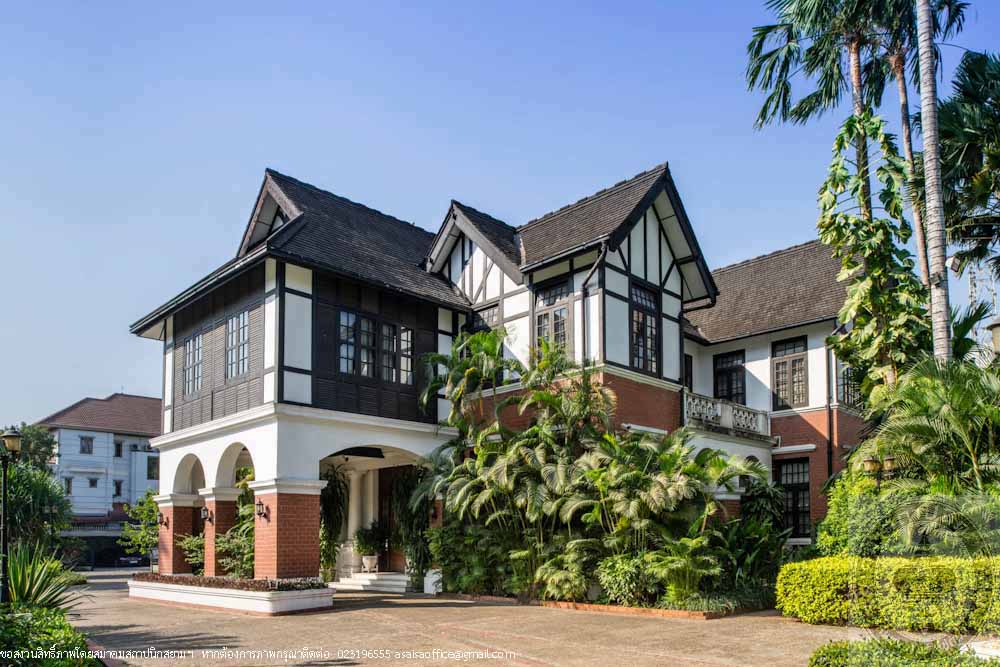
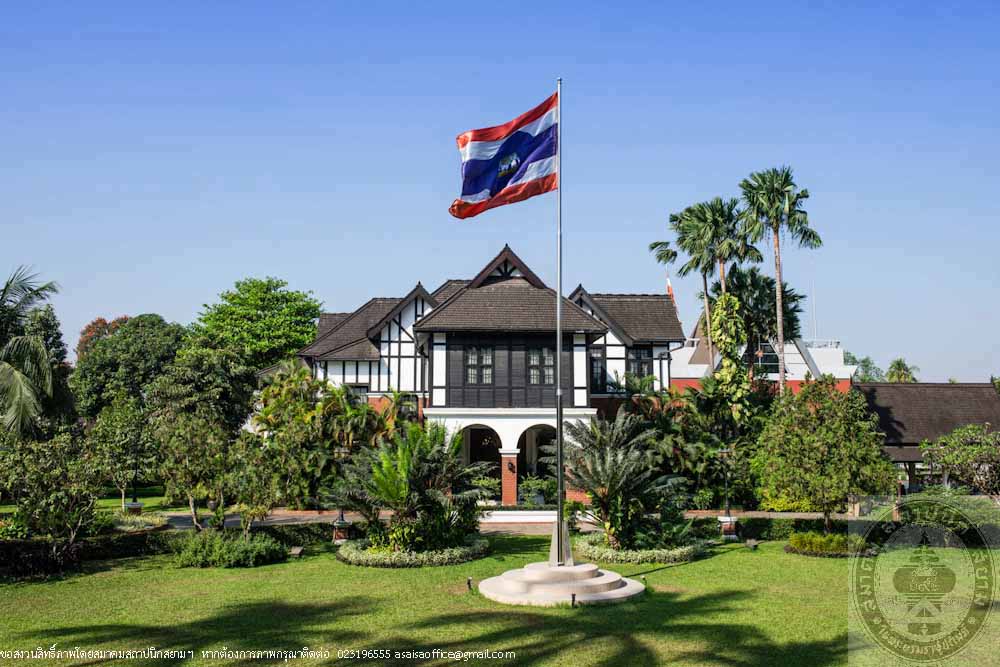
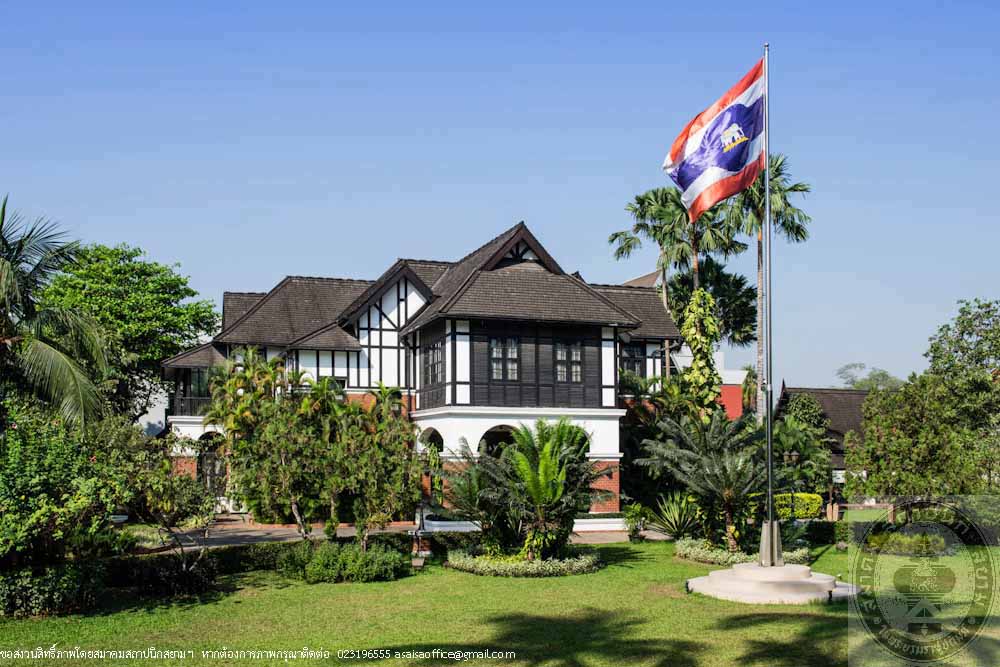
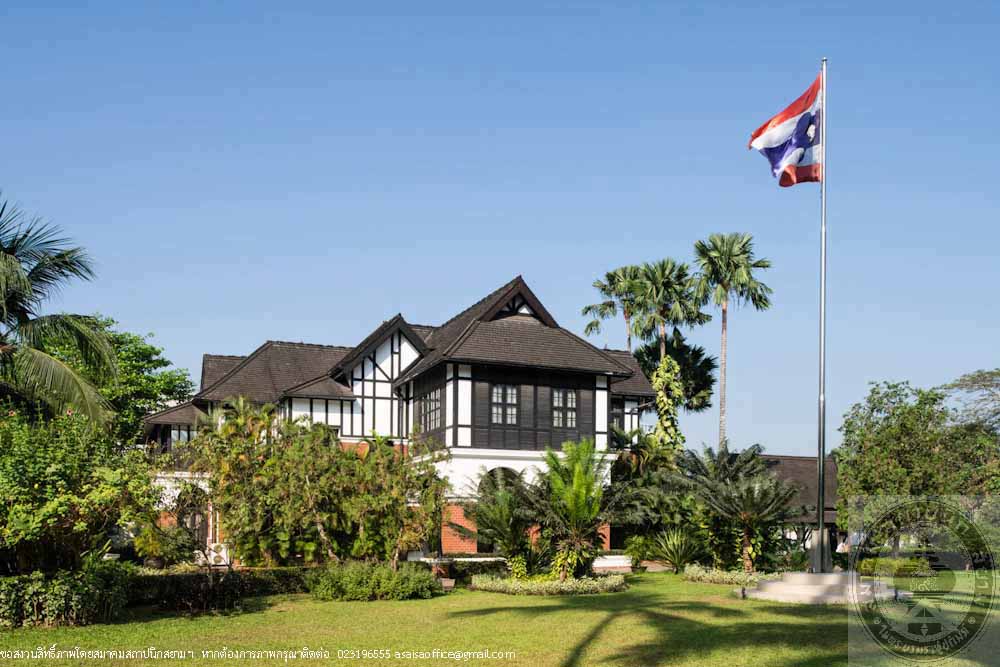
อาคารทำเนียบท่าช้าง ถนนพระอาทิตย์
อ่านเพิ่มเติม
อาคารทำเนียบท่าช้าง ถนนพระอาทิตย์
- ที่ตั้ง เลขที่ 19 ถนนพระอาทิตย์ แขวงชนะสงคราม เขตพระนคร กรุงเทพมหานคร
- สถาปนิก/ผู้ออกแบบ หม่อมเจ้าสมัยเฉลิม กฤดากร
- บูรณะโดย สำนักงานทรัพย์สินส่วนพระมหากษัตริย์
- ผู้ครอบครอง สำนักงานทรัพย์สินส่วนพระมหากษัตริย์
- ปีที่สร้าง ประมาณปี พ.ศ.2470
ประวัติ
อาคารทำเนียบท่าช้างตั้งอยู่ริมแม่น้ำเจ้าพระยา เชิงสะพานสมเด็จพระปิ่นเกล้า ในอดีตเป็นที่ดินส่วนหนึ่งของวังพระเจ้าบรมวงศ์เธอกรมพระนเรศวรฤทธิ์ ต่อมาภายหลังในรัชสมัยรัชกาลที่ 7 พระองค์ทรงพระกรุณาโปรดเกล้าโปรดกระหม่อมให้สร้างอาคารหลังนี้และพระราชทานให้เป็นที่ประทับของสมเด็จพระเจ้าบรมวงศ์เธอกรมพระสวัสดิวัดนวิศิษฎ์ ต่อมาในช่วงปี พ.ศ. 2475 เป็นช่วงเวลาเปลี่ยนแปลงการปกครองของประเทศไทย อาคารหลังนี้จึงเปลี่ยนมาเป็นบ้านพักของนายปรีดี พนมยงค์ ซึ่งขณะนั้นดำรงตำแหน่งประธานคณะผู้สำเร็จราชการแทนพระองค์ และเรียกว่าทำเนียบท่าช้าง (วังหน้า) ตั้งแต่บัดนั้นเป็นต้นมา ต่อมาเกิดรัฐประหารในปี พ.ศ. 2490 ทำให้นายปรีดี พนมยงค์ จำเป็นที่จะต้องลี้ภัยทางการเมืองไปยังประเทศจีนและฝรั่งเศสรวมระยะเวลากว่า 30 ปี และไม่ได้กลับสู่ประเทศไทยอีกเลยจนกระทั่งถึงแก่อสัญกรรม ภายหลังอาคารหลังนี้ตกมาอยู่ในการดูแลของสำนักงานทรัพย์สินส่วนพระมหากษัตริย์ ซึ่งปัจจุบันใช้เป็นอาคารรับรองของสำนักงานทรัพย์สินส่วนพระมหากษัตริย์มาจนถึงปัจจุบัน
อาคารทำเนียบท่าช้างเป็นอาคารโครงสร้างคอนกรีตเสริมเหล็กสูง 3 ชั้น หลังคาทรงปั้นหยามุงด้วยกระเบื้อง ลักษณะทางสถาปัตยกรรมแบบสมัยใหม่ (Modern) ที่ได้รับการออกแบบอย่างเรียบง่าย มีการจัดวางองค์ประกอบของอาคารแบบสมมาตร พื้นที่ใช้สอยชั้นที่ 1 มีลักษณะเป็นโถงต้อนรับ พื้นปูด้วยหินอ่อน มีการแบ่งแยกบางส่วนออกเป็นพื้นที่รับรองโดยตกแต่งตามยุคสมัย มีบันไดขึ้นสู่ชั้นบนเป็นบันไดคอนกรีตเสริมเหล็กปูพื้นด้วยหินอ่อนเช่นกัน พื้นที่ใช้สอยชั้นที่ 2 บริเวณส่วนกลางของอาคารถูกจัดเป็นห้องประชุมและห้องรับรอง ด้านหลังมีระเบียงทางเดินสามารถมองเห็นแม่น้ำเจ้าพระยาได้ สำหรับพื้นชั้นที่ 2 เป็นไม้สัก ประตู หน้าต่าง และช่องเปิดเป็นช่องสี่เหลี่ยมเรียบๆ ไม่มีลวดลายประดับตกแต่ง ช่องหน้าต่างมีความสูงจากพื้นจรดเพดานและมีช่องประตูมากทำให้อาคารมีการทางระบายอากาศที่ดีและการได้รับลมจากบริเวณริมแม่น้ำเจ้าพระยา ส่วนพื้นที่ใช้สอยชั้นที่ 3 ถูกปรับให้เป็นห้องรับรองเจ้านายระดับสูงและห้องสำหรับจัดประชุม พื้นชั้นที่ 3 เป็นไม้สักเช่นเดียวกับชั้นที่ 2 การตกแต่งยังคงเน้นความเรียบง่ายโดยใช้วัสดุเช่นเดิมสมัยแรกสร้างอาคาร อาคารทำเนียบท่าช้างเป็นอาคารที่มีประวัติความเป็นมาที่น่าสนใจ ทั้งในเรื่องของลักษณะทางสถาปัตยกรรมที่ได้รับการออกแบบโดยคนไทย และเทคนิคการก่อสร้างสมัยใหม่ที่ใช้คอนกรีตเสริมเหล็กในยุคแรกๆ ของประเทศ ที่มีลักษณะเฉพาะตัวซึ่งเป็นตัวแทนแห่งยุคสมัยได้เป็นอย่างดี และทางด้านประวัติศาสตร์ของอาคารซึ่งเคยเป็นที่พักของบุคคลสำคัญทางประวัติศาสตร์การศาลและการเมืองของประเทศไทย
ปัจจุบันสำนักงานทรัพย์สินส่วนพระมหากษัตริย์ยังคงรักษาอาคารทำเนียบท่าช้างให้อยู่ในสภาพที่สมบูรณ์ดั้งเดิม ตามสมัยแรกสร้างอาคาร มีการติดตั้งลิฟท์บริเวณติดริมแม่น้ำเจ้าพระยาเพื่อประโยชน์ใช้สอยแต่ก็เป็นการต่อเติมด้านนอกอาคารซึ่งไม่ได้ส่งผลกระทบต่อโครงสร้างอาคารแต่อย่างใด โดยทุกๆ ปีทางสำนักงานทรัพย์สินส่วนพระมหากษัตริย์จะมีการตรวจสอบสภาพอาคารและซ่อมแซมตามหลักวิชาการด้านอนุรักษ์อย่างเคร่งครัด ส่งผลให้อาคารทำเนียบท่าช้างยังคงมีความงดงามเหมาะสมกับเป็นอาคารรับรองเจ้านายระดับสูง
Tha Chang Residence, Phra Athit Road
- Location 19 Phra Athit Road, Chana Songkram, Phra Nakorn, Bangkok
- Architect/Designer Mom Chao Samaichalerm Kridakara
- Renovated by the Crown Property Bureau
- Owner The Crown Property Bureau
- Year built Around the year 1927
History
Tha Chang Residence is located on the bank of the Chao Phraya River at Phra Pin Klao Bridge. The land was once part of Prince Naresvorarit’s palace. King Rama VII had this residence built as a gift for Prince Sawasdiwatnawisit. During the revolution period of Thailand, the building became the residence of Pridi Panomyong, President of the Regents at the time and was so-called Tha Chang (Wang Na) ever since. The 1947 Coup d’etat forced Pridi Panomyong into more than 30 year of exile in China and France. He has never returned to Thailand and passed away in exile. The house fell into the care of the Crown Property Bureau and has been used as headquarter of the Crown Property Bureau.
Tha Chang Residence, a three storey steel reinforced concrete structure with hip roof covered with tiles. Modern looking, the building posses a simple design and symmetrical plan. The first floor area is an entrance hall with marble floor. Reception area with contemporary décor. The reinforced concrete stair with marble finish leading to the seco;nd floor. The center of the second floor area was converted into conference rooms and a lobby. The balcony on the back of the building overlooking the Chao Phraya River. Teak wood flooring on second floor. Doors, windows and vents are simple square openings with no embellishments. Fall-to-ceiling windows plus lots of doors giving the building great ventilation. Breezes from the Chao Phraya River. Area on third floor was converted into guest room royalties and a meeting room. Teak wood flooring similar to the second floor. Simple décor with antique materials from the period the building was built. Tha Chang residence’s history is interesting, including the building’s architectural feature designed by a Thai national, an advanced method of construction – one of the country’s early uses of steel reinforced concrete which is a very distinctive style and represents its era well, as well as its rich history as it has been a residence for Thailand’s foremost public figures in Court of Justice.
The Crown Property Bureau still maintain Tha Chang Residence in its original condition when it was first built. Elevators were added one the river side of the building to add conveniences. New structure to house the elevators was built and therefore will not cause any threat to the structure of the building. Once a year, the Crown Property Bureau would have the building inspected and repaired strictly by the conservative principles. Tha Chang Residence remain charming very suitable for royalties.
